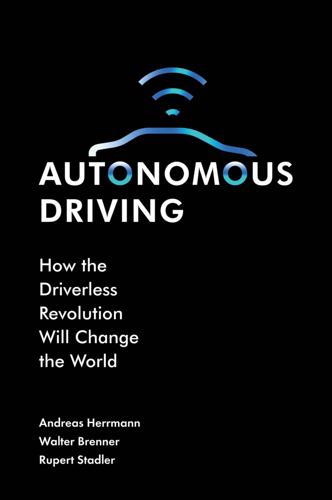
Autonomous Driving: How the Driverless Revolution Will Change the World
by
Andreas Herrmann
,
Walter Brenner
and
Rupert Stadler
Published 25 Mar 2018
Others focus on urban use and the integration of autonomous cars with public transport. Autonomous mobility offers the opportunity to link up various modes of transportation intelligently (see Figure 1.4). One application of self-driving vehicles could be to transport travellers on the last mile from the train station to their homes, for example. It is to be expected, however, that not just one, but three types of autonomous vehicles will emerge in the coming years [24, 113, 115]. Robo-cars are revolutionary because they have been conceived as autonomous vehicles right from the start. These vehicles will operate in cities at low speeds, in exactly defined areas and on previously programmed routes.
…
This page intentionally left blank INDEX A9 autobahn in Germany, 134, 135, 407 ACCEL, 324 Accelerating, 8, 22, 27, 59, 78, 91, 122, 295, 296 Access Economy, 344 Acoustic signals, 108 Ad-hoc mobility solutions, 354 Ad-hoc networks, 133 Adaptive cruise control, 4, 51, 72 74, 78, 86, 96, 113, 116, 289, 297, 333 Aerospace industry, 153 Agenda for auto industry culture change, 396 increasing speed, 398 service-oriented business model, 397 398 V-to-home and V-to-business applications, 399 Agile operating models, 330 Agriculture, 154 productivity, 155 sector, 154 157 Air pollution, 27 AirBnB, 311 Airplane electronics, 144 Aisin, 9 Albert (head of design at Yahoo), 228 Alexandra (founder and owner of Powerful Minds), 228 Alibaba Alipay payment system, 372 Alternative fuels, autonomous vehicles enabling use of, 305 Altruistic mode (a-drive mode), 252 Amazon, 138, 141, 311 American Trucking Association, 68 Android operating system, 327 Anthropomorphise products, 290 Appel Logistics transports, 167 Apple, 9, 138, 327 CarPlay, 285 Apple Mac OS, 247 Apple-type model, 323 Application layer, 119 software, 118 Artificial intelligence, 115, 255, 291, 332 333 Artificial neuronal networks, 114 115 Asia projects, 371 374 Assembly Row, 386 Assessment of Safety Standards for Automotive Electronic Control Systems, 144 Assistance systems, 71 77 Audi, 5, 130, 134, 137, 179, 211, 301, 318, 322, 398 Driverless Race Car, 5 piloted driving, 286 piloted-parking technology, 386 387 Audi A7, 44, 198, 282 427 428 Audi A8 series-car, 79, 180 Audi AI traffic jam pilot, 79 Audi Fit Driver service, 318 319 Audi piloted driving lab, 227, 229 Audi Q7, 74 assistance systems in, 75 Audi RS7, 43, 44, 79 autonomous racing car, 179 driverless, 227 Audi TTS, 43 Audi Urban Future Initiative, 384 386, 406 Augmented reality, 279 vision and example, 279 280 Authorities and cities, 171 173 Auto ISAC, 146 Autolib, 317, 344 Autoliv, 285 Automakers’ bug-bounty programs, 146 Automated car, 233, 246, 264, 289, 384 Automated driving division of labour between driver and driving system, 48 examples, 51 53 image, 177 levels of, 47 51 scenarios for making use of travelling time, 52 strategies, 53 56 technology, 160 Automated vehicles, 9, 174, 246 Automated Vehicles Index, 367 368 Automatic car, 233, 244 Automatic pedestrian highlighting, 78 Automation ironies of, 76 responsibility with increasing, 235 Automobile, 3, 21 locations, 405 manufacturers, 311 Index Automotive design, 265 266 Automotive Ethernet, 126 Automotive incumbents operate, 330 Automotive industry, 332 335, 367, 379, 397 Automotive technology, 327 328 AutoNet2030 project, 369 Autonomous buses, 14, 81, 158, 159, 175, 302 Autonomous cars, 25, 126, 197, 205 206, 233, 244, 270 expected worldwide sales of, 85 savings effects from, 67 68 Autonomous driving, 3, 8, 39, 62, 94, 111, 116, 120, 121 123, 141, 160 162, 171, 173, 207 208, 217, 247, 252, 266, 332 333, 379 applications, 10 12, 160 aspects for, 93 Audi car, 5 autonomous Audi TTS on Way to Pikes Peak, 43 in combination with autonomous loading hubs, 166 driving to hub, 213 ecosystem, 18 20, 131 element, 243 facts about, 306 functions, 74 impression, 40 industry, 16 18 living room in Autonomous Mercedes F015, 44 milestones of automotive development, 4 NuTonomy, 6 projects, 41 45 real-world model of, 92 scenarios, 211 215 science fiction, 39 41 technology, 9 10, 92 Index time management, 215 218 vehicles, 12 16 See also Human driving Autonomous driving failure, 221 consequence, 221 222 decision conflict in autonomous car, 223 design options, 222 223 influencer, 223 224 Autonomous Mercedes F015, living room in, 44 Autonomous mobility, 12, 13, 16 17, 172, 405 establishment as industry of future, 404 405 resistance to, 171 172 Autonomous Robocars, 81 Autonomous sharp, 274 ‘Autonomous soft’ mode, 274 Autonomous trucks, 161 from Daimler, 163 savings effects from, 68 69 Autonomous vehicles, 26, 81, 99, 138, 155, 182, 221, 238, 249, 255, 353 354 enabling use of alternative fuels, 305 integration in cities, 406 promoting tests with, 407 uses, 153 AutoVots fleet, 350 Backup levels, 127 Baidu apps, 338, 372 Base layer, 119 Becker, Jan, 42 43 Behavioural law, 234 Being driven, 61, 63, 78, 342 343 Ben-Noon, Ofer, 142, 143, 145 Benz, Carl, 3, 4 Bertha (autonomous research vehicle), 42 Big data, 313, 332 333 BlaBlaCar, 359 429 Blackfriars bridge, lidar print cloud of, 104 Blind-spot detection, 78 Bloggers, 225 227 Blonde Salad, The, 226 Bluetooth, 130, 142, 154 BMW, 6, 130, 137, 174, 180, 316, 320, 322, 332 333, 372, 398 3-series cars, 338 BMW i3, 27 holoactive touch, 285 Boeing 777 development, 243 Boeing, 787, 261 Bosch, 9, 181 182 Bosch, Robert, 333 Bosch suppliers, 315 BosWash, metropolitan region, 384 Budii car, 272 273 Business models, 311, 353 355 automobile manufacturers, 311 content creators, 319 320 data creators, 320 322 examples, 312 hardware creators, 314 315 options, 312 314 passenger looks for new products, 321 passenger visits website, 321 service creators, 316 319 software creators, 315 316 strategic mix, 322 323 Business vehicle, 15 Business-to-consumer car sharing, 342 343 Cadillac, 180 California PATH Research Reports, 298 299 Cambot, 290 Cameras, 111, 126 CAN bus, 126, 143 Capsule, 33 Car and ride sharing, studies on, 348 430 Car dealers, repair shops and insurance companies, 173 174 Car manufacturers, 328, 396 397 business model, 312 Car-pooling efforts, 364 365 Car-sharing programs, 364 365 service, 383 Car-sharing, 206 Car2Go, 317, 345 Casey Neistat, 226 Castillo, Jose, 364 365 Celebrities and bloggers, 225 227 Central driver assistance control unit, 124 Central processing unit, 96, 124 zFAS, 125 Centre for Economic and Business Research in London, 189 Chevrolet, 40 app from General Motors, 316 Spark EV, 27 Cisco, 41 CityMobil project, 369, 406 CityMobil2, 14, 157 Cognitive distraction, 287 Coherent European framework, 246 Committee on Autonomous Road Transport for Singapore, 347 Communication, 198 200 investing in communication infrastructure, 403 404 technology, 261 Community, 341 detection algorithms, 389 Companion app, 316 Compelling force, 223 Competitiveness Iain Forbes, 368 369 projects in Asia, 371 374 Index projects in Europe and United States, 369 371 projects in Israel, 374 375 Computer operating systems, 247 Computer-driven driving, 108 Computerised information processing, 109 Congestion pricing, 296 Connected car, 129 ad-hoc networks, 133 connected driving, 137 138 connected mobility, 138 development of mobile communication networks, 130 digital ecosystems, 138 eCall, 136 137 online services, 136 137 permanent networks, 130 statement by telecommunications experts, 132 133 V-to-I communication, 134 135 V-to-V communication, 133 134 V-to-X communication, 135 136 See also Digitised car Connected mobility, 129, 138 Connected vehicles, 138 vulnerability of, 142 Connected-car services, 313 Connectivity of vehicles, 147 Consumer-electronics companies, 285 Container Terminal, 159 Content creators, 319 320 Continental (automotive suppliers), 9, 284, 315 Continuous feedback, 281 Convenience, 302 304, 306 Conventional breakthrough approach, 332 Index Conventional broadband applications, 132 Conventional car manufacturing, 10 Cook, Tim, 182 Cooperative intelligent transport system (C-ITS), 369 370 Corporate Average Fuel Economy standard, 297 Cost(s), 187 192, 295 autonomous vehicles enabling use of alternative fuels, 305 fuel economy, 297 299 intelligent infrastructures, 299 301 land use, 304 operating costs, 301 302 relationship between road speed and road throughput, 296 vehicle throughput, 295 297 Croove app, 318 Culture, 330 change, 396 differences, 195 197 and organisational transformation, 395 Curtatone, Joseph, 387 Customers’ expectations attitudes, 204 207 incidents, 203 204 interview with 14 car dealers, 207 persuasion, 207 208 statements by two early adopters, 205 Cyber attacks, 141 Cyber hacking or failures in algorithms, 354 Cyber security, 141 146 Cyber-physical systems, 9 Daimler, 130 Data, 121 categories in vehicle, 147 creators, 320 322 431 from passengers, 94 95 privacy, 147 148 processing, 91 protection principles, 148 recorders, 239 Data-capturing technology, 103 Data-protection issues, 239 Database, 98 Decelerating, 91, 122 Decision-making mechanism, 369 Declaration of Amsterdam, 246 247 Deep learning, 115 Deep neural networks, 115 116 Deere, John, 154, 155 Deere, John, 154, 155, 263 Defense Advanced Research Project Agency (DARPA), 41 Degree of autonomous driving, 53 Degree of autonomy, 262 Degree of market penetration, 84 Degree of not-invented-here arrogance, 332 Degree of vehicle’s automation, 233 234 Delhi municipal government, 21 22 Delphi, 9, 181 Delphi Automotive Systems, 6 Demise of Kodak, 111 Denner, Volkmar, 333 334 Denso, 9 Depreciation, 345 Destination control, 299, 300 Digital company development, 395 396 Digital economy, 225 Digital ecosystems, 138 Digital light-processing technology, 277, 279 Digital maps, 101 Digital products, 267 Digitised car algorithms, 113 117 432 backup levels, 127 car as digitised product, 111 112 data, 121 drive recorder, 125 126 drive-by-wire, 122 over-provisioning, 127 processor, 122 125 software, 117 121 See also Connected car Digitising and design of vehicle, 265 267 Dilemma situations, 61 Direct attacks, 141 Direct connectivity of vehicle, 130 Disruptions in mobility, 31, 34 arguments, 34 35 history, 32 33 OICA, 34 Disruptive technologies, 221, 223, 402 Document operation-relevant data, 263 Doll, Claus, 166 Dongles, 142 Drees, Joachim, 165 ‘Drive boost’ mode, 274 “Drive me” project, 370 Drive recorder, 125 126 ‘Drive relax’ mode, 274 Drive-by-wire, 122 DriveNow, 317, 345 Driver, 235 role, 235 238 Driver distraction, 55 causes and consequences, 278 Driver-assistance systems, 53, 71, 160, 174, 222, 298, 333, 353 Driverless cars, 3, 7, 27 28, 222, 233, 244 taxis, 302 vans, 406 vehicles, 168 Index Driverless Audi RS7, 227 229 Driverless Race Car of Audi, 5 Driving manoeuvres, 91 modes, 107 oneself, 342 343 Drunk driving, 303 Dvorak keyboard, 242 Dynamic patterns of movement in city of London, 390 eCall.
…
Google is involved in the development of fleets of autonomous vehicles that are mainly designed for use in urban traffic (see Figure 6.3). It will be possible to reserve these robo-cars via smartphone and to be picked up by them at certain places in city centres. It is not yet clear who will operate these fleets, but they will certainly compete with public transport, which is why railroad and bus companies are interested in such fleets of self-driving cars. Will this make Google into an automobile manufacturer? Probably not; it is more likely that Google will become a supplier of software for controlling autonomous vehicles, which can be offered to all automobile manufacturers.
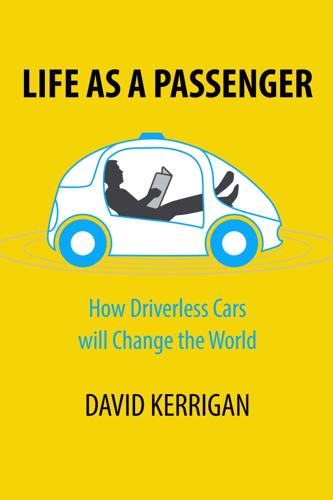
Life as a Passenger: How Driverless Cars Will Change the World
by
David Kerrigan
Published 18 Jun 2017
You need to tread carefully about this because if in writing some article that is negative you are effectively dissuading people from using autonomous vehicles, you are killing people” Elon Musk, CEO, Tesla Media coverage is under the spotlight worldwide as never before after allegations of fake news, echo bubbles and social media complicity in spreading misleading information. It is against this backdrop that the emergence of driverless cars is taking place. What I’ve seen so far regarding driverless cars has often been sensationalist (both negative and positive) rather than genuinely analytical or even just informative. I don’t think the fact that the robocars (which are by all accounts still years away from use) needed occasional intervention is worthy of a headline like the BBC used: “Google’s self-drive cars had to be stopped from crashing” as they reported[352] in January 2016 on Google’s publication of data related to disengagements.
…
MOD=AJPERES [348] https://www.automotiveisac.com/best-practices/ [349] https://techcrunch.com/2015/10/23/connected-car-security-separating-fear-from-fact/ [350] http://www.raymondloewy.com/about.html [351] https://www.ft.com/content/97a04f76-3494-11e7-99bd-13beb0903fa3 [352] http://www.bbc.com/news/technology-35301279 [353] https://static.nhtsa.gov/odi/inv/2016/INCLA-PE16007-7876.PDF [354] http://www.reuters.com/investigates/special-report/autos-driverless/ [355] https://en.wikipedia.org/wiki/Stanford_marshmallow_experiment [356] https://www.scribd.com/document/333075344/Apple-Comments-on-Federal-Automated-Vehicles-Policy [357] Remarks at Infrastructure Week, May 2017 [358] Technological Revolutions and Financial Capital, Carlota Perez, 2002 [359] https://www.washingtonpost.com/news/innovations/wp/2014/10/14/move-over-humans-the-robocars-are-coming/ [360] https://www.cnet.com/uk/news/a-brief-history-of-the-qwerty-keyboard/ [361] http://www.wsj.com/articles/could-self-driving-cars-spell-the-end-of-ownership-1448986572 [362] https://www.morganstanley.com/articles/autonomous-cars-the-future-is-now [363] https://www.wired.com/2016/04/american-cities-nowhere-near-ready-self-driving-cars/ [364] Machiavelli, The Prince, Chapter 6 [365] http://time.com/4236980/against-human-driving/ [366] https://www.ft.com/content/e961f914-6ba3-11e6-ae5b-a7cc5dd5a28c [367] Paul Roberts, The Impulse Society: What's Wrong With Getting What We Want, 2014 [368] http://content.time.com/time/magazine/article/0,9171,2033076,00.html [369] http://www.ft.com/intl/cms/s/0/da5d033c-8e1c-11e1-bf8f-00144feab49a.html#axzz1t4qPww6r [370] http://www.wbur.org/bostonomix/2016/04/29/traffic-future-driverless-cars
…
The starting point was to require special driver’s license endorsements for anyone operating an autonomous or semi-autonomous car requiring, that the driver take lessons and tests on the capabilities and limits of the autonomous vehicle, as well as how to take over control in an emergency. Other recommendations include state limitations on where and in what types of conditions autonomous cars can operate on public roads, requirements that the cars operate for a certain number of miles on private roads before use on public roads, and a system to record and report any failures or accidents of autonomous cars. The document concluded with a realisation that further research and updates would be required; “As innovation in this area continues and the maturity of self-driving technology increases, we will reconsider our present position on this issue”.
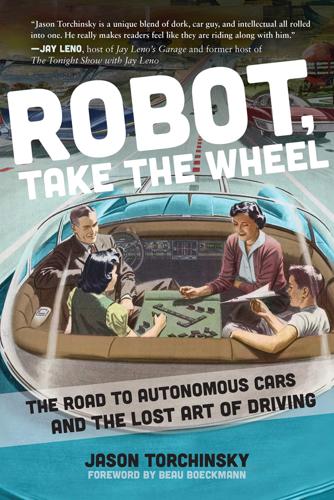
Robot, Take the Wheel: The Road to Autonomous Cars and the Lost Art of Driving
by
Jason Torchinsky
Published 6 May 2019
Also, in the early stages, it may prove helpful for robotic vehicles to make their presence very obvious. With this in mind, something like a federally mandated external robotic/autonomous vehicle warning lamp could prove effective. It may sound a bit like I’m paranoid about a massive robo-car uprising and I want to be able to see potential uprisers, but that’s not it at all. I think being able to visually see where the autonomous cars are will help them be accepted into mainstream traffic, and provide tools to study their interactions with other autonomous cars, meat-driven cars, pedestrians, and all the other chaos of life on the roads. I also think nervous human drivers might feel more comfortable if there’s an easy way to identify which cars are machine-driven, so, if they choose, they can safely avoid those cars.
…
Eng., http://www-ie.meijo-u.ac.jp/~tsugawa/sub1.html. 20 Schaub, Alexander, Robust Perception from Optical Sensors for Reactive Behaviors in Autonomous Robotic Vehicles, Springer Verlag, Berlin, 2018, pp. 17–18. 21 Dickmanns, Ernst D., Dynamic Machine Vision, http://www.dyna-vision.de/. 22 “DARPA Announces Third Grand Challenge,” May 1, 2006, https://www.grandchallenge.org/grandchallenge/docs/PR_UC_Announce_Update_12_06.pdf. 23 Tartan Racing, http://www.tartanracing.org/. Chapter 3 How Do They Work, Anyway? If we’re going to talk and think about autonomous cars, self-driving cars, robo-cars, drive-o-droids or whatever the hell we want to call these things, we should get a sense of exactly what they do and how they do it. Those of us who drive may want to think back to a time before driving was all ingrained muscle memory, something we now do almost automatically, except when we’re trying, like idiots, to drive while texting someone something super important about this hilarious drunken fight we think we saw behind a supermarket.
…
⁴⁸ Here Asimov accurately describes the very simple operation of an autonomous car (punch in a destination, let it go), but also acknowledges that such cars will likely be much more expensive than conventional cars, and suggests that ownership of private autonomous cars will be limited to the rich, with less wealthy folk using the “omnibus-automatics,” where you “call a company and have one stop at your door in a matter of minutes and take you where you wanted to go.” That sounds a hell of a lot like Uber, which, of course, is conducting a lot of research into autonomous vehicles. The emphasis on safety as the primary justification for autonomous car development is something we see a lot of today.

Artificial Unintelligence: How Computers Misunderstand the World
by
Meredith Broussard
Published 19 Apr 2018
Programmers don’t even like to type; it’s hard to imagine them being so detail-oriented that they voluntarily comply with fifty-plus different state traffic schemas and then manage to communicate these different operating procedures to each customer who buys an autonomous car. The communication problem surfaces again when we talk about self-driving cars. The National Highway Traffic Safety Association (NHTSA), the government agency in charge of motor vehicle and highway safety, had to come up with a complex scale to describe autonomous driving so we could talk about it. For a long time, programmers and executives used the term self-driving car without defining specifically what they meant. Again—normal for language, problematic for policy. In an effort to wrangle the Wild West of autonomous vehicles, the NHTSA published a set of categories for autonomous vehicles.
…
The lidar guidance system in an autonomous car works by bouncing laser beams off nearby objects. It estimates how far the objects are by measuring the reflection time. In the rain or snow or dust, the beams bounce off the particles in the air instead of bouncing off obstacles like bicyclists. One self-driving car was spotted going the wrong way down a one-way street. The software apparently didn’t reflect that the street was one way. The cars are easy to confuse because they rely on the same mediocre image recognition algorithms that mislabel pictures of black people as gorillas.13 Most autonomous vehicles use algorithms called deep neural networks, which can be confused by simply putting a sticker or graffiti on a stop sign.14 GPS hacking is a very real danger for autonomous vehicles as well.
…
The story of the race to build a self-driving car is a story about the fundamental limits of computing. Looking at what worked—and what didn’t—during the first decade of autonomous vehicles is a cautionary tale about how technochauvinism can lead to magical thinking about technology and can create a public health hazard. My first ride happened on an autonomous vehicle test track: the weekend-empty parking lot of the Boeing factory in South Philadelphia. The Ben Franklin Racing Team, a group of engineering students at the University of Pennsylvania, was building an autonomous vehicle for a competition. I was writing a story about them for the University of Pennsylvania alumni magazine.
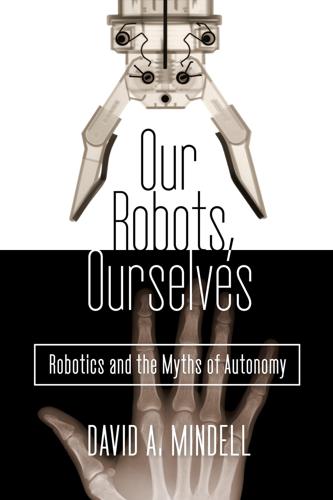
Our Robots, Ourselves: Robotics and the Myths of Autonomy
by
David A. Mindell
Published 12 Oct 2015
John Markoff, “Google Cars Drive Themselves, in Traffic,” New York Times, October 9, 2010, http://www.nytimes.com/2010/10/10/science/10google.html. The Google car’s successful driving tests: Mark Harris, “How Google’s Autonomous Car Passed the First U.S. State Self-Driving Test,” IEEE Spectrum Online, September 10, 2014, http://spectrum.iee.org. Idem., “These Are the Secrets Google Wanted to Keep about Its Self-Driving Cars,” Quartz, http://qz.com/252817/these-are-the-secrets-google-wanted-to-keep-about-its-self-driving-cars/, accessed November 18, 2014. Mark Harris, “How Much Training Do You Need to Be a Robocar Test Driver? It Depends On Whom You Work For,” IEEE Spectrum Cars That Think, February 24, 2015, http://spectrum.ieee.org/cars-that-think/transportation/human-factors/how-much-training-do-you-need-to-be-a-robocar-test-driver-it-depends-on-whom-you-work-for.
…
Or a person on the surface might even teleoperate the vehicle when it’s in optical range, then let it do more on its own when out of range or if the optical link is lost. Autonomy then becomes a function of position and bandwidth. Overall, the lines between the human, remote, and autonomous vehicles undersea are blurring. Engineers now envision an ocean with many vehicles working in concert. Some may contain people, others will be remote or autonomous, all will be capable of shifting modes at different times. The recently upgraded Alvin has software originally designed for autonomous vehicles; one day it may connect to the surface with an optical fiber. One day it might even operate unmanned. The challenges are to coordinate all of these machines, keep the humans informed, and ensure the robots’ actions reflect human intentions.
…
It Depends On Whom You Work For,” IEEE Spectrum Cars That Think, February 24, 2015, http://spectrum.ieee.org/cars-that-think/transportation/human-factors/how-much-training-do-you-need-to-be-a-robocar-test-driver-it-depends-on-whom-you-work-for. He put a video camera on the dashboard of his car: John Leonard, “Conversations on Autonomy,” presentation, MIT, March 13, 2014. John Markoff, “Police, Pedestrians and the Social Ballet of Merging: The Real Challenges for Self-Driving Cars,” Bits Blog, http://bits.blogs.nytimes.com/2014/05/29/police-bicyclists-and-pedestrians-the-real-challenges-for-self-driving-cars/, accessed July 10, 2014. We know that driverless cars will be susceptible: John Markoff, “Collision in the Making Between Self-Driving Cars and How the World Works,” New York Times, January 23, 2012, http://www.nytimes.com/2012/01/24/technology/googles-autonomous-vehicles-draw-skepticism-at-legal-symposium.html.
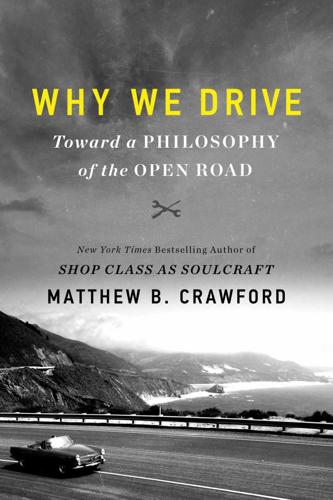
Why We Drive: Toward a Philosophy of the Open Road
by
Matthew B. Crawford
Published 8 Jun 2020
Ian Bogost offers a convincing thought experiment about the terms on which the public will have access to roads as public infrastructure comes to be financed and planned by partnerships between municipalities and tech companies. “It’s easy to imagine that cross-town transit might soon require acceptance of non-negotiable terms of service that would allow your robocar provider to aggregate and sell where you go, when, with whom, and for what purpose.” One can imagine the removal of street signs, those eyesores that aren’t needed by autonomous vehicles, tipping us further into dependence on the cartel. Bogost writes that “other, stranger realities are possible. Imagine if walking across the street required a microtransaction to insure safe passage. Violations might be subject to tickets or fines—although more likely, your local transit vendor would already know where you are thanks to your smartphone, and just debit your metered service plan accordingly.”7 Something about this picture sits ill with our liberal political traditions, but its wrongness goes deeper still.
…
In November 2017 in Automotive News, Bob Lutz, the head of GM, suggested that driving will be outlawed in twenty years. Bob Lutz, “Kiss the Good Times Goodbye,” Automotive News, November 5, 2017, http://www.autonews.com/apps/pbcs.dll/article?AID=/20171105/INDUSTRY_REDESIGNED/171109944/industry-redesigned-bob-lutz. 7.Ian Bogost, “Will Robocars Kick Humans off City Streets?” Atlantic, June 23, 2016, https://www.theatlantic.com/technology/archive/2016/06/robocars-only/488129/. 8.A. M. Glenberg and J. Hayes, “Contribution of Embodiment to Solving the Riddle of Infantile Amnesia,” Frontiers in Psychology 7 (2016), as characterized in M. R. O’Connor, “For Kids, Learning Is Moving,” Nautilus, September 22, 2016, http://nautil.us/issue/40/learning/for-kids-learning-is-moving.
…
At each stage, remaining pockets of human judgment and discretion appear as bugs that need to be solved. Put more neutrally, human intelligence and machine intelligence have a hard time sharing control. This becomes evident in the problems posed by partially autonomous cars, and is evident also in the problems posed when fully autonomous cars have to share the road with human drivers. Driverless cars are programmed to follow traffic rules to the letter and err on the side of caution, making them an awkward fit with other cars piloted by humans. The New York Times reports that one Google car “couldn’t get through a four-way stop because its sensors kept waiting for other (human) drivers to stop completely and let it go.

Driverless: Intelligent Cars and the Road Ahead
by
Hod Lipson
and
Melba Kurman
Published 22 Sep 2016
Brad Templeton “California DMV Regulations May Kill the State’s Robocar Lead,” 4brad.com, December 17, 2015, http://ideas.4brad.com/california-dmv-regulations-may-kill-states-robocar-lead 18. Grace Meng, “H.R.3876—Autonomous Vehicle Privacy Protection Act of 2015,” Congress.gov, https://www.congress.gov/bill/114th-congress/house-bill/3876/text 8 Rise of the Robots Modern driverless cars began to emerge from the labs of robotics researchers in the final decades of the twentieth century. Throughout the 1980s and 1990s, German autonomous-vehicle pioneer Ernst Dickmanns built several prototypes that used sensors and intelligent software to steer themselves.
…
In general, car companies and transportation officials take a longer view, estimating that driverless cars will be a mainstay on public roads sometime after the year 2025. According to the automotive market research firm IHS, the first sales of autonomous vehicles will begin around the year 2025.14 IHS analysts estimate that by the year 2035, roughly 10 percent of new cars sold will be autonomous, a total number of 11.8 million cars each year. After 2050, IHS predicts that almost all new vehicles sold will be autonomous. Car companies have preferred a staged, gradual approach to autonomous driving, another factor that makes it impossible to pin down an exact date for the adoption of driverless cars.
…
. … Anticipation of green phases of stoplights could navigate vehicles through an urban area on a “green wave” with the appropriate engine performance and minimized fuel consumption.14 Perhaps someday, autonomous vehicles will communicate with one another over some kind of network. Even if this day arrives, however, it’s unlikely V2X-equipped cars of the future will use the same costly infrastructure of short-wave radio technology that figures in current USDOT strategy. Once the majority of cars on the road are fully self-driving, by then, it’s highly likely that connectedness will be achieved for a lower price. Fully autonomous cars will be able to communicate with one another and with roadside traffic-management servers using cheaper forms of networks such as the existing cellphone infrastructure.

Ghost Road: Beyond the Driverless Car
by
Anthony M. Townsend
Published 15 Jun 2020
mediaId=447. 30how we spend the time . . . has shifted: Chen Song and Chao Wei, “Travel Time Use over Five Decades,” Transportation Research Part A: Policy and Practice 116 (October 2018): 73–96. 30Audi’s concept car of the future: Chris Paukert, “Audi’s Long Distance Lounge Hypes a Smarter Autonomous Future,” Roadshow, CNET, June 14, 2017, https://www.cnet.com/roadshow/news/audi-long-distance-lounge-au tonomous-concept-exclusive-hands-on-video/. 30self-driving vehicles could free up 250 million hours: Roger Lanctot,Accelerating the Future: The Economic Impact of the Emerging Passenger Economy (Strategy Analytics, June 2017), 6, https://newsroom.intel.com/newsroom/wp-content/uploads/sites/11/2017/05/passenger-economy.pdf. 30$150 billion in the US alone: Securing America’s Future Energy, America’s Workforce and the Self-Driving Future: Realizing Productivity Gains and Spurring Economic Growth, June 2018, 22, https://avworkforce.secureenergy.org/wp-content/uploads/2018/06/SAFE_AV_Policy_Brief.pdf. 31asked how they expect to spend their saved time: Eva Fraedrich et al., User Perspectives on Autonomous Driving: A Use-Case-Driven Study in Germany (Berlin, Germany: DLR Institute of Transport Research, 2016), 13; Chris Tennant et al., Executive Summary, Autonomous Vehicles—Negotiating a Place on the Road (London, UK: London School of Economics, 2016), 1–10. 31“Why do all of these interior designs”: Alanis King, “Autonomous Cars Aren’t Even Here Yet and I’m Already Bored with Them,” Jalopnik, September 11, 2017, https://jalopnik.com/autonomous-cars-arent-even-here-yet-and-im-already-bore-1803756153. 31Audi has recruited Disney: Reese Counts, “We Try Audi and Disney’s New In-Car Entertainment System on the Track,” Autoblog, January 9, 2019, https://www.autoblog.com/2019/01/09/audi-disney-holoride-car-vr-entertainment/. 31Kia built a concept car: Laura Bliss, “The ‘Driverless Experience’ Looks Awfully Distracting,” CityLab, January 11, 2019, https://www.citylab.com/transportation/2019/01/self-driving-car-technology-consumer-electronics-show/580027/. 31bigger . . . than the entire auto industry today: Lanctot, Accelerating the Future, 5. 31serve up precision-targeted media: Joann Muller, “One Big Thing: What Your Car Will Know about You,” Axios, May 10, 2019, https://www.axios.com/newsletters/axios-autonomous-vehicles-7b382e7a-e9f1-466b-9c7b-33e4aadc03f4.html; sensors. . . uniquely identify your heartbeat: “Goode Intelligence Forecasts That Biometrics Market for the Connected Car Will Be Just under $1bn by 2023,” Goode Intelligence, November 13, 2017, https://www.goodeintelligence.com/wp-content/uploads/2017/11/Goode-Intelligence-Biometrics-for-the-Connected-Car_Nov17_-news_release-13112017.pdf. 32GM already tracks: Jamie LaReau, “GM Tracked Radio Listening Habits for 3 Months: Here’s Why,” Detroit Free Press, October 1, 2018, https://www.freep.com/story/money/cars/general-motors/2018/10/01/gm-radio-listening-habits-advertising/1424294002/. 32“We know how long they’ve lived”: Phoebe Wall Howard, “Data Could Be What Ford Sells Next as It Looks for New Revenue,” Detroit Free Press, November 13, 2018, https://www.freep.com/story/money/cars/2018/11/13/ford-motor-credit-data-new-revenue/1967077002/. 33odds of a crash instantly double: National Highway Traffic Safety Administration, Overview of the National Highway Traffic Safety Administration’s Driver Distraction Program, DOT HS 811 299, April 2010, https://www.nhtsa. gov/sites/nhtsa.dot.gov/files/811299.pdf. 33road crashes in the US declined: Wikipedia, s.v.
…
Even as this self-driving paradise takes shape, it becomes a killing field. In a gruesome twist, a cocaine-tainted batch of gasoline turns the robocars against their human masters. “There seemed to be a personal devil in each of them, directing their actions,” Keller writes. “Cars, without control, coursed the public highways, chasing pedestrians, killing little children, smashing fences. . . . Fifty million machines were on a wild riot of uncontrolled destruction.” The renegade robocars even discover how to gas themselves up at service stations, perpetuating the reign of terror indefinitely. For all its B-movie sensationalism, the lessons of “The Living Machine” remain fresh and relevant today.
…
Then I Tried One,” Opinion, New York Times, October 22, 2017, https://www.nytimes.com/2017/10/22/opinion/driverless-cars-test-drive.html. 960 million people were killed: Death: A Self-Portrait, 2012, Richard Harris Collection, London, UK: Wellcome Collection, exhibition. 9time wasted in traffic: “INRIX Global Traffic Scorecard,” INRIX, accessed February 15, 2018, http://inrix.com/scorecard. 1025 million people have disabilities that limit travel: Stephen Brumbaugh, Travel Patterns of Americans with Disabilities (Washington, DC: Bureau of Transportation Statistics, 2018), https://www.bts.gov/sites/bts.dot.gov/files/docs/explore-topics-and-geography/topics/passenger-travel/222466/travel-patterns-american-adults-disabilities-9-6-2018_1.pdf. 10By 2030 . . . tens of millions: BlackRock Investment Group, Future of the Vehicle: Winners and Losers: From Cars and Cameras to Chips (BlackRock Investment Institute, 2017), 8. 10two billion human-driven cars and trucks: Daniel Sperling and Deborah Gordon, Two Billion Cars: Driving toward Sustainability (New York: Oxford University Press, 2009). 10“The future is already here”: Marianne Trench, Cyberpunk (New York: Intercon Production, 1990), YouTube video. 11a mix of both worlds: Bern Grush and John Niles, The End of Driving: Transportation Systems and Public Policy Planning for Autonomous Vehicles (Cambridge, MA: Elsevier, 2018). 11Half will end up in China: “Autonomous Vehicle Sales to Surpass 33 Million Annually in 2040, Enabling New Autonomous Mobility in More Than 26 Percent of New Car Sales, IHS Markit Says,” IHS Markit, January 2, 2018, https://technology.ihs.com/599099/autonomous-vehicle-sales-to-surpass-33-million-annually-in-2040-enabling-new-autonomous-mobility-in-more-than-26-percent-of-new-car-sales-ihs-markit-says. 11$2 trillion global auto-manufacturing industry: Roger Lanctot, Accelerating the Future: The Economic Impact of the Emerging Passenger Economy (Strategy Analytics, June 2017), https://newsroom. intel. com/newsroom/wp-content/uploads/sites/11/2017/05/passenger-economy.pdf; roughly the size of the entire EU economy: “The Economy,” European Union (website), accessed April 11, 2019, https://europa.eu/european-union/about-eu/figures/economy_en. 11capture a $1.7 trillion annual share by 2030: Author’s calculation based on Peter Campbell, “Waymo Forecast to Capture 60% of Driverless Market,” Financial Times, May 10, 2018, https://www.ft.com/content/3355f5b0-539d-11e8-b24e-cad6aa67e23e. 11of many shapes and sizes will have replaced them: Scott Corwin et al., “The Future of Mobility: What’s Next?”
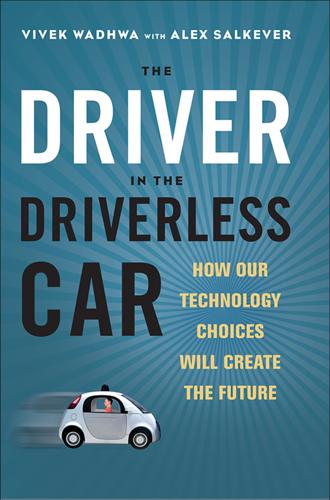
The Driver in the Driverless Car: How Our Technology Choices Will Create the Future
by
Vivek Wadhwa
and
Alex Salkever
Published 2 Apr 2017
Someone is sitting in the passenger seat, but no one seems to be sitting in the driver seat. How odd, I think. And then I realize I am looking at a Google car. The technology giant is headquartered in Mountain View, and the company is road-testing its diminutive autonomous cars there. This is my first encounter with a fully autonomous vehicle on a public road in an unstructured setting. The Google car waits patiently as a pedestrian passes in front of it. Another car across the intersection signals a left-hand turn, but the Google car has the right of way. The automated vehicle takes the initiative and smoothly accelerates through the intersection.
…
This paradigm shift will not be without costs or controversies. For sure, widespread adoption of autonomous vehicles will eliminate the jobs of the millions of Americans whose living comes of driving cars, trucks, and buses (and eventually all those who pilot planes and ships). We will begin sharing our cars, in a logical extension of Uber and Lyft. But how will we handle the inevitable software faults that result in human casualties? And how will we program the machines to make the right decisions when faced with impossible choices—such as whether an autonomous car should drive off a cliff to spare a busload of children at the cost of killing the car’s human passenger?
…
When parents can call a Google car and put their children in the back seat for a ride to soccer practice, that increases autonomy. When an elderly person who can no longer drive can call an autonomous vehicle for a lift to the supermarket or to the art museum, that increases autonomy. When all of this is affordable—so affordable that anyone can pay for it—it will have brought about a massive net increase in autonomy for all and an important increase in equity. Yes, we will be dependent on autonomous cars, but we have always been dependent. Here, the dependency is actually replaced with something more reliable. The child always needs to get to soccer practice, whether a parent or neighbor or a Google car is providing the transportation.
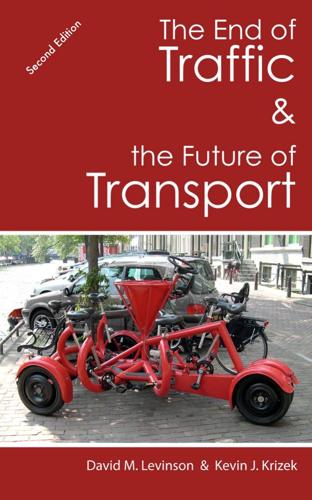
The End of Traffic and the Future of Transport: Second Edition
by
David Levinson
and
Kevin Krizek
Published 17 Aug 2015
Widely called the 'sharing economy' or 'collaborative consumption,' its manifestations in transport: carsharing and ridesharing are viable if not widespread. Couple these technologies with autonomous vehicles discussed in the previous chapter, and one arrives at what we term 'cloud commuting' — the convergence of ridesharing, carsharing, and autonomous vehicles.211 More formally, this range of options can be termed Mobility-as-a-Service (MaaS). While nascent today, clearly big players are placing big bets that this will be a big change in how people travel. It is this which explains Uber's $62.5 Billion valuation.212 A vehicle from a giant pool of autonomous cars operated by organizations based 'in the cloud' would be dispatched to a customer on-demand and in short order, and then would deliver the customer to her destination (be it work or otherwise) before moving on to the next customer.
…
In short: speed decentralizes.248 And, some places, including suburbs, exurbs, and rural areas will likely see increased decentralization. But in cities, there is increasing evidence to suggest the reverse. These phenomena will likely be context dependent. Autonomous vehicles will likely be faster, particularly on freeways, especially after widespread deployment once either human drivers are banned or a network of separate lanes are designated for autonomous cars. Coupling with just the faster speed, the fully autonomous vehicle lowers the cognitive burden on the former driver/now passenger. Modes with lower cognitive burden tend to have longer trip durations. Time matters. What you does with that time (the quality of the experience) also matters.
…
Thus, capacity at bottlenecks should increase, both in throughput per lane and the number of lanes per unit road width. These cars still need to go somewhere, so auto-mobility still requires some capacity on city streets as well as freeways, but ubiquitous adoption of autonomous vehicles would save space on parking and lane width. Cars without people. Autonomous cars can drive without people at all. They can be used for pickup and delivery, in addition to the dead-heading from drop-off to parking, or from drop-off of one passenger to pick-up of another, or for recharging or refueling. All of this can increase total travel on the road.

Robot Rules: Regulating Artificial Intelligence
by
Jacob Turner
Published 29 Oct 2018
Ngo, “Redesign of the Vehicle Bonnet Structure for Pedestrian Safety”, Proceedings of the Institution of Mechanical Engineers, Part D: Journal of Automobile Engineering, Vol. 226, No. 1 (2012), 70–84. 109Many commentators have pointed out the applicability of the Trolley Problem to self-driving cars, but beyond articulating the issue, few have actually suggested a legal or moral answer. See, for example, Matt Simon, “To Make Us All Safer, Robocars Will Sometimes Have to Kill”, Wired, 17 March 2017, https://www.wired.com/2017/03/make-us-safer-robocars-will-sometimes-kill/, accessed 1 June 2018; Alex Hern, “Self-Driving Cars Don’t Care About Your Moral Dilemmas”, The Guardian, 22 August 2016, https://www.theguardian.com/technology/2016/aug/22/self-driving-cars-moral-dilemmas, accessed 1 June 2018; Jean-François Bonnefon, Azim Shariff, and Iyad Rahwan, “The Social Dilemma of Autonomous Vehicles”, Science, Vol. 352, No. 6293 (2016), 1573–1576; Noah J. Goodall, “Machine Ethics and Automated Vehicles”, in Road Vehicle Automation, edited by Gereon Meyer and Sven Beiker (New York: Springer, 2014), 93–102. 110“Ethics Commission at the German Ministry of Transport and Digital Infrastructure”, 5 June 2017, https://www.bmvi.de/SharedDocs/EN/Documents/G/ethic-commission-report.pdf?
…
The term does not include an active safety system or a system for driver assistance, including without limitation, a system to provide electronic blind spot detection, crash avoidance, emergency braking, parking assistance, adaptive cruise control, lane keeping assistance, lane departure warning, or traffic jam and queuing assistance, unless any such system, alone or in combination with any other system, enables the vehicle on which the system is installed to be driven without the active control or monitoring of a human operator (Added to NRS by 2013, 2009). Chapter 482A—Autonomous Vehicles, https://www.leg.state.nv.us/NRS/NRS-482A.html, accessed 1 June 2018. 45Ryan Calo, “Nevada Bill Would Pave the Road to Autonomous Cars”, Centre for Internet and Society Blog, 27 April 2011, http://cyberlaw.stanford.edu/blog/2011/04/nevada-bill-would-pave-road-autonomous-cars, accessed 1 June 2018. 46Will Knight, “Alpha Zero’s “Alien” Chess Shows the Power, and the Peculiarity, of AI”, MIT Technology Review, https://www.technologyreview.com/s/609736/alpha-zeros-alien-chess-shows-the-power-and-the-peculiarity-of-ai/, accessed 1 June 2018.
…
Kazuo Yano, “Enterprises of the Future Will Need Multi-purpose AIs”, Hitachi Website, http://www.hitachi.co.jp/products/it/it-pf/mag/special/2016_02th_e/interview_ky_02.pdf, accessed 1 June 2018. 41UK Department of Transport, “The Pathway to Driverless Cars: Detailed Review of Regulations for Automated Vehicle Technologies”, UK Government Website, February 2015, https://www.gov.uk/government/uploads/system/uploads/attachment_data/file/401565/pathway-driverless-cars-main.pdf, accessed 1 June 2018. 42When in 2017 the UK’s House of Lords Science and Technology Select Committee published a report entitled “Connected and Autonomous Vehicles: The Future?”, it concentrated solely on land-based vehicles. House of Lords, Science and Technology Select Committee, “Connected and Autonomous Vehicles: The Future?”, 2nd Report of Session 2016–17, HL Paper 115 (15 March 2017). The Report expressly says at para. 23: “We have not considered remote control vehicles (RCV) or drones (unmanned aerial vehicles) in this report”.
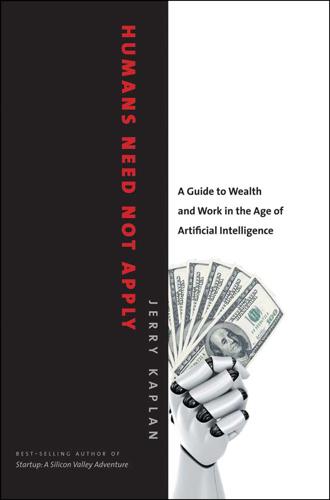
Humans Need Not Apply: A Guide to Wealth and Work in the Age of Artificial Intelligence
by
Jerry Kaplan
Published 3 Aug 2015
Transport Times, June, 2014, http://www.transporttimes.co.uk/Admin/uploads/64165-Transport-Times_A-2050-Vision-for-London_AW-WEB-READY.pdf; http://emarketing.pwc.com/reaction/images/AutofactsAnalystNoteUS(Feb2013)FINAL.pdf 7. According to Brad Templeton, autonomous car consultant to Google, “In Los Angeles, it is estimated that over half of all real estate is devoted to cars (roads and environs, driveways, parking),” personal blog, accessed November 29, 2014, http://www.templetons.com/brad/robocars/numbers.html. 8. Transportation Energy Data Book, table 8.5, Center for Transportation Analysis, Oak Ridge National Laboratory, accessed November 29, 2014, http://cta.ornl.gov/data/chapter8.shtml. 9.
…
Shaw and Company, 53, 95, 96, 97 DIDO (distributed input, distributed output), 127 digital recording, 193 Dijkstra, Edgar, 3 dishwashing, 145 Disneyland VIP tour option, 165 doctors. See medical care Dow Jones Industrial Average, 8–9, 61–63 driverless cars. See autonomous vehicles drones, 43, 44 duty-based normative ethics, 82 “Easterlin Paradox,” 225n31 economic system, 7, 10–15 absolute vs. reactive needs and, 186 asset-based, 14–15, 175–87 autonomous vehicles’ effects on, 195, 196 class and, 115, 116, 118 competitive advantage and, 102, 103, 106, 161–65, 181, 186, 187 expansion of, 15, 165 incentives and, 176, 177 inequality and, 12–15, 117–18, 165–66, 174–76 inflation rate, 173, 175 innovation and, 158, 161–64, 186–87 Silicon Valley disruption of, 16 synthetic intellect takeover of, 201–2.
…
See forged laborers Rochester, Nathaniel, 19 Rockefeller, John D., 200 Rocket Fuel, 64–65, 67–71, 136 founding/current worth of, 72 Rolling Stone (magazine), 170 Roosevelt, Franklin Delano, 170 Rosenblatt, Frank, 24 Rothschild, Nathan Mayer, 58 R202 (mechanical factotum), 40 Rutter, Brad, 150 SAAS (software-as-a-service), 43 safety: autonomous vehicles, 89, 142, 195 commercial pilots, 151 highway, 44–45, 142, 178 traffic, 195 workplace, 37–38, 44–45 salaries, 116, 120, 145, 172 salespeople, 139 S&P 500 E-mini, 62 San Francisco State University, 121, 158 sanitation, 169 savings. See assets ownership Scheinman, Victor, 35 schools. See education system Schrodinger’s cat, 213n9 science, ix, 114 science fiction, ix–x, xii Seattle, 114 SEC (Securities and Exchange Commission), 8, 61–62, 63 segregation, 168, 222n10 self-driving vehicles. See autonomous vehicles self stocking, 40 sensors, 194, 205 applications of, 4, 5 network of, 42–43, 44 recognition by, 39 sex workers and toys, 144–45 Shaw, Dave (King Quant), 51–53, 58, 95, 96, 97, 103 shipping, 39 costs of, 100, 101 delivery and, 141–42, 177 “free,” 101 warehouse stacking and, 144 ShotSpotter system, 43 Silicon Valley startups, x–xi, 64–65, 95–96, 127, 144, 223–24n15 disruption of industries by, 16 personal wealth from, 109 restricted stock vesting by, 184 Simon, Paul, 112 simulated intelligence.
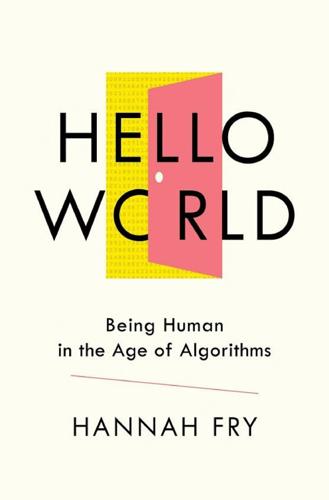
Hello World: Being Human in the Age of Algorithms
by
Hannah Fry
Published 17 Sep 2018
Because there’s another layer of difficulty to contend with when trying to build that sci-fi fantasy of a go-anywhere, do-anything, steering-wheel-free driverless car, and it’s one that goes well beyond the technical challenge. A fully autonomous car will also have to deal with the tricky problem of people. Jack Stilgoe, a sociologist from University College London and an expert in the social impact of technology, explains: ‘People are mischievous. They’re active agents, not just passive parts of the scenery.’38 Imagine, for a moment, a world where truly, perfectly autonomous vehicles exist. The number one rule in their on-board algorithms will be to avoid collisions wherever possible. And that changes the dynamics of the road.
…
‘It’s about keeping the world as it is but making and allowing a robot to just be as good as and then better than a human at navigating it. And I think that’s stupid.’ But hang on, some of you may be thinking. Hasn’t this problem already been cracked? Hasn’t Waymo, Google’s autonomous car, driven millions of miles already? Aren’t Waymo’s fully autonomous cars (or at least, close to fully autonomous cars) currently driving around on the roads of Phoenix, Arizona? Well, yes. That’s true. But not every mile of road is created equally. Most miles are so easy to drive, you can do it while daydreaming. Others are far more challenging. At the time of writing, Waymo cars aren’t allowed to go just anywhere: they’re ‘geo-fenced’ into a small, pre-defined area.
…
They, more than anyone, know how far away we are from having to worry about the trolley problem as a reality. Breaking the rules of the road Bayes’ theorem and the power of probability have driven much of the innovation in autonomous vehicles ever since the DARPA challenge. I asked Paul Newman, professor of robotics at the University of Oxford and founder of Oxbotica, a company that builds driverless cars and tests them on the streets of Britain, how his latest autonomous vehicles worked, and he explained as follows: ‘It’s many, many millions of lines of code, but I could frame the entire thing as probabilistic inference. All of it.’36 But while Bayesian inference goes some way towards explaining how driverless cars are possible, it also explains how full autonomy, free from any input by a human driver, is a very, very difficult nut to crack.

Insane Mode: How Elon Musk's Tesla Sparked an Electric Revolution to End the Age of Oil
by
Hamish McKenzie
Published 30 Sep 2017
The development of autonomous vehicles goes hand in hand with the development of electric vehicles, because self-driving cars are best controlled by drive-by-wire systems, in which electrical signals and digital controls, rather than mechanical functions, operate a car’s core systems, such as steering, acceleration, and braking. The absence of a large engine block, too, opens up more design possibilities for electric vehicles, so autonomous cars could come in more varied shapes and sizes, as small as a covered Segway or as large as a double-decker bus. But to the extent that the spread of autonomous vehicles depends on electric vehicles, so, too, must they depend on the expansion of electric vehicle infrastructure, especially the proliferation of charging stations. And who wouldn’t want a car that could refuel itself?
…
Level 5 was the highest, at which a car would have no controls for human drivers whatsoever. At that point, you could read a book, take a nap, or watch a movie while the car drove itself. Google has tested fully autonomous vehicles to a Level 5 designation, meaning the cars could perform all “safety-critical driving functions and monitor roadway conditions for an entire trip,” but they haven’t yet left the test circuit. The development of autonomous vehicles goes hand in hand with the development of electric vehicles, because self-driving cars are best controlled by drive-by-wire systems, in which electrical signals and digital controls, rather than mechanical functions, operate a car’s core systems, such as steering, acceleration, and braking.
…
In April 2016, as NHTSA held public hearings about self-driving cars, a group that included Ford, Google, Uber, Lyft, and Volvo announced the formation of the Self-Driving Coalition for Safer Streets, led by David Strickland, a former NHTSA administrator. The group has been advocating for a clear set of federal standards for autonomous vehicles in the United States. In June 2016, the National Association of City Transportation Officials, a coalition of officials from dozens of large North American cities, published a policy statement that included a series of safety- and civic-minded recommendations, such as capping inner-city speeds for autonomous vehicles at twenty-five miles an hour and offering federal and state incentives to cities that prioritize self-driving electric cars that can be shared.

Artificial Intelligence: A Guide for Thinking Humans
by
Melanie Mitchell
Published 14 Oct 2019
Sizing up a complex situation and making split-second assessments of who is likely to jaywalk, dart across the street to run for a bus, turn abruptly without signaling, or stop in a crosswalk to adjust a broken high-heeled shoe—this is second nature to most human drivers, but not yet to self-driving cars. Another looming problem for autonomous vehicles is the potential for malicious attacks of various kinds. Computer-security experts have shown that even many of the nonautonomous cars we drive today—which are increasingly controlled by software—are vulnerable to hacking via their connection to wireless networks, including Bluetooth, cell phone networks, and internet connections.2 Because autonomous cars will be completely controlled by software, they will potentially be even more vulnerable to malicious hacking. In addition, as I described in chapter 6, machine-learning researchers have demonstrated possible “adversarial attacks” on computer-vision systems of self-driving cars—some as simple as putting inconspicuous stickers on stop signs that make the car classify them as speed-limit signs.
…
Cars with partial autonomy exist now, but are dangerous because the humans driving them don’t always pay attention. The most likely solution to this dilemma is to change the definition of full autonomy: allowing autonomous cars to drive only in specific areas—those that have created the infrastructure to ensure that the cars will be safe. A common version of this solution goes by the name “geofencing.” Jackie DiMarco, former chief engineer for autonomous vehicles at Ford Motor Company, explained geofencing this way: When we talk about level 4 autonomy, it’s fully autonomous within a geofence, so within an area where we have a defined high definition map.
…
The self-driving car industry desperately wants to produce and sell fully autonomous vehicles (that is, level 5); indeed, full autonomy is what we, the consumers, have long been promised in all the buzz around self-driving cars. What are the obstacles to getting to true autonomy in our cars? The primary obstacles are the kinds of long-tail situations (“edge cases”) that I described in chapter 6: situations that the vehicle was not trained on, and that might individually occur rarely, but that, taken together, will occur frequently when autonomous vehicles are widespread. As I described, human drivers deal with these events by using common sense—particularly the ability to understand and make predictions about novel situations by analogy to situations the driver already understands.

Speculative Everything: Design, Fiction, and Social Dreaming
by
Anthony Dunne
and
Fiona Raby
Published 22 Nov 2013
Timothy Mitchell, "Hydrocarbon Utopia," in Utopia/Dystopia: Conditions of Historical Possibility, ed. Michael D.Gordin, Helen Tilley, and Gyan Prakish (Princeton, NJ: Princeton University Press, 2010), 118. 27. For more about how the design of cars can change to due to robocars, see Brad Templeton, "New Design Factors for Robot Cars." Available at http:// www.templetons.com/brad/robocars/design-change.html. Accessed December 23, 2012. 28. Each micro-kingdom represents a different combination of technology and political ideology. For example, if biotechnology were part of the digitarian world, it would be shaped by market mechanisms and lead to a "bio-tarian" culture.

New Laws of Robotics: Defending Human Expertise in the Age of AI
by
Frank Pasquale
Published 14 May 2020
She also concludes that China is in the middle of the two paradigms, with ongoing political and cultural debate on the fundamental premises of human-robot interaction. As these distinctive approaches evolve, the economics profession should not presume to put a finger on the scale in favor of substitutive automation. It can just as readily prescribe human-led care. THE POLITICAL ECONOMY OF ROBO-CARE Larger trends in workforce participation and demand also matter. Robotic caregiving makes far more sense in a society where the adult children of the elderly are under constant pressure to work more; an overburdened “sandwich generation” has to sacrifice somewhere. If, by contrast, productivity gains were better distributed, demand for robots in elder care would likely diminish.
…
Legislators are already grappling with the question of whether to require such vehicles to revert control to a person upon request or to give that control to police when they demand it.63 I used the ambiguous term “person” in the last sentence because we still do not have a good term for occupants of a semi-autonomous vehicle. Both law and norms will shape that new identity over time.64 None of these decisions should be made solely—or even predominantly—by the programmers and corporations developing algorithms for self-driving cars. They involve governance and participation by a much wider range of experts, ranging from urban-studies scholars to regulators to police and attorneys.
…
But to deploy such powerful technology to ticket speeders, ferret out benefits fraud, or catch petty thieves is like using a sledgehammer to kill a fly.28 Stark’s proposal is particularly insightful because it extends a widely agreed logic for limiting the power of machines: restricting violence. No one should be able to buy or equip an autonomous vehicle with machine guns on its hood without some kind of license; there’s simply a common sense that tanks are for war, not personal armies. Many uses of facial recognition technology portend structural violence: systematic efforts to typecast individuals, to keep them monitored in their place, or to ransack databases for ways to manipulate them.

Cities Under Siege: The New Military Urbanism
by
Stephen Graham
Published 30 Oct 2009
Eleven fully robotized SUVs and other cars had to navigate a simulated urban course completely autonomously. 9.10 Estimates for the future introduction of fully autonomous military and civilian vehicles from the Urban Challenge presentations of Stanford University’s entry. Whilst driverless cars are unlikely to become available to consumers until 2030 at the earliest, the Urban Challenge robocars are already being displayed at car shows, billed as a way to ‘fortify road safety and eliminate driver error as the most common cause of crashes’.131 The already strong links between militarized robotic combat vehicles (Figure 9.10) and an increasingly militarized society where cars become increasingly automated and surveilled, will likely intensify.
…
Widespread campaigns, drawing on a long history of such activism, have targeted the militarized R&D that is carried on in US universities and so firmly underpins securocratic war, ubiquitous bordering, and the Long War.57 Two of the main centres for work on the robotization of weapons–the Robotics Institute and its commercial arm, the National Robotics Engineering Center (NREC) – are at Carnegie Mellon University in Pittsburgh, and both have been the target of a jamming campaign (Figure 10.13). (In Chapter 9 we already encountered NREC: its ‘robocar’ was the winner of DARPA’s 2007 Urban Challenge competition.) The Carnegie Mellon campaign, labelled ‘Barricade the War Machine’, is challenging the take-over of engineering sciences in the university and the local economy by military-robotics research in the service of the military-industrial-academic complex.
…
For example, in an attempt to stimulate further development of robotic ground vehicles for use in both the US military and on the streets of US cities, the Pentagon’s high-tech R&D arm, the Defense Advanced Research Projects Agency (DARPA), has initiated a series of high-profile rob otic-vehicle competitions. The agency stressed that the aim of the 2007 competition, called ‘Urban Challenge’, was to develop ‘technology that will keep warfighters off the battlefield and out of harm’s way’.127 It was ‘the first time in history that truly autonomous vehicles met and (mostly) avoided each other on the open road’.128 The event required that competing teams build vehicles capable of driving autonomously in traffic, relying entirely on on-board sensors, cameras, radars, computers and GPS systems. These vehicles had to perform turns, mergers, overtaking, and passing, and had to negotiate junctions within a cordoned-off sixty-mile ‘urban’ course in and around a former military base in Victorville, California.

Bold: How to Go Big, Create Wealth and Impact the World
by
Peter H. Diamandis
and
Steven Kotler
Published 3 Feb 2015
Chapter Three: Five to Change the World 1 Adrian Kingsley-Hughes, “Mobile gadgets driving massive growth in touch sensors,” ZDNet, June 18, 2013, http://www.zdnet.com/mobile-gadgets-driving-massive-growth-in-touch-sensors-7000016954/. 2 Peter Kelly-Detwiler, “Machine to Machine Connections—The Internet of Things—And Energy,” Forbes, August 6, 2013, http://www.forbes.com/sites/peterdetwiler/2013/08/06/machine-to-machine-connections-the-internet-of-things-and-energy/. 3 See http://www.shotspotter.com. 4 Clive Thompson, “No Longer Vaporware: The Internet of Things Is Finally Talking,” Wired, December 6, 2012, http://www.wired.com/2012/12/20-12-st_thompson/. 5 Brad Templeton, “Cameras or Lasers?,” Templetons, http://www.templetons.com/brad/robocars/cameras-lasers.html. 6 See http://en.wikipedia.org/wiki/Passenger_vehicles_in_the_United_States. 7 Commercial satellite players include: PlanetLabs (already launched), Skybox (launched and acquired by Google), Urthecast (launched), and two still-confidential companies still under development (about which Peter Diamandis has firsthand knowledge). 8 Stanford University, “Need for a Trillion Sensors Roadmap,” Tsensorsummit.org, 2013, http://www.tsensorssummit.org/Resources/Why%20TSensors%20Roadmap.pdf. 9 Rickie Fleming, “The battle of the G networks,” NCDS.com blog, June 28, 2014, http://www.ncds.com/ncds-business-technology-blog/the-battle-of-the-g-networks. 10 AI with Dan Hesse, 2013–14. 11 Unless otherwise noted, all IoT information and Padma Warrior quotes come from an AI with Padma, 2013. 12 Cisco, “2013 IoE Value Index,” Cisco.com, 2013, http://internetofeverything.cisco.com/learn/2013-ioe-value-index-whitepaper. 13 NAVTEQ, “NAVTEQ Traffic Patterns,” Navmart.com, 2008, http://www.navmart.com/pdf/NAVmart_TrafficPatterns.pdf. 14 Juho Erkheikki, “Nokia to Buy Navteq for $8.1 Billion, Take on TomTom (Update 7),” Bloomberg, October 1, 2007, http://www.bloomberg.com/apps/news?
…
As Arduino hacker Charalampos Doukas says, as sensor prices crash downward, “The only limit is your imagination.” To look at this from a more expansive angle, consider that we now live in a world where Google’s autonomous car can cruise our streets safely because of a rooftop sensor called LIDAR—a laser-based sensing device that uses sixty-four eye-safe lasers to scan 360 degrees while concurrently generating 750 megabytes of image data per second to help with navigation.5 Pretty soon, though, we’ll live in a world with, say, two million autonomous cars on our roads (not much of a stretch, as that’s less than one percent of cars currently registered in the United States),6 seeing and recording nearly everything they encounter, giving us near-perfect knowledge of the environment they observe.
…
To look at this from a more expansive angle, consider that we now live in a world where Google’s autonomous car can cruise our streets safely because of a rooftop sensor called LIDAR—a laser-based sensing device that uses sixty-four eye-safe lasers to scan 360 degrees while concurrently generating 750 megabytes of image data per second to help with navigation.5 Pretty soon, though, we’ll live in a world with, say, two million autonomous cars on our roads (not much of a stretch, as that’s less than one percent of cars currently registered in the United States),6 seeing and recording nearly everything they encounter, giving us near-perfect knowledge of the environment they observe. What’s more, ubiquitous imaging doesn’t stop there. 360-degree LIDAR imaging in Google’s driverless car Source: http://people.bath.ac.uk/as2152/cars/lidar.jpg In addition to these autonomous cars scanning the roadside, by 2020, an estimated five privately owned low-Earth-orbiting satellite constellations will be imaging every square meter of the Earth’s surface in resolutions ranging from 0.5 to 2 meters.7 Simultaneously, we’re also about to see an explosion of AI-operated microdrones buzzing around our cities and taking images down in the centimeter range.
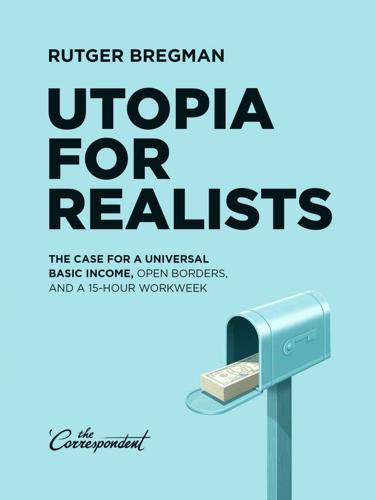
Utopia for Realists: The Case for a Universal Basic Income, Open Borders, and a 15-Hour Workweek
by
Rutger Bregman
Published 13 Sep 2014
Or compare it to electricity: All the major technological innovations happened in the 1870s, but it wasn’t until around 1920 that most factories actually switched to electric power.25 Fast forward to today, and chips are doing things that even ten years ago were still deemed impossible. In 2004 two prominent scientists authored a chapter suggestively titled “Why People Still Matter.”26 Their argument? Driving a car is something that could never be automated. Six years later, Google’s robo-cars had already covered a million miles without a mishap. Okay, one mishap – when a human decided to take the wheel. Futurologist Ray Kurzweil is convinced that by 2029 computers will be just as intelligent as people. In 2045 they might even be a billion times smarter than all human brains put together.
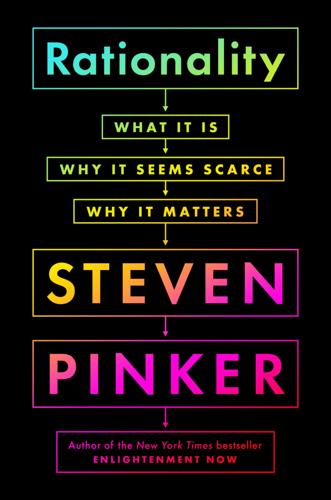
Rationality: What It Is, Why It Seems Scarce, Why It Matters
by
Steven Pinker
Published 14 Oct 2021
The human visual system is one of the wonders of the world. It is a precision instrument that can detect a single photon, recognize thousands of shapes, and negotiate rocky trails and high-speed autobahns. It outperforms our best artificial vision systems, which is why at the time of this writing autonomous vehicles have not been loosed on city streets despite decades of R&D. The vision modules of the robocars are apt to mistake a tractor trailer for a billboard, or a traffic sign plastered with stickers for a refrigerator filled with food.60 The shape and shading illusions are not bugs but features. The goal of the visual system is to provide the rest of the brain with an accurate description of the 3-D shapes and material composition of the objects in front of us.61 This is a hard problem because the information coming into the brain from the retina doesn’t reflect reality directly.
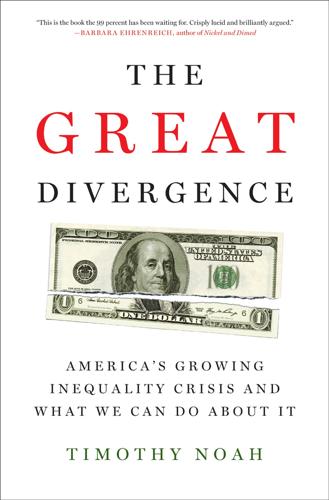
The Great Divergence: America's Growing Inequality Crisis and What We Can Do About It
by
Timothy Noah
Published 23 Apr 2012
In 2011 their MIT colleagues Erik Brynjolfsson and Andrew McAfee of the Sloan School of Management wrote that this conclusion had become obsolete by the end of 2010. In October of that year Google automated a fleet of Toyota Priuses and put them on the road (with human drivers behind the wheel as safety backups). The robocars navigated from Google’s Mountain View, California, headquarters to its Santa Monica office, taking a detour along the way to wind down San Francisco’s Lombard Street (“the crookedest street in the world”). The cars made the 350-mile trip with only a few minor human interventions. “Levy and Murnane were correct that automatic driving on populated roads is an enormously difficult task,” Brynjolfsson and McAfee conclude, “and it’s not easy to build a computer that can substitute for human perception and pattern matching in this domain.

Extreme Economies: Survival, Failure, Future – Lessons From the World’s Limits
by
Richard Davies
Published 4 Sep 2019
The staff carefully match players of a similar cognitive function and on many tables the players are so focused that the carers are hardly needed at all. Kazuko Kikuchi’s table is bubbling away and as I say goodbye the octogenarian mah-jong master summons me to her table, looking over her glasses: ‘Tell me: if the elderly in the UK don’t have Las Vegas, what on earth do they do?’ ROBO-CARER Life enters its last phases eventually, even in Japan, leaving many unable to attend day-care, and needing full-time personal nursing and observation instead. Here, the country faces another crunch. Late-stage care often requires one-on-one tasks such as feeding patients and lifting them from bed to bath.
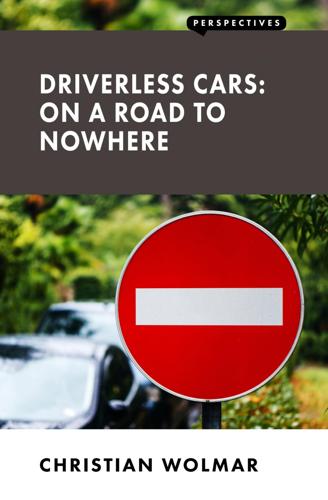
Driverless Cars: On a Road to Nowhere
by
Christian Wolmar
Published 18 Jan 2018
Without proper security systems in place, it is feasible that people could commandeer self-driving vehicles to do their bidding, which could be malicious or simply just for the thrill. This issue has been of great concern to developers of autonomous cars, and an article in the MIT Technology Review outlined details of various forms of hacking that could disrupt autonomous vehicle use: [Autonomous] vehicles will have to anticipate and defend against a full spectrum of malicious attackers wielding both traditional cyberattacks and a new generation of attacks based on so-called adversarial machine learning. 42 The author points out that one possible motive, apart from terrorism, for cyber attacks on autonomous cars would 72 Bumps in the road be anger over the widespread loss of jobs that would result from their introduction (an issue that we discuss in the next chapter).
…
Volvo has attempted to pre-empt the situation by accepting liability for any collisions involving its autonomous vehicles. This is an easy promise to make when there are no cars on the road but it might be far more difficult if there were a series of incidents that could bankrupt the company. Hacking could also cause accidents, adding complexity to the question of liability. Will autonomous cars require regular ‘patches’ to make up for security or other flaws? And if so, whose fault will it be if the patch is not installed? Even a small-scale trial involving three autonomous vehicles (with a ‘driver’ aboard) on fifteen miles of road in an older citizens’ residential village in San Jose, California was nearly killed off because of insurance concerns.
…
But politicians need to be properly informed about the risks and the potential. One potential negative is if legislators and regulators feel they have to create a framework that is favourable to autonomous cars, in the same way as happened in the early days of the motor car. There is a contradiction at the heart of the happy talk from Silicon Valley about autonomous vehicles. The introduction of autonomous cars is often presented as a liberating force, providing people with greater mobility and wider access to all kinds of services. In fact, it is obvious from all the above that any move towards universal autonomy would require radical intervention from government.
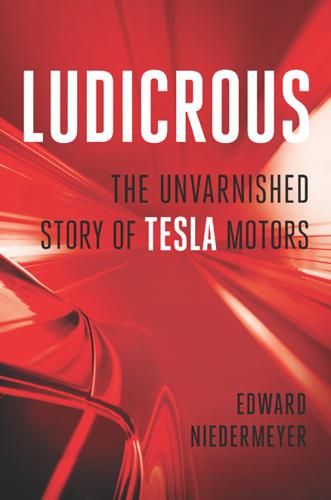
Ludicrous: The Unvarnished Story of Tesla Motors
by
Edward Niedermeyer
Published 14 Sep 2019
CNBC, May 19, 2017. https://www.cnbc.com/2017/05/19/tesla-stock-valuation-driverless-taxi.html 175Gartner released its latest “hype cycle” analysis: Mike Ramsey. “Autonomous Vehicles Fall Into the Trough of Disillusionment . . . But That’s Good.” Forbes, August 14, 2018. https://www.forbes.com/sites/enroute/2018/08/14/autonomous-vehicles-fall-into-the-trough-of-disillusionment-but-thats-good/#3b5a3c6e7b5a 176John Krafcik publicly admitted that autonomous vehicles might never work in all locations: Sam Abuelsamid. “Transition to Autonomous Cars Will Take Longer Than You Think, Waymo CEO Tells Governors.” Forbes, July 20, 2018. https://www.forbes.com/sites/samabuelsamid/2018/07/20/waymo-ceo-tells-governors-av-time-will-be-longer-than-you-think/#277b432cd7da 178reports of heavy discounts during the third quarter of 2016: Liane Yvkoff.
…
“[It is] something that I think does not reflect well upon the media. It really doesn’t. Because, and really you need to think carefully about this, because if, in writing some article that’s negative, you effectively dissuade people from using an autonomous vehicle, you’re killing people.” Musk was correct in the sense that the media’s Autopilot coverage had contributed to a death. By encouraging the hands-free use of Autopilot and heralding it as the first (sort of) autonomous car when it launched, the media had helped create the overconfidence in Autopilot’s abilities that ultimately killed Joshua Brown. If anything, the wave of negative coverage that followed Brown’s death was a long-overdue examination of the risks inherent to Tesla’s Autopilot strategy, which should have been given a more thorough airing at launch.
…
Increasingly, the entire goal of a Level 5 vehicle, capable of full autonomy anywhere, was being dismissed in favor of Level 4 vehicles, which operate fully autonomously but only in a limited “geofenced” area. By restricting the operational design domain of an autonomous car to a specific thoroughly mapped area and optimizing the system for the conditions found there, you could reduce the possible scope of edge cases to a manageable level. This retreat from the hype of 2016 isolated Tesla in an awkward contrast. Companies developing autonomous vehicles that had vastly more sophisticated sensor and compute systems than Tesla’s were saying that Level 5 was a fantasy . . . while Tesla continued to collect payments for a Level 5 system.
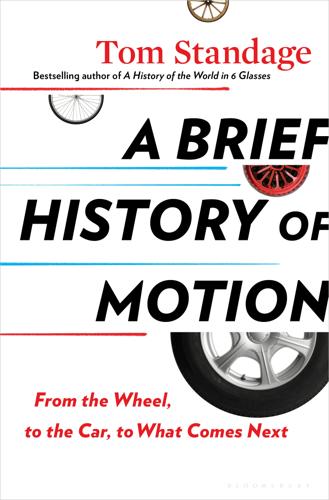
A Brief History of Motion: From the Wheel, to the Car, to What Comes Next
by
Tom Standage
Published 16 Aug 2021
“Drivers could bowl along with their hands off the wheel, free to enjoy the scenery or hug their girls.” With self-driving cars there would be no traffic and no accidents—claims that are once again being made by proponents of autonomous vehicles today. Are they right? We may soon find out because driverless cars are no longer the figment of a designer’s imagination. Fittingly, just as the modern automotive era began with the Paris–Rouen race of 1894, recent efforts to build autonomous cars also began with an unusual competition. Known as the Grand Challenge, it was organized by DARPA, America’s main military-research agency, and took place in March 2004 in the Mojave Desert.
…
But many engineers working on self-driving cars believe that semiautonomous systems are inherently dangerous because of the risk that drivers will come to trust them too much and fail to supervise them. Opponents of semiautonomy, including John Krafcik, the chief executive of Waymo, believe that it is safer to focus on building fully autonomous vehicles where passengers are never required to intervene, as his firm is doing. But such vehicles need to be able to handle absolutely any situation without human intervention, and that is a tall order. By 2020 Waymo’s fleet of autonomous cars had driven more than 20 million miles on public roads in twenty-five cities, and billions more miles in simulation. The company says its vehicles drove 1.45 million miles in California in 2019, with a disengagement rate of 0.076 per 1,000 miles (equivalent to one disengagement every thirteen thousand miles).
…
Building one that can handle that final 10 percent has turned out to be far more difficult than expected. HOW AUTONOMOUS CARS WORK Building a fully autonomous car can be broken down into three separate problems: perception (figuring out what is going on in the world), prediction (determining what will happen next), and driving policy (steering left or right, accelerating or braking). The last part, driving policy, is considered relatively simple. Perception and prediction pose the biggest challenges. Autonomous cars perceive the world using a combination of sensors including cameras, radar, and lidar—a radar-like technique that uses invisible pulses of light, rather than radio waves, to create a high-resolution 3D map of the surroundings.

Machines of Loving Grace: The Quest for Common Ground Between Humans and Robots
by
John Markoff
Published 24 Aug 2015
A young Google engineer, Anthony Levandowski, routinely commuted from Berkeley to Mountain View, a distance of fifty miles, in one of the Priuses, and Thrun himself would let a Google car drive him from Mountain View to his vacation home in Lake Tahoe on weekends. Today, partially autonomous cars are already appearing on the market, and they offer two paths toward the future of transportation—one with smarter and safer human drivers and one in which humans will become passengers. Google had not disclosed how it planned to commercialize its research, but by the end of 2013 more than a half-dozen automakers had already publicly stated their intent to offer autonomous vehicles. Indeed, 2014 was the year that the line was first crossed commercially when a handful of European car manufacturers including BMW, Mercedes, Volvo, and Audi announced an optional feature—traffic jam assist, the first baby step toward autonomous driving.
…
Stanley wasn’t driving down the freeway, so as the desert scenery slid by, it seemed increasingly unnecessary to wear crash helmets for what was more or less a Sunday drive in the country. The car was in training to compete in the Pentagon’s second Grand Challenge, an ambitious autonomous vehicle contest intended to jump-start technology planned for future robotic military vehicles. At the beginning of the twenty-first century, Congress instructed the U.S. military to begin designing autonomous vehicles. Congress even gave the Pentagon a specific goal: by 2015, one-third of the army’s vehicles were supposed to go places without human drivers present. The directive wasn’t clear as to whether both autonomous and remotely teleoperated vehicles would satisfy the requirement.
…
Because 90 percent of road accidents result from driver error, it is likely that a transition to autonomous vehicles will result in a dramatic drop in the overall number of injuries and deaths. So, clearly the greater good would be served even though there will still be a small number of accidents purely due to technological failures. In some respects, the automobile industry has already agreed with this logic. Air bags, for example, save more lives than are lost due to faulty air bag deployments. Secondly, the narrow focus of the question ignores how autonomous vehicles will probably operate in the future, when it is highly likely that road workers, cops, emergency vehicles, cars, pedestrians, and cyclists will electronically signal their presence to each other, a feature that even without complete automation should dramatically increase safety.

The Future Is Faster Than You Think: How Converging Technologies Are Transforming Business, Industries, and Our Lives
by
Peter H. Diamandis
and
Steven Kotler
Published 28 Jan 2020
The big deal here is both safety and a nearly unassailable market advantage. All that data puts Waymo far ahead of the competition. It means that our autonomous car transition hasn’t really begun and already traditional insurance companies are years behind the curve. When we combine autonomous vehicle technology with smart traffic systems and sensor-embedded roads—two developments that have already begun rolling out—transit risks don’t just plummet, they mutate. For instance, if the LIDAR sensor that’s helping steer an autonomous car goes on the blink and causes an accident, who do you blame? Not the passenger. Maybe the carmaker. Maybe the LIDAR supplier.
…
With this many cars, Waymo intends to deliver a million trips per day in 2020 (this might be ambitious but Uber currently delivers 15 million rides a day). To understand the importance of this figure or anything close to it, consider that the more miles an autonomous car drives, the more data it gathers—and data is the gasoline of the driverless world. Since 2009, Waymo’s vehicles have logged over 10 million miles. By 2020, with twenty thousand Jaguars doing hundreds of thousands of daily trips, they’ll be adding an extra million miles or so every day. All of those miles matter. As autonomous vehicles drive, they gather information: positions of traffic signs, road conditions, and the like. More information equals smarter algorithms equals safer cars—and this combination is the very edge needed for market domination.
…
But what happens over the next decade, when autonomous vehicles take to the road and change every aspect of that calculation? Right now, human error sits at the center of auto insurance. People—distractible, emotional, and sometimes irrational—are responsible for 90 percent of the 1.2 million traffic fatalities a year. Yet, without humans in the driver seat, 90 percent of that danger gets removed. For an insurance industry built on assessing risk, this alone is a huge change. Now take it a step further. Today, we insure the stuff we own. But autonomous cars shift us from car-as-property to car-as-service, removing the need for consumer-facing auto insurance altogether.
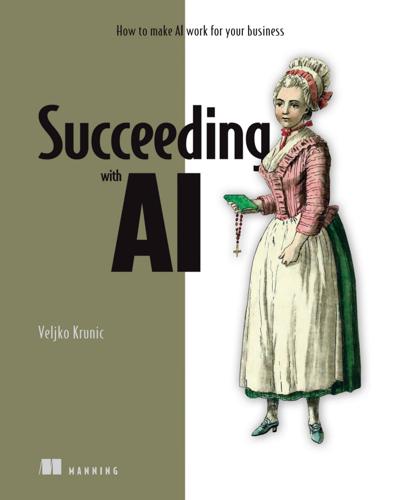
Succeeding With AI: How to Make AI Work for Your Business
by
Veljko Krunic
Published 29 Mar 2020
Those considerations are that AI could cause physical harm and that collecting data for training and improving AI needs to be done differently than when you have a nonphysical system. This section elaborates on those considerations. For example, AI is applied in physical systems to autonomous vehicles [38] and the Internet of Things (IoT) [46]. Companies ranging from Google to Tesla and Uber have autonomous driving projects. Autonomous cars aren’t possible without AI, and a fully autonomous vehicle requires capabilities superior to what AI can provide today. AI is also used to analyze data harvested from IoT devices (an example being smart thermostats such as Nest [36]). Let’s take a look at some of the related concerns. 8.2.1 First, do no harm When you’re controlling heavy metal objects moving with substantial speed, it’s imperative to keep people safe—humans are vulnerable in collisions with metal objects.
…
For example, in the case of the AI-powered autonomous vehicle [38], you’d ship the vehicle itself. Once the vehicle is delivered, an additional capability could be added to it as a software upgrade. But you’re stuck with the sensors and effectors (engine, brakes, steering mechanisms, horn, signal lights, headlights, and so forth) that are shipped with the car. Once you distribute physical systems to your customers/users, it’s often impossible (or expensive) to add the capacity to perform new actions that you didn’t envision at design time. Whatever autonomous cars we have in the future, it’s a safe bet that some of their capabilities will be fixed at the time the car is manufactured and will be difficult to change later. 2.5.3 Using AI to automate part of the business process One of the uses of AI that’s getting increasing attention in both industry and the popular press is the use of AI to perform actions that previously required humans.
…
Even then, there are significant limitations on how much the algorithm can change. While the previous approach might be acceptable if you’re building an AI for research purposes (such as an AI that learns to play old computer games better than a human [137]), such cavalier treatment of human safety doesn’t work when applied to autonomous vehicles. You can’t let an autonomous car learn to drive by letting it drive in the physical world and drive itself right off a cliff—or worse! Local vs. global models One taxonomy of AI methods divides models between those that are global versus those that are local. In the global models, there’s a limited capacity to instruct the algorithm to change the results for only a single input without affecting the results for other inputs (more on global models in section 8.5).

Right of Way: Race, Class, and the Silent Epidemic of Pedestrian Deaths in America
by
Angie Schmitt
Published 26 Aug 2020
Simon Romero, “Wielding Rocks and Knives, Arizonans Attack Self-Driving Cars,” New York Times, December 31, 2018, https://www.nytimes.com/2018/12/31/us/waymo-self-driving-cars-arizona-attacks.html. 8. Governors Highway Safety Association, “Autonomous Vehicles,” accessed February 29, 2020, https://www.ghsa.org/state-laws/issues/autonomous%20vehicles. 9. Kyle Wiggers, “Waymo’s Autonomous Cars Have Driven 20 Million Miles on Public Roads,” VentureBeat, January 6, 2020, https://venturebeat.com/2020/01/06/waymos-autonomous-cars-have-driven-20-million-miles-on-public-roads/. 10. Amri Efrati, “The Uber Whistleblower’s Email,” The Information, December 10, 2018, https://www.theinformation.com/articles/the-uber-whistleblowers-email. 11.
…
Governors like Ducey, for their part, have been relatively enthusiastic about inviting the companies to test on public streets. Autonomous car testing offers government officials an aura of tech and business friendliness—and perhaps some jobs—usually without requiring any upfront public investment. Twelve US states currently allow companies to test or market vehicles that operate without a driver.8 Google’s self-driving car operation, Waymo, claimed to have driven twenty million miles on public roads as of January 2020.9 That company already offers driverless taxi service to a small group of screened riders, who sign nondisclosure agreements, in Arizona. Uber and other autonomous vehicle companies like Arizona in part because environments like Mill Avenue—where Herzberg was struck—are so hostile to pedestrians.
…
This kind of technology could, for example, prevent red-light-running crashes by sending a signal to the vehicle and instructing it to brake after the traffic light turns red. The NHTSA has estimated that vehicle-to-vehicle communication alone could save 1,366 lives annually and prevent 615,000 injuries.44 V2V and V2I safety systems have a big potential benefit over autonomous vehicles as well: they can be installed retroactively in used cars. A safety improvement based on autonomous vehicles, by contrast, would require waiting perhaps fifteen years for the US vehicle fleet to entirely turn over. For a time a few years ago, it looked as if this kind of safety tech—V2V, V2I—was inevitable. In late 2016, the Obama administration proposed adding DSRC to all new vehicles.

The Second Machine Age: Work, Progress, and Prosperity in a Time of Brilliant Technologies
by
Erik Brynjolfsson
and
Andrew McAfee
Published 20 Jan 2014
Thomas Whelan et al., “Kintinuous: Spatially Extended KinectFusion,” n.d., http://dspace.mit.edu/bitstream/handle/1721.1/71756/MIT-CSAIL-TR-2012-020.pdf?sequence=1. 24. Brett Solomon, “Velodyne Creating Sensors for China Autonomous Vehicle Market,” Technology Tell, July 5, 2013, http://www.technologytell.com/in-car-tech/4283/velodyne-creating-sensors-for-china-autonomous-vehicle-market/. Chapter 4 THE DIGITIZATION OF JUST ABOUT EVERYTHING 1. Nick Wingfield and Brian X. Chen, “Apple Keeps Loyalty of Mobile App Developers,” New York Times, June 10, 2012, http://www.nytimes.com/2012/06/11/technology/apple-keeps-loyalty-of-mobile-app-developers.html. 2.
…
This same period is called by others the Second Industrial Revolution, which is how we’ll refer to it in later chapters. “Any sufficiently advanced technology is indistinguishable from magic.” —Arthur C. Clarke IN THE SUMMER OF 2012, we went for a drive in a car that had no driver. During a research visit to Google’s Silicon Valley headquarters, we got to ride in one of the company’s autonomous vehicles, developed as part of its Chauffeur project. Initially we had visions of cruising in the back seat of a car that had no one in the front seat, but Google is understandably skittish about putting obviously autonomous autos on the road. Doing so might freak out pedestrians and other drivers, or attract the attention of the police.
…
DARPA, the Defense Advanced Research Projects Agency, was founded in 1958 (in response to the Soviet Union’s launch of the Sputnik satellite) and tasked with spurring technological progress that might have military applications. In 2002 the agency announced its first Grand Challenge, which was to build a completely autonomous vehicle that could complete a 150-mile course through California’s Mojave Desert. Fifteen entrants performed well enough in a qualifying run to compete in the main event, which was held on March 13, 2004. The results were less than encouraging. Two vehicles didn’t make it to the starting area, one flipped over in the starting area, and three hours into the race only four cars were still operational.

Rule of the Robots: How Artificial Intelligence Will Transform Everything
by
Martin Ford
Published 13 Sep 2021
Major manufacturers including Toyota and Nissan likewise promised self-driving vehicles by 2020.56 All those predictions have now been rolled back. Urmson remains confident and said in 2019 that he expects at least “hundreds” of fully autonomous vehicles to be deployed on public roads within five years,57 and that there may be 10,000 or more such cars operating within ten years.58 My own view is that even those predictions could well turn out to be optimistic. I’d say there’s a real danger that truly autonomous cars are going to remain five years in the future for many years to come. The reality is that the routine operation of autonomous cars on both highways and in more urban environments—in other words, situations where things work more or less as expected—has largely been solved.
…
A connection achieved through eye contact, a wave of a hand, pausing midstride to wait for a driver’s acknowledgement and numerous other nuanced behaviors make up a kind of unspoken language that is somehow understood by nearly everyone who shares the road. I think it is quite possible that it may turn out that negotiating these types of interactions is simply beyond the capabilities of today’s deep learning systems. In other words, truly autonomous cars may require technology much further along the path toward general machine intelligence, and that could be a long wait. Many analysts believe that, given the difficulties faced by autonomous cars in urban settings, the first truly practical driverless vehicles to appear on our roads will be long-haul trucks. Driving on highways, after all, is a problem that has largely already been solved by systems like Tesla’s autopilot.
…
To address these issues and eventually achieve the kind of productivity increases that will finally rein in healthcare’s cost disease, I think we will have little choice except to rely far more heavily on medical machine intelligence. SELF-DRIVING CARS AND TRUCKS: A LONGER THAN EXPECTED WAIT Elon Musk’s promise of a million robotic taxis operating on roads by the end of 2020 is only the most recent example of overexuberance in the autonomous vehicle industry. Perhaps because of the centrality of the automobile to our way of life, especially in the United States, no application of artificial intelligence has been subject to as much hype and hyperbolic enthusiasm as the self-driving car. Since the industry’s emergence following the Defense Advanced Research Projects Agency (DARPA) grand challenges in 2004 and 2005, the technology has achieved astonishing progress while at the same time regularly falling short of overinflated expectations.

Street Smart: The Rise of Cities and the Fall of Cars
by
Samuel I. Schwartz
Published 17 Aug 2015
This is a nontrivial point: a system that is “only” driverless on expressways, for example, isn’t going to change behavior in large ways, since most trips are less than ten miles in length. And don’t get me started on trying to figure out who gets sued in the event of a collision between autonomous cars. Maybe more plausibly, others have wondered whether autonomous cars, by reducing the pain and misery associated with driving, will therefore make it more appealing—so appealing, in fact, as to reverse the centripetal phenomenon that is now drawing more and more people back into densely populated cities from the sprawling suburbs that attracted their parents and grandparents after the Second World War.
…
They will aid him in passing through intersections without slowing down or causing anyone else to do so and without endangering himself or others. For the next five decades, companies like RCA, General Motors, Mercedes-Benz, and others worked to bring Bel Geddes’s vision to life. For most of that time, autonomous vehicles were conceived as part of a system that traveled on dedicated roads or tracks, rather than streets, and went by the name of Personal Rapid Transit, or PRT. PRT is generally used to describe a network of small, driverless electrical vehicles—pod cars—traveling on elevated guidewaysh containing sensors and switches that can, in combination, offer point-to-point travel nearly as flexibly as an automobile, but as safely and efficiently as a subway or streetcar.
…
Google’s versions of the driverless car—refitted Toyotas, Audis, and Lexuses—combine real-time access to all that data with a laser rangefinder that creates and refreshes three-dimensional maps of the area immediately around the car. It has so far succeeded in a dozen different road tests, comprising more than seven hundred thousand autonomous miles without a single self-caused problem (one car did get rear-ended; not, one hopes, by another autonomous vehicle). Though the company admits to a number of limitations to the existing technology, including bad weather, the Google car has done a spectacular job promoting the potential of autonomous driving. For people who believe in the never-ending bounty of digital improvement it seems only a matter of a few years before Google solves the remaining technical obstacles in the path of truly autonomous driving.j (At that point, Google, which invested more than $250 million in Uber back in 2013, will be able to launch its new subsidiary, which I call Goober.)

Augmented: Life in the Smart Lane
by
Brett King
Published 5 May 2016
However, once manufacturers demonstrate the safety of self-driving car systems, it is far more likely that both passengers and legislators will start to opt in voluntarily. Some legislators will insist that autonomous vehicles must have the option for a human to “take over”, and there will no doubt be purists who try to hack around autonomous routines in some way. Moreover, we can expect lobby groups of manufacturers who fall behind in autonomous technology to attempt to muddy the waters with figures around safety. The first death of a passenger or a pedestrian by an autonomous vehicle will be a watershed moment. It is unlikely, however, to stop autonomous cars from dominating our future. Interestingly, the CEO of Volvo, Håkan Samuelsson, has already said that Volvo will accept liability when a self-driving car is involved in an accident.7 That is a big deal!
…
Other data showed that the autonomous software was much better and more consistent at maintaining a safe distance from the vehicle ahead. “We’re spending less time in near-collision states,” said Chris Urmson, the leader of Google’s autonomous car project at a robotics conference in 2013. “Our car is driving more smoothly and more safely than our trained professional drivers.” Google’s self-driving car has the most data publicly available about this incredible autonomous capability, but other car manufacturers like Tesla, Audi, BMW, Mercedes and Volvo all say similar things about the future of driving. Autonomous vehicles will most likely be significantly safer than those driven by humans within a decade or so. Giving further insight into this technology, Google has disclosed that the sensors on the Google self-driving car capture nearly 1 gigabyte (GB) of sensor data every second, and subsequently process that information to identify risks or anticipate issues that it may need to react to.
…
It is estimated that iRobot sold more than 100,000 home robots in 2015, with the Roomba 800/900 vacuum cleaner being the most popular.6 The Federal Aviation Administration (FAA) estimated that over 1 million drones were sold over the 2015 Christmas period alone.7 It is likely that we added close to 10 million robots to the global robot population just in 2015, if you include industrial robots, household robots and military application. But there are some big outliers coming in the next five to ten years, including autonomous vehicles. By 2025, it is estimated that between 15 and 20 million autonomous vehicles could be sold annually.8 By 2025, more than 1.5 billion robots will be operating on the planet, and we’ll be seeing that exponential growth curve exhibited with that number doubling every few years. By the early 2030s, robots are likely to outnumber humans.

AI 2041: Ten Visions for Our Future
by
Kai-Fu Lee
and
Qiufan Chen
Published 13 Sep 2021
Yang Juan pulled out her phone and passed it to Chamal. “Read this. How do you feel about your new title, hmm?” The headline said, “The Holy Driver: Sri Lankan Boy Saves 11 Lives Piloting Autonomous Vehicle.” The picture below was of Chamal’s silhouette, wearing his iconic helmet. ANALYSIS AUTONOMOUS VEHICLES, FULL AUTONOMY AND SMART CITIES, ETHICAL AND SOCIAL ISSUES From Knight Rider to Minority Report, science fiction has presented the arrival of autonomous vehicles (AVs) as a foregone conclusion. But AVs are actually one of the Holy Grails of artificial intelligence. Driving is a complex task with many subtasks and inputs, as well as the potential for uncertain environments and unlikely events.
…
—JIMI HENDRIX, QUOTED IN JIMI HENDRIX: A BROTHER’S STORY, BY LEON HENDRIX NOTE FROM KAI-FU: Set in Sri Lanka, “The Holy Driver” imagines a society two decades from now that is in the midst of transitioning from human drivers to autonomous driving by AI. In the story, a talented young gamer is recruited for a mysterious project—one that reveals the capacity for both humans and AI to make mistakes, but very different ones. In my commentary, I will describe how autonomous vehicles work, and how and when fully autonomous vehicles will emerge. THE WRISTWATCH BUZZED, its face blinking with an urgent red flash. It was time for Chamal to race. A regular at the VR Café, he had developed a full pre-race routine. His expression solemn, Chamal would dress himself in the skintight haptic suit, carefully comb his hair, and then place the conch-shaped helmet on his head.
…
Other questions include: How should we balance the livelihoods of millions of truck drivers against the millions of hours saved by autonomous vehicles? Is it acceptable to have interim AI that makes mistakes that human drivers would not make if, in five years, the total number of fatalities can be halved because the AI will improve after learning from billions of miles of experience? And the most fundamental question: Should we ever let a machine make decisions that may harm human lives? If the answer is no, it would put an end to autonomous vehicles. Since lives are at stake, every company must proceed with caution. There are two distinct approaches to take, each with different merits.

Radical Technologies: The Design of Everyday Life
by
Adam Greenfield
Published 29 May 2017
In his successful 2014 attempt to eliminate subsidies for mass transit in his district, Brandes argued that it was futile to invest in mass transit when an age of autonomous vehicles was dawning upon us: “It’s like they’re designing the Pony Express in the world of the telegraph.”77 Never mind that Pony Express riders historically delivered mail, packages and other things the telegraph could not have; the argument from technological inevitability is a vivid and compelling one, especially for Americans nurtured practically from birth on the belief in a gleaming technological future. If autonomous cars really are just a year or two away, why invest in modes of public transit that would surely be rendered obsolete before they even entered service?
…
The software controlling a moving vehicle must integrate in real time a highly unstable environment, engine conditions, changes in weather, and the inherently unpredictable behavior of animals, pedestrians, bicyclists, other drivers and random objects it may encounter.8 (Now the significance of those reports you may have encountered of Google pre-driving nominally autonomous vehicles through the backstreets of its Peninsular domain becomes clearer: its engineers are training their guidance algorithm in what to expect from its first environment.) For autonomous vehicles, drones, robots and other systems intended to reckon with the real world in this way, then, the grail is unsupervised deep learning. As the name implies, the algorithms involved are neither prompted nor guided, but are simply set loose on vast fields of data.
…
Or a global collective of human journalists and autonomous search agents working stories together, linked in a comradely fashion by a collaboration platform that lets them render findings vital to the public interest permanently visible. We might even join Bitcoin core developer Mike Hearn in dreaming a transhuman future in which sovereign autonomous vehicles own themselves, lease themselves to users, and transact with a marketized grid for the power they need.37 It’s not unreasonable to be intrigued by these possibilities, whatever your own politics. But if the collapse of The DAO holds any lesson for us, it’s that any envelope of potentials in which these things are possible must also necessarily contain monsters.

Wild Ride: Inside Uber's Quest for World Domination
by
Adam Lashinsky
Published 31 Mar 2017
In the summer of 2013, with his business booming yet barely three years old, Travis Kalanick confronted Uber’s own potential disruption: autonomous vehicles, also known as self-driving cars. The development was so potentially game-changing that it could eliminate the one area where Uber still relied on people. These vehicles would use rapid advancement of sensors and artificial intelligence to “see” all the obstacles and guideposts that drivers need to navigate. In theory, autonomous vehicles would be far safer, given that robots aren’t susceptible to drowsiness or distraction. While radical, there was ample precedent for the technology.
…
He lets on that this six-mile walk, always including the In-N-Out Burger stop, has become a summer-evening routine and that he typically walks it with one person he won’t identify. I later learn his walking partner is Anthony Levandowski, the ex-Google autonomous vehicles engineer who went on to found Otto, the self-driving truck company. Uber will purchase Otto just a few weeks after our walk, and Kalanick tells me he used his time with Levandowski to absorb the technology and business-plan vision for autonomous vehicles. Having spent so much time discussing Kalanick’s entrepreneurial days, I want to know how he views the bigger, more established company Uber has become. His answers betray a reluctance to think of the company that way.
…
Where the company has sufficient scale, in all its major cities, the system is so efficient that power users have begun to think the unthinkable: car ownership isn’t so necessary anymore. As well, Uber’s carpooling aspirations portend to eliminate congestion itself. If people don’t own cars and ride in them with other people more, at least in theory there would be fewer cars on the street. Should the vision of autonomous vehicles become a reality—and Uber is investing heavily in the technology—roads may become less crowded for the first time since the invention of roads. That said, it’s easy to get carried away with Uber’s promise—and Uber frequently does. Car ownership hasn’t yet declined in the United States as the result of the advent of ridesharing or for any other reason.

AI Superpowers: China, Silicon Valley, and the New World Order
by
Kai-Fu Lee
Published 14 Sep 2018
For starters, taxi, truck, bus, and delivery drivers will be largely out of luck in a self-driving world. There will also inevitably be malfunctions in autonomous vehicles that cause crashes. There will be circumstances that force an autonomous vehicle to make agonizing ethical decisions, like whether to veer right and have a 55 percent chance of killing two people or veer left and have a 100 percent chance of killing one person. Every one of these downside risks presents thorny ethical questions. How should we balance the livelihoods of millions of truck drivers against the billions of dollars and millions of hours saved by autonomous vehicles? What should a self-driving car “optimize for” in situations where it is forced to choose which car to crash into?
…
What should a self-driving car “optimize for” in situations where it is forced to choose which car to crash into? How should an autonomous vehicle’s algorithm weigh the life of its owner? Should your self-driving car sacrifice your own life to save the lives of three other people? These are the questions that keep ethicists up at night. They’re also questions that could hold up the legislation needed for autonomous-vehicle deployment and tie up AI companies in years of lawsuits. They may well lead American politicians, ever fearful of interest groups and attack ads, to pump the brakes on widespread self-driving vehicle deployment. We’ve already seen early signs of this happening, with unions representing truck drivers successfully lobbying Congress in 2017 to exclude trucks from legislation aimed at speeding up autonomous-vehicle deployment.
…
In just six months, Tesla had accumulated 47 million miles. Google and Tesla are now inching toward one another in terms of approach. Google—perhaps feeling the heat from Tesla and other rivals—accelerated deployment of fully autonomous vehicles, piloting a program with taxi-like vehicles in the Phoenix metropolitan area. Meanwhile, Tesla appears to have pumped the brakes on its rapid rollout of fully autonomous vehicles, a deceleration that followed a May 2016 crash that killed a Tesla owner who was using autopilot. But the fundamental difference in approach remains, and it presents a real tradeoff. Google is aiming for impeccable safety, but in the process it has delayed deployment of systems that could likely already save lives.

The Singularity Is Nearer: When We Merge with AI
by
Ray Kurzweil
Published 25 Jun 2024
q=B24010:%20SEX%20BY%20OCCUPATION%20FOR%20THE%20CIVILIAN%20EMPLOYED%20POPULATION%2016%20YEARS%20AND%20OVER&g=010XX00US. BACK TO NOTE REFERENCE 157 Skip Descant, “Autonomous Vehicles to Have Huge Impact on Economy, Tech Sector,” Government Technology, June 27, 2018, https://www.govtech.com/fs/automation/Autonomous-Vehicles-to-Have-Huge-Impact-on-Economy-Tech-Sector.html; Kirsten Korosec, “Intel Predicts a $7 Trillion Self-Driving Future,” The Verge, June 1, 2017, https://www.theverge.com/2017/6/1/15725516/intel-7-trillion-dollar-self-driving-autonomous-cars; Adam Ozimek, “The Massive Economic Benefits of Self-Driving Cars,” Forbes, November 8, 2014, https://www.forbes.com/sites/modeledbehavior/2014/11/08/the-massive-economic-benefits-of-self-driving-cars/#723609f53273.
…
v=-EBcpIvPWnY; Mario Herger, “2020 Disengagement Reports from California,” The Last Driver License Holder, February 9, 2021, https://thelastdriverlicenseholder.com/2021/02/09/2020-disengagement-reports-from-california; “Off Road, but Not Offline: How Simulation Helps Advance Our Waymo Driver,” Waymo, April 28, 2020, https://waymo.com/blog/2020/04/off-road-but-not-offline--simulation27; Kris Holt, “Waymo’s Autonomous Vehicles Have Clocked 20 Million Miles on Public Roads,” Engadget, August 19, 2021, https://www.engadget.com/waymo-autonomous-vehicles-update-san-francisco-193934150.html. BACK TO NOTE REFERENCE 5 Technically, “deep” neural networks may have as few as three layers, but advances in computing power over the past decade have made much deeper networks practical.
…
BACK TO NOTE REFERENCE 87 Matthew Hutson, “AI Learns the Art of Diplomacy,” Science, November 22, 2022, https://www.science.org/content/article/ai-learns-art-diplomacy-game; Yoram Bachrach and János Kramár, “AI for the Board Game Diplomacy,” DeepMind, December 6, 2022, https://www.deepmind.com/blog/ai-for-the-board-game-diplomacy. BACK TO NOTE REFERENCE 88 Ira Boudway and Joshua Brustein, “Waymo’s Long-Term Commitment to Safety Drivers in Autonomous Cars,” Bloomberg, January 13, 2020, https://www.bloomberg.com/news/articles/2020-01-13/waymo-s-long-term-commitment-to-safety-drivers-in-autonomous-cars. BACK TO NOTE REFERENCE 89 Aaron Pressman, “Google’s Waymo Reaches 20 Million Miles of Autonomous Driving,” Fortune, January 7, 2020, https://fortune.com/2020/01/07/googles-waymo-reaches-20-million-miles-of-autonomous-driving.

The Fourth Industrial Revolution
by
Klaus Schwab
Published 11 Jan 2016
All three are deeply interrelated and the various technologies benefit from each other based on the discoveries and progress each makes. 2.1.1 Physical There are four main physical manifestations of the technological megatrends, which are the easiest to see because of their tangible nature: – autonomous vehicles – 3D printing – advanced robotics – new materials Autonomous vehicles The driverless car dominates the news but there are now many other autonomous vehicles including trucks, drones, aircrafts and boats. As technologies such as sensors and artificial intelligence progress, the capabilities of all these autonomous machines improve at a rapid pace. It is only a question of a few years before low-cost, commercially available drones, together with submersibles, are used in different applications.
…
Consider the unlimited possibilities of having billions of people connected by mobile devices, giving rise to unprecedented processing power, storage capabilities and knowledge access. Or think about the staggering confluence of emerging technology breakthroughs, covering wide-ranging fields such as artificial intelligence (AI), robotics, the internet of things (IoT), autonomous vehicles, 3D printing, nanotechnology, biotechnology, materials science, energy storage and quantum computing, to name a few. Many of these innovations are in their infancy, but they are already reaching an inflection point in their development as they build on and amplify each other in a fusion of technologies across the physical, digital and biological worlds.
…
The speed of innovation in terms of both its development and diffusion is faster than ever. Today’s disruptors – Airbnb, Uber, Alibaba and the like – now household names - were relatively unknown just a few years ago. The ubiquitous iPhone was first launched in 2007. Yet there were as many as 2 billion smart phones at the end of 2015. In 2010 Google announced its first fully autonomous car. Such vehicles could soon become a widespread reality on the road. One could go on. But it is not only speed; returns to scale are equally staggering. Digitization means automation, which in turn means that companies do not incur diminishing returns to scale (or less of them, at least). To give a sense of what this means at the aggregate level, compare Detroit in 1990 (then a major centre of traditional industries) with Silicon Valley in 2014.

I, Warbot: The Dawn of Artificially Intelligent Conflict
by
Kenneth Payne
Published 16 Jun 2021
DARPA was back in the hunt for autonomous vehicles. Its ‘Grand Challenge’ required vehicles to navigate 142 miles of off-road course, entirely without human input, within ten hours. There was a $1million prize, and fifteen competitors vying for it on the starting line. But no winners. The furthest anyone got that first year was 7.5 miles. Undeterred, DARPA relaunched the competition, and scheduled a new race eighteen months later. This time there was a winner: Stanford’s ‘Stanley’, a modified VW Tuareg, led home a field of five finishers, jump-starting the modern race for commercially viable autonomous cars.2 It was a powerful demonstration of the American approach to AI—once again harnessing universities and hobbyists to the defence complex.
…
Ground combat is particularly hard for AI not just because of awkward terrain, but because it involves other humans. I’ll save a fuller discussion of the human dimension until the next chapter, when we consider the connection between autonomous cars and strategy, but for now it’s worth flagging. The major problem with autonomy for car manufacturers isn’t navigating the physical landscape but knowing how the humans in it will interact with your machine. In autonomous cars that’s an ethical issue. It is too in combat—a warbot must understand who is a combatant and who is on which side. But it’s also essential for fighting power. The machine needs to gauge how much effort is needed to win any engagement; for now it lacks that contextual understanding.
…
Another warbot commissioned in the 1970s that came to maturity in this period was the Tomahawk cruise missile, launched from the sea and able to hug terrain, before arriving precisely on target over a thousand miles distant. Still another was the land-based Patriot missile interceptor, which like the Tomahawk entered public consciousness in the 1990/1 Gulf War. All suggested highly refined autonomy—but not much intelligence. But DARPA’s lumbering effort at an autonomous vehicle pointed to the stark limits of AI in the 1980s. It was rather closer to Shakey than KITT, its fictional counterpart in the Knight Rider television series. Precision-guided missiles like Aegis and Tomahawk were polished versions of the proximity fused artillery shell—a very limited sort of intelligence.
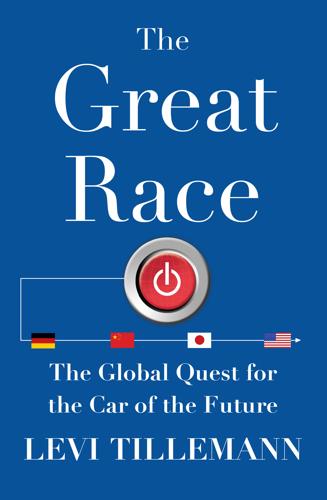
The Great Race: The Global Quest for the Car of the Future
by
Levi Tillemann
Published 20 Jan 2015
But as it approached the sharp off-ramp toward Treasure Island, Levandowski’s autonomous car slowly smooshed into a concrete barrier. The car ground to a halt, unable to move. Levandowski jumped into the car, disengaged the twitching steering column, and set it back on course for delivery. There were high-fives all around, but in reality it was a mixed success. Driving Blind But five years later, the awkward robot had transformed into a sleek, formidable, and truly autonomous driving machine. In the interim, Google had acquired the autonomous vehicles company, and management at the cash-flush Silicon Valley giant had been so impressed by the team’s results that they eventually gave them a virtually unlimited development budget.
…
For academics and policy makers it was suddenly legitimate, reasonable, and even necessary to start pondering the implications of a future with cars that drove themselves and what this might mean for automakers, cities, and countries around the world. Different people used different terminologies with various meanings to describe these robotic cars—self-driving cars, robot cars, automated vehicles, and autonomous vehicles, to name a few. However, the ultimate goal was generally understood to be a car that could drive itself. Although theirs was not the first autonomous car, Google broke the logjam. And that is why one might say that automation is not simply the next frontier, but the finishing line in the Great Race. For in some profound sense, automated cars cease to be cars. They are, instead, robots.
…
Inevitably people will worry about the safety of these robots. But it seems quite likely that autonomous vehicles will in fact be fundamentally safer. Unlike humans, they won’t get distracted by their kids fighting, or vacation plans, or a pretty face on the corner, or job stress. That’s because the car’s full-time job will be to get you to where you are going and to keep you safe. Insurance companies have already expressed interest in lowering their rates for autonomous vehicles. In fact, autonomous vehicles may end up being the most significant safety innovation since seat belts. How many uneasy teenagers have found themselves in a vehicle with an unsettlingly intoxicated classmate or friend?
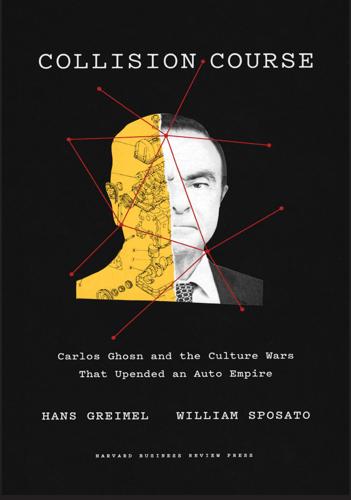
Collision Course: Carlos Ghosn and the Culture Wars That Upended an Auto Empire
by
Hans Gremeil
and
William Sposato
Published 15 Dec 2021
Ford even teamed with Domino’s pizza chain on a pilot program that had autonomous vehicles deliver hot pies to hungry customers. Old-school automakers worldwide no longer saw a future in actually building cars and frantically tried to reposition themselves as “new mobility” companies. Bob Lutz, the former General Motors vice chairman who pooh-poohed the idea of saving Nissan from bankruptcy, penned a provocative vision of the coming collision in an essay for Automotive News called “Kiss the Good Times Goodbye.” Human-driven cars would be “legislated off the highways” as the safety of autonomous vehicles exceeded that of the traditional hand-piloted kind.
…
See also EV Asahara, Shoko, 265 Asahi Shimbun (newspaper) on altered evidence in Muraki case, 165–166 on traditional Japanese corporate perspective, 32 video of Ghosn’s arrest, 7–8 auto industry worldwide sales, 75–76 Automotive News Ashwani Gupta interview, 259 on autonomous vehicles, 87 Carlos Ghosn interviews, 29, 45, 89, 100, 140–141, 199, 261 Carole Ghosn interviews, 178–179, 184 Ghosn as “Industry Leader of the Year” for 2000, 2001, and 2003, 46 Hiroto Saikawa interview, 260 Makoto Uchida interview, 312 Nissan Revival Plan, coverage of, 20 autonomous vehicles, 261, 311, 313 Automotive News coverage of, 87 Ghosn’s focus on, 75, 81, 249 See also ProPilot AvtoVAZ, 3, 88 Bahwan, Suhail, 130. See also SBA Barra, Mary, 58 Beirut, Lebanon January 2019, press conference, 284 unrest in, 281 video interview from, 324 Berlin, Mitch, 204 Blackburn, Marsha, 298 Bloomberg News, 126, 292 Bolloré, Thierry, 12, 138, 190, 193, 231–232 CAFE (Corporate Average Fuel Economy) standard, 76 Calderwood, Chris, 60–61 Casanova, Sarah, 67 Chief Executive Magazine, on risks for Western CEOs in Japan, 305 Chirac, Jacques, 109 Churchill, Winston, 70 CMF (Common Module Family) system, 78 consolidation trend, 85, 88–89, 312, 313 Honda with General Motors, 312 and Power 88 plan, 311 PSA Group with FCA to form Stellantis, 311 Toyota (including Daihatsu, Hino), 311 Volkswagen Group (including Bentley, Bugatti, Lamborghini, SEAT, Škoda, Porsche, Scania, MAN, Audi), 311 Convention of Kanagawa (1854), 34 Corporate Average Fuel Economy standard.
…
Ghosn expected the balance of Nissan’s global business to flip—from 40 percent emerging markets and 60 percent mature markets in 2007 to 60 percent emerging markets in 2017. In new technologies, Ghosn wanted Nissan and Renault to sell a combined 1.5 million electric vehicles. Nissan and Renault would offer as many as seven new electric vehicles (EVs) in addition to the Leaf, including a luxury all-electric from Infiniti. Later, Ghosn would add autonomous vehicles to his lofty to-do list. To get there, Nissan would embark on a sweeping building blitz of factories and new assembly lines in China, India, Brazil, Mexico, and Indonesia. Nissan would also revive defunct Datsun as a low-cost entry brand to help it break into new markets. And Nissan would throw into overdrive investment into electric cars in Ghosn’s bid to steal an early lead on rivals in this nascent, but costly, technology.

Human Compatible: Artificial Intelligence and the Problem of Control
by
Stuart Russell
Published 7 Oct 2019
In 1987, Ernst Dickmanns demonstrated a self-driving Mercedes van on the autobahn in Germany; it was capable of staying in lane, following another car, changing lanes, and overtaking.3 More than thirty years later, we still don’t have a fully autonomous car, but it’s getting much closer. The focus of development has long since moved from academic research labs to large corporations. As of 2019, the best-performing test vehicles have logged millions of miles of driving on public roads (and billions of miles in driving simulators) without serious incident.4 Unfortunately, other autonomous and semi-autonomous vehicles have killed several people.5 Why has it taken so long to achieve safe autonomous driving? The first reason is that the performance requirements are exacting.
…
Forecast of economic effects of automation on transportation costs: Adele Peters, “It could be 10 times cheaper to take electric robo-taxis than to own a car by 2030,” Fast Company, May 30, 2017. 8. The impact of accidents on the prospects for regulatory action on autonomous vehicles: Richard Waters, “Self-driving car death poses dilemma for regulators,” Financial Times, March 20, 2018. 9. The impact of accidents on public perception of autonomous vehicles: Cox Automotive, “Autonomous vehicle awareness rising, acceptance declining, according to Cox Automotive mobility study,” August 16, 2018. 10. The original chatbot: Joseph Weizenbaum, “ELIZA—a computer program for the study of natural language communication between man and machine,” Communications of the ACM 9 (1966): 36–45. 11.
…
Some projects are trying more direct approaches based on reinforcement learning (mainly in simulation, of course) and supervised learning from recordings of hundreds of human drivers, but these approaches seem unlikely to reach the required level of safety. The potential benefits of fully autonomous vehicles are immense. Every year, 1.2 million people die in car accidents worldwide and tens of millions suffer serious injuries. A reasonable target for autonomous vehicles would be to reduce these numbers by a factor of ten. Some analyses also predict a vast reduction in transportation costs, parking structures, congestion, and pollution. Cities will shift from personal cars and large buses to ubiquitous shared-ride, autonomous electric vehicles, providing door-to-door service and feeding high-speed mass-transit connections between hubs.7 With costs as low as three cents per passenger mile, most cities would probably opt to provide the service for free—while subjecting riders to interminable barrages of advertising.

System Error: Where Big Tech Went Wrong and How We Can Reboot
by
Rob Reich
,
Mehran Sahami
and
Jeremy M. Weinstein
Published 6 Sep 2021
In the context of autonomous cars, the problem asks whether a vehicle should be programmed to endanger or sacrifice the life of its sole passenger by running off the road in order to avoid potentially hitting five pedestrians crossing the road. As a society, we might prefer that the vehicle pick the option that saves the most lives. Accordingly, most participants in a 2016 survey preferred that such vehicles be programmed to minimize casualties on the road generally. But the same survey showed that when participants were asked to be a passenger—that is, potential purchaser—of an autonomous vehicle, “they would themselves prefer to ride in AVs that protect their passengers at all costs.”
…
Reflecting on the race, Thrun crowed, “It’s a no-brainer that 50 to 60 years from now, cars will drive themselves.” His estimate was far too pessimistic. In 2020, at least thirty different countries were testing autonomous vehicles on their roads. California alone licensed more than fifty companies and more than five hundred autonomous vehicles, logging more than 2 million miles. One of the primary motivations for the commercial development of autonomous vehicles is their potential for improving road safety. The World Health Organization estimates that there were 1.25 million road traffic deaths globally in 2013. In 2017, 37,133 people were killed in motor vehicle crashes in the United States alone, and more than 90 percent of those crashes involved human error.
…
The upshot is the common conviction that technological progress is rolling over us with the wheels of inevitability. Ordinary people can’t undo technological discoveries and innovations, and they can’t shape the products we buy or the effects of technology across society. What can a truck driver whose job may be replaced by autonomous vehicles do? What can a parent do about the apps a child is transfixed by, short of taking the phone out of the child’s hands? What can an employee do about the deployment of facial recognition at the office? What can a citizen do about the spread of disinformation on the platforms that deliver us news and information?

Architects of Intelligence
by
Martin Ford
Published 16 Nov 2018
How far off are they really? Imagine you’re in a city and you’re going to call for a fully autonomous car that will take you from one random location to another. What’s the time frame for when you think that becomes a widely available service? ANDREW NG: I think that self-driving cars in geofenced regions will come relatively soon, possibly by the end of this year, but that self-driving cars in more general circumstances will be a long way off, possibly multiple decades. MARTIN FORD: By geofenced, you mean autonomous cars that are running essentially on virtual trolley tracks, or in other words only on routes that have been intensively mapped?
…
We’re not aware of doing much randomization in our normal day-to-day lives, even though—for sure—the world is full of agents; so it ought to be game-theoretic, and yet we’re not aware of randomizing very much in our day-to-day lives. MARTIN FORD: Self-driving cars are one of the highest-profile applications of AI. What is your estimate for when fully autonomous vehicles will become a truly practical technology? Imagine you’re in a random place in Manhattan, and you call up an Uber, and it’s going to arrive with no one in it, and then it will take you to another random place that you specify. How far off is that realistically, do you think? STUART J. RUSSELL: Yes, the timeline for self-driving cars is a concrete question, and it’s also an economically important question because companies are investing a great deal in these projects.
…
In fact in the last year we’ve started to get a ton of inbound interest from the automotive industry. It’s really exciting because it’s a major market opportunity for Affectiva and we’re solving two interesting problems for the car industry. In the cars of today, where there is an active driver, safety is a huge issue. And safety will continue to be an issue, even when we have semi-autonomous vehicles like Tesla that can drive themselves for a while but do still need a co-pilot to be paying attention. Using Affectiva software, we’re able to monitor the driver or the co-pilot for things like drowsiness, distraction, fatigue and even intoxication. In the case of intoxication, we would alert the driver or also even potentially have the car intervene.
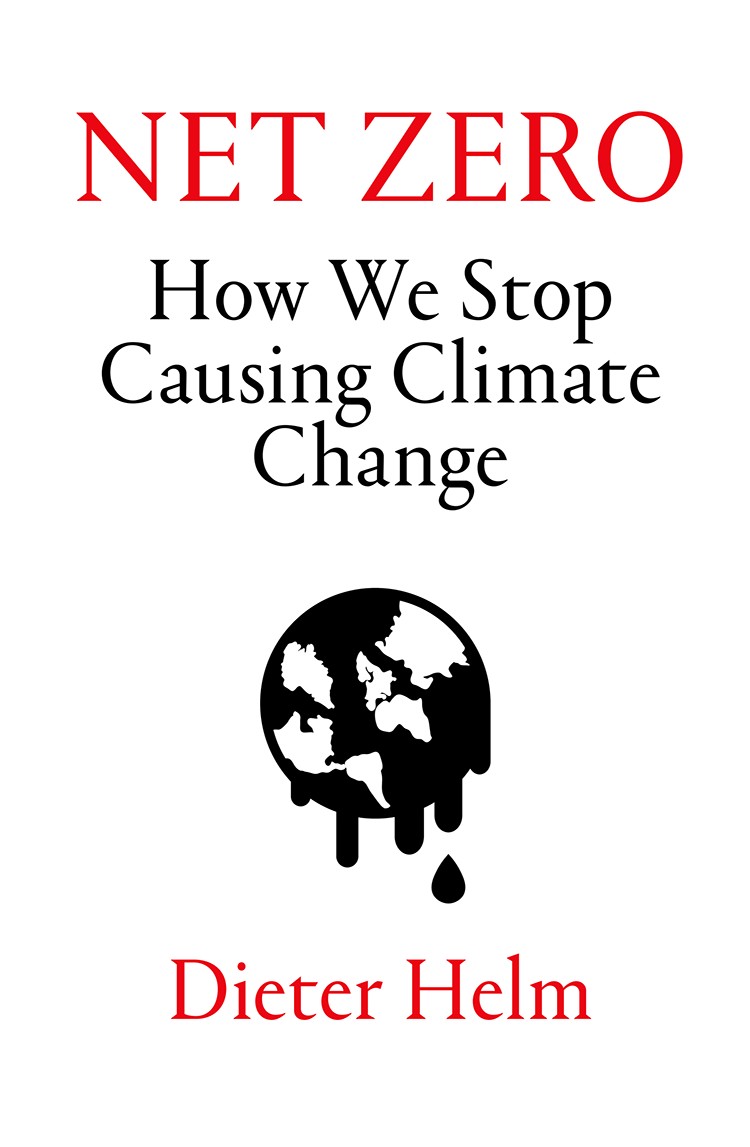
Net Zero: How We Stop Causing Climate Change
by
Dieter Helm
Published 2 Sep 2020
People rarely worry what type of car a taxi or Uber driver uses when summoning one, and when calling up an autonomous vehicle on an app, programming it to take you from A to B, you may not really care what sort of battery it has got. The market may respond to this. Suppose what matters to you for this A to B trip is the price. An autonomous vehicle provider (and not you) will own the car and will have powerful incentives to standardise the technologies of its fleet. It may see an advantage in battery swapping back at the autonomous car depot, or perhaps as part of the optimised journey timing and use. This is what the car companies fear. They may not be able to extract the economic rents that go with advertising and branding. They may simply sell thousands of identical cars to a car pool company, with the capital provided by an infrastructure fund, and then the economic value comes in the convenience and frequency of the autonomous vehicle’s availability, and not from packing it with all sorts of extras that the customer might not need.
…
It looks like we are going down the route of a mix of home charging and rapid charging, and the result will be a much greater cost to decarbonisation. Choice comes at a price. It might improve as autonomous vehicles come onto the road systems. If the car is autonomous and guided by smart systems, it may be that there is a shift in our relationship with the car, from the huge variety of styles, engines, colours, designs and interiors, towards seeing it as merely a way of getting from A to B. People rarely worry what type of car a taxi or Uber driver uses when summoning one, and when calling up an autonomous vehicle on an app, programming it to take you from A to B, you may not really care what sort of battery it has got.
…
The reason this smart technology is not in place is because the communications infrastructure is not up to the job, and nor will it be for the whole country for perhaps another decade. You cannot run a smart meter or enable your smart devices unless you have good internet and mobile connectivity. The road system is designed entirely around petrol and diesel vehicles. It is anything but smart, and incapable of supporting the roll-out of smart cars and autonomous vehicles. Charging points for electric vehicles are still notable by their absence even in major conurbations. Where they are available, the roads are often so congested that getting to a charge point can be a challenge in itself. The oil companies have not developed a retail petrol and diesel network designed around the electricity grid, for the very good reason that it has been irrelevant.
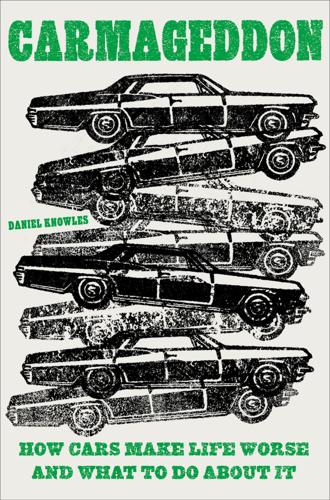
Carmageddon: How Cars Make Life Worse and What to Do About It
by
Daniel Knowles
Published 27 Mar 2023
In that Wall Street Journal interview, in which he described automated cars as one of the most transformational technologies human civilization is likely to invent, he went on to argue that they will also force America to come up with “something to deal with extreme traffic,” he said. “As autonomous vehicles come to the fore, and it’s easier to drive without going through the pain of having to drive yourself . . . there will be more cars on the road and the traffic will get much worse.” He was quite right. And not even alone among car executives in realizing it. Bill Ford, the executive chairman of the Ford Motor Company, of all people, has also warned that autonomous vehicles could create “global gridlock” by 2050. “Our infrastructure cannot support such a large volume of vehicles without creating massive congestion,” he wrote in a newspaper opinion piece in 2014.
…
Already, this is used as an argument for why investment in new public transport, such as trains, is redundant. In Britain Matt Ridley, a Conservative member of the House of Lords who was chairman of Northern Rock, the only British bank to suffer a bank run in more than a century, is among those who reckon that HS2, Britain’s new high-speed railway, will quickly be made redundant by autonomous vehicles. So too do the Taxpayers’ Alliance, a group that opposes any government spending on anything. In the immediate term, the problem with this is that despite decades of development, autonomous driving technology has scarcely improved enough to navigate normal suburban streets at 30 miles per hour.
…
Sam Schwartz imagines businessmen taking meetings in Manhattan sending their cars to drive around in circles rather than find a parking space. As the technology gets cheaper, more and more people will buy them, and use them for ever more outlandish things. It will be chaos. Jevons paradox will win again. And yet, inevitably perhaps, given he is a car executive, Musk does not think that this means we should not all buy autonomous vehicles. Rather, the solution, apparently, is “some combination of tunnels and double-deckering freeways.” He did admit that “flying cars” are not the answer, because people do “not want the skies to be swarming with helicopters.” On that he is right, despite the vast sums of money being poured into the development of “flying cars” using the sort of quadcopter technology now used for smaller drones.

21 Lessons for the 21st Century
by
Yuval Noah Harari
Published 29 Aug 2018
Fagnant and Kara Kockelman, ‘Preparing a Nation for Autonomous Vehicles: Opportunities, Barriers and Policy Recommendations’, Transportation Research Part A: Policy and Practice 77 (2015), 167–81; for a general worldwide survey, see, for example: OECD/ITF, Road Safety Annual Report 2016 (Paris: OECD, 2016). 8 Kristofer D. Kusano and Hampton C. Gabler, ‘Safety Benefits of Forward Collision Warning, Brake Assist, and Autonomous Braking Systems in Rear-End Collisions’, IEEE Transactions on Intelligent Transportation Systems 13:4 (2012), 1546–55; James M. Anderson et al., Autonomous Vehicle Technology: A Guide for Policymakers (Santa Monica: RAND Corporation, 2014), esp. 13–15; Daniel J.
…
Anderson et al., Autonomous Vehicle Technology: A Guide for Policymakers (Santa Monica: RAND Corporation, 2014), esp. 13–15; Daniel J. Fagnant and Kara Kockelman, ‘Preparing a Nation for Autonomous Vehicles: Opportunities, Barriers and Policy Recommendations’, Transportation Research Part A: Policy and Practice 77 (2015), 167–81; Jean-François Bonnefon, Azim Shariff and Iyad Rahwan, ‘Autonomous Vehicles Need Experimental Ethics: Are We Ready for Utilitarian Cars?’, arXiv (2015), 1–15. For suggestions for inter-vehicle networks to prevent collision, see: Seyed R. Azimi et al., ‘Vehicular Networks for Collision Avoidance at Intersections’, SAE International Journal of Passenger Cars – Mechanical Systems 4:1 (2011), 406–16; Swarun Kumar et al., ‘CarSpeak: A Content-Centric Network for Autonomous Driving’, SIGCOM Computer Communication Review 42:4 (2012), 259–70; Mihail L.
…
Gabler, ‘Safety Benefits of Forward Collision Warning, Brake Assist, and Autonomous Braking Systems in Rear-End Collisions’, IEEE Transactions on Intelligent Transportation Systems 13:4 (2012), 1546–55; James M. Anderson et al., Autonomous Vehicle Technology: A Guide for Policymakers (Santa Monica: RAND Corporation, 2014), esp. 13–15; Daniel J. Fagnant and Kara Kockelman, ‘Preparing a Nation for Autonomous Vehicles: Opportunities, Barriers and Policy Recommendations’, Transportation Research Part A: Policy and Practice 77 (2015), 167–81. 20 Tim Adams, ‘Job Hunting Is a Matter of Big Data, Not How You Perform at an Interview’, Guardian, 10 May 2014. 21 For an extremely insightful discussion, see Cathy O’Neil, Weapons of Math Destruction: How Big Data Increases Inequality and Threatens Democracy (New York: Crown, 2016).

Road to Nowhere: What Silicon Valley Gets Wrong About the Future of Transportation
by
Paris Marx
Published 4 Jul 2022
Duhigg’s report appeared in the New Yorker in 2018, at a time when the shine was already coming off the dream of autonomous vehicles and the hype machine was in free fall. But had that information been in the public domain years earlier when Brin was building the hype in the first place, the perception of autonomous vehicles and their capabilities could have been very different. Instead, we were treated to years of news cycles that helped create the myth that ubiquitous self-driving vehicles would solve all our transport problems, to such a degree that libertarian groups funded by the billionaire Koch brothers used the promise of autonomous vehicles to attack plans to expand public transit systems in the United States.
…
In the same way that automobiles required a social reconstruction in addition to a physical reconstruction, so too will autonomous vehicles—and some people involved with them have already admitted it. As the date when autonomous vehicles were supposed to arrive came and went, and the challenges facing the technology became apparent both to those in the industry who were trying to make progress with their driving systems and to the public who began to see a growing number of stories about autonomous vehicles crashing in troubling ways, some experts started to discuss how more than just a smart AI would be necessary to bring their fantasies to life.
…
Safety isn’t just about the quality of the AI technology.”15 What Ng described was a far cry from what people like Brin or Musk were saying autonomous vehicles would do. Instead of detecting anything around them, Ng’s response suggested that social norms and pedestrian behavior would once again have to be altered to make way for autonomous vehicles. The police will be necessary to ensure that people follow the new rules, reflecting how enforcing regulations on automobiles vastly expanded the powers of the police in the twentieth century. In the aftermath, there were autonomous vehicle advocates who rejected Ng’s comments, but his admission is a more realistic assessment of what will be required to make self-driving cars “work” in any meaningful way than the much more common utopian visions.
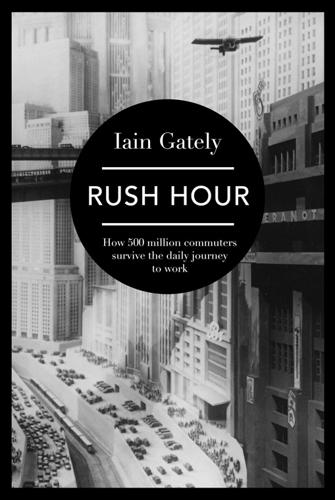
Rush Hour: How 500 Million Commuters Survive the Daily Journey to Work
by
Iain Gately
Published 6 Nov 2014
According to its twelfth five-year plan for transportation, it will spend US$787.4 billion on building roads between 2011 and 2015, or about the same as the GDP of Holland. While commuting by motorcar looks set to stay for the foreseeable future, there may be significant changes in the way it’s carried out. Although more and more people will be using cars to get to work, it may be as passengers rather than drivers. Driverless or autonomous vehicles have been on futurologists’ radars for longer than telecommuting. The first recorded example was the Achen Motor Company’s ‘phantom motor car’, which it promised to drive around the streets of Milwaukee by radio control in December 1926. The Milwaukee Sentinel waxed lyrical over the ‘ghost’: ‘Driverless, it will start its own motor, throw its clutch, twist its steering wheel, toot its horn, and it may even “sass” the policeman at the corner.’
…
Their business model relied on people loving driving themselves, if nothing else for the freedom it offered, and they were happy to let the idea of driverless vehicles sleep. However, it was revived by the American military after the 2003 Iraq War. Why send a soldier as well as a vehicle through a minefield? The Defense Advanced Research Projects Agency (DARPA), part of the US Department of Defense – hoping to inspire the creation of autonomous vehicles that might have martial applications – staged the DARPA Grand Challenges of 2004 and 2005, and the Urban Challenge of 2007, which offered million-dollar prizes and grants to teams who could create effective driverless cars. Various universities built entries, and while none met the challenge in 2004, four succeeded in 2005 and there were as many winners in the urban event.
…
The World Health Organization estimates that 1.3 million people die in traffic accidents every year, and a further 50 million are maimed or crippled. Most accidents are caused by human error. If motorcars could detect each other, could communicate among themselves, and might be programmed to avoid collisions, then rush hours would be far safer. Google, which is leading research in autonomous vehicles, is also motivated by safety. Its informal corporate motto is ‘Don’t be Evil’, and it believes that driverless cars will end the global carnage on the roads that claims more victims each year than warfare. In the same speech in which CFO Patrick Pichette dismissed telecommuting, he also stated that, in an ideal world, ‘nobody should be driving cars… Look at factorial math and probabilities of everything that could go wrong, times the number of cars out there… That’s why you have gridlock… It makes no sense to make people drive cars.’

The Economic Singularity: Artificial Intelligence and the Death of Capitalism
by
Calum Chace
Published 17 Jul 2016
It argued instead for the etymologically purer “motor-car”.[clxxxi] Perhaps we will contract the phrase “autonomous vehicle”, and call them “autos”. Some people are going to hate self-driving cars, whatever they are called: petrol-heads like Jeremy Clarkson are unlikely to be enthusiastic about the objects of their devotion being replaced by machines with all the romance of a horizontal elevator. Some people are already describing a person who has been relegated from driver to chaperone as a “meat puppet”.[clxxxii] The US Department of Transport draws a distinction between (partly) autonomous cars and (fully) self-driving cars.[clxxxiii] The former still have steering wheels, and require a human driver to take over when they encounter a tricky situation.
…
utm_source=Twitter&utm_medium=tweet&utm_campaign=@KyleSGibson [clxxvi] The Flynn Effect: http://www.bbc.co.uk/news/magazine-31556802 [clxxvii] WHO "Global Status Report on Road Safety 2013: supporting a decade of action [clxxviii] http://www.japantimes.co.jp/news/2015/11/15/business/tech/human-drivers-biggest-threat-developing-self-driving-cars/#.Vo7D5fmLRD8 [clxxix] http://www.theatlantic.com/business/archive/2013/02/the-american-commuter-spends-38-hours-a-year-stuck-in-traffic/272905/ [clxxx] http://www.reinventingparking.org/2013/02/cars-are-parked-95-of-time-lets-check.html [clxxxi] http://www.etymonline.com/index.php?term=autocar [clxxxii] http://www.digitaltrends.com/cars/audi-autonomous-car-prototype-starts-550-mile-trip-to-ces/ [clxxxiii] http://www.nhtsa.gov/About+NHTSA/Press+Releases/U.S.+Department+of+Transportation+Releases+Policy+on+Automated+Vehicle+Development [clxxxiv] http://www.reuters.com/investigates/special-report/autos-driverless/ [clxxxv] http://www.wired.com/2015/04/delphi-autonomous-car-cross-country/ [clxxxvi] http://recode.net/2015/03/17/google-self-driving-car-chief-wants-tech-on-the-market-within-five-years/ [clxxxvii] http://techcrunch.com/2015/12/22/a-new-system-lets-self-driving-cars-learn-streets-on-the-fly/ [clxxxviii] http://cleantechnica.com/2015/10/12/autonomous-buses-being-tested-in-greek-city-of-trikala/ [clxxxix] http://www.bloomberg.com/news/articles/2015-12-16/google-said-to-make-driverless-cars-an-alphabet-company-in-2016 [cxc] http://electrek.co/2015/12/21/tesla-ceo-elon-musk-drops-prediction-full-autonomous-driving-from-3-years-to-2/ [cxci] http://venturebeat.com/2016/01/10/elon-musk-youll-be-able-to-summon-your-tesla-from-anywhere-in-2018/ [cxcii] https://www.washingtonpost.com/news/the-switch/wp/2016/01/11/elon-musk-says-teslas-autopilot-is-already-probably-better-than-human-drivers/ [cxciii] http://electrek.co/2016/04/24/tesla-autopilot-probability-accident/ [cxciv] http://www.bbc.co.uk/news/technology-35280632 [cxcv] http://www.zdnet.com/article/ford-self-driving-cars-are-five-years-away-from-changing-the-world/ [cxcvi] http://www.reuters.com/investigates/special-report/autos-driverless/ [cxcvii] http://www.wired.com/2015/12/californias-new-self-driving-car-rules-are-great-for-texas/ [cxcviii] http://www.reuters.com/investigates/special-report/autos-driverless/ [cxcix] It has been suggested that electric cars should make noises so that people don’t step off the pavement in front of them.
…
[cxcii] In April 2016 he went further, claiming that Tesla’s autopilot system was already reducing the number of accidents by 50% - where an accident meant an incident where an airbag was deployed.[cxciii] Ford reported success in January 2016 with tests of its self-driving car in snowy conditions. Unable to determine its location by the obscured road markings, it navigates by using buildings and other above-ground features.[cxciv] In May 2016 an executive in Ford’s autonomous vehicle team estimated that the remaining technological hurdles would be overcome within five years, although adoption would of course take longer. He said the amount of computing power each car currently required was “about the equivalent of five decent laptops.”[cxcv] At the time of writing, the only accident which a Google self-driving car might be blamed for happened in February 2016.
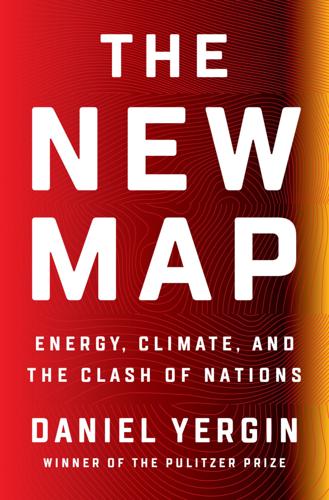
The New Map: Energy, Climate, and the Clash of Nations
by
Daniel Yergin
Published 14 Sep 2020
Burns reflected that “there haven’t really been any disruptive innovations in that time.” And he kept thinking, “That’s true of very few industries.” Autonomous cars could be a big part of the answer to Wagoner’s question—if they could work. Burns was also gripped by what he saw as the “most important sustainability issue faced by automobiles”—not energy or emissions, but a deadly epidemic in which 1.2 million people a year globally died in auto accidents. Autonomous vehicles might be able to virtually eliminate crashes. That was one of the main reasons why Burns hooked GM up with Whittaker and the robotics group at Carnegie Mellon.6 And in this third Grand Challenge, held on the deserted air base in Victorville, Carnegie Mellon won—by twenty minutes.
…
He had gone on to pioneer what became known as “probabilistic robotics,” which combines statistics to deal with the uncertainty that robots face in real-world settings. Thrun’s goal now was to create a vehicle with “the brainpower to make all the decisions along the way.” His interest in autonomous vehicles arose, he said, because he was “curious about human intelligence.” He also once explained that his “passion for cars that drive themselves” arose from traffic jams. “I feel I’ve lost a year or two just in traffic,” he explained. Thrun’s quest for an autonomous vehicle that would make driving safer had a personal dimension; his best friend had been killed in a car crash at age eighteen.3 Carnegie Mellon fielded two burly military-style vehicles.
…
Many things were thrown overboard, including, at GM, the joint research program with Carnegie Mellon. But there were others, across the country in Silicon Valley, who were not short of money. Google was already at work on autonomous vehicles, with Sebastian Thrun in the lead. Google’s effort—“Project Chauffeur”—was housed in a separate building. “No one at Google had a clue we existed for a year and a half,” said Thrun. As part of their work on autonomous vehicles, they posted 360-degree cameras on the roofs of the cars. This generated the idea for Google Street View, with the ambition of photographing every street in the world. In 2010, with a blog post from Sebastian Thrun—“we have developed technology for cars that can drive themselves”—Google went public with the stunning news that it was working on the autonomous car.

Give People Money
by
Annie Lowrey
Published 10 Jul 2018
Add in enough of those options, along with some advanced sensors and thousands of lines of code, and you end up with an autonomous car that can pilot itself from origin to destination. Soon enough, cars, trucks, and taxis might be able to do so without a driver in the vehicle at all. This technology has gone from zero to sixty—forgive me—in only a decade and a half. Back in 2002, the Defense Advanced Research Projects Agency, part of the Department of Defense and better known as DARPA, announced a “grand challenge,” an invitation for teams to build autonomous vehicles and race one another on a 142-mile desert course from Barstow, California, to Primm, Nevada.
…
Analysts have thus excitedly described this new technological frontier as a “gold rush” for the industry. Autonomous cars are expected to considerably expand the global market, with automakers anticipating selling 12 million vehicles a year by 2035 for some $80 billion in revenue. Yet to many, the driverless car boom does not seem like a stimulus, or the arrival of a long-awaited future. It seems like an extinction-level threat. Consider the fate of workers on industrial sites already using driverless and autonomous vehicles, watching as robots start to replace their colleagues. “Trucks don’t get pensions, they don’t take vacations.
…
in part because Americans were driving less: Elisabeth Rosenthal, “The End of Car Culture,” New York Times, June 29, 2013. young folks…were still so cash-strapped: Jordan Weissmann, “Why Don’t Young Americans Buy Cars?,” Atlantic, Mar. 25, 2012. 12 million vehicles a year by 2035: “Autonomous Vehicle Adoption Study,” Boston Consulting Group, Jan. 2015, https://www.bcg.com/en-us/industries/automotive/autonomous-vehicle-adoption-study.aspx. “Trucks don’t get pensions”: Kim Trynacity, “Oilsands Workers Worry Driverless Trucks Will Haul Away Their Jobs,” CBC News, Nov. 3, 2016. between 2.2 and 3.1 million jobs: Executive Office of the President, Artificial Intelligence, Automation, and the Economy (Washington, DC, Dec. 2016).
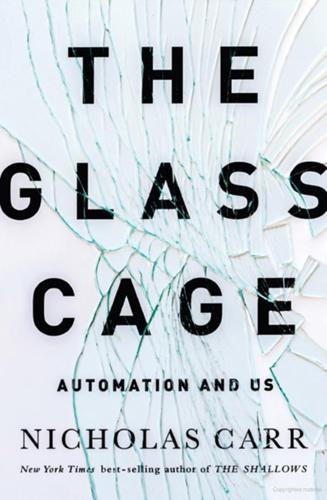
The Glass Cage: Automation and Us
by
Nicholas Carr
Published 28 Sep 2014
Until such thorny questions get sorted out, fully automated cars are unlikely to grace dealer showrooms. Progress will sprint forward nonetheless. Much of the Google test cars’ hardware and software will come to be incorporated into future generations of cars and trucks. Since the company went public with its autonomous vehicle program, most of the world’s major carmakers have let it be known that they have similar efforts under way. The goal, for the time being, is not so much to create an immaculate robot-on-wheels as to continue to invent and refine automated features that enhance safety and convenience in ways that get people to buy new cars.
…
What if there was an oncoming vehicle in the other lane? What if that vehicle was a school bus? Isaac Asimov’s first law of robot ethics—“a robot may not injure a human being, or, through inaction, allow a human being to come to harm”1—sounds reasonable and reassuring, but it assumes a world far simpler than our own. The arrival of autonomous vehicles, says Gary Marcus, the NYU psychology professor, would do more than “signal the end of one more human niche.” It would mark the start of a new era in which machines will have to have “ethical systems.”2 Some would argue that we’re already there. In small but ominous ways, we have started handing off moral decisions to computers.
…
Within a week, a consortium of other Wall Street firms bailed Knight out to avoid yet another disaster in the financial industry. Technology improves, of course, and bugs get fixed. Flawlessness, though, remains an ideal that can never be achieved. Even if a perfect automated system could be designed and built, it would still operate in an imperfect world. Autonomous cars don’t drive the streets of utopia. Robots don’t ply their trades in Elysian factories. Geese flock. Lightning strikes. The conviction that we can build an entirely self-sufficient, entirely reliable automated system is itself a manifestation of automation bias. Unfortunately, that conviction is common not only among technology pundits but also among engineers and software programmers—the very people who design the systems.
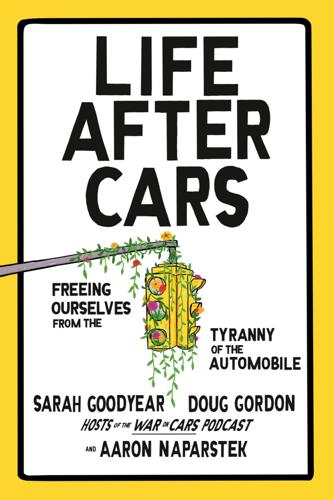
Life After Cars: Freeing Ourselves From the Tyranny of the Automobile
by
Sarah Goodyear
,
Doug Gordon
and
Aaron Naparstek
Published 21 Oct 2025
That doesn’t mean we shouldn’t pursue electrification aggressively, but we should be focusing on reducing the need for car ownership in the first place, while also electrifying public transit and delivery vehicles rather than unquestioningly buying into yet another naive fantasy of harm-free personal motor vehicle transport as salvation. As for autonomous vehicles, they may well prove to be much safer than human drivers—although the vision promoted by their boosters gets pushed further into the future each year and with each failure of the technology to even begin to match human perception and reaction. And AVs come with their own set of unintended consequences. Just ask the San Francisco neighbors of a parking lot where Waymo cars shuffled around all night, honking when they back up to let each other pass. Autonomous cars at scale will require highly regulated, predictable streetscapes—exactly the kind of life-crushing, soul-destroying road hells that make humans and other animals want to pass through at high speed rather than linger.
…
GO TO NOTE REFERENCE IN TEXT “examines how transportation”: “America on the Move,” Smithsonian National Museum of American History, accessed March 2, 2025, americanhistory.si.edu/explore/exhibitions/america-on-the-move. GO TO NOTE REFERENCE IN TEXT “If there is an official history of the automobile”: Peter Norton, “Autonomous Vehicles: A Powerful Tool If You Can Get the Problem Right,” Robohub, June 25, 2014, robohub.org/autonomous-vehicles-a-powerful-tool-if-you-can-get-the-problem-right. GO TO NOTE REFERENCE IN TEXT “The automobile has won”: E. B. White, “One Man’s Meat,” Harper’s Magazine, February 1942. GO TO NOTE REFERENCE IN TEXT it displaced an estimated 475,000 households: Farrell Evans, “How Interstate Highways Gutted Communities—and Reinforced Segregation,” History, updated September 21, 2023, history.com/news/interstate-highway-system-infrastructure-construction-segregation.
…
A B C D E F G H I J K L M N O P Q R S T U V W X Y Z A Abbey, Edward, 89 Action Comics #12 (1939), 3, 5 action ideas, 205–13, 220–21, 231–33 Active Streets for Businesses program, 215 Active Transportation Plan, Emeryville, CA, 195 Adfree Cities, 90 aggression from drivers, 28–31, 150, 165, 180–81, 186, 213 See also bikelash; drivers air pollution cities improving, 112–13 electric cars reducing, 227 in Ghent, BE, 181, 189 in Groningen, NL, 184 on highway commutes, 174 impact on children, 59 impact on health, 102–4 petro-masculinity and, 152 public moral perceptions of, 124–25 reduced during Anthropause, 108 from SUVs, 218 Alameda Bike Bus, 52–53 Alameda County, CA, 198 America on the Move exhibit at National Museum of American History, 18 American Experience (2012), 128 Americans with Disabilities Act of 1990, 159 Ames, Louise Bates, 55 Amsterdam, NL children’s experiences in, 64–66 discussed in bikelash arguments, 33 increase in cars in, 63 speed limit in, 15–16 Anchorage, AK, 167 Ann Arbor, MI, 229 Anthropause, 107–10 anti-Black violence, 138–41 Anti-Defamation League, 127 antisemitism, 127–29 Appleyard, Bruce, 60 Appleyard, Donald, 115–18 Athens, GR, 118 Atlanta, GA, 54, 147–48 Auckland, NZ, 35 Austin, TX, 20, 105–6, 167, 176, 229 automotive industry, 126–27, 136 autonomous vehicles (AVs), 228 autonomy of children. See children; independence B Baltimore, MD, 9, 10 Balto, Sam, 52–53, 53, 54, 69 bans on car ads, 90–91 Barcelona, ES, 51–52, 52, 229 Barn Owl Trust, 72 barred owls, 71–72 Bartlett, Kate, 150 Bauters, John, 195, 196, 197–98 Bela, John, 210, 213 Berlin, DE, 229 bicibús, 51–52, 52 bicycles children using, 49–54, 52, 53, 109 in Emeryville, CA, 196 in Ghent, BE, 188 in Japan, 170 Lime, 192 parking for, 62–63, 171, 189, 192, 204 percent trips made by, 189, 192 rebates for electric, 229–30 safe to ride in Tokyo, 169 streets for, 190 traffic laws for, 38–42 in twenty-first century, 21 See also bike lanes; bikelash; cyclists Biden, Joe, 113, 120, 161 bike buses, 49–54, 52, 53 bike corrals.

When Computers Can Think: The Artificial Intelligence Singularity
by
Anthony Berglas
,
William Black
,
Samantha Thalind
,
Max Scratchmann
and
Michelle Estes
Published 28 Feb 2015
This is one reason why manufactured goods have become much less expensive in recent years. Over the next few years we will see robots begin to leave the factories and enter less structured, more natural environments. An important and recent achievement is the development of cars that that can effectively drive themselves. The 2005 DARPA Grand Challenge had fully autonomous vehicles slowly drive for 11 km over a very rough and winding desert track. More recently, Google and others have successfully driven fully automated vehicles on ordinary roads. Negotiating suburban roads with normal traffic and pedestrians is much more difficult than driving down a freeway or traversing a Martian landscape.
…
Robotic vs cognitive intelligence In order to discuss these issues, it is useful to roughly classify intelligent programs as being either robotic or cognitive. Robotic programs are concerned with sensing the world using techniques such as vision, and then interacting with it by mechanical means. Autonomous vehicles mainly use robotic intelligence. Cognitive intelligence involves higher-level thinking that is abstracted from the real world. Watson and chess programs are examples of cognitive applications. Currently these are normally built using quite different technologies. Robotic intelligence requires many floating point calculations that measure and predict their environment, whereas cognitive applications tend to work with higher-level symbol manipulation.
…
Robotic surveillance and control is also becoming more sophisticated. Having large numbers of troops in places like Afghanistan, where they can be picked off by snipers or blown up by mines, is grossly inefficient and politically unpalatable. So armies are keen to augment and perhaps ultimately replace human soldiers with small semi-autonomous vehicles that can be conveniently controlled from far away. As the machines become more intelligent they will need fewer people to control them. And computer-based monitoring systems will make it easier for the authorities to control the controllers. This means that a smaller number of active personnel could more effectively control a large civilian population, even in rugged country such as Afghanistan.

The Long History of the Future: Why Tomorrow's Technology Still Isn't Here
by
Nicole Kobie
Published 3 Jul 2024
In the months leading up to the regulatory decision, a dog was run over and killed by a Waymo car after darting into the road; the 54 bus was stuck behind a Waymo that was waiting 15 minutes for humans to come and rescue it; and a Cruise car rear-ended a bus. And bus drivers aren’t happy, with one saying on Twitter: ‘When an autonomous vehicle causes a collision, it wasn’t tired, or intoxicated, it didn’t get distracted or try to get away with something it knew better than to do. It “believed” it was driving correctly. They don’t work as advertised, and they shouldn’t be on the road.’ In October 2023, regulators pulled Cruise cars from the city’s roads after one drove over and stopped on top of a pedestrian knocked by another vehicle into its driving path; luckily, the person wasn’t killed.
…
Published February 6, 2019. https://biturl.top/ErEbAr Driverless Cars Ackerman, Evan. ‘Carnegie Mellon Solves 12-Year-Old DARPA Grand Challenge Mystery.’ IEEE Spectrum, October 19, 2017. https://biturl.top/jEvUBz Ackerman, Evan. ‘The electronic highway: How 1960s visionaries presaged today’s autonomous vehicle.’ IEEE Spectrum, August 2, 2016. https://biturl.top/BbeU73 Bel Geddes, Norman. Magic Motorways. New York: Random House, 1940. Bhuiyan, Johana. ‘Self-driving cars are here and they’re watching you.’ Guardian, July 4, 2023. https://biturl.top/zueIVv Boffey, Daniel. ‘World’s first electrified road for charging vehicles opens in Sweden.’
…
Strong Towns. https://biturl.top/qE7Fze Accessed October 12, 2023. Stumpf, Rob. ‘Early driverless cars used underground magnets to test in California 25 years ago.’ The Drive, July 18, 2023. https://biturl.top/nMJvUn ‘Full self-driving capability subscriptions.’ Tesla. https://biturl.top/6bmEfe Accessed August 18, 2023. @that_mc. ‘When an autonomous vehicle causes a collision, it wasn’t tired, or intoxicated, it didn’t get distracted or try to get away with something it knew better than to do. It “believed” it was driving correctly. They don’t work as advertised, and they shouldn’t be on the road.’ Twitter, March 24, 2023. 4.53pm. https://biturl.top/J7J3uu Valinsky, Jordan.

Possible Minds: Twenty-Five Ways of Looking at AI
by
John Brockman
Published 19 Feb 2019
The robot has an end user (or perhaps a few, like a personal robot caring for a family, a car driving a few passengers to different destinations, or an office assistant for an entire team); it has a designer (or perhaps a few); and it interacts with society—the autonomous car shares the road with pedestrians, human-driven vehicles, and other autonomous cars. How to combine these people’s values when they might be in conflict is an important problem we need to solve. AI research can give us the tools to combine values in any way we decide but can’t make the necessary decision for us. In short, we need to enable robots to reason about us—to see us as something more than obstacles or perfect game players.
…
Computer science has a long history—going back to before there even was computer science—of implementing neural networks, but for the most part these have been simulations of neural networks by digital computers, not neural networks as evolved in the wild by nature herself. This is starting to change: from the bottom up, as the threefold drivers of drone warfare, autonomous vehicles, and cell phones push the development of neuromorphic microprocessors that implement actual neural networks, rather than simulations of neural networks, directly in silicon (and other potential substrates); and from the top down, as our largest and most successful enterprises increasingly turn to analog computation in their infiltration and control of the world.
…
The Industrial Revolution did trigger enormous social change of this kind, including a shift to universal education. But it will not happen unless we make it happen: This is essentially about power, agency, and control. What’s next for, say, the forty-year-old taxi driver or truck driver in an era of autonomous vehicles? One idea that has been touted is that of a universal basic income, which will allow citizens to pursue their interests, retrain for new occupations, and generally be free to live a decent life. However, market economies, which are predicated on growing consumer demand over all else, may not tolerate this innovation.
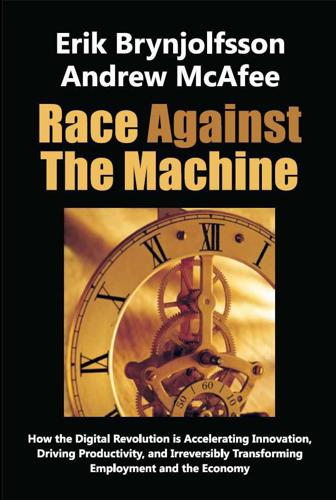
Race Against the Machine: How the Digital Revolution Is Accelerating Innovation, Driving Productivity, and Irreversibly Transforming Employment and the Economy
by
Erik Brynjolfsson
Published 23 Jan 2012
IBM is working with Columbia University Medical Center and the University of Maryland School of Medicine to adapt Watson to the work of medical diagnosis, announcing a partnership in that area with voice recognition software maker Nuance. And the Nevada state legislature directed its Department of Motor Vehicles to come up with regulations covering autonomous vehicles on the state’s roads. Of course, these are only a small sample of the myriad IT-enabled innovations that are transforming manufacturing, distribution, retailing, media, finance, law, medicine, research, management, marketing, and almost every other economic sector and business function. Where People Still Win (at Least for Now) Although computers are encroaching into territory that used to be occupied by people alone, like advanced pattern recognition and complex communication, for now humans still hold the high ground in each of these areas.
…
In Domain After Domain, Computers Race Ahead Just six years later, however, real-world driving went from being an example of a task that couldn’t be automated to an example of one that had. In October of 2010, Google announced on its official blog that it had modified a fleet of Toyota Priuses to the point that they were fully autonomous cars, ones that had driven more than 1,000 miles on American roads without any human involvement at all, and more than 140,000 miles with only minor inputs from the person behind the wheel. (To comply with driving laws, Google felt that it had to have a person sitting behind the steering wheel at all times).
…
Bureau of Economic Analysis added “Information Technology” as a category of business investment in 1958, so let’s use that as our starting year. And let’s take the standard 18 months as the Moore’s Law doubling period. Thirty-two doublings then take us to 2006 and to the second half of the chessboard. Advances like the Google autonomous car, Watson the Jeopardy! champion supercomputer, and high-quality instantaneous machine translation, then, can be seen as the first examples of the kinds of digital innovations we’ll see as we move further into the second half—into the phase where exponential growth yields jaw-dropping results. Computing the Economy: The Economic Power of General Purpose Technologies These results will be felt across virtually every task, job, and industry.
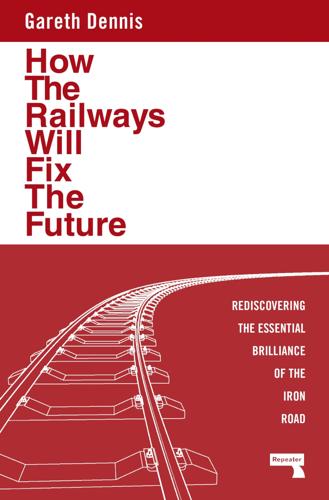
How the Railways Will Fix the Future: Rediscovering the Essential Brilliance of the Iron Road
by
Gareth Dennis
Published 12 Nov 2024
Nobody has been able to justify why driverless buses are a useful idea given the expense involved in trialling what will never functionally work. And driverless cars only make these efforts look more ridiculous — yet governments are fixated on a future where driverless cars (“autonomous vehicles”) exist and require yet another era of reshaping our urban realm. What problem are these technologies solving, other than justifying far higher sales costs per vehicle? Buses already have a highly complex and interactive system operating them (called drivers), and we already have autonomous vehicles — they are called taxis, and they exist basically everywhere. Thankfully, driverless road vehicles will never functionally exist. Trials of driverless road tech date back to the 1950s if not earlier.
…
Looking at CAM, we can see how these proposals typified the opposite approach. Even the name itself was all about technological whizzgiggery. In the technical documentation that was released before (spoiler alert) its demise, there were only passing references to the system’s potential autonomy. For example: “CAM presents the opportunity to adopt rapidly emerging autonomous vehicle technology,” despite it not being “dependent or in any way predicated on autonomous operation”. Furthermore, its “autonomous” features were further undermined by the fact that “driver costs are included, as CAM is expected to operate with drivers on ‘day one’ and move towards autonomous operation at a future date” — hardly a ringing endorsement.
…
The late 2010s saw a surge in the people trying to sell “mobility as a service” as a revolutionary concept. Mobility as a service supposedly describes free-flowing travel across modes, paid for easily through your phone or possibly through subscription, and which is adaptive to your own personal needs. Some of its loudest supporters were those in the automotive industry pushing their autonomous-car technology, and gig-economy taxi companies like Uber. Of course, “mobility as service” can equally apply to any journey where you walk to a station, hop on a train at your own leisure, change trains (again relying on high service frequencies for quick interchange) and walk to your destination.

Messy: The Power of Disorder to Transform Our Lives
by
Tim Harford
Published 3 Oct 2016
There’s a revealing implication in that target: that unlike a plane’s autopilot, a self-driving car will never need to cede control to a human being. True to form, Google’s autonomous vehicles have no steering wheel, though one hopes there will be some way to jump out if they start heading for the ocean.19 Not everyone thinks it is plausible for cars to be completely autonomous—or, at least, not soon enough for Urmson junior. Raj Rajkumar, an autonomous-driving expert at Carnegie Mellon University, thinks completely autonomous vehicles are ten to twenty years away. Until then, we can look forward to a more gradual process of letting the car drive itself in easier conditions, while humans take over at more challenging moments.
…
Anuj Prajan has floated the idea that humans should have to acquire several years of manual experience before they are allowed to supervise an autonomous car. But it is hard to see how this solves the problem. No matter how many years of experience a driver has, her skills will slowly erode if she lets the computer take over. Prajan’s proposal gives us the worst of both worlds: we let teenage drivers loose in manual cars, when they are most likely to have accidents. And even when they’ve learned some road craft, it won’t take long being a passenger in a usually reliable autonomous car before their skills begin to fade. Recall that Earl Wiener said, “Digital devices tune out small errors while creating opportunities for large errors.”21 In the case of autopilots and autonomous vehicles, we might add that it’s because digital devices tidily tune out small errors that they create the opportunities for large ones.
…
Recall that Earl Wiener said, “Digital devices tune out small errors while creating opportunities for large errors.”21 In the case of autopilots and autonomous vehicles, we might add that it’s because digital devices tidily tune out small errors that they create the opportunities for large ones. Deprived of any awkward feedback, any modest challenges that might allow us to maintain our skills, when the crisis arrives we find ourselves lamentably unprepared. • • • Every application of Wiener’s insight about large and small errors involves a trade-off. The GPS routinely saves me the minor hassle of planning before a trip, but at the cost of occasionally sending me scuttling apologetically into a rural church just ahead of the bridal procession.

Army of None: Autonomous Weapons and the Future of War
by
Paul Scharre
Published 23 Apr 2018
UNLEASHING MAYHEM: THE CYBER GRAND CHALLENGE DARPA tackles only the most difficult research problems, “DARPA hard” problems that others might deem impossible. DARPA does this every day, but when a technical problem is truly daunting even for DARPA, the organization pulls out its big guns in a Grand Challenge. The first DARPA Grand Challenge was held in 2004, on autonomous vehicles. Twenty-one research teams competed to build a fully autonomous vehicle that could navigate a 142-mile course across the Mojave Desert. It was truly a “DARPA hard” problem. The day ended with every single vehicle broken down, overturned, or stuck. The furthest any car got was 7.4 miles, only 5 percent of the way through the course.
…
The human’s ability to actually regain control of the system in real time depends heavily on the speed of operations, the amount of information available to the human, and any time delays between the human’s actions and the system’s response. Giving a driver the ability to grab the wheel of an autonomous vehicle traveling at highway speeds in dense traffic, for example, is merely the illusion of control, particularly if the operator is not paying attention. This appears to have been the case in a 2016 fatality involving a Tesla Model S that crashed while driving on autopilot. For fully autonomous systems, the human is out of the loop and cannot intervene at all, at least for some period of time.
…
This time, it was a resounding success. Twenty-two vehicles beat the previous year’s distance record and five cars finished the entire course. In 2007, DARPA hosted an Urban Challenge for self-driving cars on a closed, urban course complete with traffic and stop signs. These Grand Challenges matured autonomous vehicle technology in leaps and bounds, laying the seeds for the self-driving cars now in development at companies like Google and Tesla. DARPA has since used the Grand Challenge approach as a way to tackle other truly daunting problems, harnessing the power of competition to generate the best ideas and launch a technology forward.

Human + Machine: Reimagining Work in the Age of AI
by
Paul R. Daugherty
and
H. James Wilson
Published 15 Jan 2018
FUSION SKILL #2: Responsible Normalizing Definition: The act of responsibly shaping the purpose and perception of human-machine interaction as it relates to individuals, businesses, and society. It’s surprising how quickly you can get used to riding in an autonomous car. The first time you see its wheel turn on its own, you might shudder, but by the second right turn, it all starts to feel normal. Many people who have ridden in autonomous cars quickly conclude that driving is far too complex and dangerous a task for people to do. Unfortunately, autonomous cars are not yet widely distributed, and in many places, they’re still misunderstood. There’s a gap between the use of AI technologies and the wide acceptance and understanding of them.
…
But just as important is fostering positive experiences with AI augmentation. Make it clear to employees that you are using AI to replace tasks and reimagine processes. Demonstrate that AI tools can augment employees and make their day-to-day work less tedious and more engaging. Meanwhile, though, here’s what businesses are facing. When discussing the safety of autonomous vehicles, Gill Pratt, chief executive of the Toyota Research Institute, told lawmakers on Capitol Hill in 2017 that people are more inclined to forgive mistakes that humans make than those by machines.7 Research confirms the inconsistency and ambiguity with which we trust machines. A 2009 paper reported that when people thought their stock reports were coming from a human expert, their price estimates were more likely to be swayed than if they thought the information came from a statistical forecasting tool.
…
In this case, people’s driving skills—at scale—are crucial in the training of the system. AI has allowed Tesla to rethink its fundamental R&D processes and, along the way, speed up the development of its system. This reconsideration of how it conducts R&D is positioning Tesla to be a leader in autonomous cars. Tesla isn’t the only one using AI to rethink its R&D processes, using both machines and people in new, innovative ways. This chapter explores the way that AI enables experimentation within companies and how it’s shaking up business processes, especially those that involve customers, medical patients, and others who provide useful data.
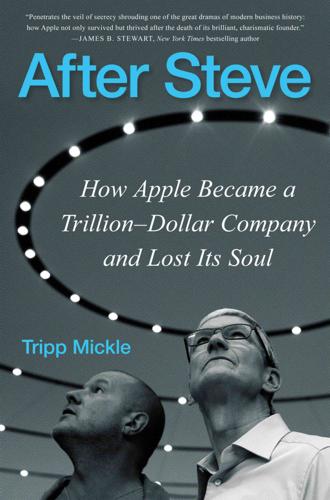
After Steve: How Apple Became a Trillion-Dollar Company and Lost Its Soul
by
Tripp Mickle
Published 2 May 2022
Software development for the fully driverless car he had imagined was lagging behind because of a lack of data and the complexity of building an autonomous system from the ground up. The hardware effort was making progress but trailing the company’s ambitious timeline. There was no way a fully autonomous car would be ready by the self-imposed deadline of 2019. Ive erupted. It was clear to everyone involved that the project was suffering under the weight of its ambitions. Ive’s vision for a fully autonomous vehicle had contributed to the build-out of a massive team of programmers and sensor experts, while hardware chief Dan Riccio’s focus on creating an electric vehicle had led to the development of a massive team of battery and automotive experts.
…
The project had three leaders who appeared more focused on building out their corporate fiefdom than on moving a unified project forward. The challenges were reminiscent of the corporate infighting that plagued the Apple Watch. Lavish spending compounded the woes. The project costs had ballooned to a staggering $1 billion a year. Project Titan leaders had hired autonomous-vehicle researchers at $10 million each and invested in the development of lasers to aim into passengers’ eyes in a bid to reduce the motion sickness caused by a car’s abrupt movements. Apple’s R-and-D expenses mushroomed, nearly doubling to $8.1 billion by the end of 2015. It was loose change for a company with $200 billion in cash, but the engineers viewed the warehouse as the latest example of a Silicon Valley giant spending big with nothing to show for it.
…
The heavyset engineer with close-cropped hair had a background in semiconductors and had risen to the top of Apple by delivering breakthroughs on products such as the MacBook Air. In Apple’s hierarchical structure, he commanded respect. Mansfield addressed the group bluntly, making clear what most people in the room already knew: the project was a mess. Though he acknowledged that he didn’t fully appreciate the technical challenges of autonomous vehicles, he planned to use a Thor’s hammer approach to get the work back on track. He announced that there would be layoffs—some two hundred of the staff would be let go—as he streamlined the operation and shifted its focus. It was clear to him that Apple had no business plowing ahead with the construction of a car until it determined how to structure the underlying software that would enable it to navigate roads without a driver.
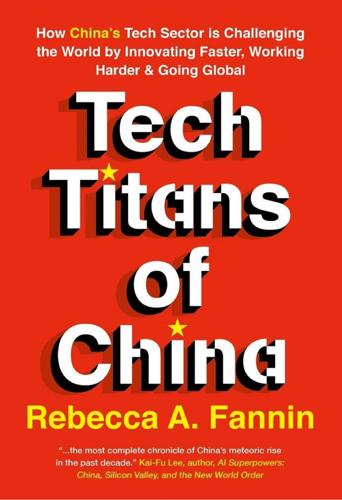
Tech Titans of China: How China's Tech Sector Is Challenging the World by Innovating Faster, Working Harder, and Going Global
by
Rebecca Fannin
Published 2 Sep 2019
Michael Dunne, “Driving the Future of US-China Relations: China’s Global Automotive Push,” Asia Society Northern California, February 27, 2019; asiasociety.org/video/driving-future-us-china-relations-chinas-global-automotive-push. 2. China Passenger Car Association, broker reports. Accessed February 28, 2019. 3. Luca Pizzuto et al., “How China Will Help Fuel the Revolution in Autonomous Vehicles,” McKinsey & Co., January 2019; mckinsey.com/industries/automotive-and-assembly/our-insights/how-china-will-help-fuel-the-revolution-in-autonomous-vehicles?reload. 4. Dana Hull and Peter Blumberg, “Tesla Joins Apple in Trade Secret Cases Tied to Xpeng, Bloomberg, March 21, 2019; bloomberg.com/news/articles/2019-03-21/tesla-sues-rival-zoox-claiming-ex-workers-stole-trade-secrets. 5.
…
Now back in the driver’s seat at Baidu, the challenge for Li is keeping a big-picture vision while running day-to-day operations and juggling both AI and search businesses. Next for Baidu is making money from its suite of AI products, branded Baidu Brain; voice-assisted DuerOS lights, speakers, and smartphone chargers, which have surpassed 200 million users; and self-driving technology Apollo, which has 50 municipal licenses in China to test autonomous vehicles on open roads. “If anyone starts to be able to generate meaningful revenue (in AI), we will be the first to achieve that goal,” Li told analysts on a recent earnings call, while acknowledging that Apollo is at a “very early stage.”8 Raymond Feng, an analyst at market research company Pacific Epoch in Shanghai, predicts that Baidu will start making money on driverless vehicle technology by 2020, providing improved AI services to vehicle manufacturers and drivers.
…
Since the early 1980s, China has wanted to have its own powerful automobile industry, but it’s not been until now that the nation can realize that goal through its leading technology companies, notes Michael Dunne, CEO of Hong Kong–based auto tech advisory firm ZoZo Go. Now these homegrown tech-oriented startups are powering up with electric and autonomous vehicles that can make China proud. With no legacy of gas-powered engines or Chinese state-owned, auto-making enterprises, they have an open road to roam in China. “China has the potential to make world-class vehicles with their smart and cashed-up tech companies,” said consultant Dunne, speaking at an Asia Society meeting in Northern California.
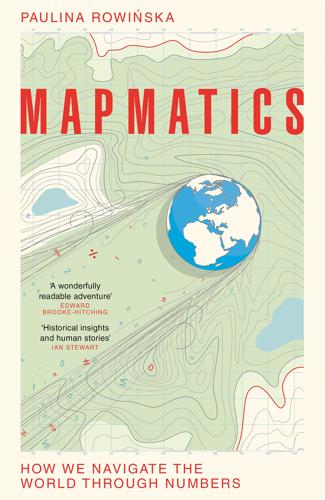
Mapmatics: How We Navigate the World Through Numbers
by
Paulina Rowinska
Published 5 Jun 2024
a distinct layer within the Earth’s inner core: Thanh-Son Phām and Hrvoje Tkalĉić, ‘Up-to-Fivefold Reverberating Waves through the Earth’s Center: Distinctly Anisotropic Innermost Inner Core’, Nature Communications 14 (2023), art. 754, https://doi.org/10.1038/s41467-023-36074-2. Afterword with a simple click on an app: ‘Seeing the Road Ahead’, Waymo, ‘About’, accessed 7 June 2023, https://waymo.com/company/. lidars, radars, cameras and other sensors: ‘How Autonomous Vehicles Work’, Waymo, n.d., accessed 7 June 2023, https://ltad.com/about/how-autonomous-vehicles-work.html#:~:text=LiDAR%20System,and%20return%20to%20the%20vehicle. stop signs and lane markers: ‘Waymo Driver’, Waymo, n.d., accessed 7 June 2023, https://waymo.com/waymo-driver/. manually added by engineers: Saket Sonekar, ‘Are HD Maps a Bottleneck for Self-Driving Cars?’
…
As they relax while the car slowly makes its way through San Francisco traffic, they don’t even notice that something is missing: a driver. Sam is one of my San Francisco-based friends who enthusiastically respond to my questions about their experiences with fully autonomous cars – that is, cars that can drive without a human in the front seat. They regularly ride with a Google-owned company Waymo because ‘they have enough money to hire really good people’, which makes Sam feel safe. In 2009, Google took on the challenge of developing autonomous cars and, after less than a decade, any interested resident or visitor in Phoenix, Arizona, could hail a self-driving car with a simple click on an app. Today, fully autonomous taxis are a popular mode of transportation in Phoenix and San Francisco, due to their novelty, convenience, and low cost – although Sam points out that ‘you’re paying for it with the risk that it could kill you’.
…
It’s this overload of information that makes us much more tired after driving to a new holiday destination than after our daily commute. Before a self-driving car is allowed in a new part of the city, the whole area must be mapped in unprecedented detail. GPS usually provides the location down to a few metres, which is enough for everyday use, but autonomous cars need to know their surroundings down to the centimetre so they can precisely locate details such as kerbs, stop signs and lane markers. Because of GPS’s limitations, these detailed maps aren’t created from satellite-based images but by lidar-equipped cars that drive through the area road by road, much as research boats map the ocean floor.

Artificial Intelligence: A Modern Approach
by
Stuart Russell
and
Peter Norvig
Published 14 Jul 2019
We can also use telepresence robots like the Beam to attend meetings and conferences remotely, or check in on our grandparents. Autonomous cars: Some of us are occasionally distracted while driving, by cell phone calls, texts, or other distractions. The sad result: more than a million people die every year in traffic accidents. Further, many of us spend a lot of time driving and would like to recapture some of that time. All this has led to a massive ongoing effort to deploy autonomous cars. Prototypes have existed since the 1980s, but progress was stimulated by the 2005 DARPA Grand Challenge, an autonomous vehicle race over 200 challenging kilometers of unrehearsed desert terrain.
…
Description Part (“a”): Two images are shown. In the first image, a human-driven car is shown in the left lane, and an autonomous car is shown in the middle lane. The autonomous car is heading through a trajectory that slows down and merges behind the human-driven car. In the second image, the autonomous car merges in front of the human-driven car. Part (b): An autonomous and a human-driven car are passing through an intersection. The human-driven car is closer to the intersection than the autonomous car. Figure 26.28(a) Left: An autonomous car (middle lane) predicts that the human driver (left lane) wants to keep going forward, and plans a trajectory that slows down and merges behind.
…
Figure 26.35(a) depicts BOSS, which in 2007 won the DARPA Urban Challenge, a complicated road race on city streets where robots faced other robots and had to obey traffic rules. Figure 26.35(a) Autonomous car BOSS which won the DARPA Urban Challenge. Photo by Tangi Quemener/AFP/Getty Images/Newscom. Courtesy of Sebastian Thrun. (b) Aerial view showing the perception and predictions of the Waymo autonomous car (white vehicle with green track). Other vehicles (blue boxes) and pedestrians (orange boxes) are shown with anticipated trajectories. Road/sidewalk boundaries are in yellow. Photo courtesy of Waymo.
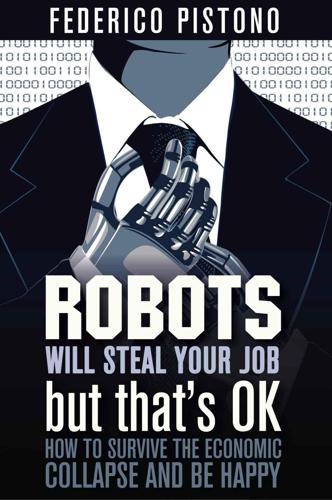
Robots Will Steal Your Job, But That's OK: How to Survive the Economic Collapse and Be Happy
by
Pistono, Federico
Published 14 Oct 2012
The initial investment is very low, and the distributed nature of computation allows costs to increase incrementally as the business expands. We are about to experience tremendous changes in such technologies, the consequences of which are unthinkable for us at the moment. Just as cavemen could not think of the complex cities and societies we live in today, so do we compared to what is about to come. 7.7 Autonomous Vehicles Often people say that something is either obvious and everything will change, or that it will never happen. It turns out that things are not quite that simple. Societies are multi-faceted, complex, evolving organisms, with many variables, and a certain degree of unpredictability. Technicians often fail to take into account the human factor, the psychology of the masses, and how events unfold accordingly.
…
Being in a car now became a whole different experience; it could be a truly social event. Given the situation, one would expect every car, bus, truck, and taxi to run autonomously by now. It would certainly have been the right choice: more efficient, less accidents, no traffic jams, cheaper and more reliable than human drivers…having autonomous vehicles would be logical. But things do not always go according to what is logical. They follow complex dynamics that have to do with society, group thinking and complex dynamics that have little to do with technology and what is good; and a lot to do with politics, marketing, emotional attachments, old habit, delusions, beliefs, and what appears to be good.
…
The classical “Turing test approach” has been largely abandoned as a realistic research goal, and is now just an intellectual curiosity (the annual Loebner prize for realistic chattiest81), but helped spawn the two dominant themes of modern cognition and artificial intelligence: calculating probabilities and producing complex behaviour from the interaction of many small, simple processes. As of today (2012), we believe these represent more closely what the human brain does, and they have been used in a variety of real-world applications: Google’s autonomous cars, search results, recommendation systems, automated language translation, personal assistants, cybernetic computational search engines, and IBM’s newest super brain Watson. Natural language processing was believed to be a task that only humans could accomplish. A word can have different meanings depending on the context, a phrase could not mean what it says if it is a joke or a pun.
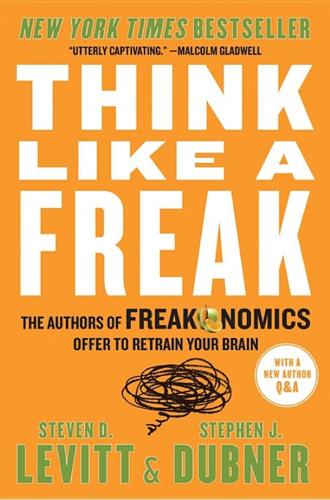
Think Like a Freak
by
Steven D. Levitt
and
Stephen J. Dubner
Published 11 May 2014
(Once journalists stopped getting it, they stopped writing about it—but the problem persists, especially among blue-collar workers.) Some questions were existential: What makes people truly happy? Is income inequality as dangerous as it seems? Would a diet high in omega-3 lead to world peace? People wanted to know the pros and cons of: autonomous vehicles, breast-feeding, chemotherapy, estate taxes, fracking, lotteries, “medicinal prayer,” online dating, patent reform, rhino poaching, using an iron off the tee, and virtual currencies. One minute we’d get an e-mail asking us to “solve the obesity epidemic” and then, five minutes later, one urging us to “wipe out famine, right now!”
…
If you paper over the shortcomings of your plan, that only gives your opponent reason to doubt the rest of it. Let’s say you’ve become a head-over-heels advocate for a new technology you think will change the world. Your argument goes like this: The era of the self-driving car—a.k.a. the driverless car, or autonomous vehicle—is just around the corner, and we should embrace it as vigorously as possible. It will save millions of lives and improve just about every facet of our society and economy. You could go on and on. You could talk about how the toughest challenge—the technology itself—has largely been conquered.
…
—are the result of driver error, the driverless car may be one of the biggest lifesavers in recent history. Unlike humans, a driverless car won’t drive drowsy or drunk, or while texting or applying mascara; it won’t change lanes while putting ketchup on french fries or turn around to smack its kids in the backseat. Google has already driven its fleet of autonomous cars more than 500,000 miles on real roads throughout the United States without causing an accident.* But safety isn’t the only benefit. Elderly and handicapped people wouldn’t have to drive themselves to the doctor (or, if they prefer, to the beach). Parents wouldn’t have to worry about their reckless teenagers getting behind the wheel.

Robot Futures
by
Illah Reza Nourbakhsh
Published 1 Mar 2013
Last year, following encouragement from Google, the State of Nevada enacted legislation to soon make it legal for autonomous vehicles to drive on the state’s highway system (State of Nevada 2011). To date Google’s autonomous driving machines have already covered more than 200,000 miles in California, where there are no laws explicitly forbidding robotically driven vehicles. And yet the diversity of ways in which legal boundaries, human behavior, and robot cars on the road will intersect are not predicted by Nevada’s legislation or by existing bodies of law. In August 2011 the automotive blog jalopnik broke the news of a fender bender caused by one of Google’s autonomous cars. Google issued a statement explaining that the accident was caused by the human in the Google car, since he was driving manually at the time.
…
See Motor Empathy, 54, 55, 114 Ethics, 25, 26, 55, 60–62, 101, 117, 118 Euclid Elements, 12 Index human, xvi, market, 6, 12, 43 Joints, 27, 29, 31, 32, 95, 123 Kinect, 36 Face tracking, 39 Fan out, 76–78, 81, 82 Flash, 26 Flying robots, xv, 29, 30, 47 Funding, 95, 96, 111–113 Fundraising. See Funding Gladwell, Malcolm, 82 Google Android operating system, 40 autonomous vehicles (see Driverless vehicle) Robo-Google, 43 Hacking, 22–24, 37 Human–robot interaction (HRI) adjustable autonomy, 45, 46, 77, 80, 102, 103, 121 ethics of, 54, 101, 104, 110 nanorobot coupling, 97–100 peer-to-peer, xix, 44, 45 psychological experiments, 54 Hyperactive Bob, 11 Identity, 62, 100, 103–107, 117 Intel IETF, 38 OpenCV, 39–41 Intelligence artificial (see Artificial Intelligence) Laser cutting, 28, 122 Machine learning, 98, 122 Manipulation, 29, 33, 40, 41, 123 Microsoft Kinect (see Kinect) robotics studio, 39 Moore’s Law, 31, 33 Motor, xv, xvii, 28, 29, 31–33, 38 Nanorobot, 89–94, 97–99, 106 NASA, 44, 45, 113 National Science Foundation, 112, 113 Nielsen, 5, 13 O’Terrill’s, 24, 25 Particulates.
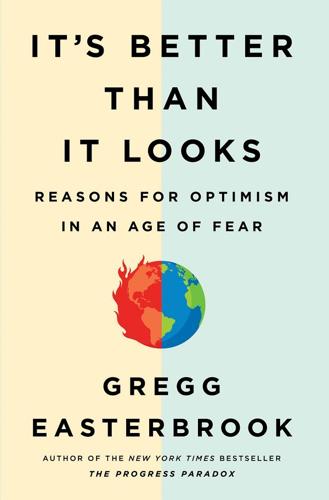
It's Better Than It Looks: Reasons for Optimism in an Age of Fear
by
Gregg Easterbrook
Published 20 Feb 2018
If future autonomous cars really don’t have pedals and steering, just seats for passengers, a cyberattack that cripples GPS signals will bring society to a halt. Buses and trucks will be driven by computers too. Long-distance truck drivers often are overworked and sleepy; far more people die in collisions caused by trucks than in airline crashes, and the rate of truck-caused fatalities has been rising in recent years, even as other forms of unnatural death moderate. For most families, the chief benefit of autonomous vehicles will be convenience. For trucking companies, the autonomous vehicle will replace wages, benefits, and workplace litigation with a capital cost that can be depreciated.
…
IF PEOPLE ARE RESISTING MORE sensible cars, let’s get people out of the loop. Before too long, the autonomous car is likely. Computer-driven cars will reduce accidents: the computer won’t get drowsy or try to cut another computer off. They will reduce traffic jams: traffic would flow more smoothly if cars employed uniform speeds and didn’t make needless lane changes, jockeying to get a few seconds ahead. Studies by researchers at the Massachusetts Institute of Technology suggest that an all-autonomous-vehicle system would reduce traffic jams 80 percent—traffic would flow freely even in the Manhattan tunnels.
…
The horsepower arms race will end, since a car that refuses to violate the speed limit—this is going to please some people while driving others to distraction—would not benefit from prodigious power output. Automakers have opened research offices in and around Palo Alto, California, seeking techie-wizard input into self-driving designs. Ford Motors expects by 2021 to be selling fully autonomous cars—no steering wheel—designed for group ownership. This would seem the fulfillment of a Summer-of-Love hippie whimsy were it not the marketing strategy of a Fortune 500 firm. Once cars become safer through computer control, more affordable through group ownership, cleaner through lower oil consumption, and less of a source of urban headaches through the end of the rush-hour traffic jam—then we’ll never be rid of car culture, which will exist for decades or centuries to come, if not until the sun explodes.
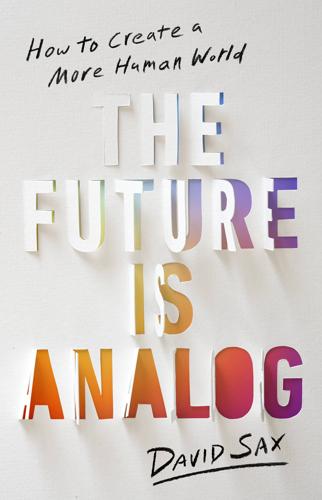
The Future Is Analog: How to Create a More Human World
by
David Sax
Published 15 Jan 2022
In the century since, smart city designs have become more digitally driven but no less idealistic. Each promises to solve the pesky troubles of a city, from traffic and pollution to economic opportunity and citizen safety, by unleashing the latest in digital technology—computers and smart phones, cameras and sensors, flying robots and autonomous vehicles—and feeding reams of data into a central brain of computers that will use statistics and machine learning to solve the intractable problems all cities face. Smart cities would be cleaner, safer, more democratic, more equal, and brimming with the sexy digital innovation that would drive economic growth, jobs, and investment.
…
“A combination of technologies, thoughtfully applied and integrated, can fundamentally alter nearly every dimension of quality of life in an urban environment,” Doctoroff said in an article he wrote for the consulting firm McKinsey’s website after the partnership was announced. “We’re convinced that by implementing a set of technologies—autonomous vehicles, modular building construction, or new infrastructure systems—we can, for example, reduce cost of living by 15 percent. With new mobility services and radical mixed-use development that brings homes near work, we can give people back an hour in their day.” At the launch event, which included representatives from every level of government, including Canadian prime minister Justin Trudeau, Sidewalk Toronto laid out its promise to build a new kind of mixed-use urban community, applying digital technology to create “people-centered neighborhoods.”
…
On the one hand you have an issue like housing affordability, which requires years of study, politically risky debate, and complex policy interventions, from zoning alterations to tax breaks and subsidized apartment construction, with no guarantee of success and the certainty of pissing someone off. On the other hand you say, “Oh, don’t worry, I’ll give you a gadget!” Saxe joked, “Well, people say, ‘Thank God! I’ll take the gadget, because I don’t have to do things that are hard… If we can do the same thing and insert a sexy new technology, then great! Why do you think autonomous cars are so attractive? You don’t have to stop driving. You don’t have to change roads. It doesn’t cost governments a cent. We can still drive, and the government says, ‘Look, all our problems are better!’” The fundamental problem with pegging the future of cities to digital projects like Sidewalk Toronto is confusing invention and innovation.

Arriving Today: From Factory to Front Door -- Why Everything Has Changed About How and What We Buy
by
Christopher Mims
Published 13 Sep 2021
Getting through this light and the one just past it, which has funny timing and gates the entrance of vehicles onto the overpass proper, requires that the truck keep rolling even when it might normally stop. This situation is a good illustration of the frequently imperfect and entirely handcrafted world that autonomous vehicles must navigate. We all know that one intersection in our neighborhood where a bush obscures our view of traffic crossing our path, or the one where there should be a light, or that other one where people tend to take the curve too quickly and accidents happen all the time. To make it safe for autonomous vehicles to operate on our strange and inconsistent roads, we have to teach them not just how to drive under optimal conditions but how to handle the peculiarities of our built environment, just as we might teach a teenager just learning to drive.
…
(Please do: This is a long book, and it’s my hope that some of its sections will be worth the price of entry for those of you with narrower interests than the entire saga it chronicles.) You will learn what technology your cell phone has in common with spacecraft, cruise missiles, and the navigation systems of Polynesian explorers. You’ll also find a (hopefully) accessible explanation of the “thinking” process of the AI (artificial intelligence) that drives an autonomous vehicle. You’ll learn why automated warehouses are like microchips that process stuff instead of bits, and how the two were designed with the same principles in mind. You will be introduced to “Bezosism,” that braiding together of management practices, AI, workplace surveillance, robots, and hard automation that is the engine of Amazon’s success, and possibly the future of all low-skilled labor.
…
Then, with only a minimum of human intervention, it drove to us, never faster than four miles an hour. But to accomplish this sequence of events tens of thousands of times a week, in dozens of cities all over the world, in every kind of weather, and to make delivery via robot into a going concern—a real business that can eventually make money—is the real trick. While fully autonomous vehicles remain mostly a science project, as well as a potentially risky ongoing experiment on America’s roads, and drone delivery awaits both a workable business model and final approval by the FAA, Starship is the one company on the planet that, as of this writing, anyway, is doing autonomous delivery at scale.
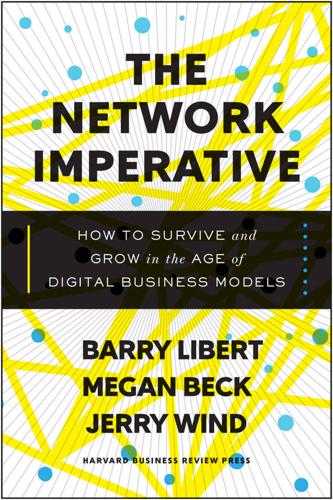
The Network Imperative: How to Survive and Grow in the Age of Digital Business Models
by
Barry Libert
and
Megan Beck
Published 6 Jun 2016
—Richard Branson, The Virgin Group EVEN A HUNDRED-YEAR-OLD ORGANIZATION CAN INNOVATE ITS BUSINESS MODEL. General Motors (GM) is coming enthusiastically, albeit a bit late, to the innovative ride-sharing market with a $500 million investment in Lyft as part of Lyft’s latest $1 billion venture financing round. Although a shift from car ownership to car sharing, and even further to autonomous vehicles, could be a risky disruption to their market, GM’s leaders have decided to embrace the changing business model landscape in transportation and innovate what they do and how they do it. Daniel Ammann, GM’s president, said, “We think there’s going to be more change in the world of mobility in the next five years than there has been in the last 50,” and GM is getting ready for that change.1 From that perspective, Lyft is an excellent partner who will help GM turn their views of the market upside down.
…
Daniel Ammann, GM’s president, said, “We think there’s going to be more change in the world of mobility in the next five years than there has been in the last 50,” and GM is getting ready for that change.1 From that perspective, Lyft is an excellent partner who will help GM turn their views of the market upside down. Lyft’s president John Zimmer stated, “We strongly believe that autonomous vehicle go-to-market strategy is through a network, not through individual car ownership.” According to executives at both GM and Lyft, they will start work on developing a network of self-driving vehicles—a challenge to Google, Tesla, and Uber, which are also devoting resources to this innovation.2 Openness Makes Space for Ongoing Change Will GM’s self-driving-car aspiration create value for the firm?
…
Founder of Angie’s List Angie Hicks connected homeowners to share reviews of local businesses and service providers, creating enormous value over traditional listings like the Yellow Pages. But don’t assume that only start-ups can embrace new mental models and core beliefs. General Motors is demonstrating that it too can shift its core beliefs about value with a $500 million investment in the ride-sharing start-up Lyft and a commitment to build digital networks and autonomous vehicles. Take It Outside Your Mind and into the Real World As you update your mental model, you need to take reinforcing actions to help realize the change. Here’s what we recommend. TAKE IN NEW INFORMATION, NEW DATA, AND NEW IDEAS. As a leader in business, you probably already keep up with the latest news and the ways others are thinking, but, as we’ve said, all of us naturally have a bias toward perspectives like our own.

Super Pumped: The Battle for Uber
by
Mike Isaac
Published 2 Sep 2019
He spent his undergrad years in the East Bay, at the University of California, Berkeley, where as an industrial engineer he built one of his first robots—a Lego-constructed machine that could pick up and sort Monopoly money. Soon he convinced his classmates to enter the DARPA Robotics Challenge with him, a program put on by the Department of Defense in which competitors would build autonomous cars and race them across the Mojave Desert. They entered with high hopes, but the autonomous vehicle they built, a motorcycle nicknamed “Ghostrider,” ended up crashing within seconds of beginning the race.†††† The loss deflated him; Levandowski liked to win almost as much as he liked building his robots. He scored a post-collegiate job at Google working on the company’s Street View project.
…
Google was terrified to approve what Levandowski really wanted; true, open-road testing of autonomous vehicles. Aside from the ever-present concern about negative public opinion, the nonsensical design of San Francisco’s traffic-clogged grid presented an absurdly thorny engineering problem. The smallest error risked a dangerous accident. Naysayers imagined a video of a Google-branded SUV wrapped around the mangled chassis of another car—or worse, the mangled body of a pedestrian. But Levandowski knew Google needed real-world testing to get autonomous vehicles out of the conceptual phase. Levandowski imagined a future without automobile deaths or congestion, where carpooling was automatic and simple.
…
While Google was careful and methodical, employees saw Levandowski as corner-cutting and occasionally reckless. Without telling his bosses, Levandowski hired an outside lobbyist in Nevada to write a new law that allowed autonomous vehicles to operate in the state without a backup safety driver. Google executives were furious, yet the law passed statewide in 2011. Levandowski’s divisive methods earned him enemies. When he made a play to become leader of the Google X autonomous vehicle unit, a group of employees staged a mutiny, requiring Page himself to step in and name Chris Urmson, a rival of Levandowski’s, the head of the self-driving division. Levandowski was crushed and made no attempt to hide it; at one point, he stopped coming into work entirely.
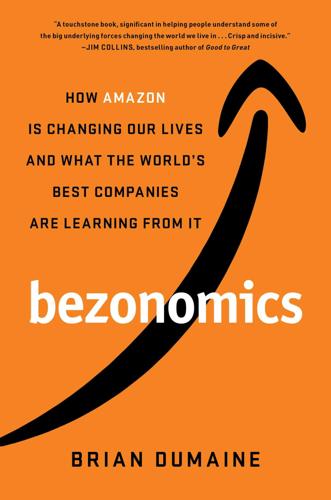
Bezonomics: How Amazon Is Changing Our Lives and What the World's Best Companies Are Learning From It
by
Brian Dumaine
Published 11 May 2020
Bezos will in all likelihood use the savings to drop prices for his customers, which will in turn attract more sellers, which will lower costs and attract more customers. And his AI flywheel will spin faster and faster. With visions of those savings dangling before him, Bezos has jumped headlong into the autonomous vehicle race. Amazon’s vast computing power and machine-learning expertise make it a potentially formidable player in the field. In 2016, the company earned a patent for a system that helps autonomous cars figure out which direction traffic is traveling in any particular lane to help a vehicle safely enter the proper lane. In its partnership with Toyota, Amazon is developing a self-driving concept vehicle called the e-Palette, a minivan that can move people or packages, and the two companies plan to unveil it at the 2020 summer Olympic games in Tokyo.
…
Anderson ran Tesla’s autopilot program, Bagnell headed the autonomy and perception team at Uber, and Urmson was the former head of Google’s self-driving project, which has morphed into one of the leading self-driving car companies: Waymo. Aurora will not build cars but is developing the AI brains behind autonomous vehicles and plans to partner with retailers like Amazon and major automakers to create state-of-the-art autonomous vehicles. Amazon is far from alone in the race for self-driving vehicles. According to the research firm CB Insights, at least forty-six companies around the world are working on self-driving vehicle technology. The ranks include major automakers such as GM, Ford, BMW, and Audi; tech companies such as Alphabet, Baidu, Microsoft, and Cisco; Internet car services such as Uber and Didi in China; retailers such as Walmart, Kroger, and Alibaba; and a slew of start-ups like Aurora and Udelv.
…
The ranks include major automakers such as GM, Ford, BMW, and Audi; tech companies such as Alphabet, Baidu, Microsoft, and Cisco; Internet car services such as Uber and Didi in China; retailers such as Walmart, Kroger, and Alibaba; and a slew of start-ups like Aurora and Udelv. One thing that’s almost certain is that when autonomous vehicles do first appear in significant numbers, they’ll be delivery vans. That’s because carrying packages rather than humans greatly reduces the risk posed by self-driving vehicles. If an order of Dr. Bronner’s castile soap gets crushed in a fender bender, that’s unfortunate but not a tragedy. In an accident, the vans will be programmed to self-sacrifice themselves to avoid harm to pedestrians, bicyclists, or drivers of other vehicles.

Don't Be Evil: How Big Tech Betrayed Its Founding Principles--And All of US
by
Rana Foroohar
Published 5 Nov 2019
But as autonomous driving and digital apps become a bigger deal, that ratio is expected to shift dramatically. Morgan Stanley predicts that in autonomous vehicles, 40 percent of the value of an automobile will come from hardware, 40 percent from software, and 20 percent from the content that streams into the vehicle.35 That would include things like games, advertisements, and news enabled by the software. This shift is partly driven—no pun intended—by the fact that millennials want their cars souped-up with all their favorite apps. But it also reflects another idea: When you are in an autonomous vehicle, brand identity disappears. “If you take away control of the steering wheel, consumers are much less likely to care what type of car they are in,” says Nick Johnson, principal at the consultancy Applico, who has advised major automakers on the shift.
…
The ubiquitous ride-hailing business he founded had been drawing criticism from municipal lawmakers and union activists—particularly in large cities like New York and San Francisco—for years, but their PR crisis reached a boiling point following a series of scandals that started with a blog post from a former engineer, Susan Fowler, alleging harassment and rampant sexism at the company. That news went viral in the same month that Waymo, an autonomous vehicle unit owned by Google’s parent company, Alphabet, filed a federal lawsuit against the ridesharing company alleging that a software engineer had stolen its trade secrets and taken them to Uber, which is developing its own autonomous vehicles. This was followed only five days later by a shocking video showing the CEO himself blowing up at an Uber driver who deigned to complain about the company’s payment system.1 Uber’s own dashcam recorded the interaction, in which the driver claimed to have gone bankrupt after investing $97,000 in a high-end car in order to drive for uberBLACK, only to find that rates began falling and the service was being dropped in favor of cheaper cars.
…
It’s a question that faces any number of industries, from retail (which has already been decimated by Amazon) to healthcare (under competitive threat from both Amazon and Google), finance (which is under threat from fintech, the merging of tech platform technology and banking), manufacturing, and so on. The businesses that have the best technology in automotive software and apps are, unsurprisingly, technology companies such as Google, Apple, and China’s Baidu, all of which are pouring money into autonomous vehicle technology and platforms to support it. Right now, motorists can mainly stream music, GPS information, and whatever other data they can access on their phone via such systems. But once the platforms are embedded more deeply in vehicles, customers will be able to tap into everything from fluid levels and engine temperatures to safety information.

The Dark Cloud: How the Digital World Is Costing the Earth
by
Guillaume Pitron
Published 14 Jun 2023
Even Google and Uber keep postponing [the roll-out of these vehicles]’, says Mathieu Saujot, a researcher at IDDRI, a sustainable-development think tank.49 But if driverless cars do one day go mainstream, they will produce, on account of their lidars and ultra-high-definition cameras, up to one gigabyte of data per second.50 In the words of the head of a big tech company, ‘A million autonomous cars represent as much data as the entire world population connected to the web.’51 And what will these vehicles use to communicate with? Road signs, smart roads, and other driverless cars connected to ‘edge data centres’ that offer the lowest possible latency. Paradoxically, the more ‘autonomous’ the car, the more it will depend on the surrounding infrastructure … There is nothing less autonomous than an autonomous vehicle. ‘It’s an oversight in terms of innovation’, says Mathieu Saujot, ‘and that’s the physical reality in which they’ll find themselves.’52 Some observers reassure us that only shreds of the data produced will leave the vehicle to communicate with the outside world.53 Others add that the driverless car is meant to be a shared vehicle, which should limit the number of cars on the road (a point that is indeed up for debate).54 One thing we can be sure of is that it will use far more electricity — up to 1,500 additional watts.55 How will that affect the range of the electric car?
…
, Data Center Knowledge, 12 July 2019. 54 Nikolas Thomopoulos and Moshe Givoni, ‘The autonomous car — a blessing or a curse for the future of low carbon mobility? An exploration of likely vs. desirable outcomes’, European Journal of Futures Research, vol. 3, no. 1, December 2015. According to Thomopoulos and Givoni, there is ‘the risk of autonomous cars leading to the renaissance of the private car […] at the expense of public and NMT (non-motorised transport)’. 55 ‘Not all of our self-driving cars will be electrically powered – here’s why’, The Verge, 12 December 2017. 56 ‘Another big challenge for autonomous car engineers: Energy efficiency’, Automotive News, 11 October 2017. 57 Mathieu Saujot, Laura Brimont, Oliver Sartor, ‘Putting autonomous mobility on the path to sustainable development’ (full report in French), IDDRI, June 2018.
…
Even Carlos Tavares, head of Stellantis (PSA-Fiat-Chrysler), has announced that the company will discontinue research in this domain, arguing that ‘given the additional cost of the technology, the price of the car will be such that whoever can afford it will in any case not be the one behind the wheel, but the one at the backseat’. Read ‘Premiers coups de frein sur la voiture autonome’ [‘The brakes are being put on the autonomous car’], Les Échos, 26 March 2019. 50 Lidar (light detection and ranging) is a digital tool that uses lasers to give a 360-degree, three-dimensional scan of the driverless car’s surrounding environment. It can contain up to 64 lasers, and collect millions of data points every second. Read ‘Autonomous cars could drive a deluge of data center demand’, Rich Miller for Data Center Frontier, 24 May 2017. 51 Namely, Stéphane Nègre, CEO of Intel Corporation.
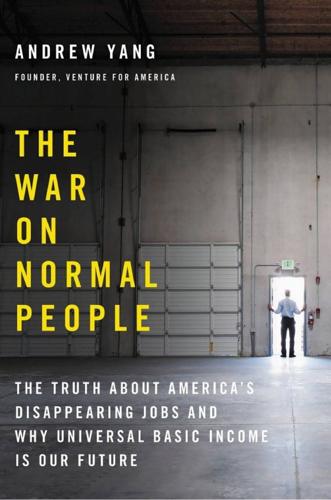
The War on Normal People: The Truth About America's Disappearing Jobs and Why Universal Basic Income Is Our Future
by
Andrew Yang
Published 2 Apr 2018
“This will 100 percent happen.” It is obvious that Tesla trucks will eventually have the same self-driving capabilities as their cars. Other autonomous vehicle companies report similar timelines, with 2020 being the first year of mass adoption. And it’s not just those driving trucks who are at risk. A senior official at one of the major ride-sharing companies told me that their internal projections are that half of their rides will be given by autonomous vehicles by 2022. This has the potential to affect about 300,000 Uber and Lyft drivers in the United States. The replacement of drivers will be one of the most dramatic, visible battlegrounds between automation and the human worker.
…
Companies can eliminate the jobs of call center workers, retail clerks, fast food workers, and the like with minimal violence and fuss. Truck drivers will be different. Right now, the federal government has said that it will allow autonomous vehicles in any states that permit them. One industry report noted that “the [U.S.] Department of Transportation is throwing its full support behind development of autonomous vehicles as a way to improve safety on our roadways.” In 2016 the trucking industry spent $9.1 million on lobbying, and the Ohio government has already committed $15 million to set up a 35-mile stretch of highway outside Columbus for testing self-driving trucks.
…
… about half of the 310,000 residents who left the workforce in Michigan between 2003 and 2013 went on disability: Chad Halcon, “Disability Rolls Surge in State: One in 10 Workers in Michigan Collecting Checks,” Crain’s Detroit Business, June 26, 2015. The average age of truck drivers is 49…: Sean Kilcarr, “Demographics Are Changing Truck Driver Management,” FleetOwner, September 20, 2017. Morgan Stanley estimated the savings of automated freight delivery…: Autonomous Cars: Self-Driving the New Auto Industry Paradigm, Morgan Stanley Blue Paper, November 6, 2013. Crashes involving large trucks killed 3,903 people…: Olivia Solon, “Self-Driving Trucks: What’s the Future for America’s 3.5 Million Truckers?” The Guardian, June 17, 2016. … 88 percent of drivers have at least one risk factor for chronic disease: W.
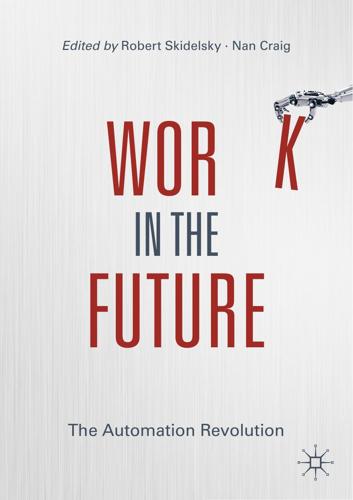
Work in the Future The Automation Revolution-Palgrave MacMillan (2019)
by
Robert Skidelsky Nan Craig
Published 15 Mar 2020
Silver, D., Schrittwieser, J., Simonyan, K., Antonoglou, I., Huang, A., Guez, A., Hubert, T., Baker, L., Lai, M., Bolton, A., Chen, Y., Lillicrap, T., Hui, F., Sifre, L., van den Driessche, G., Graepel, T., & Hassabis, D. (2018). Mastering the Game of Go Without Human Knowledge. Nature, 550, 354–359. Tschangho, J. K. (2018). Automated Autonomous Vehicles: Prospects and Impacts on Society. Journal of Transportation Technologies, 8, 137–150. Walsh, T. (2018). Machines That Think: The Future of Artificial Intelligence. Prometheus Books. Part V Work in the Digital Economy 13 Work in the Digital Economy Daniel Susskind In this talk, I want to do two things.
…
Colton To summarize so far, I believe that any technical limitations on the abilities of AI systems to become intelligent enough for employment in workplaces instead of people are not in terms of fundamental, theoretical issues, but rather in terms of the speed to make scientific discoveries about computational intelligence, and in terms of engineering systems to take advantage of these breakthroughs. While it would not surprise me if we saw autonomous cars routinely on our streets in 10 years’ time, it would also not surprise me if it took another 50 years for this to happen (Tschangho 2018). The other limitations on the usage of AI in the workplace, will I hope, be self-imposed, as society in general responds to automation. Slowly but surely, AI systems will gain abilities to take on the duties of people undertaking intelligent tasks.
…
However, quite the opposite seems to be happening. Some taxi companies for example seem to be using human labour purely as a stop- gap to raise venture capital for research and development, so that in the 12 Possibilities and Limitations for AI: What Can’t Machines Do? 115 longer-term they can roll-out a fleet of autonomous cars, eventually putting their entire human workforce out of a job (Price 2019). I hold quite a utopian view that automation can free humanity from the drudgery of meaningless toil—which, taking a sincere look at the world of work—is what many people in paid employment are asked, or indeed forced via circumstance, to do.
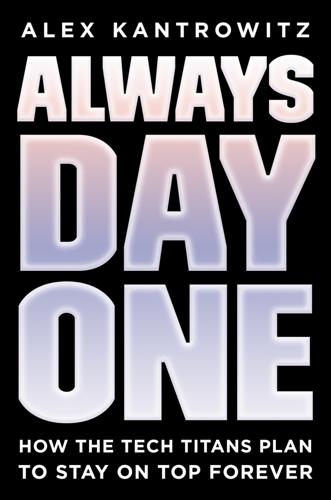
Always Day One: How the Tech Titans Plan to Stay on Top Forever
by
Alex Kantrowitz
Published 6 Apr 2020
“Apple Delaying HomePod Smart Speaker Launch until next Year.” 9to5Mac, November 17, 2017. https://9to5mac.com/2017/11/17/homepad-delay/. Apple moved two hundred employees off its struggling Project Titan: Kolodny, Lora, Christina Farr, and Paul A. Eisenstein. “Apple Just Dismissed More than 200 Employees from Project Titan, Its Autonomous Vehicle Group.” CNBC. CNBC, January 24, 2019. https://www.cnbc.com/2019/01/24/apple-lays-off-over-200-from-project-titan-autonomous-vehicle-group.html. “How is the work culture”: “How Is the Work Culture at the IS&T Division of Apple?” Quora. https://www.quora.com/How-is-the-work-culture-at-the-IS-T-division-of-Apple. fifteen-dollar-per-hour wage floor: Salinas, Sara.
…
When you look into the Black Mirror, happy endings are hard to come by. From Doomsday to Disneyland? Linda, an accountant at a midsize financial services firm, gets made fun of by her husband and two kids as she makes them breakfast and sees them off for the day. A tear runs down her cheek as she takes an autonomous vehicle to work. When Linda arrives at the office, she’s approached by a consultant who tells her she’s going to wear a recording device at all times. The company has already automated her entire department, so she understands what’s coming. One month later, after the device has fully recorded her work, Linda’s self-driving car plunges into a lake.
…
And it’s made daily life better for iPhone owners with features like Face ID and Apple Pay (both delightful). Few companies get more out of their existing assets than Apple. Inventing beyond these devices, however, is another story. Apple’s bets to create ambitious new products—like the HomePod and its own autonomous car—are failing. And Apple’s refinement culture, a relic of the Jobs era, is to blame. The Refiner’s Mindset In place of Jobs, six Apple executives drive the company today, delivering ideas that the rest of the company executes. They are: Tim Cook, the unassuming CEO with an operations background.
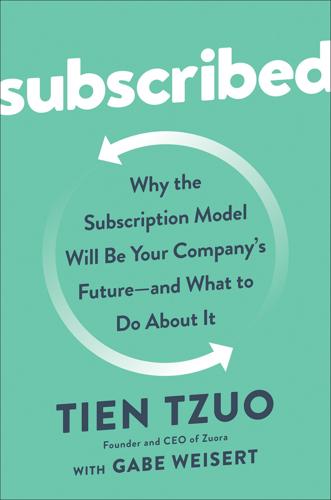
Subscribed: Why the Subscription Model Will Be Your Company's Future - and What to Do About It
by
Tien Tzuo
and
Gabe Weisert
Published 4 Jun 2018
Since GM and Chrysler emerged from bankruptcy in 2009, the Big Three have invested more than $30 billion in new jobs and facilities. The American automobile industry spends $18 billion a year on research and development, focusing on fuel-efficient, electric, and autonomous vehicles. GM CEO Mary Barra says that her company is “quarters, not years” away from deploying fully autonomous vehicles at scale. These car companies have spent decades crafting their vehicles and their brands, and as a result enjoy some forbidding advantages, but there is a red flag—if they don’t know their drivers by the time autonomy and access-based consumption roll around, they will lose out to a competitor.
…
All due respect to other potential ecommerce vendors, but Amazon has my business, in no small part due to Amazon Prime—they hooked me with the free shipping, and now I’ve got music, movies, and all sorts of other services. I’m not going anywhere. Uber and Lyft are both vying for that same lock-in effect by offering discounted services around consistent consumption patterns—in other words, they’re going after my commute. As Lyft president John Zimmer, anticipating fully autonomous vehicles, told The New York Times: “The cost of owning a car is $9,000 a year. Let’s say we offer a $500 monthly plan in which you can tap a button and get access to transportation whenever you want it, and you get to choose your room-on-wheels experience. Maybe you want a cup of coffee on your way to work, or you want to watch the Warriors game later, so you’re in what’s basically a sports bar, with a bartender.”
…
You Will Subscribe to It,”Slate, December 2, 2017, www.slate.com/articles/technology/technology/2017/12/car_subscriptions_ford_volvo_porsche_and_cadillac_offer_lease_alternative.html. a sports bar, with a bartender “The Rev-Up: Imagining a 20% Self Driving World,” The New York Times, November 8, 2017, www.nytimes.com/interactive/2017/11/08/magazine/tech-design-future-autonomous-car-20-percent-sex-death-liability.html?_r=0. 250 million connected cars on the road by 2020 “Gartner Says by 2020, a Quarter Billion Connected Vehicles Will Enable New In-Vehicle Services and Automated Driving Capabilities,” January 26, 2015, www.gartner.com/newsroom/id/2970017. Without control over the platform, PC hardware Horace Dediu, “IBM and Apple: Catharsis,” July 15, 2014, www.asymco.com/2014/07/15/catharsis.
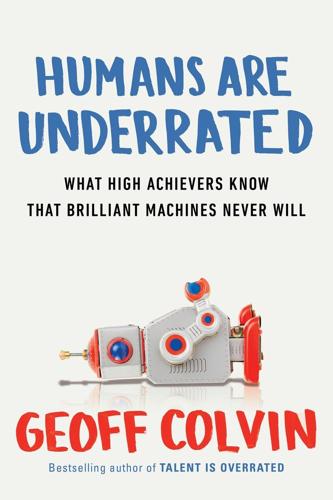
Humans Are Underrated: What High Achievers Know That Brilliant Machines Never Will
by
Geoff Colvin
Published 3 Aug 2015
If the driver is spacing out, it could jar him back to attention by making the steering wheel vibrate. Most intriguingly (or hilariously), the researchers even used special thermochromatic paint to make a car change its external color based on the driver’s emotional state, as a signal to other drivers. Whether this technology has time to be commercialized before the arrival of autonomous vehicles makes it irrelevant is a separate question. The power of computers to sense human emotions means, inevitably, that a machine can outdo us even in detecting our own emotions. It’s surely tempting to suppose that I possess a sense of my own emotional state that no entity standing outside of me, human or electronic, could ever reach.
…
Watson could do it at light speed with an electronic signal, so the developers interposed a delay to level the playing field. Otherwise I’d never have a prayer of winning, even if we both knew the correct response. But, of course, even with the delay, I lost. So let’s confront reality: Watson is smarter than I am. In fact, I’m surrounded by technology that’s better than I am at sophisticated tasks. Google’s autonomous car is a better driver than I am. The company has a whole fleet of vehicles that have driven hundreds of thousands of miles with only one accident while in autonomous mode, when one of the cars was rear-ended by a human driver at a stoplight. Computers are better than humans at screening documents for relevance in the discovery phase of litigation, an activity for which young lawyers used to bill at an impressive hourly rate.
…
An example illustrates the gap in abilities: In 1997 a computer could beat the world’s greatest chess player yet could not physically move the pieces on the board. But again the technology needed only time, a few more doublings of power. The skills of physical work are also not immune to the advance of infotech. Google’s autonomous cars are an obvious and significant example—significant because the number one job among American men is truck driver. Many more examples are appearing. You can train a Baxter robot (from Rethink Robotics) to do all kinds of things—pack or unpack boxes, take items to or from a conveyor belt, fold a T-shirt, carry things around, count them, inspect them—just by moving its arms and hands (“end-effectors”) in the desired way.

Deep Medicine: How Artificial Intelligence Can Make Healthcare Human Again
by
Eric Topol
Published 1 Jan 2019
Etzioni, O., “How to Regulate Artificial Intelligence,” New York Times. 2017; Simonite, T., “Do We Need a Speedometer for Artificial Intelligence?” Wired. 2017. 59. Bonnefon, J. F., A. Shariff, and I. Rahwan, “The Social Dilemma of Autonomous Vehicles.” Science, 2016. 352(6293): pp. 1573–1576. 60. Bonnefon, Shariff, and Rahwan, “The Social Dilemma of Autonomous Vehicles.” 61. Bonnefon, Shariff, and Rahwan, “The Social Dilemma of Autonomous Vehicles.” 62. Road traffic injuries, ed. World Health Organization. 2018. 63. Howard, B., “Fatal Arizona Crash: Uber Car Saw Woman, Called It a False Positive,” Extreme Tech. 2018. 64. AI for Healthcare: Balancing Efficiency and Ethics, ed.
…
There is no correct answer, with the conflicts of moral values, cultural norms, and personal self-interest, but the majority of respondents did not go for the “greater good” choice of sacrificing themselves. Clearly, trying to deal with these issues in the design of an algorithm to control an autonomous vehicle will be formidable60 and has been labeled as one of “the thorniest challenges in artificial intelligence today.”61 Another layer of this dilemma is who should be involved in algorithmic design—consumers, manufacturers, government? As you might anticipate, companies are not enthusiastic about government regulation; many firms, including Microsoft and Google, have set up their own internal ethics boards, arguing that regulatory involvement might be counterproductive, delaying the adoption of self-driving cars over fringe issues when it already seems clear that autonomous vehicles will reduce traffic fatalities overall.
…
As you might anticipate, companies are not enthusiastic about government regulation; many firms, including Microsoft and Google, have set up their own internal ethics boards, arguing that regulatory involvement might be counterproductive, delaying the adoption of self-driving cars over fringe issues when it already seems clear that autonomous vehicles will reduce traffic fatalities overall. But we don’t think of it in the big picture way. More than 1.25 million people are killed by human drivers each year, most by human error, but we as a society don’t bat an eye at the situation.62 The introduction of computers into the mix sets up a cognitive bias, not acknowledging the net benefit.

Thinking Machines: The Inside Story of Artificial Intelligence and Our Race to Build the Future
by
Luke Dormehl
Published 10 Aug 2016
Not coincidentally, the finance sector quickly joined the video game business as an industry ready to throw money at AI researchers. The age of algorithmic trading had begun. Another eye-catching application of neural nets during this time was the invention of the self-driving car. Autonomous vehicles had been a long-time dream of technologists. In 1925, the inventor Francis Houdina demonstrated a radio-controlled car, which he drove through the streets of Manhattan without anyone at the steering wheel. Later, autonomous vehicle tests used guidewires and on-board sensors to follow painted white lines on the road or seek out the alternating current of buried cables. In 1969, John McCarthy came closest to describing modern self-driving vehicles when he wrote an essay with the provocative title, ‘Computer-Controlled Cars’.
…
On the street, by far the biggest visible change likely to happen in the next several decades will be the mass arrival of self-driving cars. Following on from the work of Dean Pomerleau, as described in the last chapter, both Google and Apple have invested in this field and look set to play a key role in bringing autonomous vehicles to the mainstream. Self-driving cars won’t only affect us on an individual level, but also collectively by helping to reduce traffic congestion in cities. The data that they gather will be vital to town planners as cities continue to expand. We are already starting to see how this may work.
…
Weighing up the pros and cons of stopping its mission to administer aid, potentially administering pain relief by applying traction in the field, and other conundrums are all complex issues for a human to navigate – let alone a machine. Issues like this will become ever more prevalent. Consider what would happen if a company that builds autonomous cars decides, in order to protect its driver, that it will make its vehicles swerve out of the way if they detect an imminent collision. This makes perfect sense, and is exactly what most of us would do if we were driving. However, what if your car is stopped at a red traffic light when it detects another vehicle coming up fast behind you?

Human Frontiers: The Future of Big Ideas in an Age of Small Thinking
by
Michael Bhaskar
Published 2 Nov 2021
After decades of incrementalism, we are starting to see the outlines of something new. Electric cars are becoming ubiquitous; the reign of the internal combustion engine is ending. Likewise an even more fundamental shift in the nature of transport is undergoing a colossal research effort: autonomy. Arguably, autonomous vehicles are already the most promising and advanced breakthrough, in that a fleet of them, working as one great hive mind, would herald a revolution in the transport system. It may seem that supersonic travel is for the history books. Yet aeroplanes are subject to possible reinvention, with companies exploring speeds of up to Mach 5 – London to New York in ninety minutes.
…
To reach this point has already taken volumes of R&D capital massively in excess of those deployed for the creation of previous technologies. As we saw, it did not take teams of PhDs to build the Flyer. We have never invested so much in cutting-edge modes of transport since the high days of the space race. Private and public capital is pouring into areas like space, drones and autonomous vehicles; the big incumbents like Boeing and Volkswagen are finally waking up to the challenge and putting serious efforts into radical change. The potential is clear; but it's not unreasonable to wonder why it's not translating. Medicine and transport affect everyone. They are global priorities connecting scientific and engineering frontiers with politics and policy.
…
Impact reduces. If you spent life struggling with a horse and cart over mud-bathed dirt tracks or walking miles to get water, the transition to paved roads, a car and running water is almost inconceivably large. For us, moving from comfortable petrol-powered cars with cruise control to electric and autonomous vehicles, the shift is, while significant, smaller. We shouldn't be particularly surprised by this as nothing experiential can keep accelerating or escalating forever. In the words of the Oxford geographer Danny Dorling: ‘Sex, drugs, rock’n’roll, schools, jobs, homes, health, beliefs, views, experiences and travel – they cannot always be more different for the next generation than the last.’ 50 Science fiction writers have conjured worlds and technologies at the edge of what could ever be possible, and we've grown up comfortable in their vast imaginations.

The Technology Trap: Capital, Labor, and Power in the Age of Automation
by
Carl Benedikt Frey
Published 17 Jun 2019
A survey prepared for the National Highway Transportation Safety Administration of car crashes found that human error was responsible for 92.6 percent of them.29 And the number of casualties are many: just in 2013, 1.25 million people died in car accidents globally and 32,000 in the United States alone.30 Thus, autonomous cars do not need to be perfect to be justifiable. Human drivers are certainly not. There are still situations that autonomous vehicles struggle to handle, especially in crowded cities where pedestrians and cyclists provide additional complicating elements. In Singapore, autonomous taxis have a safety driver in them who takes over in emergencies, to minimize the possibility of accidents.
…
But by storing records from the last time that snow fell, AI can now handle this problem.21 AI researchers have shown that algorithmic drivers now are able to identify major changes in the environment in which they operate, such as roadwork.22 In a major study, my Oxford engineering colleagues Bonolo Mathibela, Paul Newman, and Ingmar Posner concluded: “A vehicle can therefore prepare for the possibility of encountering humans on the road, or areas where [the vehicle] may not be stationary—thus gaining a dynamic sense of situational awareness, like a human.”23 While it is still early days, autonomous vehicles are being deployed in a number of settings. Some agricultural vehicles, forklifts, and cargo-handling vehicles are already autonomous; and in recent years hospitals have begun to use autonomous robots to transport food, prescriptions, and samples.24 In 2017, Rio Tinto, an Anglo-Australian metals and mining giant, announced that it will expand its fleet of autonomous hauling trucks in its Pilbara mine by 50 percent by 2019, making operations fully autonomous.25 But so far, the adoption of autonomous vehicles has mostly been limited to relatively structured environments like warehouses, hospitals, factories, and mines.
…
Today, the largest single occupation in most American states is that of the truck driver (figure 20). It is true, as the economist Austan Goolsbee has pointed out, that if all 3.5 million truck, bus, and taxi drivers lose their jobs to autonomous vehicles over a fifteen-year period, that would amount to just over nineteen thousand per month: in 2017, 5.1 million Americans were separated from their jobs on a monthly basis, while 5.3 million jobs were generated on average. In this scenario, autonomous vehicles would increase the separation rate by less than four-tenths of a percent.111 And this would be very unlikely to happen over a fifteen-year period. Technology adoption is never frictionless, and it will take much longer for taxis to become fully autonomous than long-haul trucks.

The AI Economy: Work, Wealth and Welfare in the Robot Age
by
Roger Bootle
Published 4 Sep 2019
This is such a problem that some tech companies are trying to make driverless cars less robotic, even inducing them to cut corners, be aggressive, and inch forward at junctions. In fact, things aren’t quite so simple as even this might seem to imply. For all the boasts about what their autonomous vehicles can do and the reports that their vehicles have passed so many tests with flying colors, the claims of the manufacturers and developers of autonomous vehicles cannot be taken seriously. For these tests are usually conducted in secret and without independent verification. We do not know – and we are not allowed to know – the road and weather conditions that the vehicles were subjected to, nor how far they were dependent on any human intervention.
…
In the UK the Chancellor of the Exchequer, Philip Hammond, told the BBC that he aimed to have “fully driverless cars” in use by 2021. About 50 companies, including Alphabet, Apple, Ford, GM, Toyota, and Uber, are already testing self-driving cars in California. Indeed, more than a hundred trials of autonomous vehicles are currently taking place around the world. Moreover, according to the companies developing them, the performance of self-driven cars is already impressive and is improving all the time. All these companies have invested huge sums and clearly believe that driverless vehicles are the future.
…
Extremist groups have started to employ “virtual planner” models of terrorism, as a way of managing lone attackers. Top operatives are able to recruit members, coordinate the target and timing of attacks, and provide assistance on topics like bomb-making, without being detected. Furthermore, there are fears that terrorists will acquire autonomous vehicles and drones to perform attacks. Naturally, just as in conventional warfare, these dangers have led to a corresponding increase in defensive activities. Facebook has counterterrorism detection systems that operate using AI. It says that it removed or flagged 1.9 million pieces of content linked to terrorism in the first part of 2018, nearly a twofold increase over the previous quarter.

Elon Musk
by
Walter Isaacson
Published 11 Sep 2023
Musk would go into the design studio on Fridays, pull out his phone, and take pictures of the different mock-ups. “This is where the world is going,” he said at one session. “Let’s push ourselves there.” Every year, he had regularly predicted in public that a fully autonomous car was just a year or so away. Except that it wasn’t. Full autonomy continued to be a receding mirage, always a year or so away. Nevertheless, Musk concluded that the best way to raise more funding was to hold a dramatic demonstration showing that autonomous vehicles were the way that the company would become phenomenally profitable. He was convinced that his team could put on a demo—even show off a credible prototype—of what the future would be.
…
“Together, this system provides a view of the world that a driver alone cannot access, seeing in every direction simultaneously and on wavelengths that go far beyond the human senses,” the Tesla website announced in 2016. But even as Musk made this concession, it was clear that he would not give up pushing to make a camera-only system work. Accidents As Musk pursued his autonomous-vehicle ideas, he stubbornly and repeatedly exaggerated the Autopilot capability of Tesla cars. That was dangerous; it led some drivers to think they could ride in a Tesla without paying much attention. Even as Musk was making his grand promises in 2016, Tesla was being dropped by one of its camera suppliers, Mobileye.
…
“In just weeks, we were able to make it do seven difficult turns.” In his Autonomy Day presentation, Musk mixed, as he often did, vision and hype. Even in his own head, he blurred the line between what he believed and what he wanted to believe. Tesla, he said yet again, was within a year of creating a fully autonomous vehicle. At that point the company would deploy a million Robotaxis that people could summon for rides. In its story, CNBC reported that Musk “presented bold, visionary promises that only his most loyal followers would take at face value.” Nor did Musk fully impress major investors. “We asked a lot of tough questions when we had an analysts call with him afterwards,” says Joe Fath, the investment manager at T.
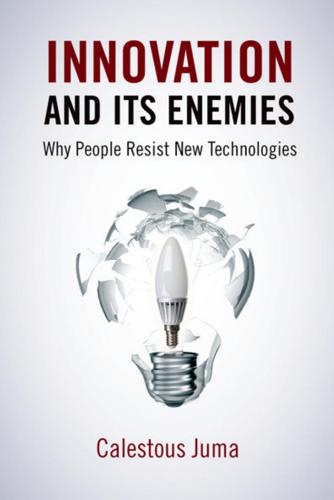
Innovation and Its Enemies
by
Calestous Juma
Published 20 Mar 2017
These operator requirements create the safeguard of a driver who is capable of taking control of the vehicle when needed.” California Department of Motor Vehicles, “Summary of Draft Autonomous Vehicles Deployment Regulations,” December 16, 2015: 2. 30. Bob Sorokanich, “California Proposes Tightened Regulations on Autonomous Cars,” Roadandtrack.com, December 17, 2015. 31. R. Rycroft and D. Kash, “Path Dependence and the Modernization of Agriculture: A Case Study of Aragon, 1955–1985,” Technology Analysis and Strategic Management 14, no. 1 (2002): 21–35. 32. Marie-Laure Djelic and Sigird Quack, “Overcoming Path Dependency: Path Generation in Open Systems,” Theory and Society 36, no. 2 (2007): 161–186. 33.
…
For a discussion on ideas, see Bernard Barber, “Resistance by Scientists to Scientific Discovery,” Science 134, no. 3479 (1961): 596–602. 29. The bill read, “Autonomous vehicle operators must be a licensed driver who possesses an autonomous vehicle operator certificate issued by the DMV. The operator will be responsible for monitoring the safe operation of the vehicle at all times, and must be capable of taking over immediate control in the event of an autonomous technology failure or other emergency. In addition, operators will be responsible for all traffic violations that occur while operating the autonomous vehicle. These operator requirements create the safeguard of a driver who is capable of taking control of the vehicle when needed.”
…
Computer-aided diagnosis, robotic surgery, and myriad medical devices are already changing the role of doctors and how medical care is provided.7 Artificial intelligence and computer algorithms are influencing the way basic decisions are made. Battlefields are being automated with drones and other autonomous vehicles doing the work that used to be performed by a wide range of military personnel. Some of the advances are already shifting the locus of product development. Data-based firms such as Google and IBM are moving into pharmaceutical research. Sharing services such as Uber are acquiring robotics and other engineering capabilities.
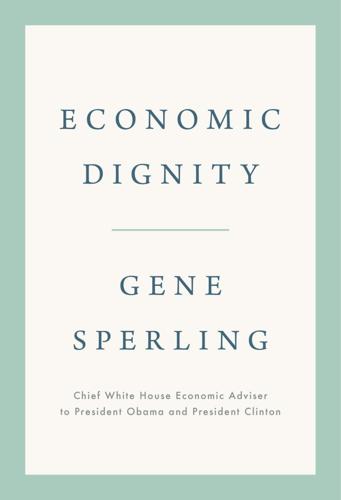
Economic Dignity
by
Gene Sperling
Published 14 Sep 2020
Erik Brynjolfsson and Andrew McAfee also highlight 99Degrees Custom, an apparel maker in Lawrence, Massachusetts, as an example of how technology can generate jobs. “99Degrees Custom embraces a highly engineered, partially automated production line to make highly customized textile products.”70 That approach has allowed 99Degrees Custom to create new jobs that are “more varied, more highly skilled, and better paid” than “the old [textile] factory jobs.”71 The Massachusetts Executive Office of Housing and Economic Development gave the company a $2.8 million tax credit provided that the company hire 350 additional workers by 2023.72 Why shouldn’t all states provide tax credits for such companies that marry dignified labor and new technology? While most of the focus on autonomous vehicles and job loss has been on truck drivers and taxicab drivers, about six hundred thousand bus driver jobs—more than twice the number of taxi driver jobs—are at risk.73 Bus drivers typically work for the government and are disproportionately people of color and women.74 Instead of simply pocketing a reduction in labor costs due to autonomous vehicles, local governments could use extra tax dollars to reimagine how public transportation works for its citizens. Bus drivers are already “highly skilled customer-service” workers who manage conflicts and help people with directions, among other things.75 If we come to a day when fewer bus drivers are needed full-time, rather than just eliminate jobs, cities could train them and future “bus managers” to monitor and address bullying among schoolchildren, help older citizens explore their city, and better accommodate those with disabilities.
…
What is rarely noted is that the short run can be a lifetime.”7 Or three. Today, there are new looming threats that could cause even bigger upheavals than the automobile in the twentieth century—and they are occurring during an era of globalization that puts more pressure on jobs in the United States. Artificial intelligence (AI), robots, and autonomous vehicle technology are among the new technological advances that threaten major economic disruption. A quarter of American adults say the possibility that robots and computers could do many of the jobs done by humans makes them feel “very worried.”8 A widely cited study by Frey put the number of U.S. jobs at high risk of being automated in the next decade or two due to advances in AI and robots at 47 percent.9 According to a Brookings Institution study, thirty-six million jobs “will face high exposure to automation in the coming decades.”10 Some experts project up to three million jobs could be at risk due to self-driving trucks and cars.11 Martin Ford, author of Rise of the Robots, believes that artificial intelligence “could very well end up in a future with significant unemployment . . . maybe even declining wages . . .
…
Yet, as currently designed, these reforms turn back the clock from the protections for negative dignity in the private sector that grew out of the Progressive Era and were designed to ensure that the most vulnerable workers were not overwhelmed by the market power of employers. A NARROW VISION OF PEOPLE SUFFERING Some Dignity of Work Conservatives focus on the real policy neglect that many—particularly working-class white males—have felt in especially hard-hit manufacturing and coal communities, or could feel through technological disruptions like autonomous vehicles. They are certainly correct to draw attention to such neglect. But too often, their deployment of the need for “dignity” seems reserved for this limited segment of the population. And, having raised the sense of neglect, they call for precious few tangible policies that could remedy such dignity gaps.
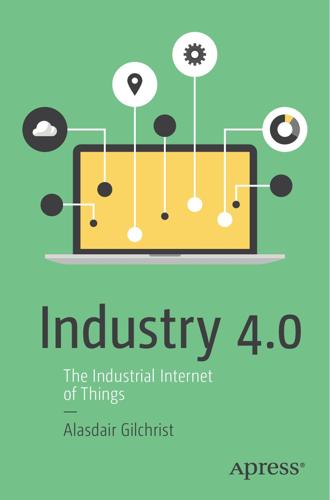
Industry 4.0: The Industrial Internet of Things
by
Alasdair Gilchrist
Published 27 Jun 2016
By using a strategy of sensors, remote communication, and Big Data analytics, Thames Water can anticipate equipment failures and respond quicker to any critical situation that may arise due to inclement weather. However, other industries have other tactical priorities when deploying IIoT, one being health and safety. Here we have seen some innovative projects from using drones and autonomous vehicles to inspect Oil and Gas lines in inhospitable areas to using autonomous mining equipment. Indeed Schlumberger is currently using an autonomous underwater vehicle to inspect sub-sea conditions. The unmanned vehicle travels around the ocean floor and monitors conditions for anything up to a year powered only by wave motion, which makes deployment in remote ocean locations possible, as they are both autonomous and self-sufficient requiring no local team support.
…
Ideally, a forklift would communicate with other forklifts, ensuring they were aware of one another to take avoiding action, such as slowing or stopping at blind intersections if another forklift is detected in the immediate vicinity. However, in the developed world it is still far more common to pick-by-paper, which is the term applied to the manual human picking of goods from a shelf. Forklifts, autonomous vehicles, and robots are great for heavy lifting of large pallets, but not much use for picking small intricate articles out of a stock bin. This is where human workers are in their element. Remember all those pedestrians being injured in the warehouse by forklifts? Well those pedestrians are most likely to be the pick-by-paper workforce.
…
In an industrial scenario, accuracy and resolution are both critical components of the control functions, and as such, the logic, the compute element, is usually situated as close to the sensors as is technically feasible. Examples of control domains may be in a large IIS system, for example, a control room in a nuclear plant or in smaller IISs a microprocessor in an autonomous vehicle, which controls temperature in a smart office. The control domain is made up of a set of common functions, which may well vary in their complexity. An example could be that the IIS will require sensors and therefore the control domain will require a function to be able to read sensor activity.
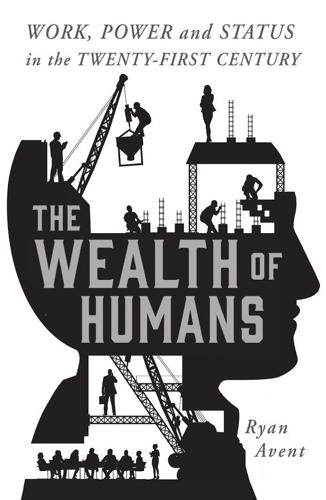
The Wealth of Humans: Work, Power, and Status in the Twenty-First Century
by
Ryan Avent
Published 20 Sep 2016
About five million Americans work providing ‘transportation services’, including about half a million cab drivers and nearly one and a half million drivers of freight trucks.13 Autonomous vehicles could eliminate all of that work. But that would only be the beginning. Driverless vehicles might double as nannies, picking up youngsters from school and delivering them to a parent’s office or an after-school activity. They could facilitate the near-complete automation of massive amounts of retail; many grocery shops might vanish as consumers could instead get into the habit of mentioning to their smartphone when a bottle of wine is needed, which could then be ferried from a nearby warehouse by autonomous car. Car ownership might itself become obsolete, since vehicles of any sort could be hailed instantly.
…
With a few keystrokes they can see whether rearranging the enormous machines will save time or leave robots banging their metal arms together. Today, automobile manufacturing is first and foremost a software business, as opposed to an industrial operation. The value of the code in the machines becomes relatively more important as cars get smarter; Volvo, like many manufacturers, is working to get autonomous vehicles in regular operation on Swedish streets within the next few years. Already the cars are smart enough to do much of the brainwork involved in driving, from plotting routes to keeping a safe distance from the car ahead. Driverless cars are not yet generating discomfort among the men who drive cabs around central Gothenburg, many of whom are immigrants or the children of immigrants.
…
Karabarbounis, Loukas, and Neiman, Brent, ‘The Global Decline of the Labor Share’, Quarterly Journal of Economics; Elsby, Michael, Hobijn, Bart, and Sahin, Aysegul, ‘The Decline of the US Labor Share’, Brookings Papers on Economic Activity, Fall 2013. 3. In Search of a Better Sponge 1. EIA (http://www.eia.gov/beta/international). 2. BLS, State and Metro Area Employment, hours and earnings. 3. Logan, Bryan, ‘Mercedes-Benz’s Self-driving Big-rig Proves that Autonomous Vehicles are Coming Sooner than We Think’, Tech Insider, 5 October 2015. 4. Crooks, Ed, and Hornby, Lucy, ‘Sunshine Revolution: The Age of Solar Power’, Financial Times, 5 November 2015. 5. BLS, Current Employment Statistics. 6. From the author’s own conversations with Michael Mandel. 7.
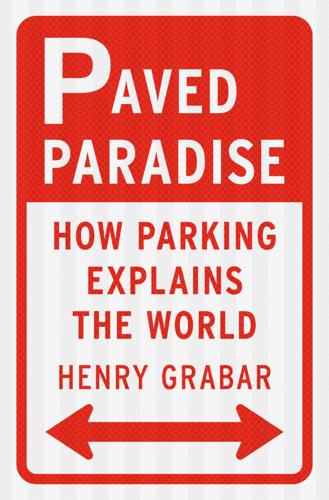
Paved Paradise: How Parking Explains the World
by
Henry Grabar
Published 8 May 2023
Daley Oral Histories, University of Illinois–Chicago Digital Collection, collections.carli.illinois.edu/digital/collection/uic_rmdoh/id/18/rec/43. Go to note reference in text When Daley offered him the job: Paul Volpe, interview. Go to note reference in text In 2016, for example, the country’s: Michael Maciag, “How Autonomous Vehicles Could Affect City Budgets,” Governing, July 28, 2017, governing.com/gov-data/gov-how-autonomous-vehicles-could-effect-city-budgets.html. Go to note reference in text off by more than a thousand: Michael Condon, The Chicago Parking Meter Concession of 2008 (Chicago: Windy City Publishing, 2017), 4. Go to note reference in text “strengthen our city finances”: “Chicago Privatization Blitz Draws Critics,” NPR, December 8, 2008, npr.org/templates/story/story.php?
…
To avoid the prohibitive cost and waste of a car charger in every parking spot, cities will need to come up with more sophisticated ways to dictate how curbs are used to make sure every driver gets the power they need, and to ensure older neighborhoods where people park on the street don’t get left behind. Extension cords hanging out the window are not going to cut it. But that is nothing compared to the shake-up in store if autonomous vehicles one day master the roadway. Already new cars can park themselves; if that technology can be applied at the scale of a parking lot, the amount of space needed to store cars will shrink dramatically as stalls get narrower and access lanes vanish. Imagine your morning commute in a future of autonomy: You live in a big house, far from the city, because what’s an extra few miles driving to work when you don’t have to steer?
…
See Adaptive Reuse Ordinance Aspen, Colorado, 261–62 The Atlanta Journal-Constitution (newspaper), 109 attendants, parking, 31, 32, 35, 37, 92–93, 106 theft by, 94–96, 97–98 Austin, Texas, 29, 85, 182, 205, 213–14, 282–83 Australia, Melbourne, 21 automobiles, xv, 32, 55, 74, 216, 235–36 dependency on, 158–59 effect on housing, 216, 239 electric vehicle, 278–79 homeless people sleeping in, 229, 243 autonomous vehicles, 26, 279 B backyards, garage effect on, 236–38 Baer, Kate, 269 Bailey, Beth, 239 Banning, Christine, 108 Barter, Paul, 210 Bartholomew, Harland, 55 Bayley, Lindsay, 201–2, 203–4, 210 beaches, 8–9, 13 Beame, Abe, 99–100 Beckerman, Dan, 194 Bela, John, 251–52 Belmore, Bruce, 159–60 Berens, Jeff, 224–25 Berkeley, California, xi, 10–11, 210 Berkley, George, 73 Berkowitz, David, 37 Berra, Yogi, 57 Berry, Wendell, 130 bicycles, 256, 257–58, 264, 271, 275 “Big Yellow Taxi” (song), 160 Bill & Melinda Gates Foundation, 83–84 black market, for parking placards, 45 Blackwell, Clifton, 23 de Blasio, Bill, 270, 271 Bloom, Richard, 233–34 Bloomberg, Michael, 44–45, 253 Boston, Massachusetts, xii, 20, 86, 94 Bothell, Seattle, 208 Bothellites for People-Oriented Places, 208 Boxer, Leonard, 100 Braun, Carol Moseley, 136 Brays Bayou, Houston, 77 Brondolo, Elizabeth, 38–39 Brooklyn, New York, 82 Brown, Bridget, 208 Brown, Denise Scott, 181 Brown, Herb, 15 Bruck, Connie, 103–4 Buffalo, New York, 20–21, 66 buildings, xi–xii, xiii–xiv, 21 as expression of values, xviii mixed-use, 217 Bullocks department store, 68, 171–73 Bureau for Street Traffic Research, Harvard, 53 Burke, Ed, 126, 134 BusinessWeek (magazine), 61 bus stops, in San Francisco, 258–59 C Caesar, Julius, xv Cafaro, Vincent, 102–3 California, 7–8, 85, 148, 212.
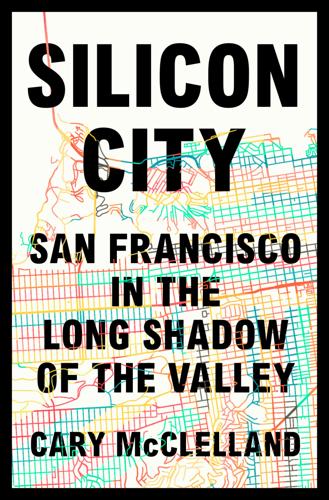
Silicon City: San Francisco in the Long Shadow of the Valley
by
Cary McClelland
Published 8 Oct 2018
* Apple’s first iconic product—with a housing, monitor, and keyboard—the Apple II was a huge leap forward from the Apple I, which was just a spare circuit board hobbyists could use to build their own computer. † The Defense Advanced Research Projects Agency (DARPA) invests on behalf of the US government in groundbreaking technology for national security. It hosted a series of competitions, challenging students from the nation’s top universities to demonstrate breakthroughs in robotics and autonomous vehicles. ‡ Economist Joseph Schumpeter described “creative destruction” as a kind of mutagenic or Darwinian force at the heart of capitalism—one that “incessantly revolutionizes the economic structure from within, incessantly destroying the old one, incessantly creating a new one.” § The Stanford University Founding Grant provides that the gifted land “shall constitute the foundation and endowment for the University herein provided, and upon the trust that the principal thereof shall forever remain intact, and that the rents, issues, and profits thereof shall be devoted to the foundation and maintenance of the University hereby founded and endowed, and to the uses and purposes herein mentioned
…
I only had an hour a day, but that made it even more interesting to squeeze the most out of it. I arrived here in September of 2004 to get my PhD, and by October, I was in the Mojave Desert. The research group I joined had started a really cool project, building a car that drives itself. There was a race called the DARPA Grand Challenge, 150 miles, autonomous cars racing through the desert.† I built the computer vision: using a combination of lasers and cameras to figure out what the road looks like and to decide when we could drive faster and slower. In the desert, you just had to drive straight ahead, but on real roads, you had to look all around you for other cars, for lane markers and so on.
…
The internet was built by DARPA. GPS, accelerometers, they were funded by DARPA. Government funding did everything here, all the instruction, the training. The self-driving cars were a DARPA program twenty years ago. It wasn’t invented by Sebastian Thrun, who will be now known as the inventor of the autonomous car. He won the second DARPA Grand Challenge, not the first one. He didn’t even enter into the first one. What enables Uber? The internet. GPS in every car, on every phone. A huge number of programming languages—the first thirteen layers of the software stack, all of that structure was written on government funds.

WTF?: What's the Future and Why It's Up to Us
by
Tim O'Reilly
Published 9 Oct 2017
In many ways, this would change their business model to one closer to that of Airbnb, in which the participants in the marketplace provide an asset they own rather than their labor. But for this plan to work, Uber or Lyft would not need to develop their own autonomous vehicles, but instead could promote interoperability between different autonomous vehicle vendors. If the plan is something like “Buy your autonomous Tesla, drive it to work, and then let us use it for the rest of the day,” it would imply a mixed fleet of vehicles, requiring investments in interoperable control and dispatch. (Tesla seems to have other plans, though, forbidding their drivers from using their cars for Uber and Lyft, with the intention of rolling out its own competing service.
…
When people asked me what came after Web 2.0, I was quick to answer “collective intelligence applications driven by data from sensors rather than from people typing on keyboards.” Sure enough, advances in areas like speech recognition and image recognition, real-time traffic and self-driving cars, all depend on massive amounts of data harvested from sensors on connected devices. The current race in autonomous vehicles is a race not just to develop new algorithms, but to collect larger and larger amounts of data from human drivers about road conditions, and ever-more-detailed maps of the world created by millions of unwitting contributors. It’s easy to forget that in 2007, when Stanford won the DARPA Grand Challenge for self-driving vehicles, they did so by completing a seven-mile course in seven hours.
…
Ensuring interoperability of self-driving cars is as important as was the original interoperability that drove the Internet revolution. Open standards in this area will help ordinary people, not just big companies, to reap the benefits of the next wave of automation. Betsy Masiello, who works in public policy at Uber, responded to my questions on how the peer-to-peer model might mix with autonomous vehicles by saying that right now, people think of Uber as a replacement for taxis; perhaps instead, it will end up closer to peer-to-peer fractional car rental. It is likely that the reality will be a mix of both. Finally, if the augmented worker is indeed central to Uber and Lyft’s business model, perhaps the right way to think about self-driving cars is as a further augmentation, enabling new kinds of services.
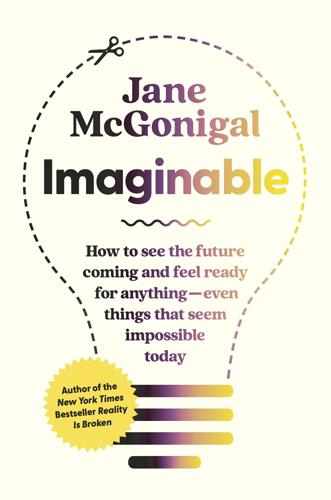
Imaginable: How to See the Future Coming and Feel Ready for Anything―Even Things That Seem Impossible Today
by
Jane McGonigal
Published 22 Mar 2022
I’ve learned a lot about futures thinking since that conversation with the innovation team more than ten years ago. What would I do differently if I had known then what I know now? I’d definitely invite them to take a quick mental time trip with me, so they could imagine their very first time riding in a completely autonomous vehicle. “Imagine it as vividly and realistically as you can,” I’d say to them. “What color is the car? Where are you going? How comfortable is the seat? Is anyone with you?” I’d give them a moment to pre-feel this future, and then I’d ask, “In one word, how would you describe the emotion you’re feeling during this first ride?”
…
I’ve since had thousands of students take on this exact imagination challenge as a mental warm-up for class. (Although in recent years, as self-driving technology has actually entered the marketplace, I’ve had to revise it slightly: “If you’ve already had this experience of riding in a completely autonomous vehicle, what was the main emotion you felt?”) I invite everyone to share their one-word emotional reaction on a giant whiteboard at the front of the classroom or, if we’re learning online, in chat. This is my favorite part, as everyone takes in the inevitably wide range of feelings. People predict they would feel excited, nervous, awed, terrified, curious, nauseated, grateful, thrilled, confused, vigilant, asleep, free.
…
A little over ten years ago, I was invited to the corporate headquarters of a major automotive manufacturer to give a talk to their innovation team about how video game technology might be incorporated into future cars. During a tour of a research facility, I got into a heated discussion with a few senior executives about whether self-driving, or autonomous, cars would ever take off as a popular alternative to people-driven cars. “Absolutely not,” one of them said. “We’re not even looking at that as a serious possibility,” another said. I asked why they were so confident in their opinion. “Cars are the ultimate expression of individual freedom,” one responded.

The Sharing Economy: The End of Employment and the Rise of Crowd-Based Capitalism
by
Arun Sundararajan
Published 12 May 2016
The results of a wide variety of independent study projects undertaken by my NYU undergraduates and MBA students have helped mold my early-stage research and thinking: the ones that stand out were by Humaira Faiz, Sydnee Grushack, Andrew Ng, and Jara Small (on inclusive growth in the sharing economy); Jonah Blumstein, Valeriya Greene and Eric Jacobson (on Airbnb and city regulations); Andrew Covell, Varun Jain, and June Khin (on the organization of sharing economy platforms); Phil Hayes (on surge pricing); Dmitrios Theocharis and Siri Zhan (on the on-demand workforce); Ann Dang, Louise Lai, and Daniella Tapia (on the global variation in regulation); Lauren Tai (on regulating autonomous vehicles); Karl Gourgue, Manasa Grandhi, and Joyce Fei (on decentralized models of research); Arra Malek, Ansh Patel, and Haley Zhou (on apparel rental models); Laura Kettell and Karina Alkhasyan (on peer-to-peer finance); and Keerthi Moudgal (on peer-to-peer retailing). Although I have been captivated by the sharing economy for many years now, the emergence of this book was catalyzed by a series of email messages that my editor at the MIT Press, Emily Taber, sent me in April 2015.
…
The accommodation, transportation, and freelance labor sectors have been the earliest to see big changes induced by crowd-based capitalism, but commercial real estate, health care provision and energy production and distribution will soon follow. And the digitization of the physical will, over the coming decade, yield mass-market autonomous vehicles in the United States, Western Europe and parts of Asia, radically reshaping the automobile industry, shifting market power away from today’s leading manufacturers and towards a range of technology platforms—Uber, Lyft, Didi Kuaidi and Ola, as well as Apple, Google, and perhaps even Amazon. In parallel, the additive manufacturing revolution will change how artifacts are made, shifting more and more production into the crowd.
…
Indeed, taxi drivers (most of whom in larger cities do not own their cars or “medallions”) switch to Uber every day; we have already seen evidence of a drop of about 30% in the price of a New York City yellow cab medallion.30 And in July 2015, Evgeny Freidman, the largest owner of yellow cab medallions in New York, filed a petition to put many of his medallion-owning companies into bankruptcy.31 And the eventual impact of on-demand transportation will likely be on the automobile industry as a whole, accelerated by autonomous cars becoming a mass-market commercial reality over the next decade. A significant fraction of consumer spending on automobiles will shift to a growing variety of on-demand mobility services. Industrial organization economics teaches us that as product variety increases, people will consume more rather than less.
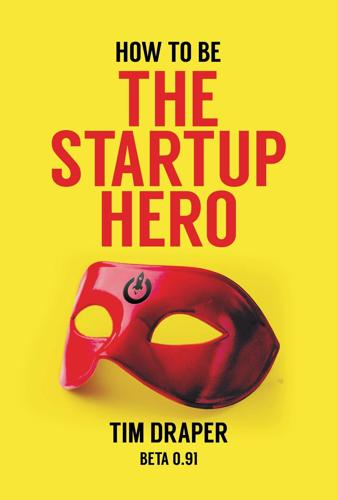
How to Be the Startup Hero: A Guide and Textbook for Entrepreneurs and Aspiring Entrepreneurs
by
Tim Draper
Published 18 Dec 2017
Every new innovation adds to the wealth of a society, and with all the innovation that comes from a world of people who are educated and up to date on new innovations, our world should grow substantially. The people of the world will have access to global information, global governance, global currency and global markets. They will be mobile and less tied to any single geographic region. And now for my wilder predictions: People will be traveling in autonomous vehicles and communicating through virtual (or augmented) reality. They will be living very long lives, while cures for cancer and the aging gene are discovered. Their health will be monitored by sensors designed into their clothes, which will be optically programmable to the owner’s tastes to match what is required for any occasion.
…
The jobs that computers can potentially do better are the monotonous jobs, like driving us or our things from one place to another, analyzing data patterns of customers, and administering regulations. These monotonous jobs will give way to jobs that are more abstract (and frankly more interesting) like monitoring autonomous vehicles, enhancing customer experiences, and improving banking, legal, accounting or even government service. While some may have difficulty adjusting to the new world, the jobs in the new world will be more interesting and more fulfilling. After all, before the industrial revolution, most people had to be out working on the farms, but with automation, a lot of those manual jobs were replaced with more interesting abstract jobs, and we adjusted.
…
A more abstract business takes what is out there today and anticipates or even “guesses” what will happen in the future. Seeing Uber’s success, you might think of a delivery business, but there are many of them already out there, so you can abstract from there and think of a drone delivery business or an autonomous car delivery business. You might think that those abstract businesses would have a lower chance of success. They do! But I want you to think about success as a Startup Hero. A Startup Hero transforms the world, disrupts the status quo and looks for opportunities that others might think are crazy.
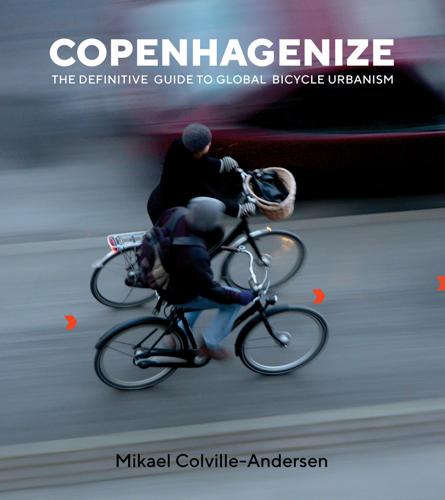
Copenhagenize: The Definitive Guide to Global Bicycle Urbanism
by
Mikael Colville-Andersen
Published 28 Mar 2018
There are, it must be said, examples of car companies greenwashing with bikes in the commercial, filming the car in the city from bikes, and even producing bikes that fit in the trunks of their cars. They’re worried and they don’t know exactly what to do. Two of the main Big Auto players, BMW and Ford, are trying to reinvent themselves as “mobility companies,” but largely the industry is still stuck in its ways. Add to this the concerted effort being made to hype electric vehicles and autonomous vehicles as the next big thing that will change the world. The former only eliminates one aspect of the problem—emissions. The latter brings new problems with it. I recall reading a quote on Twitter that “In Amsterdam, a Google self-driving car would park itself after a few minutes and start crying.”
…
Desperately trying to cement, in the public consciousness of its citizens, the rather outdated philosophy that cars rule supreme and everyone else is a mere pawn to be swept aside without regret. When look at similarities between all these organizations, one thing is shockingly clear. None of them will ever say that a drastic reduction of cars would save lives. It’s all talk and no serious action. They also have a tendency to support electric vehicles and autonomous vehicles, not at all aware of the irony that such vehicles still take up public space and will still contribute to death and injury. None of them have urban-planning experience, or if they do touch upon it, they never mention it. They spend most of their time vehemently protecting their status as “traffic safety authorities.”
…
I told him it was 1985. He laughed. “So Doc went 30 years into the future … that’s like … NOW! But there are no flying cars and goofy clothes …” Nope. He nailed it. A century of technological—and fashion—promises that failed to deliver. A saeculum horribilis from which we need to recover. Feel free to lump autonomous cars and the hype surrounding them into the same category. When I speak of the importance of going to back to the future, I mean to a place where we were rational and realistic. Back to a time—or times—where we did things that made sense. Graph by Professor Phil Goodwin showing traffic projections by Britain’s Department for Transport (in color) and the actual car traffic growth (black).

Machine, Platform, Crowd: Harnessing Our Digital Future
by
Andrew McAfee
and
Erik Brynjolfsson
Published 26 Jun 2017
Environmental control is necessary when pieces of automation have primitive brains and no ability to sense their environments. As all the elements of DANCE improve together, however, pieces of automation can leave the tightly controlled environment of the factory and head out into the wide world. This is exactly what robots, drones, autonomous vehicles, and many other forms of digital machines are doing at present. They’ll do much more of it in the near future. What Humans Do in a World Full of Robots How will our minds and bodies work in tandem with these machines? There are two main ways. First, as the machines are able to do more work in the physical world, we’ll do less and less of it, and instead use our brains in the ways described in earlier chapters, and in the next one.
…
Phase two, which we believe we’re in now, has a start date that’s harder to pin down. It’s the time when science fiction technologies—the stuff of movies, books, and the controlled environments of elite research labs—started to appear in the real world. In 2010, Google unexpectedly announced that a fleet of completely autonomous cars had been driving on US roads without mishap. In 2011, IBM’s Watson supercomputer beat two human champions at the TV quiz show Jeopardy! By the third quarter of 2012, there were more than a billion users of smartphones, devices that combined the communication and sensor capabilities of countless sci-fi films.
…
As Urmson recounted at the 2015 TED conference, “Our vehicles were driving through Mountain View, and this is what we encountered. This is a woman in an electric wheelchair chasing a duck in circles on the road. Now it turns out, there is nowhere in the DMV handbook that tells you how to deal with that, but our vehicles were able to encounter that, slow down, and drive safely.” Autonomous cars that can drive safely in all circumstances and conditions are not here yet. But we think they’re coming quickly. The ability of machine language to overcome Polanyi’s Paradox is starting to be put to use in white-collar back-office work that has, to date, proved surprisingly resistant to complete automation.

User Friendly: How the Hidden Rules of Design Are Changing the Way We Live, Work & Play
by
Cliff Kuang
and
Robert Fabricant
Published 7 Nov 2019
That’s the point behind both the rules governing polite conversation and how a user-friendly machine should work. Months after I took my test drive in the Audi that drove itself, the user-experience researchers at Volkswagen gathered in an empty parking lot to try to figure out how pedestrians would behave around an autonomous vehicle. It seemed a given that it would scare them. “Unless people are standing on the pavement with the vehicle, you can’t appreciate how they’re going to feel,” pointed out Erik Glaser, the young project leader. The experiment demanded a giant tent over the parking lot, to control how the light spilled across the bare-bones street intersection they had created overnight.
…
He runs the user-experience group at Volkswagen’s little-known Electronics Research Laboratory, and his very bland job description belies how much time he spends living in the future.5 A psychologist by training, California born and raised, Lathrop is burly with close-cropped hair like an army sergeant. He speaks with the painstakingly precise diction of a scientist. But he’s also an inventor, the coauthor of several patents that might prove decisive for autonomous cars. Fifteen years ago, Lathrop found his job on Monster.com, and even the guy who hired him didn’t quite know what he’d be doing at Volkswagen. There were fifteen engineers, and when Lathrop arrived they all assumed that he’d be the sixteenth. His first week, they handed him some circuit boards to solder.
…
What’s more, your fellow drivers haven’t dedicated their lives to training themselves to safely drive a car. They aren’t paid to keep other people safe. They aren’t paid not to put on their makeup or read their email during rush hour. Lathrop thought to himself, What are the odds that someone with a background in aviation was coming to work on autonomous cars in 2010? He was the only one, as far as he could tell. By the time we first met, in 2016, he had logged more years working on driverless cars than all but a few people in the world. He’d been set down that path by a book by another human-factors scientist, Asaf Degani, suggestively titled Taming Hal, after the killer computer in Stanley Kubrick’s 2001.
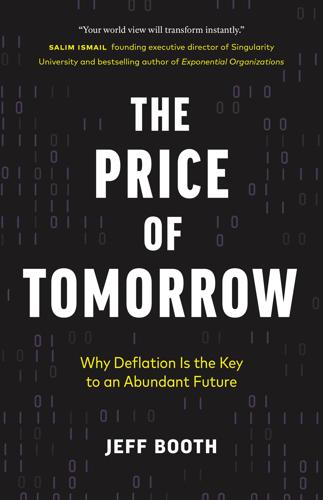
The Price of Tomorrow: Why Deflation Is the Key to an Abundant Future
by
Jeff Booth
Published 14 Jan 2020
A technology that reduces costs so significantly and produces better outcomes is again deflationary in nature and, because of market incentives, impossible to stop. For now, we have both the overhead of the existing legacy system in drivers (more than 3 percent of the United States workforce are drivers), manufacturing capacity to produce for the 5 percent utilization rate, insurance, and accidents, combined with all of the new investment in autonomous vehicles. That means that today’s job numbers and growth rates of the economy are much higher than they will be in the future as the legacy system is transitioned to the new. The deflationary forces of the transition have not even begun to be experienced. For example, self-driving cars today still require oversight from a human operator because of regulation requiring someone to sit in the seat and be paid even if never called upon.
…
Here’s why: if I can have a car whenever I need it without requiring a driver, I am likely to either 1) decide not to buy a car because I have access to a car whenever needed or 2) if I do buy a car, allow it to be used by others to help me pay for the asset I own. With either choice, utilization rates on cars should move much higher. That means that current forecasts of continually increasing demand for automobiles are very wrong. Instead, automotive production, and the jobs with it, could fall by 50 percent or more as autonomous cars move into the mainstream. Automotive companies, instead of making money through the sale and service of vehicles, will need to adjust their models to remain viable. Most likely that adjustment will have them selling cars as a service option, similar to software-as-a-service models in technology delivery today.

Only Humans Need Apply: Winners and Losers in the Age of Smart Machines
by
Thomas H. Davenport
and
Julia Kirby
Published 23 May 2016
We see no reason why this wouldn’t happen in surgery over the next couple of decades. Autonomous vehicles are another area of intelligent technology involving physical tasks—moving and getting things around. These vehicles employ a combination of GPS and digital maps, light radar (“lidar”), video cameras, and ultrasonic, radar, and odometry sensors to generate and analyze a massive amount of data about the vehicle’s position and surroundings. We probably don’t have to tell you too much about this area, because it gets more than its share of media attention. But it’s a good bet that autonomous cars and trucks will be commonplace on our streets within the next decade.
…
And the third: “A robot must protect its own existence, as long as such protection does not conflict with the first or second law.” Plenty of people have pointed out that the laws are problematic, because social situations are complex. Legendary investor Warren Buffett, for example, raised a common question about autonomous vehicles during a forum hosted by the National Automobile Dealers Association. What if, he asked, a toddler runs into the street in front of a self-driving car, and the robot’s only option not to hit that child is to swerve into the path of an oncoming vehicle with four people in it? After that split-second decision is made and fatal accident results, said Buffett, “I am not sure who gets sued.”

Click Here to Kill Everybody: Security and Survival in a Hyper-Connected World
by
Bruce Schneier
Published 3 Sep 2018
For this reason, machine-learning systems are becoming more pervasive in many areas of society. For the same reasons, we’re allowing algorithms to become more autonomous. Autonomy is the ability of systems to act independently, without human supervision or control. Autonomous systems will soon be everywhere. A 2014 book, Autonomous Technologies, has chapters on autonomous vehicles in farming, autonomous landscaping applications, and autonomous environmental monitors. Cars now have autonomous features such as staying within lane markers, following a fixed distance behind another car, and braking without human intervention to avert a collision. Agents—software programs that do things on your behalf, like buying a stock if the price drops below a certain point—are already common.
…
And companies will give away services for free to get that access. Just as Google and Facebook give away services in exchange for the ability to spy on their users, companies will do the same thing with the IoT. Companies will offer free IoT stuff in exchange for the data they receive from monitoring the people using it. Companies owning fleets of autonomous cars might offer free rides in exchange for the ability to show ads to the passengers, mine their contacts, or route them past or make an intermediate stop at particular stores and restaurants. Battles for control of customers and users are going to heat up in the coming years. And while the monopolistic positions of companies like Amazon, Google, Facebook, and Comcast allow them to exert significant control over their users, smaller, less obviously tech-based companies—like John Deere—are attempting to do the same.
…
Digital rights management was the technical solution that failed, and the DMCA was the law that came after. It has only been effective at preventing hobbyists from making copies of digital music and movies. It hasn’t prevented professionals from doing the same thing, and it hasn’t prevented the spread of copyrighted works with the DRM protections removed. The fear of hacked autonomous-car software or printed killer viruses will be much greater than the fear of illegally copied songs. The industries that will be affected are much more powerful than the entertainment industry. Both government and the private sector will look at the entertainment industry’s experience with DRM and correctly conclude that the problem is that computers are, by nature, extensible.

A World Without Work: Technology, Automation, and How We Should Respond
by
Daniel Susskind
Published 14 Jan 2020
Avery Hartmans, “These 18 Incredible Products Didn’t Exist 10 Years Ago,” Business Insider UK, 16 July 2017. 10. Andre Esteva, Brett Kuprel, Roberto A. Novoa, et al., “Dermatologist-Level Classification of Skin Cancer with Deep Neural Networks,” Nature 542 (2017): 115–18. 11. See Jeff Reinke, “From Old Steel Mill to Autonomous Vehicle Test Track,” Thomas, 19 October 2017; Michael J. Coren, “Tesla Has 780 Million Miles of Driving Data, and Adds Another Million Every 10 Hours,” Quartz, 28 May 2016; and Alexis C. Madrigal, “Inside Waymo’s Secret World for Training Self-Driving Cars,” Atlantic, 23 August 2017. 12. David McCandless, “Codebases: Millions of Lines of Code,” 24 September 2015, https://informationisbeautiful.net/visualizations/million-lines-of-code/ (accessed 25 April 2018). 13.
…
See artificial narrow intelligence antitrust legislation apathy apotheosis Apple Archilochus Arendt, Hannah Ariely, Dan aristocracy Aristotle Arrow, Kenneth artificial general intelligence (AGI) artificial intelligence (AI) automata and bottom-up vs. top-down economics and fallacy of first wave of general history of priority shift and second wave of artificial narrow intelligence (ANI) artificial neural networks artisan class assembly lines AT&T Atari video games Atkinson, Anthony ATMs (automatic teller machines) automata automation, number of jobs at risk of automation anxiety automation risk autonomous vehicles Autor, David bandwagon effect bank tellers basic income conditional overview of universal Becker, Gary Bell, Daniel Berlin, Isaiah Beveridge, William Beveridge Report bigger-pie effect Big State capital-sharing and conditional basic income and income-sharing and labor-supporting meaning creation and overview of taxation and welfare state vs.
…
Consider what it takes to train and evaluate a car-driving system, for example. To do this, Uber built an entire mock town on the site of an old steel mill in Pennsylvania, complete with plastic pedestrians that occasionally throw themselves into traffic, and gathers data as their cars drive around it. Tesla, meanwhile, collects data from its non-autonomous cars as they are driven by their owners, with about a million miles’ worth of data reportedly flowing in every hour. Google has adopted yet another approach to the problem, creating entire virtual worlds to gather data from cars driving around in these simulations.11 Then there is the matter of the software.
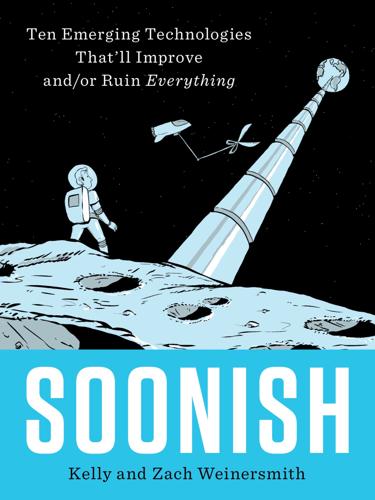
Soonish: Ten Emerging Technologies That'll Improve And/or Ruin Everything
by
Kelly Weinersmith
and
Zach Weinersmith
Published 16 Oct 2017
J., Arkin, A., Cai, Y., Carlson, R., Chakravarti, A., Cornish, V. W., Holt, L., et al. The Genome Project-Write. Science 353, no. 6295 (2016):126–27. Bolonkin, Alexander. Non-Rocket Space Launch and Flight. Amsterdam and Oxford: Elsevier Science, 2006. Bonnefon, J.-F., Shariff, A., and Rahwan, I. “The Social Dilemma of Autonomous Vehicles.” Science 352, no. 6293 (2016): 1573–76. Bornholt, J., Lopez, R., Carmean, D. M., Ceze, L., Seelig, G., and Strauss, K. “A DNA-Based Archival Storage System.” Proceedings of the Twenty-First International Conference on Architectural Support (2016):637–49. Bostrom, Nick, and Cirkovic, Milan M.
…
Instead of comparing a universe of flawed 2D image files, you get the outline of local buildings and compare to a single 3D file. Sounds great! The problem is that it’s historically been superexpensive. Like, only used by huge government agencies expensive. But over time the cost has come down. In fact, one of the reasons autonomous cars are starting to come to market is that you can get a decent LiDAR system on your van for only a few thousand bucks. The downside is that the lightest ones still weigh around 10 to 20 pounds. Still, the technology for visual AR is coming along nicely. “But,” you interject, “what about my other senses?
…
Gerald Bull, Iraq and the Supergun (Lowther), 50 Army, U.S., 47, 313n arsenic, 211 art, 183 artemisinin, 198–200 artificial intelligence, 136, 139–40 artificial organs, see bioprinting artspeak, 138 Artsutanov, Yuri, 35 Asian elephants, 223 Asians, 196n asteroid mining, 52–69, 320n benefits of, 68–69 environmental degradation in, 66–67 finances of, 54–56 law and order in, 65–66 problems facing, 58–65 rights to, 63–64 safety and, 67 asteroid-moving technology, 67 asteroids: escape velocity of, 55 landing on, 62–63 net capture of, 63 rubble pile, 62 types of, 53–54 atmosphere, density of, 25, 29 atomic bombs, 79, 96, 98 atomic gardening, 191–92 ATP, 286 augmented reality (AR), 8n accuracy required for, 171 audio in, 174 benefits of, 183–86 concerns about, 180–83 hacking of, 183 hardware for, 168 location detection for, 171–74 markers in, 169–71 motion sickness in, 168 possible uses for, 164–66, 168, 177–79, 183–86 reference images in, 172–73 registration in, 166–68, 172–73 smell in, 174–75 vs. virtual reality, 165 where are we now in, 175–79 Augmented Reality Lab, 173, 177–78 Auschwitz, 183 Australia, 219 automotive industry, 136, 137 autonomous cars, 174 baby teeth, 99 bacteria, 203–5, 206, 210, 218 in bioprinted organs, 273 environmental monitoring by, 211–12 immune system of, 212–14 synthetic, 220–21 Bad Astronomy (blog), 36 Barbados, 47 Bartlett School of Graduate Studies, 141 Baseline Study, 254 bases, 192–93 Bauby, Jean-Dominique, 316 B cell, 242 behavior patterns, 231 Belize, 315, 316 Belleau Wood, Battle of, 178 Berger, Theodore, 308 beryllium, 92 Billinghurst, Mark, 176 biochar, 211, 239 bio-ink, 263–66 components of, 266–67 biomarkers, 230–31, 247 bioprinting, 144, 206, 257–81 benefits of, 274–75 concerns about, 272–74 state of the art in, 268–92 sugar sintering method in, 270 two techniques for, 263–66 Biostatistics Research and Consulting Center, 235 bioterrorism, 217 birds, 225 Blenner, Mark, 160 blind people, 310 bloodletting, 229 blood type, 195–96 blood vessels, 262, 268 bioprinting of, 269–71 Bloomberg View, 154 Boeing, 179 Bolonkin, Alexander, 62n bomb threats, 130 Booth, Serena, 129–30 Botella, Cristina, 179 Bovine Elite, LLC, 197n brain: drugs for modifying, 308 electric signals in, 285–86 invasive reading of, 294–95 metabolic signals in, 286–87 noninvasive electromagnetic reading of, 287–90 noninvasive metabolic reading of, 290–93 optimal conditions for learning in, 304–5 reading of, 285–99 superinvasive reading of, 295–99 upgrading of, 299–305 writing to the, 306–8 brain-computer interfaces, 282–317 benefits of, 311–14 brain reading and, 285–99 concerns about, 308–10 games for, 312 brain-to-brain connection, 312–13 brain tumors, 242–43 Brassica oleracea, 190 breast cancer, 240 breast exams, 238 breeding, 191 brewer’s yeast, 199 Brexit, 22n bricklaying, 139–42, 154 Brown University, 28 Brunner, Daniel, 91 Brussels, 50 Bucket of Stuff, 116–20, 124–25, 126, 128 Bull, Gerald, 45–50 Bull’s Eye: The Life and Times of Supergun Inventor Gerald Bull (Adams), 49 Bureau of Labor Statistics, 153, 155 Burj Khalifa, 25n Business Insider, 175 Butcher, Jonathan, 269 calcium, 99 California, University of: at Berkeley, 199, 212 at Davis, 234n, 328 at Santa Barbara, 176 at Santa Cruz, 222 Canada, 45–47, 48, 58, 321n Canadian Space Society, 53 cancer, 3, 206, 231, 234 continuing mutation of, 241 diagnosis of, 238–41 monitoring of, 243–44 treatment of, 241–43 cane toads, 219 Canterbury, University of, 176 capillaries, 262, 271 Caplan, Bryan, 56, 154 caraway seeds, 334–35 carbon, 52, 94, 211 carbon dioxide, 208–9, 210 carbon fiber, 143 carbon nanotube, 35–36 cardiac hypertrophy, 246–47 cars, 15, 24n cartilage, 271–72 Case for Space Solar Power, The (Mankins), 320 Case Western Reserve University, 151n Cas (protein), 213 cat bricks, 111 CD19 (molecule), 242 Cell and Organ Printing (Ringeisen), 259 cells, 192–93, 208, 260 bioprinting and, 264–66 mutant, 238 cellulose, 210 Center for Smell and Taste, 334 Centers for Disease Control, 217n Ceres, 60 Chagan, Lake, 100 Charpentier, Emmanuelle, 212 ChemBot, 124 chemical loop, 205 chemotherapy, 241, 247 Chicken McNuggets, 193n children, 110–11 children’s birthday parties, 178 China, 146, 219, 258 Chinese sweet wormwood plants, 198–99 chirality, 332–33 Church, George, 203, 214, 220, 223n, 252, 332, 335 CIA (Central Intelligence Agency), 48, 50 cilia, 187–88 Clemson University, 160 climate change, 41, 94 clothing, 154 cloud cover, 41 CNSA (China National Space Administration), 65 coal, 73 “Cobotics,” 141n cochlear implants, 306–7, 310 cognitive abilities, 304–5 cold fusion, 5 Cold War, 38 Collins, Francis, 214 Colorado, University of, 176 Comcast, 262 Comic-Con, 78n communications satellites, 34 Complete Anatomy Lab, 185 computerized manufacturing, 137 computers, 2, 101, 139 brain as, 283–84 prosthetics and, 322–23 quantum, 328–30 see also brain-computer interfaces concrete, 145, 155 Congress, U.S., 18, 64, 250, 274 construction, robotic, see robotic construction construction industry, 153–55 Construction Robotics, 141 construction workers, robots as, 139–44 contact lens, 176 Contour Crafting, 145, 146, 149, 156, 158 copper, 325 copper wire, 4, 5 Cornell University, 150, 162 cosmetic surgery, 185, 303 Cosmos 954, 58 Coulomb barrier, 77 cows, 210 CPS, 171 Craig, Alan, 182–83, 184 CRISPR-Cas9, 207, 212–14, 219, 236–37 Crohn’s disease, 247 ctDNA (circulating tumor DNA), 240, 244 C-type (carbonaceous) asteroids, 53 cyborg ear, 271–72 cystic fibrosis, 236–37, 248 D’Andrea, Raffaello, 152 Danforth, Christopher, 247 Daniels, Karen, 63 DAQRI, 179 DARPA (Defense Advanced Research Projects Agency), 124 Darth Vader (char.), 324 data encryption, 329 Dawn mission (NASA), 60 deaf people, 310 deep brain stimulation, 299–302, 304, 309 Deep Space Industries, 53 de-extinction, 221–25 Defense Department, U.S., 47 Delp, Michael, 59n Demaine, Erik, 102, 107–8, 118, 122, 128 dementia, 307 Dempsey, Gaia, 179 depression, 245, 247, 250, 301, 302 depth perception, via smell, 187 Derleth, Jason, 25–27, 35–36, 40 designer babies, 219 deuterium, 73–74, 77, 83 deuterium gas, 81–82 Deutsch, David, 330 diabetes, 245 diminished reality, 181–82 dinosaurs, 225 disease, 198–203, 217 Disney, Walt, 97 Diving Bell and the Butterfly, The (Bauby), 316 d-limonene, 210 DNA, 191, 192–98, 201–2, 204, 205, 213–14, 217, 221, 222, 234, 236, 239, 332 of mammoths, 222–23 as memory storage, 220 Doctor Who (TV show), 82 dogs, 187 Domburg, Jeroen, 161 Dong, Suyang, 177 Doudna, Jennifer, 212 Dowling, Jonathan, 330n drones, 152–53 drugs, 269 drug trials, 254–55, 268–69 Duff, David, 116 ears, 186 Earth, 16, 25, 31, 32, 33, 34, 37, 38, 39, 41, 42, 43, 49, 52, 53, 55, 56, 57, 59, 60, 67, 68, 69, 159, 169, 319 earwax, 196n East Germany, 135 ECoG (electrocorticography), 294–95, 298, 302 École Polytechnique Fédérale de Lausanne (EPFL), 112 ecology, 219 Edison, Thomas, 134, 146 education, 183–84 Edwards, Bradley, 31 EEG (electroencephalogram), 287–90, 291, 292, 294, 298, 299, 310 efficiency, 125–26 eGenesis, 207 EGFRvIII, 243 Egyptians, ancient, 6 Eiben, Gusz, 120n Eiffel Tower, 150, 171 Eisen, Jonathan, 234n electric shock therapy, 299 electromagnetic railgun, 24–25 electrons, 5 Elvis, Martin, 65–67, 68, 320n embryonic stem cells, 273 “emergency guide robot,” 130–32 Empire State Building, 172 environment: biosynthetic monitoring of, 210–12 fusion power and, 94 programmable matter in, 128 robotic construction and, 155–56 space flight damage to, 39–40 synthetic organisms and, 218–19 environmental movement, 97–98 EPFL Laboratory for Timber Construction, 143–44 epilepsy, 295, 302 escape velocity, 55 Escherichia coli, 198 ethanol, 286 Ethnobotany Study Book, 176 European Space Agency (ESA), 22, 27, 65 European Union, 22n Everett, Daniel, 140n evolution, 196 extinction, 221–25 eyes, 186 Faber, Daniel, 53, 68, 69 Fabricated: The New World of 3D Printing (Lipson and Kurman), 159 Fabric of Reality, The (Deutsch), 330 Facebook, 6n, 111, 180, 254 face-tracking software, 180 Falcon 9 rocket, 8n, 19 Faraday, Michael, 4, 6 fiducial marker, 169–70 fingertips, pruney, 126 Fisher, Caitlin, 173, 177–78 fission, 79n FitBit, 252n flexible electrode arrays, 298 Florida, University of, 300 Center for Smell and Taste at, 334 Florida State University, 59n flu, 247 flu vaccines, 217 flux pinning, 326–27 flying cars, 2 fMRI (functional magenetic resonance imaging), 290–91 fMRS (functional magnetic resonance spectroscopy), 292 fNIRS (functional near-infrared spectroscopy), 291 food, printed, 159–63 Food and Drug Administration (FDA), 254, 315, 316 foods, 190–91 Ford Motor Company, 97 Forgacs, Gabor, 268–69, 272 forked tongue, 187 “4D printing,” 103–5 France, 93n Frankenfood, 221 free fall, 42–43 “freezing of gait,” 301 Frostruder, 162 fuel cells, 208–9 fuels, 20, 208–10, 221 furniture, 127 Fusion: The Energy of the Universe (McCracken), 77 fusion bombs, 79 fusion power, 73–100 benefits of, 93–94 blast approach to, 84–85 breakeven point in, 88 concerns about, 91–93 confining and heating approach to, 85 research funding for, 92–93 where we are now with, 86–90 fusion reactors, 314 Fusor.net, 80 fusors, tabletop, 80–84 Gaia (robot), 129–30 Gatenholm, Dr., 269 gene drive, 201–3 gene expression, 239 General Fusion, 89 genes, 195–96, 197, 204, 215 gene sequencing, 2 Genetic Access Control (app), 251–52 genetic disorders, 3, 219, 235–37 Genetic Information Non-discrimination Act (2008), 250–51 genetic mutations, 40, 231 George Mason University, 56 Georgia Institute of Technology, 130 geostationary orbit, 32, 34, 43 Germany, Nazi, 135 Gilpin, Kyle, 118 GitHub, 251 Global Catastrophic Risks (book of essays), 125n glucose, 286 GMOs (genetically modified organisms), 221 Go-Between, The (Hartley), 331 gold, 52, 92 “Golden Promise” barley, 192 Google, 111, 180, 197n, 232, 254, 290 Google Glass, 175–76, 179, 186 Google Scholar, 247 gophers, 96–97 GPS, 171, 173 Gramazio, Fabio, 152 granite, 144 Grant, Dale, 46 gravity, 15–16, 42, 43, 52, 56, 78 “Gray Goo Scenario,” 125 gray wolves, 224 Graz University of Technology, 177 Great Britain, 22 Great Depression, 45 Greeks, ancient, 6 Greenpeace, 94n Gunduz, Aysegul, 300, 301 guns, 3D printed, 125 hacking, of brain implants, 309 hands, 323–24, 332 haptic pen, 175 Haque Design + Research (Umbrellium), 111 hard hats, 179 Hartley, L.

The Alignment Problem: Machine Learning and Human Values
by
Brian Christian
Published 5 Oct 2020
See Ziebart et al., “Maximum Entropy Inverse Reinforcement Learning,” and Ziebart, Bagnell, and Dey, “Modeling Interaction via the Principle of Maximum Causal Entropy.” Much recent work in robotics and autonomous cars uses this same model of human behavior, sometimes referred to as “noisily rational” behavior or “Boltzmann (ir)rationality.” See, e.g., Finn, Levine, and Abbeel, “Guided Cost Learning”; Sadigh et al., “Planning for Autonomous Cars That Leverage Effects on Human Actions”; and Kwon et al., “When Humans Aren’t Optimal.” 30. As Stuart Russell put it in his original 1998 paper, “Can we determine the reward function by observation during rather than after learning?”
…
What they wanted were autonomous land vehicles.35 Thorpe successfully defended his doctoral thesis that September, telling his committee he was planning to take several weeks’ vacation and think about what he might be up to next. Instead, the director of the CMU Robotics Institute, Raj Reddy, in one breath congratulated him and said, “What you’re up to next is a meeting in my office starting in five minutes.” The meeting was about building autonomous vehicles for DARPA. “That,” recalls Thorpe—that five-minute window—“was my break between finishing my thesis and starting my postdoc.” “Vehicles” that were in some sense “self-driving” had by 1984 already been around for years, but to call the technology primitive would be perhaps too generous. Robotics pioneer Hans Moravec had, in his own PhD thesis at Stanford in 1980, enabled a robotic “cart” the size and shape of a desk on bicycle wheels to move itself around and avoid chairs and other obstacles using an onboard TV camera.
…
Kahn et al., “Uncertainty-Aware Reinforcement Learning for Collision Avoidance.” 31. For related work linking uncertainty with unfamiliar environments, see Kenton et al., “Generalizing from a Few Environments in Safety-Critical Reinforcement Learning.” For related work in the context of imitation learning and autonomous cars, see Tigas et al., “Robust Imitative Planning.” 32. Holt et al., “An Unconscious Patient with a DNR Tattoo.” And see Bever, “A Man Collapsed with ‘Do Not Resuscitate’ Tattooed on His Chest,” and Hersher, “When a Tattoo Means Life or Death,” for press accounts. 33. Holt et al., “An Unconscious Patient with a DNR Tattoo.” 34.
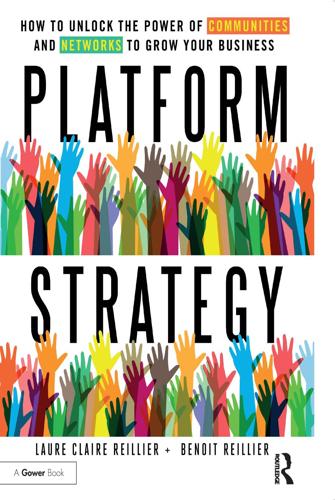
Open for Business Harnessing the Power of Platform Ecosystems
by
Lauren Turner Claire
,
Laure Claire Reillier
and
Benoit Reillier
Published 14 Oct 2017
The future of platforms 215 10 See, for example, Bloomberg article dated 2 May 2016 on universal basic income: www.bloombergview.com/articles/2016-05-02/a-basic-income-should-be-the-nextbig-thing. 11 www.theverge.com/2014/9/30/6874353/reddit-50-million-funding-give-users-10percent-stock-equity and www.reddit.com/r/AskReddit/comments/2moyiz/serious_ how_should_reddit_inc_distribute_a/. 12 21 September 2015, Kickstarter blog, www.kickstarter.com/blog/kickstarter-is-now-abenefit-corporation?ref=charter. 13 Kickstarter fulfilment report, www.kickstarter.com/fulfillment. 14 At the time of writing, the Singapore Autonomous Vehicle Initiative (SAVI) is running live trials of autonomous cars. 15 Moore’s law states that computer processing power doubles every two years. 16 Sharetribe promises to have your platform business running in a few minutes without the need for a developer . . . give it a go at www.sharetribe.com/. 17 J. Rifkin, The Empathic Civilization, New York: Jeremy P.

Prediction Machines: The Simple Economics of Artificial Intelligence
by
Ajay Agrawal
,
Joshua Gans
and
Avi Goldfarb
Published 16 Apr 2018
These include tasks where: (1) the other elements are already automated except for prediction (e.g., mining); (2) the returns to speed of action in response to prediction are high (e.g., driverless cars); and (3) the returns to reduced waiting time for predictions are high (e.g., space exploration). An important distinction between autonomous vehicles operating on a city street versus those in a mine site is that the former generates significant externalities while the latter does not. Autonomous vehicles operating on a city street may cause an accident that incurs costs borne by individuals external to the decision maker. In contrast, accidents caused by autonomous vehicles operating on a mine site only incur costs affecting assets or people associated with the mine. Governments regulate activities that generate externalities.
…
For example, we are transforming transportation into a prediction problem. Autonomous vehicles have existed in controlled environments for over two decades. They were limited, however, to places with detailed floor plans such as factories and warehouses. The floor plans meant engineers could design their robots to maneuver with basic “if-then” logical intelligence: if a person walks in front of the vehicle, then stop. If the shelf is empty, then move to the next one. However, no one could use those vehicles on a regular city street. Too many things could happen—too many “ifs” to possibly code. Autonomous vehicles could not function outside a highly predictable, controlled environment—until engineers reframed navigation as a prediction problem.
…
KEY POINTS * * * Enhanced prediction enables decision makers, whether human or machine, to handle more “ifs” and more “thens.” That leads to better outcomes. For example, in the case of navigation, illustrated in this chapter with the mail robot, prediction machines liberate autonomous vehicles from their previous limitation of operating only in controlled environments. These settings are characterized by their limited number of “ifs” (or states). Prediction machines allow autonomous vehicles to operate in uncontrolled environments, like on a city street, because rather than having to code all the potential “ifs” in advance, the machine can instead learn to predict what a human controller would do in any particular situation.
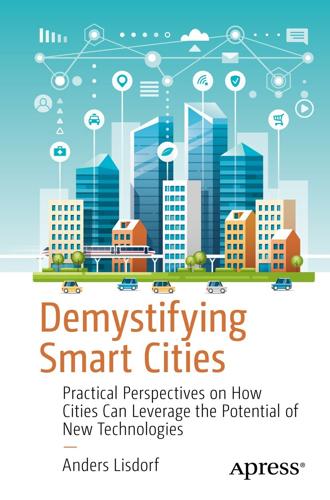
Demystifying Smart Cities
by
Anders Lisdorf
This is not just hard but downright impossible for any current artificial intelligence. Autonomous vehicles and ethics Let us look at this through the lens of an existing AI problem. Today many cities have begun allowing companies to test autonomous vehicles (AV) on their streets. On virtually every parameter, they are performing well and well above their human counterparts if the vendors are to be trusted. There is the occasional accident that spurs quite a lot of media attention. Given the low scale AV testing is currently carried out, this will be amplified significantly when it is rolled out. While the autonomous vehicles are very good at following rules and identifying the proper ones in a given situation, what happens in situations where the rules might be conflicting and they even have to make a tradeoff decision with ethical impact?
…
While the autonomous vehicles are very good at following rules and identifying the proper ones in a given situation, what happens in situations where the rules might be conflicting and they even have to make a tradeoff decision with ethical impact? Here is a thought experiment to illustrate the issue. An autonomous vehicle is driving on a sunny spring afternoon through the streets of New York. It is a good day, and it is able to keep a good pace. On its right is a sidewalk with a lot of pedestrians; on its left is a traffic lane going the opposite direction. Now suddenly a child runs out into the road in front of the AV, and it is impossible for it to brake in time. The autonomous vehicle needs to make a choice. It has three options:1)It runs over the child and kills it while not hurting the people inside the AV or the pedestrians on the sidewalk. 2)It makes an evasive maneuver to the right hitting pedestrians, thereby killing or injuring one or more people while not hurting the people inside the AV. 3)It makes an evasive maneuver to the left hitting cars going the other direction, thereby killing the people in the AV and the people in the other car but sparing the child and the pedestrians.
…
Working with devices in the city Managing devices Methods for communicating with devices The challenges of protecting devices Developing device standards: An interagency effort Security standards Privacy standards Architecture standards Solution spotlights Cities Coalition for Digital Rights Array of things PlowNYC Exteros Summary Chapter 4: Data Source systems Systems of record Sensors Online sources Structure of data Structured data Semi-structured data Unstructured data Data services Object storage Relational databases Document database Key value stores Graph databases Block chain Data access Machine-to-machine Graphical user interface Deployment On premise Cloud Comparison between on premise and cloud Regulatory requirements Health data Criminal justice data Personal data in general Data management Data governance Master data management Data quality Summary Chapter 5: Intelligence The history of AI The promise and threat of AI What is Artificial Intelligence really? Machine learning Popular AI algorithms Key issues in AI for Smart Cities Artificial and human intelligence Autonomous vehicles and ethics Artificial Intelligence meets the real world The optimization paradox The challenges to AI AI solutions in the city Making cities smarter with AI Solution spotlights Project Alvelor Amsterdam 311 Summary Chapter 6: Engagement Technology adoption curve Risk and Reward Types of work Modes of working Engagement models Implementing smart city technologies Solution spotlights 100 Resilient Cities Waze Connected Citizens BetaNYC Summary Part II: Toward smarter cities Chapter 7: Architect with imagination: Could payphones show the way in an emergency?

The Autonomous Revolution: Reclaiming the Future We’ve Sold to Machines
by
William Davidow
and
Michael Malone
Published 18 Feb 2020
The bad news is that this would cause about 1.5 million jobs to disappear in automotive related industries—manufacturing, service, insurance, and so forth. The effects of autonomous vehicles will also be felt in wider swaths of the economy. Level 5 Autonomous Trucks—aTrucks—will move goods faster, more efficiently, and more safely than trucks driven by people. There are 3.5 million professional truck drivers in our country, and about 8.7 million people employed in the trucking business.26 Many of them will be displaced. If just one-quarter of them are, that’s more than 2 million jobs.27 No doubt autonomous vehicles will also drive down the costs of delivery services. The business model for groceries, retail stores, and many commodity products will consist of large automated warehouses that deliver products ordered over the Internet to the customer’s home or to a convenient location for pick-up within a few hours.
…
We expected that virtual corporations would take a decade or more to become ubiquitous. But a hidden force was about to burst on the scene that would propel this revolution faster than we envisioned: the World Wide Web. The genesis of this book was similar. Having been present at the birth of social networking, massive multiplayer games, autonomous vehicles, modern artificial intelligence, and all of the other defining new technologies of the twenty-first century, we have watched with growing dismay, even horror, at how many of these developments have morphed into increasingly malevolent threats to human privacy and liberty. Living in Silicon Valley, we watched firsthand, with growing trepidation, the effects of the modern networked, digital—virtual—world on its most passionate users.
…
They can even try on an item of clothing virtually, using digital imaging. The computer takes their credit card information (an intelligence equivalence of what a flesh-and-blood retail clerk does), and FedEx or UPS provides delivery. For many commodities, the retail substitutional equivalence of the future will consist of shopping online with rapid delivery by autonomous vehicles from large warehouses located near urban centers. The same functions will be carried out, but will use entirely different tools, rules, and processes. Surprisingly, many institutions that do not appear to be heavily dependent on information content for their success are, in fact, quite vulnerable to disruption by information equivalent infrastructures.

Fully Automated Luxury Communism
by
Aaron Bastani
Published 10 Jun 2019
As a result these vehicles can navigate streets and motorways by relying on precise GPS data, huge amounts of information regarding maps, and a continuous stream of real-time updates on other cars, potential obstacles, pedestrians and all the variables human drivers have to consider. All of this is achieved with a myriad of sensors, lasers and cameras processing information as 1s and 0s. Even in isolation the arrival of autonomous vehicles likely spells the disappearance of whole professions. In 2014, driving accounted for around 4 million jobs in the US alone, and according to a report by Goldman Sachs the country could see job losses at a rate of 300,000 a year as autonomous vehicles become an integrated feature of modern society. From the perspective of business that would be entirely understandable: logistics vehicles running twenty-four hours a day, seven days a week, offer massive savings.
…
More vital is how digitisation has allowed progressively greater amounts of cognition and memory to be performed in 0s and 1s, with the price–performance ratio of anything that does so falling every year for decades. It is this which allows contemporary camera technology to land rockets and, increasingly, drive autonomous vehicles; it is what will provide robots with fine motor coordination and dexterity equivalent to that found in humans; it will permit the built environment to know more about us, in certain respects, than we know about ourselves. It will even allow us to edit DNA – the building blocks of life – to remove hereditary disease and sequence genomes at such low cost, and with such regularity, that we will cure ourselves of cancer before it reaches Stage 1.
…
But while robots whose movements authentically resemble those of humans aren’t quite here yet, another category of machine – drawing on the same gains in digitisation and the dividend of exponential progress – is on the verge of transforming whole industries. It is the leading edge of a transformation which will mean not only the loss of countless jobs, but entire professions. And just like the acrobatics of Atlas, nobody saw it coming – until it was right in front of them. Autonomous Vehicles In 2002 the American defence agency DARPA announced a ‘Grand Challenge’ for driverless cars scheduled to take place in the Mojave Desert in spring 2004. The proposed route was two hundred and forty kilometres long and the prize, for whichever car finished first, was set at $1 million. While some of the most brilliant minds in America applied themselves to the task, not one of the fifteen teams present at the start line was able to complete the course.

Data Action: Using Data for Public Good
by
Sarah Williams
Published 14 Sep 2020
Data Is a Public Infrastructure Now let's look at the same idea in American and European contexts, where private companies currently hold and are set to hold exponentially more data about cities, their populations, and their communities. Let's use Waymo, Google's autonomous vehicle program, as an example. A single Waymo test vehicle scans the environment with LIDAR sensors producing about 30 terabytes of data per day—that's three thousand times the amount of data that Twitter produces daily.6 Programmers at Google use this data to construct 3D representations of the physical world, often referred to as digital twins, which are used to guide autonomous vehicles on the road. In this virtual environment, autonomous vehicles—or any robot for that matter—can be guided and instructed to turn, to stop and pick up a passenger, or to come to a halt for a pedestrian to cross the street.
…
When this data is added to the digital world created for the car, it can be used to personalize our driving experience. Having captured your buying habits and movements, this data can be mined to identify, for instance, when and where you might want to buy a quart of milk, and your car can be programmed to remind you to do it. Adding this type of information to autonomous vehicles’ databases allows cars to make decisions based on previous human behaviors.7 This alternative reality—really a new digital reality—will be the infrastructure of the future, itself a new “public good.” We will tap into it to perform all kinds of tasks. Much in the same way networked computers created the World Wide Web, this environment will power many innovations created by those who have the capabilities to tap into it.
…
Much in the same way networked computers created the World Wide Web, this environment will power many innovations created by those who have the capabilities to tap into it. Right now, that ability lies solely with the companies who generate the data, companies such as Waymo, Tesla, Ford, and others experimenting with autonomous vehicles. Companies are already using their virtual worlds to create diverse products beyond the car. Google has developed an augmented reality navigation tool for your smartphone, fueled by this digital environment (figure 5.1a and 5.1b). Microsoft has started to use some of this data to create a product it calls 3D Soundscapes (figure 5.2), which taps into the virtual environment to help a person with vision impairment or loss to navigate through the city.

The Road to Conscious Machines
by
Michael Wooldridge
Published 2 Nov 2018
Most cities already have bus lanes and cycle lanes, so why not driverless car lanes? Such lanes might be augmented by sensors and other technology to assist autonomous vehicles. The presence of such lanes would also send a clear signal to human drivers sharing the roads with autonomous vehicles: beware robot drivers! As to the question of Level 5 autonomy, we are still some distance away, I’m afraid. But it is inevitable. My best guess is that it will be at least 20 years from the time of writing before Level 5 autonomous vehicles are widely available. But I am pretty confident that my grandchildren will regard the idea that their grandfather actually drove a car on his own with a mixture of horror and amusement.
…
A A* 77 À la recherche du temps perdu (Proust) 205–8 accountability 257 Advanced Research Projects Agency (ARPA) 87–8 adversarial machine learning 190 AF (Artificial Flight) parable 127–9, 243 agent-based AI 136–49 agent-based interfaces 147, 149 ‘Agents That Reduce Work and Information Overload’ (Maes) 147–8 AGI (Artificial General Intelligence) 41 AI – difficulty of 24–8 – ethical 246–62, 284, 285 – future of 7–8 – General 42, 53, 116, 119–20 – Golden Age of 47–88 – history of 5–7 – meaning of 2–4 – narrow 42 – origin of name 51–2 – strong 36–8, 41, 309–14 – symbolic 42–3, 44 – varieties of 36–8 – weak 36–8 AI winter 87–8 AI-complete problems 84 ‘Alchemy and AI’ (Dreyfus) 85 AlexNet 187 algorithmic bias 287–9, 292–3 alienation 274–7 allocative harm 287–8 AlphaFold 214 AlphaGo 196–9 AlphaGo Zero 199 AlphaZero 199–200 Alvey programme 100 Amazon 275–6 Apple Watch 218 Argo AI 232 arithmetic 24–6 Arkin, Ron 284 ARPA (Advanced Research Projects Agency) 87–8 Artificial Flight (AF) parable 127–9, 243 Artificial General Intelligence (AGI) 41 artificial intelligence see AI artificial languages 56 Asilomar principles 254–6 Asimov, Isaac 244–6 Atari 2600 games console 192–6, 327–8 augmented reality 296–7 automated diagnosis 220–1 automated translation 204–8 automation 265, 267–72 autonomous drones 282–4 Autonomous Vehicle Disengagement Reports 231 autonomous vehicles see driverless cars autonomous weapons 281–7 autonomy levels 227–8 Autopilot 228–9 B backprop/backpropagation 182–3 backward chaining 94 Bayes nets 158 Bayes’ Theorem 155–8, 365–7 Bayesian networks 158 behavioural AI 132–7 beliefs 108–10 bias 172 black holes 213–14 Blade Runner 38 Blocks World 57–63, 126–7 blood diseases 94–8 board games 26, 75–6 Boole, George 107 brains 43, 306, 330–1 see also electronic brains branching factors 73 Breakout (video game) 193–5 Brooks, Rodney 125–9, 132, 134, 243 bugs 258 C Campaign to Stop Killer Robots 286 CaptionBot 201–4 Cardiogram 215 cars 27–8, 155, 223–35 certainty factors 97 ceteris paribus preferences 262 chain reactions 242–3 chatbots 36 checkers 75–7 chess 163–4, 199 Chinese room 311–14 choice under uncertainty 152–3 combinatorial explosion 74, 80–1 common values and norms 260 common-sense reasoning 121–3 see also reasoning COMPAS 280 complexity barrier 77–85 comprehension 38–41 computational complexity 77–85 computational effort 129 computers – decision making 23–4 – early developments 20 – as electronic brains 20–4 – intelligence 21–2 – programming 21–2 – reliability 23 – speed of 23 – tasks for 24–8 – unsolved problems 28 ‘Computing Machinery and Intelligence’ (Turing) 32 confirmation bias 295 conscious machines 327–30 consciousness 305–10, 314–17, 331–4 consensus reality 296–8 consequentialist theories 249 contradictions 122–3 conventional warfare 286 credit assignment problem 173, 196 Criado Perez, Caroline 291–2 crime 277–81 Cruise Automation 232 curse of dimensionality 172 cutlery 261 Cybernetics (Wiener) 29 Cyc 114–21, 208 D DARPA (Defense Advanced Research Projects Agency) 87–8, 225–6 Dartmouth summer school 1955 50–2 decidable problems 78–9 decision problems 15–19 deduction 106 deep learning 168, 184–90, 208 DeepBlue 163–4 DeepFakes 297–8 DeepMind 167–8, 190–200, 220–1, 327–8 Defense Advanced Research Projects Agency (DARPA) 87–8, 225–6 dementia 219 DENDRAL 98 Dennett, Daniel 319–25 depth-first search 74–5 design stance 320–1 desktop computers 145 diagnosis 220–1 disengagements 231 diversity 290–3 ‘divide and conquer’ assumption 53–6, 128 Do-Much-More 35–6 dot-com bubble 148–9 Dreyfus, Hubert 85–6, 311 driverless cars 27–8, 155, 223–35 drones 282–4 Dunbar, Robin 317–19 Dunbar’s number 318 E ECAI (European Conference on AI) 209–10 electronic brains 20–4 see also computers ELIZA 32–4, 36, 63 employment 264–77 ENIAC 20 Entscheidungsproblem 15–19 epiphenomenalism 316 error correction procedures 180 ethical AI 246–62, 284, 285 European Conference on AI (ECAI) 209–10 evolutionary development 331–3 evolutionary theory 316 exclusive OR (XOR) 180 expected utility 153 expert systems 89–94, 123 see also Cyc; DENDRAL; MYCIN; R1/XCON eye scans 220–1 F Facebook 237 facial recognition 27 fake AI 298–301 fake news 293–8 fake pictures of people 214 Fantasia 261 feature extraction 171–2 feedback 172–3 Ferranti Mark 1 20 Fifth Generation Computer Systems Project 113–14 first-order logic 107 Ford 232 forward chaining 94 Frey, Carl 268–70 ‘The Future of Employment’ (Frey & Osborne) 268–70 G game theory 161–2 game-playing 26 Gangs Matrix 280 gender stereotypes 292–3 General AI 41, 53, 116, 119–20 General Motors 232 Genghis robot 134–6 gig economy 275 globalization 267 Go 73–4, 196–9 Golden Age of AI 47–88 Google 167, 231, 256–7 Google Glass 296–7 Google Translate 205–8, 292–3 GPUs (Graphics Processing Units) 187–8 gradient descent 183 Grand Challenges 2004/5 225–6 graphical user interfaces (GUI) 144–5 Graphics Processing Units (GPUs) 187–8 GUI (graphical user interfaces) 144–5 H hard problem of consciousness 314–17 hard problems 84, 86–7 Harm Assessment Risk Tool (HART) 277–80 Hawking, Stephen 238 healthcare 215–23 Herschel, John 304–6 Herzberg, Elaine 230 heuristic search 75–7, 164 heuristics 91 higher-order intentional reasoning 323–4, 328 high-level programming languages 144 Hilbert, David 15–16 Hinton, Geoff 185–6, 221 HOMER 141–3, 146 homunculus problem 315 human brain 43, 306, 330–1 human intuition 311 human judgement 222 human rights 277–81 human-level intelligence 28–36, 241–3 ‘humans are special’ argument 310–11 I image classification 186–7 image-captioning 200–4 ImageNet 186–7 Imitation Game 30 In Search of Lost Time (Proust) 205–8 incentives 261 indistinguishability 30–1, 37, 38 Industrial Revolutions 265–7 inference engines 92–4 insurance 219–20 intelligence 21–2, 127–8, 200 – human-level 28–36, 241–3 ‘Intelligence Without Representation’ (Brooks) 129 Intelligent Knowledge-Based Systems 100 intentional reasoning 323–4, 328 intentional stance 321–7 intentional systems 321–2 internal mental phenomena 306–7 Internet chatbots 36 intuition 311 inverse reinforcement learning 262 Invisible Women (Criado Perez) 291–2 J Japan 113–14 judgement 222 K Kasparov, Garry 163 knowledge bases 92–4 knowledge elicitation problem 123 knowledge graph 120–1 Knowledge Navigator 146–7 knowledge representation 91, 104, 129–30, 208 knowledge-based AI 89–123, 208 Kurzweil, Ray 239–40 L Lee Sedol 197–8 leisure 272 Lenat, Doug 114–21 lethal autonomous weapons 281–7 Lighthill Report 87–8 LISP 49, 99 Loebner Prize Competition 34–6 logic 104–7, 121–2 logic programming 111–14 logic-based AI 107–11, 130–2 M Mac computers 144–6 McCarthy, John 49–52, 107–8, 326–7 machine learning (ML) 27, 54–5, 168–74, 209–10, 287–9 machines with mental states 326–7 Macintosh computers 144–6 magnetic resonance imaging (MRI) 306 male-orientation 290–3 Manchester Baby computer 20, 24–6, 143–4 Manhattan Project 51 Marx, Karl 274–6 maximizing expected utility 154 Mercedes 231 Mickey Mouse 261 microprocessors 267–8, 271–2 military drones 282–4 mind modelling 42 mind-body problem 314–17 see also consciousness minimax search 76 mining industry 234 Minsky, Marvin 34, 52, 180 ML (machine learning) 27, 54–5, 168–74, 209–10, 287–9 Montezuma’s Revenge (video game) 195–6 Moore’s law 240 Moorfields Eye Hospital 220–1 moral agency 257–8 Moral Machines 251–3 MRI (magnetic resonance imaging) 306 multi-agent systems 160–2 multi-layer perceptrons 177, 180, 182 Musk, Elon 238 MYCIN 94–8, 217 N Nagel, Thomas 307–10 narrow AI 42 Nash, John Forbes Jr 50–1, 161 Nash equilibrium 161–2 natural languages 56 negative feedback 173 neural nets/neural networks 44, 168, 173–90, 369–72 neurons 174 Newell, Alan 52–3 norms 260 NP-complete problems 81–5, 164–5 nuclear energy 242–3 nuclear fusion 305 O ontological engineering 117 Osborne, Michael 268–70 P P vs NP problem 83 paperclips 261 Papert, Seymour 180 Parallel Distributed Processing (PDP) 182–4 Pepper 299 perception 54 perceptron models 174–81, 183 Perceptrons (Minsky & Papert) 180–1, 210 personal healthcare management 217–20 perverse instantiation 260–1 Phaedrus 315 physical stance 319–20 Plato 315 police 277–80 Pratt, Vaughan 117–19 preference relations 151 preferences 150–2, 154 privacy 219 problem solving and planning 55–6, 66–77, 128 programming 21–2 programming languages 144 PROLOG 112–14, 363–4 PROMETHEUS 224–5 protein folding 214 Proust, Marcel 205–8 Q qualia 306–7 QuickSort 26 R R1/XCON 98–9 radiology 215, 221 railway networks 259 RAND Corporation 51 rational decision making 150–5 reasoning 55–6, 121–3, 128–30, 137, 315–16, 323–4, 328 regulation of AI 243 reinforcement learning 172–3, 193, 195, 262 representation harm 288 responsibility 257–8 rewards 172–3, 196 robots – as autonomous weapons 284–5 – Baye’s theorem 157 – beliefs 108–10 – fake 299–300 – indistinguishability 38 – intentional stance 326–7 – SHAKEY 63–6 – Sophia 299–300 – Three Laws of Robotics 244–6 – trivial tasks 61 – vacuum cleaning 132–6 Rosenblatt, Frank 174–81 rules 91–2, 104, 359–62 Russia 261 Rutherford, Ernest (1st Baron Rutherford of Nelson) 242 S Sally-Anne tests 328–9, 330 Samuel, Arthur 75–7 SAT solvers 164–5 Saudi Arabia 299–300 scripts 100–2 search 26, 68–77, 164, 199 search trees 70–1 Searle, John 311–14 self-awareness 41, 305 see also consciousness semantic nets 102 sensors 54 SHAKEY the robot 63–6 SHRDLU 56–63 Simon, Herb 52–3, 86 the Singularity 239–43 The Singularity is Near (Kurzweil) 239 Siri 149, 298 Smith, Matt 201–4 smoking 173 social brain 317–19 see also brains social media 293–6 social reasoning 323, 324–5 social welfare 249 software agents 143–9 software bugs 258 Sophia 299–300 sorting 26 spoken word translation 27 STANLEY 226 STRIPS 65 strong AI 36–8, 41, 309–14 subsumption architecture 132–6 subsumption hierarchy 134 sun 304 supervised learning 169 syllogisms 105, 106 symbolic AI 42–3, 44, 181 synapses 174 Szilard, Leo 242 T tablet computers 146 team-building problem 78–81, 83 Terminator narrative of AI 237–9 Tesla 228–9 text recognition 169–71 Theory of Mind (ToM) 330 Three Laws of Robotics 244–6 TIMIT 292 ToM (Theory of Mind) 330 ToMnet 330 TouringMachines 139–41 Towers of Hanoi 67–72 training data 169–72, 288–9, 292 translation 204–8 transparency 258 travelling salesman problem 82–3 Trolley Problem 246–53 Trump, Donald 294 Turing, Alan 14–15, 17–19, 20, 24–6, 77–8 Turing Machines 18–19, 21 Turing test 29–38 U Uber 168, 230 uncertainty 97–8, 155–8 undecidable problems 19, 78 understanding 201–4, 312–14 unemployment 264–77 unintended consequences 263 universal basic income 272–3 Universal Turing Machines 18, 19 Upanishads 315 Urban Challenge 2007 226–7 utilitarianism 249 utilities 151–4 utopians 271 V vacuum cleaning robots 132–6 values and norms 260 video games 192–6, 327–8 virtue ethics 250 Von Neumann and Morgenstern model 150–5 Von Neumann architecture 20 W warfare 285–6 WARPLAN 113 Waymo 231, 232–3 weak AI 36–8 weapons 281–7 wearable technology 217–20 web search 148–9 Weizenbaum, Joseph 32–4 Winograd schemas 39–40 working memory 92 X XOR (exclusive OR) 180 Z Z3 computer 19–20 PELICAN BOOKS Economics: The User’s Guide Ha-Joon Chang Human Evolution Robin Dunbar Revolutionary Russia: 1891–1991 Orlando Figes The Domesticated Brain Bruce Hood Greek and Roman Political Ideas Melissa Lane Classical Literature Richard Jenkyns Who Governs Britain?
…
And yet we are accustomed to the danger of road travel – we seem to accept the risk as an occupational hazard of living in the modern world. But AI holds out the real prospect of dramatically reducing those risks: driverless cars are a real possibility in the medium term, and, ultimately, they have the potential to save lives on a massive scale. There are, of course, many other good reasons for wanting autonomous vehicles. Computers can be programmed to drive cars efficiently, making better use of scarce and expensive fuel or power resources, resulting in environmentally friendlier cars with lower running costs. Computers could also potentially make better use of road networks, for example, allowing far greater through-put at congested road junctions.
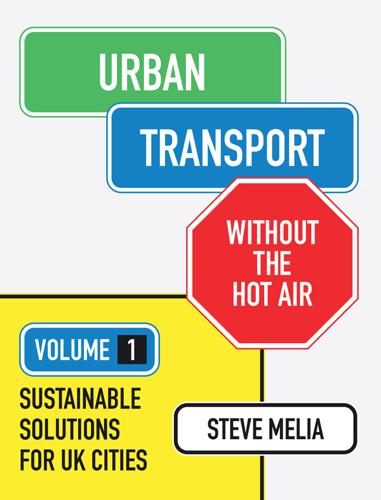
Urban Transport Without the Hot Air, Volume 1
by
Steve Melia
If that sounds too much like ‘Big Brother’ for motorists who want to retain the freedom to drive where and when they like, then we should not expect autonomous vehicles to miraculously solve urban road congestion. In some towns or cities, systems like Ultra at Heathrow Airport (Figure 11.7, page 120) could provide new forms of public transport, although finding the space (and the money) for the network of separate tracks may prove impossible in many places. Autonomous vehicles do not need as much road space because they can move in straighter lines. If their movements are coordinated in some way, they could increase road capacity.
…
A mass market switch would deprive governments of the revenue from fuel taxes unless they decide to impose either a selective tax on electricity (difficult but not impossible) or a national road pricing scheme. Neither is likely to be popular. Meanwhile, the UK government has placed considerable faith in the potential for ‘driverless cars’ to reduce congestion and CO2 emissions.274 The term ‘driverless cars’ is misleading (researchers prefer ‘autonomous vehicles’) since the technologies can be applied to other types of vehicle and the transition to entirely automatic control for private cars will pass through several intermediate stages. Some automatic functions such as cruise control have been available for some time. Others such as anti-collision and parallel parking technology have been introduced on mass-produced cars more recently.
…
Those vehicles are larger, providing something more like a minibus but with the same point-to-point service. Both of these systems run on guideways but if driverless electric vehicles can be designed to run on public roads, they could also replace buses and taxis, though not high-volume urban rail systems. Figure 11.8 Inside an Ultra pod Studies into the potential for autonomous vehicles suggest that the big reductions in congestion will only materialize when the vast majority of vehicles on the road are moving autonomously. If many drivers insist on overriding the controls, to change speeds or route choices, then the gains will be much more modest. Hence these choices bring us back to the options of restraint or voluntary behaviour change.
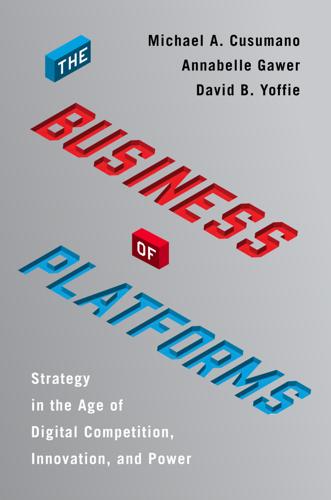
The Business of Platforms: Strategy in the Age of Digital Competition, Innovation, and Power
by
Michael A. Cusumano
,
Annabelle Gawer
and
David B. Yoffie
Published 6 May 2019
Lyft’s platform initiative brings together several automakers, including GM, Land Rover, and Ford, to integrate their autonomous vehicle projects into one ride-hailing network.11 Initially, the Open Platform Initiative is offering partners access to ride data for testing purposes, but ultimately plans to make their self-driving vehicles available on its ride-hailing platform. Lyft’s chief strategy officer noted in late 2017 that “we’re focused on partnering with the auto industry because frankly, we think we can’t do this alone and need each other to be successful.”12 Lyft cofounder John Zimmer even predicted that “autonomous vehicle fleets will quickly become widespread and will account for the majority of Lyft rides within 5 years.”13 Lyft’s strategy may signal the emergence of a different type of transaction platform, where Lyft connects riders to self-driving vehicles from a variety of manufacturers.
…
And some current products and services or path-breaking technologies may turn into new types of platforms. In the remainder of this chapter, we discuss two relatively new platform battlegrounds and their possible evolution, if artificial intelligence impacts them the way we predict: voice wars and autonomous vehicle ride sharing. Then we will look at two emerging and future battlegrounds: quantum computing and gene editing. CURRENT/ONGOING Perhaps the most important new technology in the battle for platforms over the next decade is artificial intelligence and machine learning. For many industries, AI has disruptive potential.
…
Despite a long history of selling products, even the most conservative car companies see AI as the route toward becoming a service company. As Lyft CEO Logan Green said in 2018, “We are going to move the entire [car] industry from one based on ownership, to one based on subscription.”5 The emergence of autonomous vehicle technology promises to remove human drivers, which could dramatically drive down the marginal cost of transportation services. Amortizing the R&D and fleet costs of self-driving cars is likely to be very high. But the economics could improve because there are no driver payments and cars will be utilized more intensively, dramatically reducing the cost per mile.6 GM estimated that, when it launches its service in 2019, rides would initially cost $1.50 per mile, 40 percent less than current ride-hailing services.7 Some estimates suggested that the cost per mile of a self-driving vehicle could fall as low as 35 cents per mile, down from an average of $2.86 per mile in 2018.8 Observers see the combination of new technology and better economics forcing Uber (and other ride-sharing platforms) to “either figure out a way to buy or at least manage an enormous fleet (possibly by going public to foot the bill), or face annihilation by others who will.”9 Facing this threat, Uber began investing in autonomous vehicle technology in 2014.
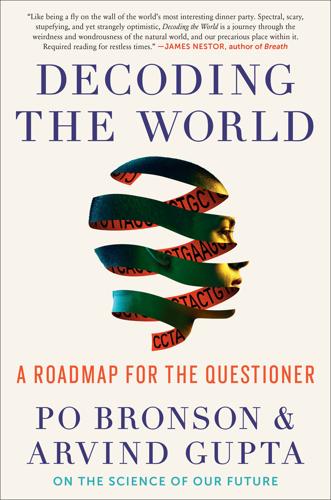
Decoding the World: A Roadmap for the Questioner
by
Po Bronson
Published 14 Jul 2020
The spikes are electrical signals from the neurons when they fire. They are happening fast, ten to twenty a second and at random. We are looking at a primitive artificial brain with sixteen neurons, same number as a dragonfly, hooked up to a computer. Peter turns to me with raised eyebrows. “Not sure this will work. But a fully autonomous vehicle’s AI systems still cannot handle all the edge cases a driver would experience,” he tells me. “It’s hard to get all the data to tell the computer how to react in any specific case, like a foggy road in the rain or another driver making erratic moves.” I reply with a half question half statement.
…
Robots like to operate away from humans. “Anywhere we can completely remove the humans, the robots do well,” he says. Factories that run in the dark are an example. So is mining; he says the Rio Tinto corporation in Australia has more miles on its self-driving diggers and transporters than any autonomous car company. The biggest challenge to robot companies, I soon learn, isn’t the robots. It’s the humans. To make a robot that works around humans requires a ton of sensors. The robot has to constantly monitor the human in case it does something unpredictable, which it does a lot. Robots have to be prepared to freeze at any second, or stop work and get out of the way for a moment.

Blockchain Revolution: How the Technology Behind Bitcoin Is Changing Money, Business, and the World
by
Don Tapscott
and
Alex Tapscott
Published 9 May 2016
What’s truly powerful, the systems work together—intelligent vehicles operating on an intelligent infrastructure. While there will still be business for drivers of shared vehicles, autonomous vehicles will be able to operate safely on city streets with their built-in navigation and safety systems, often interacting with the intelligent infrastructure to find and pay for an accelerated lane, or parking, or to search for and find a preferred route. The ready availability, affordability, and reliability of the autonomous vehicles will significantly reduce the number of private vehicles that, like the commercial real estate example above, are often just parked waiting and unused.
…
Huge institutions now control and own this new means of production and social interaction—its underlying infrastructure; massive and growing treasure troves of data; the algorithms that increasingly govern business and daily life; the world of apps; and extraordinary emerging capabilities, machine learning, and autonomous vehicles. From Silicon Valley and Wall Street to Shanghai and Seoul, this new aristocracy uses its insider advantage to exploit the most extraordinary technology ever devised to empower people as economic actors, to build spectacular fortunes and strengthen its power and influence over economies and societies.
…
These platforms instill subsidiary rights in all our assets. You need to decide the extent to which you want to assign others usage and access rights—even the right to exclude others from using your assets—and what to charge for those rights. This can work for physical assets too. For example, we’ve heard a lot about autonomous vehicles. We can build an open transportation network on the blockchain where owners each have a private encrypted key (number) that lets them reserve a car. Using the public key infrastructure and existing blockchain technologies like EtherLock and Airlock, they can unlock and use the car for a certain amount of time, as specified by the rules of the smart contract—all the while paying the vehicle (or its owners) in real time for the time and energy that they use—as metered on a blockchain.
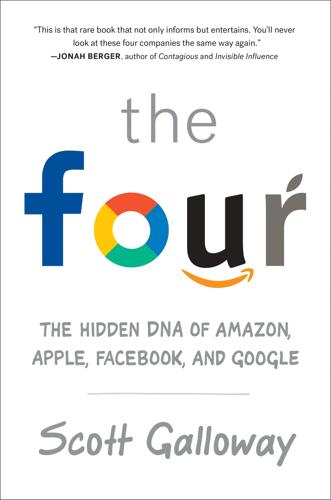
The Four: How Amazon, Apple, Facebook, and Google Divided and Conquered the World
by
Scott Galloway
Published 2 Oct 2017
The difference is other retailers have just the air in their lungs and are drowning. Amazon will surface and have the ocean of retail largely to itself. Making Type 2 investments also desensitizes Amazon’s shareholders to failure. All of the Four share this—look at Apple and Google with their not-so-secret autonomous vehicle projects, and Facebook with its regular introduction of new features to further monetize its users, which it then pulls back when the experiments don’t pan out. Remember Lighthouse? As Bezos also wrote in that first annual letter: “Failure and invention are inseparable twins. To invent you have to experiment, and if you know in advance that it’s going to work, it’s not an experiment.”53 Red, White, and Blue The Four are all disciplined about getting out in front of their skis, taking big, bold, smart bets, and tolerating failure.
…
In fact, it wasn’t until 2009 that Google’s CEO at the time, Eric Schmidt, saw the conflict of interest collisions ahead and resigned (or was asked to leave) from Apple’s board of directors. Since then, the four giants have moved inexorably into each other’s turf. At least two or three of them now compete in each other’s markets, whether it’s advertising, music, books, movies, social networks, cell phones—or lately, autonomous vehicles. But Apple stands alone as a luxury brand. That difference presents an immense advantage, providing fatter margins and a competitive edge. Luxury insulates the Apple brand, and hoists it above the price wars raging below. For now, I see modest competition for Apple from the other horsemen.
…
Google is a long way from that fate—but notice that it too is basically a one-trick (and one trick only) pony. There is search (YouTube is a search engine) and there is . . . well, Android—but that’s an industry smartphone standard, devised by Schmidt to counter the iPhone, and its biggest players are other companies. All of the other stuff—autonomous vehicles, drones—is just chaff, designed to keep customers and, even more so, employees pumped up. To date their contribution is less than Microsoft’s fading Internet Explorer. There are other parallels between Google and Microsoft. Microsoft at its peak was notorious for having the most insufferable asshole employees in American business.

The End of Doom: Environmental Renewal in the Twenty-First Century
by
Ronald Bailey
Published 20 Jul 2015
Researchers at the University of Texas, devising a realistic simulation of vehicle use in cities that took into account issues like congestion and rush-hour usage, found that each shared autonomous vehicle could replace eleven conventional vehicles. Notionally then, it would take only about 800 million vehicles to supply all the transportation services for 9 billion people. That figure is 200 million vehicles fewer than the current world fleet of 1 billion automobiles. In the Texas simulations, riders waited an average of 18 seconds for a driverless vehicle to show up, and each vehicle served 31 to 41 travelers per day. Less than half of 1 percent of travelers waited more than five minutes for a vehicle. In addition, shared autonomous vehicles would also cut an individual’s average cost of travel by as much as 75 percent in comparison to conventional driver-owned vehicles.
…
Alliance to Save Energy, January 2013, 4. www.ase.org/sites/ase.org/files/resources/Media%20browser/ee_commission_history_report_2-1-13.pdf. a realistic simulation: Daniel J. Fagnant and Kara M. Kockelman, “The Travel and Environmental Implications of Shared Autonomous Vehicles, Using Agent-Based Model Scenarios.” Transportation Research Part C: Emerging Technologies 40 (March 2014): 1–13. www.sciencedirect.com/science/article/pii/S0968090X13002581. shared autonomous vehicles: Lawrence Burns, William Jordan, and Bonnie Scarborough, “Transforming Personal Mobility.” The Earth Institute, Columbia University, New York, 2013. resource consumption trends: Iddo Wernick and Jesse Ausubel, “Making Nature Useless?
…
In addition, shared autonomous vehicles would also cut an individual’s average cost of travel by as much as 75 percent in comparison to conventional driver-owned vehicles. This could actually lead to the contraction of the world’s vehicle fleet as more people forgo the costs and hassles of ownership. In addition, a shift to fleets of autonomous vehicles makes the clean electrification of transportation much more feasible, since such automobiles could drive themselves off for recharging and cleaning during periods of low demand. Such vehicles would also be much smaller and packed more tightly on roads, since they can travel safely at higher speeds than human-driven automobiles.
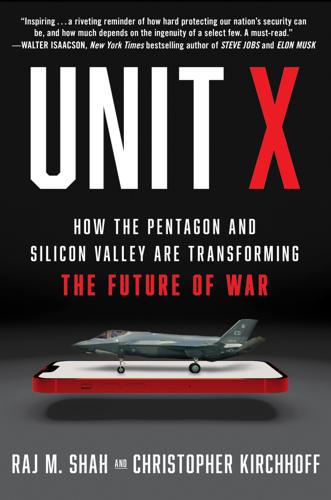
Unit X: How the Pentagon and Silicon Valley Are Transforming the Future of War
by
Raj M. Shah
and
Christopher Kirchhoff
Published 8 Jul 2024
Most of the improvements that made searching easier for users—auto-fill of search boxes; spoken searches and commands; image recognition on Google Translate that allowed a tourist to point their phone at an object and find out its name in a foreign language—had their roots in AI science that had been under development for decades but came to market only after further pioneering work. Google led the way in the technology that led to autonomous vehicles, and its work in AI was considered ahead of most other institutions in the world. By the time Eric convened the first meeting of the DIB in 2016, he was keenly aware of the shock and awe some AI innovations would have on the public when they rolled out over the next decade. Schmidt was a software engineer who had started his career as a coder at Bell Labs, the legendary R&D factory where the transistor, laser, and photoelectric cells were invented along with Unix and programming languages C and C++.
…
It hadn’t yet proved to be a Terminator on the battlefield—limitations with data links and other operational issues marred its mission effectiveness. But it was only version one. Improved models were coming. To illustrate doing bad things to AI, the briefer talked about how even sophisticated computer vision systems can be easily fooled. Something as simple as putting a small sticker on a stop sign makes some autonomous cars blow right past them. It was easy to imagine corrupting an enemy’s AI system in a similar way, or having an enemy corrupt yours. The third category, bad things happening because of AI, was the most alarming—especially the possibility that AI systems might introduce false signals that accelerate the dynamics of escalation.
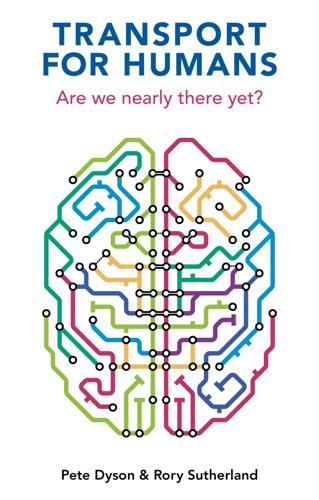
Transport for Humans: Are We Nearly There Yet?
by
Pete Dyson
and
Rory Sutherland
Published 15 Jan 2021
If planners close the hard shoulder, preventing emergency vehicle access, we think about our personal risk if we drive on it and can too easily imagine the horror if the worst happened.23 In future, autonomous vehicles will be calibrated to accept risk across the population, which ignores some people’s varying tolerance for risk on different occasions. Will people let go of the steering wheel? Will people tolerate a vehicle that sticks to every road rule? Will some pedestrians trust that autonomous vehicles will stop while others exploit the fact the car must bend to their will? Planners who want the public to accept they have a case of counter-intuitive transport aren’t fighting a lost cause, but they do need to listen and respond to dissident voices.
…
Scientists know passengers are not conscious of the exact humidity or air pressure, but by applying knowledge of physiology they optimize air conditions and cabin pressure, which has a large effect on passenger experience. People report greater relaxation, better sleep and less achy legs, even if they don’t know why they feel better.38 Emerging mobility technologies can bring novelty and delight to the masses: electric cars, automated and autonomous vehicles, ride-sharing e-scooters and on-demand shared mobility. Some of this may be hype, but why dismiss novel enjoyment as a deviation from the real quantified model just because we can’t measure it using a speedometer? The e-scooter isn’t just a viable ‘last mile’ low-carbon solution to support core public transport: it’s fun as well.
…
Now Existing digital technologies, innovation from outside-in E-commerce/videoconferencing/digital connectivity/digital platforms Journey planners/shared mobility/car clubs/demand-responsive transport Near Existing physical technologies accelerated by transport Micromobility (e-scooters, e-bikes and more) Electric cars Far Emerging technologies pioneered by transport Driverless cars/autonomous vehicles/drones Hydrogen-powered freight, trains and shipping Hyperloop trains/electric planes The ‘hype curve’ shows how new technologies start more slowly than insiders expect. Skype started in 2003 and Ocado in 2010, and while the benefits of both were clear from the outset, they saw modest usage until an exogenous shock – the Covid-19 pandemic – acted as a trigger for an explosion in home working and online shopping.
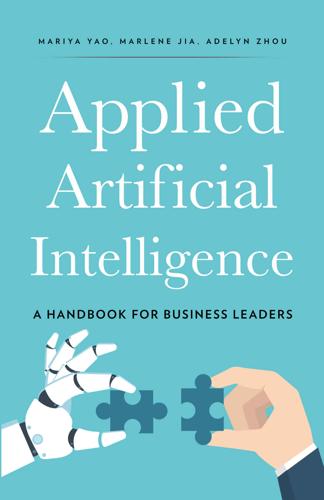
Applied Artificial Intelligence: A Handbook for Business Leaders
by
Mariya Yao
,
Adelyn Zhou
and
Marlene Jia
Published 1 Jun 2018
High costs, legal regulations, and social resistance to AI all hinder the progress of technology adoption. With the rise of autonomous vehicles, many believe that the jobs of America’s 1.7 million truck drivers are in imminent danger. The reality is that trucking jobs will likely require many years to replace. Michael Chui, a McKinsey partner, told The New York Times that the replacement and retrofitting of America’s truck fleet with autonomous navigation will require a trillion-dollar investment that few, if any, companies will immediately undertake.(51) Even if financing can be secured, autonomous vehicle technology is not yet approved for industrial or for individual use.
…
Once the machine has produced a prediction on the quality of a lead, the salesperson then applies human judgment to decide how to follow up. More complex systems, such as self-driving cars and industrial robotics, handle everything from gathering the initial data to executing the action resulting from its analysis. For example, an autonomous vehicle must turn video and sensor feeds into accurate predictions of the surrounding world and adjust its driving accordingly. Systems That Create We humans like to think we’re the only beings capable of creativity, but computers have been used for generative design and art for decades. Recent breakthroughs in neural network models have inspired a resurgence of computational creativity, with computers now capable of producing original writing, imagery, music, industrial designs, and even AI software!
…
This means that our physical security, digital security, and even political security will be at risk of attack. While we spend much of our productive hours tethered to digital devices and roaming cyberspace, we still inhabit physical bodies and live in a material world. Nefarious AI can infect autonomous vehicles, connected appliances, and other devices to inflict bodily harm and property damage. Digital attacks may come as a coordinated and adversarial disruption of corporate data with the goal of compromising, devaluing, or altogether destroying an organization’s data architecture. Finally, the use of technology—including AI, predictive analytics, automation, and social media bots—can have far-ranging social impact.

Uncharted: How to Map the Future
by
Margaret Heffernan
Published 20 Feb 2020
It isn’t true; the makers just hope, by getting you to believe it, that they can make it true. Nowhere has this subtle shift from prediction to propaganda been more prominent than in the marketing of autonomous vehicles. The driverless car, we have been told for years now, is inevitable. There’s no point even learning to drive any more, so immediately will the liberating technology be upon us. The piratical image of Google’s Sergey Brin sporting Google Glass as he struggled to explain how autonomous vehicles will both free the blind and reclaim green space from car parks shimmers with visual irony. Just as bizarre, as he signs a Bill facilitating the new technology, is Governor Jerry Brown’s celebratory reference to California as the home of the gold rush – an epic of exploiting hopes and dreams if there ever was one.
…
Providing a productive environment for creative thinking is not the same as learning to think like an artist oneself. That’s an individual choice: to make the effort to notice where we are, what’s around us, what’s missing, to take the time to reflect on what it could mean. The paradox implicit in autonomous vehicles or GPS pertains to us too: if we don’t use our human capacity for creativity, mind wandering, discovery and invention, we lose it. We could be more adventurous – exploring what we don’t know, investigating what makes us uncomfortable, thinking without bannisters. To be where we are sounds simple and it feels like an easy habit of mind to instil.
…
They are designed to be adaptable and robust enough for events that will occur – even where there’s wild uncertainty about when, or where or how. Both operate on the principle that just because there is no single source of control over events needn’t exclude the possibility of positive action early. *** Today, the rise of autonomous vehicles and drones makes the advent of killer robots a similar but manmade threat that can’t wait to be addressed. The non-profit organisation Article 36 was established to develop treaties and frameworks to prevent unintended, unnecessary or unacceptable harm caused by weapons developed in the future.

Habeas Data: Privacy vs. The Rise of Surveillance Tech
by
Cyrus Farivar
Published 7 May 2018
Same goes for allowing a “TiVo-in-the-sky” to capture days’ worth of human activity down below. Without a legislative body or a judge to step in, it seems inevitable that these actions will continue to expand through pervasive monitoring, advanced facial recognition, DNA, biochemical analysis, constant location capture via autonomous vehicles, and more. Today, so long as the search remains “reasonable” and doesn’t conflict with an “expectation” that “society is prepared to recognize as reasonable,” then law enforcement behavior is permitted. Or, to put it in e-mail spam terms, Fourth Amendment law is basically a blacklist: police actions are generally permitted unless they run into conditions that tell them to stop, such as conducting a physical search of “persons, houses, papers, and effects,” which requires a specific warrant.
…
May be a craft beer enthusiast—although possibly with a drinking problem.” As I continued to report on LPRs, I realized the same questions I had about this technology applied to so much more: telephone metadata, cell-site simulators (aka stingrays), body-worn cameras, drones, facial-recognition technology, autonomous cars, artificial intelligence, and more. There was a torrent of technology that was becoming more ubiquitous and cheaper by the day, with little standing in its way. Legislators have generally seemed unable or unwilling to halt the ever-advancing technological mission creep. Courts seemed to always lag behind—by the time a technology was finally raised at an appellate court or at the US Supreme Court, it was far out of date.

The Perfect Weapon: War, Sabotage, and Fear in the Cyber Age
by
David E. Sanger
Published 18 Jun 2018
The numbers that Brown and Singh gathered, all from public sources, told the story. China participated in more than 10 percent of all venture deals in 2015, the report found, focusing on early-stage innovations critical to both commercial and military uses: artificial intelligence, robotics, autonomous vehicles, virtual reality, financial technology, and gene-editing. When they broke down who was investing in US-based venture-backed companies between 2015 and 2017, American investors ranked first, with $59 billion in investment. Europe was second, with $36 billion. And China was right behind, with $24 billion.
…
With huge investments, the top tier of the financial industry and the electric utilities have done the best job of safeguarding their networks—meaning that a North Korean hacker aiming at those industries would likely have more luck targeting smaller banks and rural power companies. But as we put autonomous cars on the road, connect Alexas to our lights and our thermostats, put ill-protected Internet-connected video cameras on our houses, and conduct our financial lives over our cell phones, our vulnerabilities expand exponentially. During the Cold War, we learned how to live, uneasily, with the knowledge that the Soviet Union and China had nuclear weapons pointed at us.

The Stack: On Software and Sovereignty
by
Benjamin H. Bratton
Published 19 Feb 2016
At the same time, such a system would bring potential problems of the same order of magnitude as those it alleviates. The software and sovereignty questions don't abide easy answers. First, the legal identity of this composite User is not immediately clear. Several states have already passed legislation indicating that autonomous vehicles are legal to operate on their roads, thereby establishing the baseline that such machines are at least not criminal. But considering the quantity, complexity, and sensitivity of the data generated by such technologies, all working in concert, as well as the expertise and infrastructure necessary to conduct the rhythms of the swarm safely and effectively, it's not likely that any Department of Motor Vehicles is a likely candidate to govern a network of pilotless vehicles.
…
For those who honestly don't know, the Google driverless car project is a research initiative to develop cars that can autonomously navigate all roads without human steerage (or much of it), using a combination of laser-guided mapping, video cameras, radar, motion sensors, on-board computing, and other tools. Prototypes to date have mostly used a customized Prius, though the company recently announced plans to work with auto manufacturers to build autonomous vehicles to Google's own specifications, and some early products could be commercially available in a few years, if some very wicked problems can be worked out first. On these see Lee Gomes, “Hidden Obstacles for Google's Self-Driving Cars,” MIT Technology Review, August 28, 2014. 58. Levy again: “Why is OpenFlow so advantageous to a company like Google?
…
To the consternation of suspicious persons, the “mobile phone” with a CCD (charge-coupled device) absorbing light and a microphone absorbing sound waves is also a sensor, and for it the principle of information by absence of interaction holds true. One sensor makes use of the information haul of another, such as an autonomous vehicle that can navigate terrain based on LiDAR mapping (a portmanteau of “laser” and “radar”), motion detection sensors, and street maps (among other sensors). Ultimately, as a User experience design problem, the sense of a device's relative autonomy and intelligence will be a key criterion in everyday HRI (human-robotics interaction) but is a separate issue from the actual autonomy or dependence of that device.
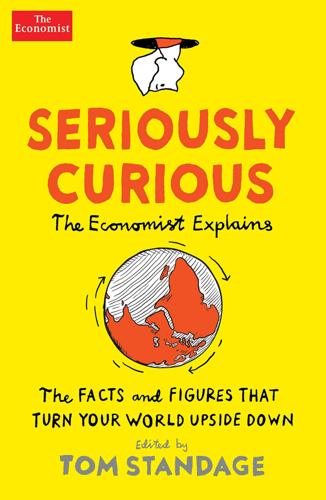
Seriously Curious: The Facts and Figures That Turn Our World Upside Down
by
Tom Standage
Published 27 Nov 2018
As cars did in the 20th century, AVs will redefine retailing and reshape cities, as well as providing a convenient new form of mobility. As with cars, which lead to road deaths, pollution and congestion, there are likely to be unanticipated (and unpleasant) consequences for society from autonomous vehicles, such as a loss of privacy and the potential to use them as a means of social control. Removing the horse from horse-drawn carriages was an apparently simple change that had far-reaching effects. Similarly, there is much more to autonomous vehicles than simply removing the need for a driver – and much of their impact will be a consequence of the fact that they will mostly be shared, not owned. How ride-hailing apps reduce drink-driving Gun violence in America gets plenty of attention, but cars kill more people.
…
By one estimate, the M-Pesa mobile-money system alone lifted about 2% of Kenyan households out of poverty between 2008 and 2014. Technology cannot solve all of Africa’s problems, but it can help with some of them. Why self-driving cars will mostly be shared, not owned When will you be able to buy a driverless car that will work anywhere? This commonly asked question contains three assumptions: that autonomous vehicles (AVs) will resemble cars; that people will buy them; and that they will be capable of working on all roads in all conditions. All three of those assumptions may be wrong. Although today’s experimental vehicles are modified versions of ordinary cars, with steering wheels that eerily turn by themselves, future AVs will have no steering wheel or pedals and will come in all sorts of shapes and sizes; pods capable of carrying six or eight people may prove to be the most efficient design.
…
For more explainers and charts from The Economist, visit economist.com Index A Africa child marriage 84 democracy 40 gay and lesbian rights 73, 74 Guinea 32 mobile phones 175–6 see also individual countries agriculture 121–2 Aguiar, Mark 169 air pollution 143–4 air travel and drones 187–8 flight delays 38–9 Akitu (festival) 233 alcohol beer consumption 105–6 consumption in Britain 48, 101–2 craft breweries 97–8 drink-driving 179–80 wine glasses 101–2 Alexa (voice assistant) 225 Algeria food subsidies 31 gay and lesbian rights 73 All I Want for Christmas Is You (Carey) 243 alphabet 217–18 Alternative for Germany (AfD) 223, 224 Alzheimer’s disease 140 Amazon (company) 225 America see United States and 227–8 Angola 73, 74 animals blood transfusions 139–40 dog meat 91–2 gene drives 153–4 size and velocity 163–4 and water pollution 149–50 wolves 161–2 Arctic 147–8 Argentina gay and lesbian rights 73 lemons 95–6 lithium 17–18 Ariel, Barak 191 Arizona 85 arms trade 19–20 Asia belt and road initiative 117–18 high-net-worth individuals 53 wheat consumption 109–10 see also individual countries Assange, Julian 81–3 asteroids 185–6 augmented reality (AR) 181–2 August 239–40 Australia avocados 89 forests 145 inheritance tax 119 lithium 17, 18 shark attacks 201–2 autonomous vehicles (AVs) 177–8 Autor, David 79 avocados 89–90 B Babylonians 233 Baltimore 99 Bangladesh 156 bank notes 133–4 Bateman, Tim 48 beer consumption 105–6 craft breweries 97–8 Beijing air pollution 143–4 dogs 92 belt and road initiative 117–18 betting 209–10 Bier, Ethan 153 Bils, Mark 169 birds and aircraft 187 guinea fowl 32–3 birth rates Europe 81–3 United States 79–80 black money 133–4 Black Power 34, 35 Blade Runner 208 blood transfusions 139–40 board games 199–200 body cameras 191–2 Boko Haram 5, 15–16 Bolivia 17–18 Bollettieri, Nick 197 bookmakers 209–10 Borra, Cristina 75 Bosnia 221–2 brain computers 167–8 Brazil beer consumption 105, 106 Christmas music 243, 244 end-of-life care 141–2 gay and lesbian rights 73 murder rate 45, 46 shark attacks 202 breweries 97–8 Brexit, and car colours 49–50 brides bride price 5 diamonds 13–14 Britain alcohol consumption 101–2 car colours 49–50 Christmas music 244 cigarette sales 23–4 craft breweries 98 crime 47–8 Easter 238 gay population 70–72 housing material 8 inheritance tax 119 Irish immigration 235 life expectancy 125 manufacturing jobs 131 national identity 223–4 new-year resolutions 234 police body cameras 191 sexual harassment 67, 68, 69 sperm donation 61 see also Scotland Brookings Institution 21 Browning, Martin 75 bubonic plague 157–8 Bush, George W. 119 C cables, undersea 193–4 California and Argentine lemons 95, 96 avocados 90 cameras 191–2 Canada diamonds 13 drones 188 lithium 17 national identity 223–4 capitalism, and birth rates 81–2 Carey, Mariah 243 Carnegie Endowment for International Peace 21 cars colours 49–50 self-driving 177–8 Caruana, Fabiano 206 Charles, Kerwin 169 cheetahs 163, 164 chess 205–6 Chetty, Raj 113 Chicago 100 children birth rates 79–80, 81–3 child marriage 84–5 in China 56–7 crime 47–8 and gender pay gap 115–16, 135–6 obesity 93–4 Chile gay and lesbian rights 73 lithium 17–18 China air pollution 143–5 arms sales 19–20 avocados 89 beer consumption 105 belt and road initiative 117–18 childhood obesity 93 construction 7 dog meat 91–2 dragon children 56–7 flight delays 38–9 foreign waste 159–60 lithium 17 rice consumption 109–10 Choi, Roy 99 Christian, Cornelius 26 Christianity Easter 237–8 new year 233–4 Christmas 246–7 music 243–5 cigarettes affordability 151–2 black market 23–4 cities, murder rates 44–6 Citizen Kane 207 citrus wars 95–6 civil wars 5 Clarke, Arthur C. 183 Coase, Ronald 127, 128 cocaine 44 cochlear implants 167 Cohen, Jake 203 Colen, Liesbeth 106 colleges, US 113–14 Colombia 45 colours, cars 49–50 commodities 123–4 companies 127–8 computers augmented reality 181–2 brain computers 167–8 emojis 215–16 and languages 225–6 spam e-mail 189–90 Connecticut 85 Connors, Jimmy 197 contracts 127–8 Costa Rica 89 couples career and family perception gap 77–8 housework 75–6 see also marriage cows 149–50 craft breweries 97–8 crime and avocados 89–90 and dog meat 91–2 murder rates 44–6 young Britons 47–8 CRISPR-Cas9 153 Croatia 222 Croato-Serbian 221–2 D Daily-Diamond, Christopher 9–10 Davis, Mark 216 De Beers 13–14 death 141–2 death taxes 119–20 democracy 40–41 Deng Xiaoping 117 Denmark career and family perception gap 78 gender pay gap 135–6 sex reassignment 65 Denver 99 Devon 72 diamonds 13–14, 124 digitally remastering 207–8 Discovery Channel 163–4 diseases 157–8 dog meat 91–2 Dorn, David 79 Dr Strangelove 207 dragon children 56–7 drink see alcohol drink-driving 179–80 driverless cars 177–8 drones and aircraft 187–8 and sharks 201 drugs cocaine trafficking 44 young Britons 48 D’Souza, Kiran 187 E e-mail 189–90 earnings, gender pay gap 115–16, 135–6 Easter 237–8 economy and birth rates 79–80, 81–2 and car colours 49–50 and witch-hunting 25–6 education and American rich 113–14 dragon children 56–7 Egal, Muhammad Haji Ibrahim 40–41 Egypt gay and lesbian rights 73 marriage 5 new-year resolutions 233 El Paso 100 El Salvador 44, 45 emojis 215–16 employment gender pay gap 115–16, 135–6 and gender perception gap 77–8 job tenure 129–30 in manufacturing 131–2 video games and unemployment 169–70 English language letter names 217–18 Papua New Guinea 219 environment air pollution 143–4 Arctic sea ice 147–8 and food packaging 103–4 waste 159–60 water pollution 149–50 Equatorial Guinea 32 Eritrea 40 Ethiopia 40 Europe craft breweries 97–8 summer holidays 239–40 see also individual countries Everson, Michael 216 exorcism 36–7 F Facebook augmented reality 182 undersea cables 193 FANUC 171, 172 Federer, Roger 197 feminism, and birth rates 81–2 fertility rates see birth rates festivals Christmas 246–7 Christmas music 243–5 new-year 233–4 Feuillet, Catherine 108 films 207–8 firms 127–8 5G 173–4 flight delays 38–9 Florida and Argentine lemons 95 child marriage 85 Foley, William 220 food avocados and crime 89–90 dog meat 91–2 lemons 95–6 wheat consumption 109–10 wheat genome 107–8 food packaging 103–4 food trucks 99–100 football clubs 211–12 football transfers 203–4 forests 145–6, 162 Fountains of Paradise, The (Clarke) 183 fracking 79–80 France career and family perception gap 78 Christmas music 244 exorcism 36–7 gender-inclusive language 229–30 job tenure 130 sex reassignment 66 sexual harassment 68–9 witch-hunting 26, 27 wolves 161–2 G gambling 209–10 games, and unemployment 169–70 Gandhi, Mahatma 155 gang members 34–5 Gantz, Valentino 153 gas 124 gay population 70–72 gay rights, attitudes to 73–4 gender sex reassignment 65–6 see also men; women gender equality and birth rates 81–2 in language 229–30 gender pay gap 115–16, 135–6 gene drives 153–4 Genghis Khan 42 genome, wheat 107–8 ger districts 42–3 Germany beer consumption 105 job tenure 130 national identity 223–4 sexual harassment 68, 69 vocational training 132 witch-hunting 26, 27 Ghana 73 gig economy 128, 130 glasses, wine glasses 101–2 Goddard, Ceri 72 Google 193 Graduate, The 207 Greece forests 145 national identity 223–4 sex reassignment 65 smoking ban 152 Gregg, Christine 9–10 grunting 197–8 Guatemala 45 Guinea 32 guinea fowl 32–3 guinea pig 32 Guinea-Bissau 32 Guo Peng 91–2 Guyana 32 H Haiti 5 Hale, Sarah Josepha 242 Hanson, Gordon 79 Hawaii ’Oumuamua 185 porn consumption 63–4 health child obesity 93–4 life expectancy 125–6 plague 157–8 and sanitation 155 high-net-worth individuals (HNWIs) 53 Hiri Motu 219 holidays Easter 237–8 St Patrick’s Day 235–6 summer holidays 239–40 Thanksgiving 241–2 HoloLens 181–2 homicide 44–6 homosexuality attitudes to 73–4 UK 70–72 Honduras 44, 45 Hong Kong 56 housework 75–6, 77–8 Hudson, Valerie 5 Hungary 223–4 Hurst, Erik 169 I ice 147–8 Ikolo, Prince Anthony 199 India bank notes 133–4 inheritance tax 119 languages 219 rice consumption 109 sand mafia 7 sanitation problems 155–6 Indonesia polygamy and civil war 5 rice consumption 109–10 inheritance taxes 119–20 interest rates 51–2 interpunct 229–30 Ireland aitch 218 forests 145 St Patrick’s Day 235–6 same-sex marriage 73 sex reassignment 65 Italy birth rate 82 end of life care 141–2 forests 145 job tenure 130 life expectancy 126 J Jacob, Nitya 156 Jamaica 45 Japan 141–2 Jighere, Wellington 199 job tenure 129–30 jobs see employment Johnson, Bryan 168 junk mail 189 K Kazakhstan 6 Kearney, Melissa 79–80 Kennedy, John F. 12 Kenya democracy 40 mobile-money systems 176 Kiribati 7 Kleven, Henrik 135–6 knots 9–10 Kohler, Timothy 121 Kyrgyzstan 6 L laces 9–10 Lagos 199 Landais, Camille 135–6 languages and computers 225–6 gender-inclusive 229–30 letter names 217–18 and national identity 223–4 Papua New Guinea 219–20 Serbo-Croatian 221–2 Unicode 215 World Bank writing style 227–8 Latimer, Hugh 246 Leeson, Peter 26 leisure board games in Nigeria 199–200 chess 205–6 gambling 209–10 video games and unemployment 169–70 see also festivals; holidays lemons 95–6 letter names 217–18 Libya 31 life expectancy 125–6 Lincoln, Abraham 242 lithium 17–18 London 71, 72 longevity 125–6 Lozère 161–2 Lucas, George 208 M McEnroe, John 197 McGregor, Andrew 204 machine learning 225–6 Macri, Mauricio 95, 96 Macron, Emmanuel 143 Madagascar 158 Madison, James 242 MagicLeap 182 Maine 216 Malaysia 56 Maldives 7 Mali 31 Malta 65 Manchester United 211–12 manufacturing jobs 131–2 robots 171–2 summer holidays 239 Maori 34–5 marriage child marriage 84–5 polygamy 5–6 same-sex relationships 73–4 see also couples Marteau, Theresa 101–2 Marx, Karl 123 Maryland 85 Massachusetts child marriage 85 Christmas 246 Matfess, Hilary 5, 15 meat dog meat 91–2 packaging 103–4 mega-rich 53 men career and family 77–8 housework 75–6 job tenure 129–30 life expectancy 125 polygamy 5–6 sexual harassment by 67–9 video games and unemployment 169 Mexico avocados 89, 90 gay and lesbian rights 73 murder rate 44, 45 microbreweries 97–8 Microsoft HoloLens 181–2 undersea cables 193 migration, and birth rates 81–3 mining diamonds 13–14 sand 7–8 mobile phones Africa 175–6 5G 173–4 Mocan, Naci 56–7 Mongolia 42–3 Mongrel Mob 34 Monopoly (board game) 199, 200 Monty Python and the Holy Grail 25 Moore, Clement Clarke 247 Moretti, Franco 228 Morocco 7 Moscato, Philippe 36 movies 207–8 Mozambique 73 murder rates 44–6 music, Christmas 243–5 Musk, Elon 168 Myanmar 118 N Nadal, Rafael 197 national identity 223–4 natural gas 124 Netherlands gender 66 national identity 223–4 neurostimulators 167 New Jersey 85 New Mexico 157–8 New York (state), child marriage 85 New York City drink-driving 179–80 food trucks 99–100 New Zealand avocados 89 gang members 34–5 gene drives 154 water pollution 149–50 new-year resolutions 233–4 Neymar 203, 204 Nigeria board games 199–200 Boko Haram 5, 15–16 population 54–5 Nissenbaum, Stephen 247 Northern Ireland 218 Norway Christmas music 243 inheritance tax 119 life expectancy 125, 126 sex reassignment 65 Nucci, Alessandra 36 O obesity 93–4 oceans see seas Odimegwu, Festus 54 O’Reilly, Oliver 9–10 Ortiz de Retez, Yñigo 32 Oster, Emily 25–6 ostriches 163, 164 ’Oumuamua 185–6 P packaging 103–4 Pakistan 5 Palombi, Francis 161 Papua New Guinea languages 219–20 name 32 Paris Saint-Germain (PSG) 203 Passover 237 pasta 31 pay, gender pay gap 115–16, 135–6 Peck, Jessica Lynn 179–80 Pennsylvania 85 Peru 90 Pestre, Dominique 228 Pew Research Centre 22 Phelps, Michael 163–4 Philippe, Édouard 230 phishing 189 Phoenix, Arizona 177 Pilgrims 241 plague 157–8 Plastic China 159 police, body cameras 191–2 pollution air pollution 143–4 water pollution 149–50 polygamy 5–6 pornography and Britain’s gay population 70–72 and Hawaii missile alert 63–4 Portugal 145 Puerto Rico 45 punctuation marks 229–30 Q Qatar 19 R ransomware 190 Ravenscroft, George 101 Real Madrid 211 religious observance and birth rates 81–2 and Christmas music 244 remastering 207–8 Reynolds, Andrew 70 Rhodes, Cecil 13 rice 109–10 rich high-net-worth individuals 53 US 113–14 ride-hailing apps and drink-driving 179–80 see also Uber RIWI 73–4 robotaxis 177–8 robots 171–2 Rogers, Dan 240 Romania birth rate 81 life expectancy 125 Romans 233 Romer, Paul 227–8 Ross, Hana 23 Royal United Services Institute 21 Russ, Jacob 26 Russia arms sales 20 beer consumption 105, 106 fertility rate 81 Rwanda 40 S Sahara 31 St Louis 205–6 St Patrick’s Day 235–6 salt, in seas 11–12 same-sex relationships 73–4 San Antonio 100 sand 7–8 sanitation 155–6 Saudi Arabia 19 Scotland, witch-hunting 25–6, 27 Scott, Keith Lamont 191 Scrabble (board game) 199 seas Arctic sea ice 147–8 salty 11–12 undersea cables 193–4 secularism, and birth rates 81–2 Seles, Monica 197 self-driving cars 177–8 Serbia 222 Serbo-Croatian 221–2 Sevilla, Almudena 75 sex reassignment 65–6 sexual harassment 67–9, 230 Sharapova, Maria 197 sharks deterring attacks 201–2 racing humans 163–4 shipping 148 shoelaces 9–10 Silk Road 117–18 Singapore dragon children 56 land reclamation 7, 8 rice consumption 110 single people, housework 75–6 Sinquefeld, Rex 205 smart glasses 181–2 Smith, Adam 127 smoking black market for cigarettes 23–4 efforts to curb 151–2 smuggling 31 Sogaard, Jakob 135–6 Somalia 40 Somaliland 40–41 South Africa childhood obesity 93 diamonds 13 gay and lesbian rights 73 murder rate 45, 46 South Korea arms sales 20 rice consumption 110 South Sudan failed state 40 polygamy 5 space elevators 183–4 spaghetti 31 Spain forests 145 gay and lesbian rights 73 job tenure 130 spam e-mail 189–90 sperm banks 61–2 sport football clubs 211–12 football transfers 203–4 grunting in tennis 197–8 Sri Lanka 118 Star Wars 208 sterilisation 65–6 Strasbourg 26 submarine cables 193–4 Sudan 40 suicide-bombers 15–16 summer holidays 239–40 Sutton Trust 22 Sweden Christmas music 243, 244 gay and lesbian rights 73 homophobia 70 inheritance tax 119 overpayment of taxes 51–2 sex reassignment 65 sexual harassment 67–8 Swinnen, Johan 106 Switzerland sex reassignment 65 witch-hunting 26, 27 T Taiwan dog meat 91 dragon children 56 Tamil Tigers 15 Tanzania 40 taxes death taxes 119–20 Sweden 51–2 taxis robotaxis 177–8 see also ride-hailing apps tennis players, grunting 197–8 terrorism 15–16 Texas 85 Thailand 110 Thanksgiving 241–2 think-tanks 21–2 Tianjin 143–4 toilets 155–6 Tok Pisin 219, 220 transgender people 65–6 Trump, Donald 223 Argentine lemons 95, 96 estate tax 119 and gender pay gap 115 and manufacturing jobs 131, 132 Tsiolkovsky, Konstantin 183 Turkey 151 turkeys 33 Turkmenistan 6 U Uber 128 and drink-driving 179–80 Uganda 40 Ulaanbaatar 42–3 Uljarevic, Daliborka 221 undersea cables 193–4 unemployment 169–70 Unicode 215–16 United Arab Emirates and Somaliland 41 weapons purchases 19 United Kingdom see Britain United States and Argentine lemons 95–6 arms sales 19 beer consumption 105 chess 205–6 child marriage 84–5 Christmas 246–7 Christmas music 243, 244 drink-driving 179–80 drones 187–8 end of life care 141–2 estate tax 119 fertility rates 79–80 food trucks 99–100 forests 145 gay and lesbian rights 73 getting rich 113–14 Hawaiian porn consumption 63–4 job tenure 129–30 letter names 218 lithium 17 manufacturing jobs 131–2 murder rate 45, 46 national identity 223–4 new-year resolutions 234 plague 157–8 police body cameras 191–2 polygamy 6 robotaxis 177 robots 171–2 St Patrick’s Day 235–6 sexual harassment 67, 68 sperm banks 61–2 Thanksgiving 241–2 video games and unemployment 169–70 wealth inequality 121 unmanned aerial vehicles (UAVs) see drones V video games 169–70 Vietnam weapons purchases 19 wheat consumption 110 Virginia 85 virtual reality (VR) 181, 182 Visit from St Nicholas, A (Moore) 247 W Wang Yi 117 Warner, Jason 15 wars 5 Washington, George 242 Washington DC, food trucks 99 waste 159–60 water pollution 149–50 wealth getting rich in America 113–14 high-net-worth individuals 53 inequality 120, 121–2 weather, and Christmas music 243–5 Weinstein, Harvey 67, 69 Weryk, Rob 185 wheat consumption 109–10 genome 107–8 Wilson, Riley 79–80 wine glasses 101–2 Winslow, Edward 241 wireless technology 173–4 witch-hunting 25–7 wolves 161–2 women birth rates 79–80, 81–3 bride price 5 career and family 77–8 child marriage 84–5 housework 75–6 job tenure 129–30 life expectancy 125 pay gap 115–16 sexual harassment of 67–9 suicide-bombers 15–16 World Bank 227–8 World Health Organisation (WHO) and smoking 151–2 transsexualism 65 X Xi Jinping 117–18 Y young people crime 47–8 job tenure 129–30 video games and unemployment 169–70 Yu, Han 56–7 Yulin 91 yurts 42–3 Z Zubelli, Rita 239
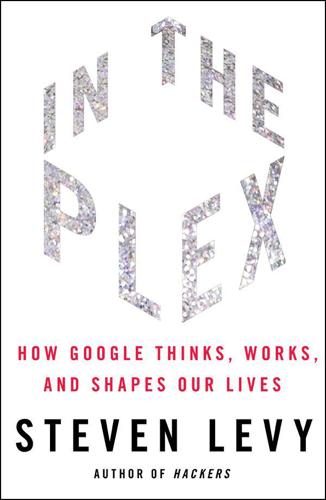
In the Plex: How Google Thinks, Works, and Shapes Our Lives
by
Steven Levy
Published 12 Apr 2011
Since its earliest days, Brin and Page have been consistent in framing Google as an artificial intelligence company—one that gathers massive amounts of data and processes that information with learning algorithms to create a machinelike intelligence that augments the collective brain of humanity. Google’s autonomous cars are information-collectors, scanning their environment with lasers and sensors, and augmenting their knowledge with Street View data. (Unlike human drivers, they always know what’s around the corner.) “This is all information,” says Thrun. “And it will make our physical world more accessible.” What will Google’s explorations in artificial intelligence eventually yield? Will we routinely cruise in autonomous cars powered by Google—undoubtedly capable of pointing out sightseeing highlights and culinary opportunities as they whisk us to destinations?
…
Google, after all, was founded on the premise that the best path to success is doing what the conventional wisdom says you cannot do. In an era of unprecedented technology leaps, that has turned out to be an excellent premise. “It’s quite amazing how the horizon of impossibility is drifting these days,” says Thrun. The revelation of the autonomous vehicle program at the end of 2010 had all the earmarks of a Larry Page project—scary ambition, groundbreaking AI, massive processing of information in real time, and rigidly enforced stealth. (Only when a reporter learned of the project did Google agree to talk about it.) The glimpse it provided of Page’s priorities turned out to be more significant than expected when an apparently predestined change in Google’s leaders occurred sooner than observers had expected.

Genius Makers: The Mavericks Who Brought A. I. To Google, Facebook, and the World
by
Cade Metz
Published 15 Mar 2021
But she knew the lab’s ongoing research in computer vision—an extension of Krizhevsky’s efforts at the University of Toronto—would remake the way the company built its autonomous vehicles. The Google self-driving car project, known inside the company as Chauffeur, was nearly five years old. That meant Google had spent nearly five years building autonomous vehicles without help from deep learning. At Carnegie Mellon in the late 1980s, Dean Pomerleau had designed a self-driving car with help from a neural network, but when Google went to work on autonomous vehicles nearly two decades later, the heart of the research community, including the many Carnegie Mellon researchers hired for the Google project, had long since discarded the idea.
…
He said he was building a self-driving car at Tesla, and he asked LeCun who he should hire to run the project. That week, he contacted several other Facebook researchers, asking each the same question—a gambit that eventually raised the ire of Mark Zuckerberg. LeCun told Musk he should contact Urs Muller, an old colleague from Bell Labs who’d built a start-up for exploring autonomous vehicles through deep learning. Before Musk could hire this Swiss researcher, however, someone else did. Days after LeCun got the call from Musk, he fielded an identical request from Jensen Huang, the founder and CEO of Nvidia, and he gave the same answer, which Nvidia acted on without delay. The company’s ambition was to build a lab that would push the boundaries of self-driving and, in the process, help the company sell more GPU chips.
…
It didn’t actually build the stuff that needed the Next Big Thing in artificial intelligence. As he recovered from the first surgery on his hip, Lu urged the Microsoft brain trust to embrace the idea of a driverless car. Myriad tech companies and carmakers had a long head start with their autonomous vehicles, and Lu wasn’t exactly sure how Microsoft would enter this increasingly crowded market. But that wasn’t the issue. His argument wasn’t that Microsoft should sell a driverless car. It was that Microsoft should build one. This would give the company the skills and the technologies and the insight it needed to succeed in so many other areas.

Supertall: How the World's Tallest Buildings Are Reshaping Our Cities and Our Lives
by
Stefan Al
Published 11 Apr 2022
A place derives value from its access to schools, restaurants, grocery stores. Access improves as neighborhoods blend more and more uses or as they densify, for instance with tall, mixed-use buildings. Physical proximity has long been of the essence for access. However, better mobility systems can also improve access. With autonomous vehicles, hyperloops, and aerial ridesharing in the near future, we may be up for a wild ride! Plus, along with it, land that was previously less desirable will become the development hot spots of tomorrow. New mobility systems will change our cities and buildings once again. In 1994, Italian physicist Cesare Marchetti described a principle, now known as “Marchetti’s constant.”
…
Capsules carrying people can reach a top speed of 760 miles per hour, around the sonic barrier. This may lead to the explosive growth of metropolitan areas. You could commute from your office in downtown Los Angeles to Las Vegas, where prices are lower, and live in a bigger home. The race will be on for the first hyperloop-integrated skyscraper. Autonomous vehicles (AVs) could desensitize people to distance, possibly lengthening Marchetti’s “constant” of commuting time. Without having to attend to the wheel, you can now sleep in your car, or conduct online meetings there. Perhaps you can live a little farther away and buy a cheaper home? In other words, cities will increasingly sprawl out.
…
This may allow a more peaceful coexistence between people and vehicles in streets. In some ways, the future of the automated street could be a throwback to the era before the car. In those days, the street buzzed with social activity, where people would shop and meet. Perhaps a street for safer, autonomous vehicles has the potential to return to its more sociable days. With safer conditions for pedestrians, streets can remove their curbs. The autonomous streets could look a lot like the “shared streets” that already exist in Europe. For decades, entire Dutch neighborhoods have removed curbs to increase the perception of risk for automobilists, leading to slower traffic.
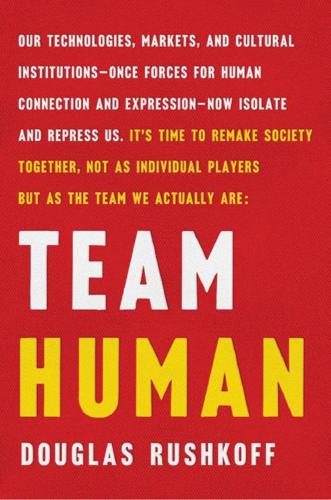
Team Human
by
Douglas Rushkoff
Published 22 Jan 2019
It’s hard for human beings to oppose the dominance of digital technology when we are becoming so highly digital ourselves. Whether by fetish or mere habit, we begin acting in ways that accommodate or imitate our machines, remaking our world and, eventually, ourselves in their image. For instance, the manufacturers of autonomous vehicles are encouraging cities to make their streets and signals more compatible with the navigation and sensor systems of the robotic cars, changing our environment to accommodate the needs of the robots with which we will be sharing the streets, sidewalks, and, presumably, air space. This isn’t so bad in itself, but if history is any guide, remaking the physical world to accommodate a new technology—such as the automobile—favors the companies selling the technologies more than the people living alongside them.
…
Such businesses end up destroying the marketplaces on which they initially depend. When the big box store does this, it simply closes one location and starts the process again in another. When a digital business does this, it pivots or expands from its original market to the next—say, from books to toys to all of retail, or from ride-sharing to restaurant delivery to autonomous vehicles—increasing the value of its real product, the stock shares, along the way. The problem with this model, from a shareholder perspective, is that it eventually stops working. Even goosed by digital platforms, corporate returns on assets have been steadily declining for over seventy-five years.
…
So computer scientists feed the algorithms reams and reams of data, and let them recognize patterns and draw conclusions themselves. They get this data by monitoring human workers doing their jobs. The ride-hailing app on cab drivers’ phones also serves as a recording device, detailing the way they handle various road situations. The algorithms then parse data culled from thousands of drivers to write their own autonomous vehicle programs. Online task systems pay people pennies per task to do things that computers can’t yet do, such as translate certain phrases, label the storefronts in photos, or identify abusive social media posts. The companies paying for the millions of human microtasks may not actually need any of the answers themselves.

Nothing but Net: 10 Timeless Stock-Picking Lessons From One of Wall Street’s Top Tech Analysts
by
Mark Mahaney
Published 9 Nov 2021
These words were actually lifted from the founders’ letter included in the S1 filed 11 years earlier. And those “smaller bets” included Life Sciences (which was developing glucose-sensing contact lenses), Calico (focused on longevity . . . as in human longevity . . . as in curing death), Wing (a drone delivery service), and Waymo (Google’s autonomous vehicle unit). It all sounded wonderful, until the market realized that those “smaller bets” were generating almost $4 billion in operating losses in 2015. Loss levels that were anything but “small” and were going to continue at that level for at least five years with de minimis revenue to show for it.
…
Table 9.10 is a quick summary of Uber’s financials for 2018 (in the S1), 2019, and 2020. The key takes were: TABLE 9.10 UBER: Baby, You Can Drive My Car . . . and Cut Costs 1. Uber’s Rides segment was actually reasonably profitable—17 percent EBITDA margin in 2018. 2. Uber’s Other Segments, which contained its Freight business and its Autonomous Vehicle group, were losing a lot of money—$689 million. 3. Uber was spending a shockingly large amount on G&A and what it called Platform R&D—$1.9 billion in 2018. Through the selling off of underperforming assets like Uber Eats in South Korea and through forced austerity measures in the wake of the Covid-19 pandemic, Uber was able to materially improve its operations over the next two years without materially sacrificing growth.
…
There was not a history of consistent 20%+ growth—that 2018 growth of 42% marked a sharp deceleration from prior years. Hence, the partial check. Continuous and successful product innovation? Partial check. This is a hard one to judge convincingly, but Uber in 2019 was rolling out a reasonably new loyalty program for its Uber Rides and Eats customers, and it was investing aggressively in autonomous vehicle technology. The company was also investing aggressively in ways to reduce Rides wait times for both riders and drivers and in batching solutions for its Eats offering. Large TAM? Check. Per the “TAM, SAM, and DAM” section in the TAM lesson, Uber faced a multitrillion-dollar TAM, given its core ridesharing business and its online food order delivery business, both of which were already operating globally in 2019.

Squeezed: Why Our Families Can't Afford America
by
Alissa Quart
Published 25 Jun 2018
The not-for-profit organization New York Communities for Change (NYCC), for instance, has been agitating against automation in trucking and driving and launched a campaign targeting the U.S. Department of Transportation, which has billions of dollars set aside to subsidize the development and spread of autonomous vehicles. “Many truckers are very fearful,” said Zachary Lerner, the group’s senior director of labor organizing, who has been organizing drivers against the autonomous vehicles. “Trucking is not the best job, but it pays the most in lots of rural communities. They worry: Are they going to support their families? And what will happen to all of the small towns built off the trucking economy?”
…
(Ironies compound: as the writer Douglas Rushkoff has noted, today’s drivers are themselves now part of the research and development for what will most likely be the driverless future, building up a company with their labor in preparation for a time when the company will do away with them.) “Our demand is to freeze all the subsidies for the research on autonomous vehicles until there is a plan for workers who are going to lose their jobs,” Lerner said. As part of this effort, NYCC regularly puts together conference calls between dozens of taxi, Uber, and Lyft drivers. They discuss how they’ve all gotten massive loans to buy cars for Uber and how they are still going to be paying off these loans when the robots come for their jobs—the robot vehicles Uber has promised within the decade.
…
Or what if we simply decelerated our robot interlopers and established a “slow tech” movement to match our “slow food” and “slow fashion” trends? Or at the very least, what if we started to rethink who owns, say, autonomous trucks? The effect of robotization would be profoundly different if truckers themselves owned their own autonomous vehicles rather than a corporation controlling them all. Robots are always spoken of as emblems of the future, but they seem to me part of the past as well, akin to the Luddites’ weaving machines. What if the Luddites had been members of co-ops, with a stake in the automated looms that replaced them?

Green Swans: The Coming Boom in Regenerative Capitalism
by
John Elkington
Published 6 Apr 2020
In the economic domain, recent Green Swan breakthroughs have included the rapid spread of cell phone technology and the internet, linking us in new ways and massively boosting the prospects for self-education, and the staggering cost reductions for solar and wind power systems. The accelerating shift to electric vehicles is a linked example, especially when coupled with the rapid evolution of battery technology and the impact of digitalization on autonomous vehicles, the internet of everything, and the sharing economy. In the social domain, Green Swan trajectories have been followed by universal schooling in many countries, the evolution of vaccine technology (despite recent anti-vaccine rumors and propaganda), and the growth of social movements focusing on environmentalism, social enterprise, and impact investment.
…
Too many change agents, meanwhile, remain distracted by the task of driving incremental improvements in existing and incumbent technologies, ranging from gasoline-powered automobiles to energy- and chemical-intensive air-conditioning systems. All-important work, but we must now move well beyond that. We must engage and shape the thinking of those who will transform our future with such things as artificial intelligence, the internet of everything, autonomous vehicles, synthetic biology, and, some insist, geoengineering. Do not misunderstand me: This rapid evolution of technologies is exciting and has the potential to tackle many of the central challenges we face in this century, if properly used. In terms of potential upsides, I know from personal experience that a radically better future is already here, or taking shape fast.
…
The ability to control corruption is very welcome, but human ingenuity is such that it presumably cannot be long before such technologies are also used to make corrupt practices even stealthier. •Autonomous and Urban Mobility: As urbanization intensifies, WEF argues that we urgently need new mobility solutions, “while also minimizing increasingly complex social, economic, and environmental challenges. Autonomous vehicles have the potential to improve road safety, decrease pollution levels, reduce congestion and increase traffic efficiency. However, this transition involves a disruptive industry shift bound to reshape public and private transportation.” Collaboration is now needed across industries, sectors, and geographies to identify the best strategies for promoting the wider adoption of autonomous mobility solutions in a “safe, clean, and inclusive manner.”
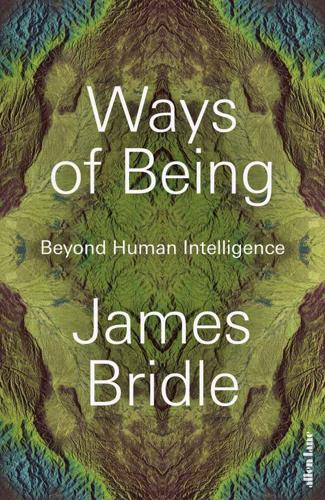
Ways of Being: Beyond Human Intelligence
by
James Bridle
Published 6 Apr 2022
Questions about who gets to do that rewriting of reality, which decisions are made along the way, and who gains from it, are all too often missed and forgotten in the excitement. That is why I believe that it’s crucially important for as many of us as possible to be engaged in thinking through the implications of new technologies; and that this process has to include learning about and tinkering with the things ourselves. My attempt at building an autonomous vehicle consisted of a rented SEAT hatchback, a few cheap webcams, a smartphone taped to the steering wheel, and some software copied and pasted from the internet.1 This wasn’t a case of programming a dumb machine with everything it needed to know in advance, however. Like the commercial systems developed by Google, Tesla and others, my car would learn to drive by watching me drive: by comparing the view from the cameras with my speed, acceleration, steering wheel position and so forth, the system matched my behaviour with the road shape and condition, and after a couple of weeks it had learned how to keep a vehicle on the road – in a simulator at least.
…
And so, using several kilo bags of salt, I poured out onto the ground a solid circle a few metres in diameter, and then around it I drew a dashed circle. Together, these circles formed a closed space in which the (European) road marking for ‘No Entry’ is projected inwards. As a result, any well-trained, law-abiding autonomous vehicle, on entering the circle, would find itself unable to leave it. I called it the Autonomous Trap. Autonomous Trap 001, Mount Parnassus, 2017. This crude attack on the machine’s sense of the world was intended to make a few points. The first is political: by working with these technologies, we can learn something of their world, and this knowledge can be used to turn them to more interesting and equitable ends – or to stop them in their tracks.
…
The Trolley problem asks what an automated vehicle should do if there are two unavoidable paths for it to take: one towards a group of people and one towards an individual, for example. Whose life is worth more? The Trolley problem has even been turned into an online game, the Moral Machine, by researchers at MIT seeking to formulate rules for autonomous vehicles.21 The problem with the Trolley problem is that it was originally formulated for a human operator at the controls of a runaway tram car: the power of the problem resides in the unavoidable nature of its two outcomes. But its generalization to automated systems is deeply flawed. By focusing on only the final fork in the path, we are led to ignore all the other decisions made along the path that led to this critical moment.
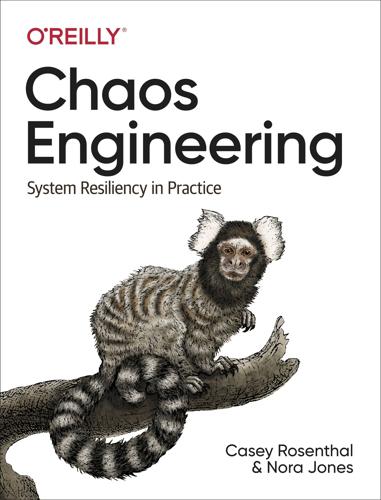
Chaos Engineering: System Resiliency in Practice
by
Casey Rosenthal
and
Nora Jones
Published 27 Apr 2020
Calling these out and explicitly naming it Chaos Engineering allows us to strategize about its purpose and application, and take lessons learned from other fields and apply them to our own. In that spirit, we can explore Chaos Engineering in industries and companies that look very different from the prototypical microservice-at-scale examples commonly associated with the practice. FinTech, Autonomous Vehicles (AV), and Adversarial Machine Learning can teach us about the potential and the limitations of Chaos Engineering. Mechanical Engineering and Aviation expand our understanding even further, taking us outside the realm of software into hardware and physical prototyping. Chaos Engineering has even expanded beyond availability into security, which is the other side of the coin from a system safety perspective.
…
The Rise of Cyber-Physical Systems There are many ecosystems unfamiliar to most software engineers where software is still the centerpiece driving innovation. Cyber-physical systems (CPSs) comprise one such ecosystem. A CPS is an interconnected hardware-software system that is deployed into, and interacts with, the physical world around it. Examples of such systems range from avionics systems or autonomous vehicles to traditional operational technology deployments like industrial control systems in a chemical refinery. Typically they’re composed of a menagerie of sensors, embedded devices, communication transports and protocols, and half-a-dozen different obscure operating systems, and often they have critical dependencies on numerous proprietary black box components.
…
Embedded engineers and safety-critical system engineers are slowly coming to the realization that they are no longer component engineers building a self-contained piece of local functionality in a box. We are all distributed systems engineers now. Chaos Engineering’s origins in distributed software systems can help CPSs because distributed systems engineers are predisposed to worrying about things that are just now entering the radar of embedded engineers. Working with engineers in the autonomous vehicle development space, I often suggest going after timing constraints as a first target for Chaos Engineering and experiments. Not once has it left anybody wanting for interesting and in some cases existential insights about how their system behaves when their clocks play tricks on them. For anybody reading this who works on critical software-intensive systems of systems looking for a place to start applying Chaos Engineering practices: start with timing.

Rise of the Robots: Technology and the Threat of a Jobless Future
by
Martin Ford
Published 4 May 2015
Medtronic, Inc., 150n risk, Peltzman effect and, 267–268 RoboBusiness conference/tradeshow, 7 Robot & Frank (film), 155 robotics, 6–8 cloud, 20–23 See also automation; robots robotic walkers, 157 robots in agriculture, 23–26 box-moving, 1–2, 5–6 consumer, 197n educational, 7 elder-care, 155–158 hospital and pharmacy, 153–155 industrial, 1–5, 10–11 personal, 7 telepresence, 119–120, 157 Rolling Stone (magazine), 56 Romney, Mitt, 272 Roosevelt, Franklin, 279 Rosenthal, Elisabeth, 160, 163 Rosenwald, Michael, 107 ROS (Robot Operating System), 6, 7 Russell, Stuart, 229 Rutter, Brad, 101 Sachs, Jeffrey, 60 Saez, Emmanuel, 46 safety, autonomous cars and, 184–185, 187 Salesforce.com, 134 Samsung Electronics, 70n Samuelson, Paul, x Sand, Benjamin M., 127 San Jose State University, 134 Sankai, Yoshiyuki, 156–157 Santelli, Rick, 170 savings, China’s high rate of, 224–225 SBTC. See skill biased technological change (SBTC) Schlosser, Eric, 210 Schmidt, Michael, 108, 109 Schwarzenegger, Arnold, 22 S-curves, 66–67, 68, 69, 70–71, 250 secular stagnation, 274n self-driving cars, See autonomous cars Selingo, Jeffrey J., 140, 141 Semiconductor Industry Association, 80 service sector, 12–20 The Shallows (Carr), 254 Shang-Jin Wei, 225 Silvercar, 20 Simonyi, Charles, 71 single-payer health care system, 165–167, 169 The Singularity, 233–238, 248 The Singularity Is Near (Kurzweil), 234 Singularity University, 234 Siu, Henry E., 49, 50 skill biased technological change (SBTC), 48 skills, acquisition of by computers, xv–xvi Skipper, John, 201 “Skynet,” 22 Slate (magazine), 153 Smalley, Richard, 244–245 Smith, Adam, 73 Smith, Noah, 219–220, 273 Smith, Will, 111 social media response program, 93–94 social safety net, 278.
…
YouTube, Instagram, and WhatsApp are, of course, all examples drawn directly from the information technology sector, where we’ve come to expect tiny workforces and huge valuations and revenues. To illustrate how a similar phenomenon is likely to unfold on a much broader front, let’s look in a bit more depth at two specific technologies that have the potential to loom large in the future: 3D printing and autonomous cars. Both are poised to have a significant impact within the next decade or so, and could eventually unleash a dramatic transformation in both the job market and the overall economy. 3D Printing Three-dimensional printing, also known as additive manufacturing, employs a computer-controlled print head that fabricates solid objects by repeatedly depositing thin layers of material.
…
In the United States alone nearly 6 million people are employed in the construction sector, while the International Labour Organisation estimates that global construction employment is nearly 110 million.7 Three-dimensional construction printers might someday result in better and cheaper homes, as well as radically new architectural possibilities—but the technology could also eliminate untold millions of jobs. Autonomous Cars The self-driving car entered the final stretch on the road that would take it from science fiction to everyday reality on March 13, 2004. That date marked the first DARPA Grand Challenge—a race that the Defense Advanced Research Projects Agency hoped would help jump-start progress in the development of autonomous military vehicles.
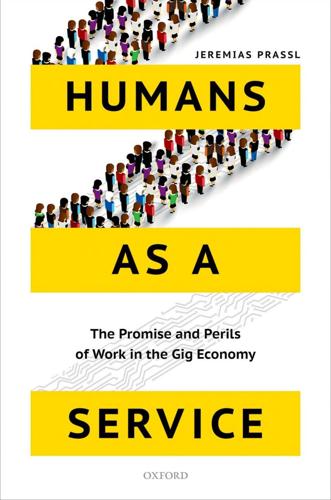
Humans as a Service: The Promise and Perils of Work in the Gig Economy
by
Jeremias Prassl
Published 7 May 2018
First, what about Uber’s well-publicized efforts to develop self-driving cars? And, in any event, might a delay in innovative automation not be to the benefit of workers whose jobs would otherwise be threatened by a rise of the robots? As regards the first of these arguments, Uber’s emphasis on autonomous vehicles has increasingly been questioned by experts from both technological and eco- nomic perspectives: the company’s efforts seem to lag significantly behind competitors’ technological advances.75 In any event, why would Uber replace its current asset-light model, under which drivers bear the full cost of pro- viding cars, petrol, and their time, with a massive investment in an expensive fleet of self-driving cars?
…
This book is dedicated to Abi with my deepest love and admiration. J.F.B.B.P. Magdalen College, Oxford Hilary Term MMXVIII * * * * * * Index Aasmäe, Mailin 183 automata 1 Adams, Abi 111, 178 automation 89, 135, 136 ‘additional income’ 81–2 limits of 137–9 airbnb 143 robots 136–7 Airtasker 114 autonomous vehicles 89, 137 Akerlof, George 158 autonomy 53–5 (see also Albin, Einat 175, 176 self-determination) algorithms 2, 5, 7, 8, 12, 13, 84 algorithmic control and 55–8 control mechanisms 55–8 sanctions and 61–3 limitations 138, 139 wages and 58–61 rating algorithms 54, 55, 87–8 Autor, David 138–9, 185, 186 discrimination 113 Avent, Ryan 89, 171 Amazon ‘artificial artificial intelligence’ 6, 139 Badger, Emily 182 CEO 1–2, 3, 6 Balaram, Brhmie 38, 149, 150, 153, ‘humans as a service’ 3 155, 158, 180 MTurk 2, 3, 4, 11, 12, 24–5, 76, 139, Balkin, Jack 170 161–2, 163 bargaining power 9, 48, 65, 66, 82, 107, algorithmic control mechanisms 56 110, 111, 113, 116 (see also business model 100, 101, 103, 104 collective bargaining) commission deductions 63 Barry, Erin 166 digital work intermediation 14, 15 Benjamin, Robert 73 matching 19 Bertram, Jo 115 payment in gift vouchers 105 Berwick, Barbara Ann 99 quality control 120 Bevin, Ernest 86 TurkOpticon 114, 162, 163, 179 Bezos, Jeff 1–2, 3, 6, 72 wage rates 59, 60, 61 Bhuiyan, Johana 162 termination of agreements 63 Biewald, Lukas 4 ‘web services’ 1–2 bilateral relationships 100 Andersen, Hans Christian 71, 166 BlaBlaCar 43 Apple 35 BlancRide 43 apps 5 Blasio, Bill de 36 arbitration clauses 67, 165 Bonaparte, Napoleon 1 Arlidge, John 163 Booth, Robert 182 ‘artificial artificial intelligence’ 6, 139 Boswell, Josh 182 Ashley, Mike 40 Bradshaw, Tim 151 associated costs 60 Brazil, Noli 133, 184 asymmetric information 32, 54, 87, 131 Bruckner, Caroline 126–7, 183 Australia 109, 110–11, 114, 121, 176, 177 Brynjolfsson, Erik 137, 138, 185 * * * 192 Index Burger King 60 consumer satisfaction 25 business models 12–13, 44, 100, 101, 102 contracts of employment 94 structural imbalances 130–2 bilateral relationships 100 Busque, Leah 46, 51 contractual agreements 8 Butler, Sarah 155 contractual prohibitions 66–7 Bythell, Duncan 89, 166, 167, 168, control mechanisms 54, 55–7 169, 172 ‘cost of switching’ 165 Craigslist 20 Cala, Ryan 123, 131, 182, 184 Croft, Jane 173, 182, 186 Callaway, Andrew 58, 161 ‘crowd-based capitalism’ 40, 73 capitalism 2, 3, 40, 73 CrowdFlower 4, 58 Carr, Paul Bradley 39, 154 wage rates 59 Carson, Biz 173 crowdsourcing 7, 11 Case, Steve 73, 166 classification and differentiation 13 cash burn 22–3 crowdwork 2, 54 cashless payment 5 classification and differentiation 13 ‘casual earners’ 29 Crump, W.
…
L. 176 Chen, Keith 122 Davies, Paul 174 Cherry 38 Davies, Rob 151 Cherry, Miriam 97, 99, 132, 173, 174, 184 Day, Iris 177 chess robots 1, 6 Deakin, Simon 36, 112, 130, 131, 152, 172, China 12, 38, 153 174, 177, 178, 184, 185 Chowdhry, Amit 181 deductions from pay 15, 19, 60, 63, 67 Christenson, Clayton M. 39 Deep Blue 1 ‘churn’/worker turnover 68 Deliveroo 2, 11, 12, 13, 115 Clark, Shelby 46 collective action by drivers 113 classificatory schemes 13, 28–9, 147 contractual prohibitions 66–7 misclassification 95, 96–100 employment litigation 99 Clement, Barrie 162 internal guidelines 43–4 Clover, Charles 153 safety and liability 122–3 Coase, Ronald 19, 94, 101, 172 wage rates 65 Coase’s theory 19, 20 delivery apps 2 Codagnone, Cristiano 150 demand fluctuations 78 Cohen, Molly 36, 37, 152, 157 Denmark 36 ‘collaborative consumption’ 42 deregulation 37, 40 (see also regulation) collective action 113–15 Dholakia, Utpal 150 collective bargaining rights 48, 65, 82 Didi 2, 12, 38 commission deductions 15, 19, 60, 63, 67 differential wage rates 109–11 commodification of work 76, 77, 110 digital disruption 49, 50 competition 88 ‘digital feudalism’ 83 consumer demand 17–18 digital innovation see innovation consumer protection 10, 112, 121, 128–9 digital market manipulation 123 safety and liability 122–3, 128–9 digital payment systems 5 * * * Index 193 digital work intermediation 5, 11, 13–16 borderline cases 100 disability discrimination 62, 121 identifying the employer 100 discriminatory practices 62, 94, 113, easy cases 102–3 121, 180 functional concept of the disputes 66 employer 101–2, 104 disruptive innovation 39–40, 49, 50, 95 genuine entrepreneurs 103 dockyards 78, 79–80 harder cases 103–4 ‘doublespeak’ 31–50, 71, 95, 97–8, 133 multiple employers 103 Doug H 160, 163 platforms as employers 102–3 down-time 60, 65, 76, 77 ‘independent worker’ 48 Downs, Julie 180 misclassification 95, 96–100 Drake, Barbara 168 ‘personal scope question’ 93 drink driving 133, 184–5 employment taxes 125–7 Dzieza, Josh 163 Engels, Friedrich 81, 168 ‘entrepreneur-coordinator’ 101 economic crises 145 entrepreneurship 6, 8, 21, 32, 42, 43, economic drivers 7, 18–24 45–6, 50, 52 (see also micro- Edwards, Jim 146 entrepreneurs) efficiency 7 autonomy 53–5 Elejalde-Ruiz, Alexia 175 algorithmic control and 55–8 ‘elite worker’ status 61, 67 sanctions and 61–3 ‘emperor’s new clothes’ 71 wages and 58–61 empirical studies 28–9 freedom 8, 14, 27, 29, 47, 49, 51, 52, employer responsibility 104 53, 55, 65–8, 69, 85, 96, 108, 110, employment contracts 94 112, 113 bilateral relationships 100 on-demand trap and 68–70 employment law 4, 9, 10, 38, 84 risk and 86 (see also regulation) genuine entrepreneurs 102, 103 continuing importance 139–40 misclassification 96–7, 98, 101 control/protection trade-off 93–4, 95 ‘personal scope question’ 93 European Union 107, 111, 112, 178 self-determination 63–5 flexibility and environmental impacts 21, 26 innovation and 90 Estlund, Cynthia 137, 185 measuring working time 105–7 Estonia 127 mutuality of obligation 174 Estrada, David 41 new proposals 46–9 euphemisms 44–5 rebalancing the scales 107–8 European Union law 107, 111, 112, 178 collective action 113–15 exploitation 26–7 portable ratings 111–13 Ezrachi, Ariel 150 surge pricing 108–11 ‘risk function’ 131, 132 Facebook 35, 57 workers’ rights 105 FairCrowdWork 114, 179 rights vs flexibility 115–17 Farrell, Sean 164 employment litigation FedEx 97 FedEx 97, 173 feedback 5, 15–16 France 99 Feeney, Matthew 35, 151 Uber 45, 48, 54–5, 98, 99, 106, 115 Field, Frank 26 UK 45, 48, 98–9, 106, 115 financial losses 22–3 US 54–5, 97, 98, 99 ‘financially strapped’ 29 employment status 21, 45, 47 Finkin, Matthew 74, 84, 166, 169 * * * 194 Index Fiverr 12, 13, 24, 78 historical precedents and CEO 17 problems 72, 73–85 Fleischer, Victor 20, 147 rebranding work 4–6, 32 flexibility 8, 10, 12, 107, 108 labour as a technology 5–6 vs rights 115–17 market entrants 88 food-delivery apps 12 matching 13, 14, 18–20 Foodora 2, 12 monopoly power 23–4, 28 Foucault, Michel 55, 159 network effects 23–4 founding myths 34–5 overview 2–3 Fox, Justin 182 perils 6, 26–8, 31 fragmented labour markets 83, 84, 86, platform paradox 5 90, 113 platforms as a service 7–8 France 78 consumer protection 10 employment litigation 99 potential 6, 7, 12, 24–6, 31 Labour Code 114, 176, 179 regulation 9–10 (see also regulation) regulatory battles 36 real cost of on-demand services 119, tax liability 126 121–2 (see also structural ‘free agents’ 28–9 imbalances) Freedland, Mark 174, 175 regulation see regulation Freedman, Judith 111, 178 regulatory arbitrage 20–2 freedom 8, 14, 27, 29, 47, 49, 51, 52, 53, size of the phenomenon 16–17, 145–6 55, 65–8, 69, 85, 96, 108, 110, work on demand 11–29 112, 113 gigwork 13 on-demand trap and 68–70 Giliker, Paula 183 risk and 86 global economic crises 145 Frey, Carl 136, 185 Goodley, Simon 173 Fried, Ina 183 GPS 5, 57 Greenhouse, Steven 66, 164 Gardner-Selby, W. 185 Griswold, Alison 164, 181 gender parity 144 (see also Grossman, Nick 46 discriminatory practices) Gumtree 20 Germany Gurley, Bill 161 regulatory battles 36 Guyoncourt, Sally 178 workers’ rights 114 gift vouchers 105 Hacker, Jacob 86, 170 gig economy Hall, Jonathan 60, 162, 165 business models 12–13, 44, 100 Hammond, Philip 126, 182 cash burn 22–3 Hancock, Matthew 46, 166 clash of narratives 8 Handy 18 classification 13, 28–9 Hardy, Tess 176 critics 2, 3, 8 Harman, Greg 163 digital work intermediation 5, 11, Harris, Seth 48, 49, 105, 157, 175 13–16 Hatton, Erin 82, 169 economic drivers 7, 18–24 Heap, Lisa 177 empirical studies 28–9 Helpling 2 employment law and see employment Hemel, Daniel 147, 170 law Hesketh, Scott 181 enthusiasts 3, 4, 8 hiring practices: historical gigwork vs crowdwork 13 perspective 78, 79 growth 17–18 historical perspective 72, 73–85 ‘humans as a service’ 3–6 Hitch 38 * * * Index 195 Hitlin, Paul 162 Internet Holtgrewe, Ursula 169 collective action 113 HomeJoy 132 Third Wave 73 Hook, Leslie 153 Irani, Lilly 6, 114, 142, 162, 179 Horan, Hubert 22, 148 Isaac, Mike 170, 171 Horowith, Sara 144 Issa, Darrell 41 hostile takeovers 111–12 Howe, Jeff 7, 11, 142 jargon 42–5 Huet, Ellen 153 Jensen, Vernon 167, 168, 170 Human Intelligence Tasks (HITs) 60, 93 Jobs, Steve 35 ‘humans as a service’ 3–6 joint and several liability 104 historical precedents and problems 72, Justia Trademarks 143 73–85 rebranding work 4–6, 32, 40–50 Kalanick, Travis 43, 86 Hunter, Rachel 106, 176 Kalman, Frank 16, 144 Huws, Ursula 27, 141, 150 Kaminska, Izabella 22–3, 44, 90, 148, 156, 169, 171, 172 ‘idle’ time 60, 65, 76, 77 Kaplow, Louis 184 illegal practices 57 Kasparov, Garry 1 immigrant workers 77 Katz, Lawrence 16 incentive structures 67–8 Katz, Vanessa 116, 179 independent contractors 21 Kaufman, Micha 17, 145, 149 Independent Workers Union of Great Kempelen, Wolfgang von 1 Britain (IWGB) 113, 179 Kennedy, John F. 135, 185 industrialization 75 Kenya 36 industry narratives 32–3, 49–50 Kessler, Sarah 151 information asymmetries 32, 54, 87, 131 Keynes, John Maynard 135, 185 innovation 3, 6, 8, 9, 10, 31, 32, 42, 45–6, King, Tom, Lord King of Bridgwater 71 110 cheap labour and 89 Kirk, David 133, 184 disruptive innovation 39–40, 49, 95 Kitchell, Susan 166 historical precedents and problems 72, Klemperer, Paul 165 73–85 Krueger, Alan 16, 48, 49, 60, 105, 106, incentives 86–90 157, 162, 165, 175 myths 72, 83 Krugman, Paul 170 obstacles to 88–90 Kucera, David 186 paradox 72, 87 problematic aspects 85–90 labour law see employment law productivity and 87 Lagarde, Christine 86, 170 shifting risk 85–6 Leimeister, Jan Marco 13 workers’ interests and 89–90 Leonard, Andrew 33, 151 innovation law perspective 36 Lewis, Mervyn 168 ‘Innovation Paradox’ 9 Liepman, Lindsay 184 insecure work 9, 10, 12, 27, 42, 107 Lloyd-Jones, Roger 168 historical perspective 80, 81 loan facilities 68 insurance 123 lobbying groups 32, 47, 48 intermediaries 83 (see also digital work Lobel, Orly 11, 37–8 intermediation) low-paid work 9, 26–7, 40–2, historical perspective 79–80 59, 61 International Labour Organization low-skilled work 76, 77, 82 (ILO) 4, 83, 97, 169, 173 automation and 138 * * * 196 Index Lukes, Steven 159 Murgia, Madhumita 182 Lyft 2, 12, 13, 38, 41, 42, 76 mutuality of obligation 174 algorithmic control mechanisms 56 network effects 23–4 regulatory battles 35 Newcomer, Eric 148, 165 Uber’s competitive strategies 88 Newton, Casey 164 Nowag, Julian 183 McAfee, Andrew 137, 138, 185 Machiavelli, Niccolo 93, 172 O’Connor, Sarah 43, 155 machine learning 136, 137 ODesk 60 McCurry, Justin 186 O’Donovan, Caroline 144, 164, 181 Malone, Tom 73 Oei, Shu-Yi 124, 125, 132, 147, 182, 184 Mamertino, Mariano 161, 163 Ola 2, 12 market entrants 88 on-demand trap 68–70 market manipulation 123 on-demand work 11– 29 Markowitz, Harry 184 real cost of on-demand services 119, Marsh, Grace 182 121–2 (see also structural Marshall, Aarian 186 imbalances) Martens, Bertin 150 Orwell, George 31, 151 Marvit, Moshe 142 Osborne, Hilary 164 Marx, Patricia 119–20, 180 Osborne, Michael 136, 185 matching 13, 14, 18–20 outsourcing Maugham, Jolyon 182 agencies 40 Mayhew, Henry 77, 78, 79, 167 ‘web services’ 2 Mechanical Turk 1, 2, 6 outwork industry 74–5, 76–7, 79, 80, 89 mental harm 57–8 Owen, Jonathan 178 Meyer, Jared 149 ‘micro-entrepreneurs’ 8, 21, 46, 49, Padget, Marty 186 52–3, 63 Pannick, David, Lord Pannick 110 ‘micro-wages’ 27 Pasquale, Frank 8, 40, 154 middlemen 80 Peck, Jessica Lynn 26 minimum wage levels 3, 9, 21, 26, 27, 59, peer-to-peer collaboration 42, 43 94, 104, 105 Peers.org 32–3 minimum working hour guarantees 108 performance standard probations 61 misidentification 95, 96–100 personal data 112, 178 mobile payment mechanisms 5 ‘personal scope question’ 93 monopoly power 23–4, 28 Pissarides, Christopher 19, 147 Morris, David Z. 171 platform paradox 5 Morris, Gillian 174 platform responsibility 122–3, 128 MTurk 2, 3, 4, 11, 12, 24–5, 76, 139, platforms as a service 7–8 161–2, 163 consumer protection 10 algorithmic control mechanisms 56 regulation 9–10 (see also regulation) business model 100, 101, 103, 104 Plouffe, David 154 commission deductions 63 Poe, Edgar Allen 1 digital work intermediation 14, 15 Polanyi’s paradox 138–9 matching 19 political activism 114 payment in gift vouchers 105 portable ratings 111–13 quality control 120 Porter, Eduardo 171 TurkOpticon 114 ‘postindustrial corporations’ 20 wage rates 59, 60, 61 Postmates 57, 63, 121 * * * Index 197 Poyntz, Juliet Stuart 168 structural imbalances 130, 131 Prassl, Jeremias 174, 175, 176, 177, robots 136–7 178, 183 Mechanical Turk 1, 6 precarious work 9, 10, 12, 27, 42, 107 Rodgers, Joan 177 historical perspective 80, 81 Rodriguez, Joe Fitzgerald 181 price quotes 121–2 Rönnmar, Mia 175 surge pricing 58, 108–11, 122 Roosevelt, Franklin D. 133, 185 Primack, Dan 148 Rosenblat, Alex 54, 56, 65, 123, 131, 159, productivity 87 160, 163, 164, 182, 184 public discourse 69 Rosenblat, Joel 165 public health implications 27 Rubery, Jill 84, 169 punishment 57 (see also sanctions) Ryall, Jenny 181 quality control 5, 80, 120 safe harbours 47, 49 safety and liability 122–3, 128–9 rating mechanisms 5, 15–16, 53–4 sanctions 61–3 (see also punishment) algorithms 54, 55, 87–8 Sandbu, Martin 87, 170 discrimination 62, 113 Scheiber, Noam 164 portable ratings 111–13 Schmiechen, James 167, 168, 169 sanctions and 61–3 Schumpeter, Joseph 133 rebranding work 4–6, 32, 40–50 self-dealing 123 regulation 9–10 (see also employment law) self-determination 36–7, 47, 63–5 industry narratives 32–3, 49–50 (see also autonomy) new proposals 31, 46–9, 50 self-driving cars 89, 137 opponents 31, 33–4 sexual assaults 121, 180–1 Disruptive Davids 34–7 sexual discrimination 62, 144, 180 disruptive innovation theory ‘sham self-employment’ 97 39–40, 49 sharing economy 7, 20, 51 New Goliaths 37–40 critics 32–3 regulatory battles 35–7, 47–9 disruptive innovation 39, 49 safe harbours 47, 49 enthusiasts 61 self-regulation 36–7, 47 Sharing Economy UK 33, 37 shaping 32–3, 45–9 sharing platforms 116 regulatory arbitrage 20 –2, 147 Shavell, Steven 184 regulatory experimentation 36 Shleifer, Andrei 111, 178 Reich, Robert 108, 176 Shontell, Alyson 161 Relay Rides 46 Silberman, Six 61, 114, 162, 163, 179 ‘reluctants’ 29 Silver, James 156, 158 reputation algorithms 54 Singer, Natasha 43, 155, 156 ride-sharing/ridesharing 2, 21, 38, 41 Slee, Tom 32, 53, 142, 151, 155, 158, 159 (see also taxi apps) Smith, Adam 73 algorithmic control mechanisms 55–6 Smith, Jennifer 170 business model 102–3 Smith, Yves 148 discriminatory practices 62, 121 social media 114 maltreatment of passengers 121 social partners 10, 94 ride-sharing laws 47 social security contributions 21, 125–7 Ries, Brian 181 social security provision 3, 48, 131 Ring, Diane 124, 125, 132, 147, 182, 184 sociological critique 27–8 Risak, Martin 102, 175 specialization 75 risk shift 85–6 Spera 51, 158 * * * 198 Index Sports Direct 40–1 taxi regulation 21, 36, 37, 38, 114 Standage, Tom 141 vetting procedures 121 standardized tasks 76 tech:NYC 33 Stark, Luke 54, 56, 65, 159, 160, 163, 164 technological exceptionalism 6, 128 start-up loans 68 technological innovation see innovation Stefano, Valerio De 84, 169 technology 5–6, 27 Stigler, George 32, 151 unemployment and 135, 137, 140 Stone, Katherine 67, 165 terminology 42–5 structural imbalances time pressure 57 business model 130–2 Titova, Jurate 183 digital market manipulation 123 TNC, see transportation network levelling the playing field 127–32 company platform responsibility 122–3, 128 Tolentino, Jia 166 real cost of on-demand services 119, Tomassetti, Julia 20, 147, 156, 171 121–2 Tomlinson, Daniel 163 safety and liability 128–9 trade unions 65, 113, 114, 178, 179 sustainability 132–3 transaction cost 19 tax obligations 123–4, 129, 131, 132 transport network company (TNC) employment taxes and social regulation 47–8 security contributions 125–7 Truck arrangements 105 VAT 124–5, 129 Tsotsis, Alex 151 Stucke, Maurice 150 TurkOpticon 114, 162, 163, 179 Sullivan, Mike 180 Summers, Lawrence 111, 131, 178, 184 Uber 2, 11, 12, 43 Sundararajan, Arun 36, 37, 41, 73, 74, 75, algorithmic control mechanisms 56, 151, 152, 157, 166, 167 57, 58 Supiot, Alain 130–1, 177, 184 arbitration 165 surge pricing 58, 108–11, 122 autonomous vehicles and 89 survey responses 120 ‘churn’/worker turnover 68 Swalwell, Eric 41, 154 commission deductions 63 competitive strategies 88 takeovers 111–12 consumer demand 18 ‘task economies’ 76, 77, 79 control mechanisms 54 Task Rabbit 2, 12, 13, 46, 143–4, 163 creation of new job business model 100, 101, 160 opportunities 77–8 company law 56 digital work intermediation 14, 15 contractual prohibitions 66 disruptive innovation 39 digital work intermediation 14, 15–16 driver income projections 51 financial losses 22 Driver-Partner Stories 25, 149 founding myth 34–5 driver-rating system 158, 160 regulatory arbitrage 20 employment litigation terms of service 44, 53, 122, 158, 181 France 99 wage rates 64 UK 45, 48, 98, 106, 115 working conditions 57 US 54–5, 99 Taylor, Frederick 52–3, 72, 158 financial losses 22, 23 tax laws 84 ‘Greyball’ 88, 170 tax obligations 123–4, 129, 131, 132 ‘Hell’ 88, 170 employment taxes and social security loss-making tactics and market share 64 contributions 125–7 monopoly power 23 VAT 124–5, 129 positive externality claims 132–3 taxi apps 12, 20 regulatory arbitrage 20 * * * Index 199 regulatory battles 35, 36 Vaidhyanathan, Siva 40, 154 resistance to unionization 65, 178 value creation 18–19, 20 risk shift 86 van de Casteele, Mounia 182 safety and liability 122–3, 180–1 VAT 124–5, 129 sale of Chinese operation 38 Verhage, Julie 147 surge pricing 58, 122 vicarious liability 128 tax liability 125, 126, 127 unexpected benefits 26 wage rates 58–61, 64, 65 wage rates 58, 59, 60–1, 64, 65, 127 Wakabayashi, Daisuke 171 working conditions 113, 178 Warne, Dan 115 UberLUX 14 Warner, Mark 16 UberX 14, 51, 60 Warren, Elizabeth 127, 183 UK Webb, Beatrice and Sidney 80, 168 collective action 113 Weil, David 83, 169 employment litigation 45, 48, 98–9, 106 welfare state 130, 131 tax liability 124–5, 126 Wilkinson, Frank 84, 130, 131, 169, unemployment 135, 137, 140, 145 172, 184, 185 Union Square Ventures 46 Wong, Julia Carrie 170 unionization 10, 65, 113, 114, 178, 179 work on demand 11–29 ‘unpooling’ 147 worker classification 28–9, 147 Unterschutz, Joanna 178 misclassification 95, 96–100 Upwork 12, 76, 144 workers’ rights 105 algorithmic control mechanisms 56 vs flexibility 115–17 business model 100, 160 working conditions 57, 68–9 commission deductions 63, 67 historical perspective 77, 81 US Uber 113, 178 discriminatory practices 121 working time 105–7 employment litigation 54–5, 97, 98, 99 Wosskow, Debbie 157 regulatory battles 36, 47 Wujczyk, Marcin 178 tax liabilities 126–7 taxi regulation 36, 114 Yates, Joanne 73 transport network company (TNC) YouTube 58 regulation 47–8 user ratings 5, 15–16, 53–4, 55 Zaleski, Olivia 165 portable ratings 111–13 zero-hours contracts 40, 41, 107 sanctions and 61–3 Zuckerberg, Mark 35 * * * Document Outline Cover Humans as a Service: The Promise and Perils of Work in the Gig Economy Copyright Dedication Contents Introduction Welcome to the Gig Economy Humans as a Service Rebranding Work The Platform Paradox Labour as a Technology Making the Gig Economy Work Platforms as a Service Exploring the Gig Economy Charting Solutions A Broader Perspective 1.

Cogs and Monsters: What Economics Is, and What It Should Be
by
Diane Coyle
Published 11 Oct 2021
The alternative would have been balkanised or competing standards. Eventually, one would probably have prevailed, but at a significant opportunity cost in terms of the cost of building out networks and all the progress that unleashed as mobiles spread in developing economies. We need standards to be set now for areas of innovation ranging from autonomous vehicles to data to ‘smart’ urban networks. Most economists will be nodding agreement, but in general there is surprising sluggishness in thinking about policy in any other way than an analytical, almost mechanical, way. A dangerous dog savages a baby—so ban dangerous dogs. How to define them? Draw up a list of the relevant breeds.
…
Policy-makers naturally have a problem accepting black box solutions, and for some good reasons. These include questions about the robustness of AI to change in the data-generating process, and about bias due to the data sets. At least as important is the question of legal responsibility or political accountability: are we really going to accept that autonomous vehicles can motor round the streets with occasionally lethal consequences if they are owned by limited liability corporate entities? Will a minister of justice ever be accountable for sentencing or parole decisions if most are made by machine learning systems? How are the trade-offs between outcomes to be encoded in the machine’s objective function?
…
New types of digital service have emerged. Although it is still impossible to get a haircut without going to a hairdresser, a surprising number of services can be delivered in bit form. This is one lesson of the 2020–2021 lockdowns. Data usage has soared, even before the famed Internet of Things and autonomous vehicles had come into existence, with their data and communication demands. Zvi Griliches (1994) long ago distinguished between easy-to-measure and hard-to-measure sectors of the economy. Among the former he put agriculture, mining, manufacturing, transportation, communications, and public utilities.

99%: Mass Impoverishment and How We Can End It
by
Mark Thomas
Published 7 Aug 2019
Other problems which may benefit from this kind of high-power computing include mapping of entire proteins in the way that genes can be mapped today – or even entire genomes – and, of course, the development of full AI. Narrow AI for applications such as autonomous vehicles Proof of concept studies on self-driving cars have been underway for almost a decade and large-scale trials are now in progress. Google, for example, has more than twenty autonomous vehicles in the US, and NuTonomy has trials of taxis underway in Singapore. Many commentators believe that the first commercially available self-driving cars will hit the market before 2020.9 The heads of automakers General Motors and Nissan have both confirmed that they expect driverless cars on the roads by 2020.
…
In combination, these new technologies give us the power to create an improvement in human lives over the next thirty-five years at least comparable to that during the Golden Age of Capitalism. A huge range of high-value products and services, and indeed new business models, will become feasible. The total cost to the world – including environmental cost – will fall dramatically. And, economically, the size of the pie could expand enormously. Autonomous vehicles alone will have a huge impact on society: people who are not mobile because they cannot drive or cannot afford a car will become mobile; fewer people will feel the need to own a car since one could arrive at their doorstep when they need it; roads lined with cars that spend most of their lives immobile will be a thing of the past; the total number of cars needed will be far fewer and congestion may even reduce; and people whose jobs today involve driving buses, taxis, lorries and trucks will no longer be employed in those areas.
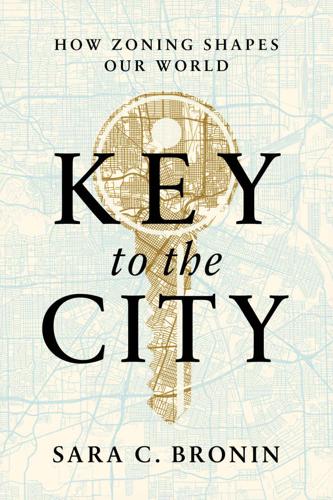
Key to the City: How Zoning Shapes Our World
by
Sara C. Bronin
Published 30 Sep 2024
Change never stops, and in figuring out how best to transport ourselves we will need to continue to adapt as new ways of moving emerge. Among current trends, car-share and ride-hailing services have changed our patterns of traffic, requiring more loading areas and diverting both riders and revenue from public transportation. Self-driving autonomous vehicles are laying claim to our streets. And massive subsidies of personal electric vehicles and charging stations reinforce the car as the primary way of getting around. I’ve laid out how we can start to reverse the ways in which zoning has perpetuated a reliance on cars via an infrastructure that forces us to use them.
…
accessory dwelling units, 81–83 accessory structures, 44 accessory uses, 56, 113, 186 Ace of Cakes TV show, 29–30 Act 34 (VT), 139–41 “activation elements,” 26 active transportation, 101, 104 adult use, 53–68 amortization of, 67, 179 “childhood exposure” effects of, 78–80 in Detroit, 189 in Hartford, 188 overlay districts for, 188 red-light districts, 10–11, 68 See also nightlife affordability gap, 93 African American communities the African diaspora and, 2, 42 agricultural entrepreneurship and, 114, 116, 195 in Chicago, 39–45, 80, 151, 185 discrimination against, 17, 81, 92 in the diverse makeup of the postwar city, 55 food insecurity among, 195 in Georgetown, 168 Great Migration to the North, 39–40 in Hartford, 4–5, 116 homeownership gap and, 81 in Houston, 79–80 redlining, 92 in the Twin Cities, 81 unemployment among, 41, 185 agricultural use aquaculture, 115 bans against, 111, 114–15, 189 composting, 109, 112–16 food deserts, 110, 114–15 food production in cities, 109–20 “right-to-farm” laws, 118, 120 small-scale artisanal production, 29–38, 100, 116, 120, 170 urban farms, 112–15, 170 Airbnb, 88 airport, Austin’s new, 56, 186–87 Albany Avenue area of Hartford, 2–5, 110, 173 algal blooms, 117 “alley clearance” of the 1910s and 1920s, 168 American Community Survey, 180 Ames, IA, 88 Ames, Walter, 24, 25 amortization of adult uses, 67, 179 Amsterdam, 68 Anaheim, CA, 90–91 antibiotic-resistant bacteria, 117 aquaculture, 115 architecture, 152–65 from ancient Greece and Rome, 6, 172 Art Deco, 155 Beaux Arts architecture, 158 Florida Vernacular, 155 “form-based” zoning and, 152–57 Googie, 161 Gothic, 158 historic, 3, 9–10, 42, 99, 143, 158–62 incongruent or lackluster, 48, 50 intention and, 164–65 modernist, 91 “redemptive,” 46 utilitas, venustas, and firmitas (utility, delight, and firmness), 172 See also Wright, Frank Lloyd Archive House, Chicago, 42–43, 185 area median income, 76, 191, 194 Arizona McDowell Mountains, 128 Phoenix, 129–30, 134 Scottsdale, 129–32, 134, 201, 202 Sonoran Desert, 129, 201 Taliesin West, 128–30 Tucson, 11, 130, 131, 132, 134–35, 202 Art Deco architecture, 155 Article 89 (Boston’s urban farms), 112–15 Art Institute of Chicago, 43 Artists Collective, Hartford, CT, 2 Aspen, CO, 88 asphalt, 1, 2, 4, 98, 107, 129, 137, 141 Association of State Highway and Transportation Officials, 147 asthma, 4, 178 Atlanta, 104 Atlantic City, NJ, 161 Atlantic Crossing, FL, 156–57 Atlantic Plaza mall, Delray Beach, FL, 153 Austin, 54–59, 60, 62, 65, 67, 68, 133, 134 building a new airport in, 56, 186–87 building a new city hall, 133 city council, 187 downtown, 55, 57–59 Downtown Austin Alliance, 59 Driskill Hotel, 55, 57 rezoning in, 186 Sixth Street, 54–59, 80, 187 South by Southwest festival, 55–57, 68 automobiles, 3, 55, 91, 99–100, 107 car dealers, 198 carpooling, 101, 197 dependency on, 25, 183 self-driving autonomous vehicles, 108 the U.S. interstate highway system, 35, 57, 72, 75, 92 vehicle miles traveled, 93, 101 See also parking; streets and roads; suburbs aviation service zones, 186 Avon, a suburb of Hartford, 4–5 Baja California, 129 Baltimore, MD, 29–34, 37, 39, 188 adult nightlife in, 62–68 “Black Friday flood,” 63 “the Block,” 64 Charm City Cakes, 29–34, 183 city council, 37, 63 downtown, 30–31, 63–65 Great Fire of, 63 Inner Harbor, 63–64 Jones Falls, 30, 62–64 minimum parking mandates in, 184 mixed-use districts in, 31–34, 65 Remington neighborhood of, 30–34, 39, 63 rezoning in, 32–33, 184 White flight from, 47 barrier islands, 152, 157 Beaux Arts architecture, 158 “bedroom” communities, 28 bedrooms, number of, 19, 98, 106, 154, 170 beekeeping, 112–13, 115 Bender, Lisa, 81–82 Bermuda grass, 130 Bermuda shutters, 153, 156 Best, Denise, 1–4, 9, 110, 172–73 bicycling “bike score,” 33 bike-sharing services and facilities, 197 parking for, 101, 102–3, 197 road access and, 140, 141–42 Black Americans.
…
See streets and roads Robert’s Western World, Nashville, 61, 187 Rolling Stones, 37 Romanesque architecture, 55 Rome, ancient, 6, 172 Romy’s Hamburgers, Houston, 16, 180 rooftops, 112–13, 114, 127, 132–33 Rothstein, Richard, 92 rowhouses, 29–30, 32–33, 150, 168, 170 “Rust Belt,” 85 Ryman Auditorium, Nashville, 59–60 Sacramento, CA, 103–4, 198 Saks Fifth Avenue, 25 San Diego, CA, 23–27, 31, 102, 105, 142–43, 183, 207 city council, 24–27, 183 downtown, 23–27 Gaslamp neighborhood of, 25 Mission Valley, 23, 25–26, 182 mixed-use districts in, 22–26, 182, 183 upzoning in, 23–27 San Diego River, 23, 27 Sandpoint, ID, 94–95, 102, 104 San Francisco, 88, 103, 107, 151, 178–79, 196, 198 Schuller, Robert, 90–91, 107, 120 Scottsdale, AZ, 129–32, 134, 201, 202 Scott’s Jamaican Bakery, Hartford, 2 Seattle, 104, 132–33, 170, 202 security food, 10, 110–14, 115, 195 household, 5 housing, 88–89 transportation, 10, 93–94 See also poverty segregation, 3, 7, 39–41, 75–80, 83–84, 194 “segregation of the affluent,” 84, 194 self-driving autonomous vehicles, 108 Senate, 36, 82 setbacks, 73, 76, 113, 142, 154, 171, 190 sewer systems, 75, 141, 190 Shedd Aquarium, Chicago, 43 Shenandoah, TX, 181 shipping infrastructure, 64, 158 shopping malls, 24–27 pedestrian malls, 137 strip malls, 3, 15, 44, 153, 154, 165 Shoup, Donald, 95–97 Siegan, Bernard, 167, 190 signage, 6, 10, 147, 161–64, 171, 206, 207 single-family housing, 8, 17, 20–21, 40, 181 in Boston, 105–6 in Connecticut, 92–93, 150 in Garden Grove, 97 lot-size requirements and, 73–76, 79, 82–83, 88, 92–93, 99, 105, 126–28, 130, 134, 163, 171, 183, 190, 201 in Minneapolis, 80–85, 88 parking requirements and, 170–71, 190 in the suburban utopia, 126–27 in Texas, 56, 72–77, 79, 92, 190, 192 single-use zoning, 25–27, 99.

There Is No Planet B: A Handbook for the Make or Break Years
by
Mike Berners-Lee
Published 27 Feb 2019
Whatever type you chose, it’s good if you get a small one, drive it less and share it more. Could autonomous cars be a disaster? Or brilliant? It all depends on how much we use them. Driverless cars undoubtedly stand to be more efficient because they can slip stream each other and optimise every 110 4 TRAVEL AND TRANSPORT manoeuvre. The first difficulty, as we’ve seen, is that efficiency leads to yet more trouble unless the total global carbon use is capped. The issue is particularly extreme with autonomous cars because they also stand to be far less stressful and safer. We could sleep on the way to work or sleep all night while it drives us hundreds of miles to a meeting.
…
Is the experience of being alive in a driverless car going to be better than the experience of being behind the wheel, or not in a car at all? My instinct is that once the novelty has worn off, it will be almost as inherently dull as frequent flying. The question of autonomous cars takes us back to two questions. Can we cap the carbon? And, more widely, can enough be enough? If the answers are yes, then autonomous cars can help us towards sustainable living in the Anthropocene. If not, they will only make things worse. How can we fly in the low carbon world? An A380 carrying 550 passengers from New York to Hong Kong burns through 192 tonnes of fuel.
…
4 TRAVEL AND TRANSPORT How much do we travel today? How much travel will we want in the future? How many travel miles can we get from a square meter of land? How can we sort out urban transport? Will shared transport make life better or worse? Should I buy an electric car? How urgently should I ditch my diesel? Could autonomous cars be a disaster? Or brilliant? How can we fly in the low carbon world? Should I fly? Do virtual meetings save energy and carbon? How bad are boats? And can they be electrified? E-bikes or pedals? When might we emigrate to another planet? ix 73 74 75 75 77 78 79 81 82 84 85 87 89 91 93 94 95 97 99 99 100 101 104 105 106 107 109 110 112 113 114 116 117 x CONTENTS 5 GROWTH, MONEY AND METRICS Which kinds of growth can be healthy in the Anthropocene?

Exponential Organizations: Why New Organizations Are Ten Times Better, Faster, and Cheaper Than Yours (And What to Do About It)
by
Salim Ismail
and
Yuri van Geest
Published 17 Oct 2014
We now know what he meant. In launching the Google[X] lab, Google has taken the classic skunkworks approach to new product development further than anyone ever imagined. Google[X] offers two fascinating new extensions to the traditional approach. First, it aims for moonshot-quality ideas (e.g., life extension, autonomous vehicles, Google Glass, smart contact lenses, Project Loon, etc.). Second, unlike traditional corporate labs that focus on existing markets, Google[X] combines breakthrough technologies with Google’s core information competencies to create entirely new markets. We strongly recommend that every big company attempt something similar by creating a lab that is a playground for breakthrough technologies.
…
Payment systems and money transfer mechanisms haven’t changed for decades, but with Square, PayPal and now Clinkle and Bitcoin, this domain is ready for a major transformation. One form will come via mobile/social wallets and seamless transactions. A second will come via micropayments (probably via the block chain). The ability to move infinitesimal transaction amounts will underpin entirely new business models. Autonomous vehicles Implications: In September 2014, California will issue the first license plates for driverless cars. Starting with delivery vehicles and then taxis, predictions call for existing road capacity to increase 8-10 times once a critical mass of AVs is reached. Ridesharing is an intermediate step toward fully automated transportation, which may have a bigger visible impact on society than anything else, including sustainability, urban planning (almost no parking lots) and fewer traffic fatalities.
…
Sustainable production and logistics Greener and more self-sufficient production driven by robo-transport, sensors, AI, flexible solar panels and perovskite solar cells. Nanomaterials (graphene) that can be added to buildings, vehicles, machines and equipment. Transformation in Logistics (road, water and air transport). Autonomous transport and delivery Leveraging autonomous vehicles (e.g., Google’s self-driving car) and drones (e.g., Matternet) for the transport and delivery of supplies and products, especially in remote areas. Full supply chain tracking/monitoring Internet of Things sensors used to monitor the entire supply chain. Location, status, preservation and safety of most substances can be monitored (chemical substance traces, pollution, quality of life).

Blitzscaling: The Lightning-Fast Path to Building Massively Valuable Companies
by
Reid Hoffman
and
Chris Yeh
Published 14 Apr 2018
After all, if one technology innovation can create a new market, another technology innovation can render it obsolete, seemingly overnight. While Uber has achieved massive scale, the greatest threat to its future doesn’t come in the form of direct competitors like Didi Chuxing, though these are formidable threats. The greatest threat to Uber’s business is the technology innovation of autonomous vehicles, which could make obsolete one of Uber’s biggest competitive advantages—its carefully cultivated network of drivers—essentially overnight. The key is to combine new technologies with effective distribution to potential customers, a scalable and high-margin revenue model, and an approach that allows you to serve those customers given your probable resource constraints.
…
In Uber’s case, it has been able to raise nearly $9 billion between its founding and the writing of this book. At some point, Uber will have to demonstrate the ability to significantly improve its unit economics, or its investors will get very grumpy. This concern helps explain Uber’s significant investments in autonomous vehicle technology, which could eliminate its biggest expense—driver payments—in one fell swoop. The willingness to take on the risks of blitzscaling is one of the major reasons why Silicon Valley has produced such a disproportionate share of blockbuster companies in comparison to other geographies.
…
While Brandeis is right that society needs to prevent monopolies that block technology or business innovation in the way that the old AT&T monopoly suppressed the progress of telecommunications, today’s largest companies have actually enabled innovation and the creation of even more value by providing a platform for everything from business productivity software (Slack) to entertainment (Netflix). Even the concentration of capital that scale has produced isn’t all bad; it has allowed blitzscalers to tackle “moonshots” like space travel (SpaceX) and autonomous vehicles (Google’s Waymo) that may dramatically improve our lives. As opposed to reflexively calling for the breakup of big companies, the better approach to tempering the potential abuses of scale is to leverage the principles for a healthy republic that James Madison laid out in “Federalist No. 10.”

The Globotics Upheaval: Globalisation, Robotics and the Future of Work
by
Richard Baldwin
Published 10 Jan 2019
Indeed, these are probably the service-sector jobs where the threat of service-sector automation is most widely discussed. Self-driving trucks and cars are a reality, but it is not yet clear how fast the technology will take off. As David Rotman of MIT Technology Review magazine observes, “any so-called autonomous vehicle will require a driver, albeit one who is often passive. But the potential loss of millions of jobs is Exhibit A” in the threat AI poses to service-sector jobs that were previously considered safe from automation.23 A report by President Obama’s White House economists and science advisors, Artificial Intelligence, Automation, and the Economy, estimates that automated vehicles could threaten 2 to 3 million US jobs.
…
If a guy makes $100,000 for driving a truck where is he going to get a job like that?” But he doesn’t want to be viewed as a modern Luddite, as he adds: “Obviously we can’t stop progress.”14 The sentiment is finding a voice. Two New York lobby groups, Upstate Transportation Association and Independent Drivers Guild, pressed for bans on autonomous vehicles to avoid losing thousands of transportation jobs. Labor came out OK in this battle of big business and big labor. The US House of Representatives passed a bill on self-driving vehicles that was generally pro-automation with one notable exception—trucks. The legislation, which still hadn’t made it into law when this book went to print, grants nationwide permission for up to 100,000 vehicles to be tested without safety approval, but explicitly excludes commercial trucks.15 Since the Joshua Brown accident involved a robot-driven car and a human-driven truck, it is easy to believe that a law which allows robots into cars but not trucks is not only about safety.
…
Keith Laing, “Senators Drop Trucks from Self-Driving Bill,” Detroit News, September 28, 2017. The House version of the bill had passed by the time this book went to press; the Senate version was pending; Chris Teale, “US Senate Considers ‘Different Possibilities’ to Pass Av START Act,” SmartCitiesDive.com, June 14, 2018. 16. “Stick Shift: Autonomous vehicles, Driving Jobs, and the Future of Work”, Center for Global Policy Solution, March 2017. 17. Quoted in “Anxiety about Automation and Jobs: Will We See Anti-Tech Laws?” James Pethokoukis, www.AEI.org (blog). 18. Quotes from Luke Muelhauswer, “What Should We Learn from Past AI Forecasts?,” Open Philanthropy Project, September 2016. 19.
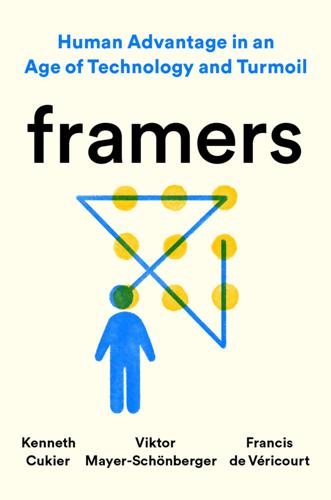
Framers: Human Advantage in an Age of Technology and Turmoil
by
Kenneth Cukier
,
Viktor Mayer-Schönberger
and
Francis de Véricourt
Published 10 May 2021
The car braked hard and decelerated quickly—but not before it slammed into the boundary and was poised to go off the road. In the end, it came to a rest . . . on a thin, purple line of pixels on the screen. The minor accident was a digital simulation. It happened only in the computer servers of Waymo, Google’s self-driving-car company. The simulation is designed to overcome a serious shortcoming of all autonomous vehicles: a lack of data on rare events because they are, well, rare. For well over a decade, the industry has been collecting real-world road data to train the AI models that power the self-driving systems. Fleets of cars with sophisticated sensors and video cameras have cruised the streets collecting zillions of data points every second.
…
Then there is the approach of many high-performance athletes and executives who practice “visualizations”: developing a realistic mental image of a situation (whether a ski jump or a board meeting) and simulating within that world the diverse actions and responses that might work, much like Carcraft does for autonomous vehicles. Imagining alternative realities makes causal frames actionable. But it requires more than imagination. The trick, as toddlers quickly learn, is not to conceive of just any alternative reality but to construct one carefully that can help us achieve our goal. Counterfactuals are functional; their effectiveness depends on how well they are shaped given the goals we have and the context in which we intend to use them.
…
Data on the amount of simulation driving: “The Virtual World Helps Waymo Learn Advanced Real-World Driving Skills,” Let’s Talk Self-Driving, accessed November 2, 2020, https://letstalkselfdriving.com/safety/simulation.html. On self-driving technology: Bansal, Krizhevsky, and Ogale, “ChauffeurNet.” Waymo’s performance relative to rivals’: California Department of Motor Vehicles, “2020 Disengagement Reports,” https://www.dmv.ca.gov/portal/vehicle-industry-services/autonomous-vehicles/disengagement-reports. On counterfactuals and AI: In the AI community, there has been an increase in interest in counterfactual logic to improve explainability of AI systems; see, e.g., Sandra Wachter et al., “Counterfactual Explanations Without Opening the Black Box: Automated Decisions and the GDPR,” Harvard Journal of Law & Technology 31, no. 2 (2018), https://jolt.law.harvard.edu/assets/articlePDFs/v31/Counterfactual-Explanations-without-Opening-the-Black-Box-Sandra-Wachter-et-al.pdf. 5. constraints On the Entebbe raid: Interview with Noam Tamir by Kenneth Cukier in March 2020.

Makers at Work: Folks Reinventing the World One Object or Idea at a Time
by
Steven Osborn
Published 17 Sep 2013
It was a fun, crazy time with a bunch of different folks who were very good at soldering come show off their skills. We had a good time doing that. Coming up in June [2013], we have our autonomous vehicle competition, which is our version of the DARPA Grand Challenge, but on the student level, where it’s much, much cheaper. You can build an autonomous vehicle for two or three hundred bucks, and then come compete against other little autonomous vehicles. This is our fifth year of having that competition. Every year, the autonomous planes show up, and the quadcopters show up, and some really exciting wheeled vehicles show up.
…
I look forward to the new product videos every Friday. 1 A sport in which competitors race boats propelled by oars. 2 OSHW – Open Source Hardware 3 http://people.freebsd.org/∼phk 4 http://creativecommons.org 5 A gerber is a common file format for describing layers of a PCB (printed circuit board). 6 http://dorkbot.org 7 AVC – Autonomous Vehicle Competition, avc.sparkfun.com 8 www.etsy.com 9 http://dangerousprototypes.com/ 10 A machine that picks up small components and places them on printed circuit boards. 11 www.100kGarages.com 12 www.botanicalls.com CHAPTER 4 Laen Founder OSH Park In order to help out his friends and fellow geeks, James “Laen” Neal organized and collected orders for printed circuit boards (PCBs) for them.

Homo Deus: A Brief History of Tomorrow
by
Yuval Noah Harari
Published 1 Mar 2015
As the brain tries to create a model of its own decisions, it gets trapped in an infinite digression, and abracadabra! Out of this loop, consciousness pops out. Fifty years ago this might have sounded plausible, but not in 2016. Several corporations, such as Google and Tesla, are engineering autonomous cars that already cruise our roads. The algorithms controlling the autonomous car make millions of calculations each second concerning other cars, pedestrians, traffic lights and potholes. The autonomous car successfully stops at red lights, bypasses obstacles and keeps a safe distance from other vehicles – without feeling any fear. The car also needs to take itself into account and to communicate its plans and desires to the surrounding vehicles, because if it decides to swerve to the right, doing so will impact on their behaviour.
…
We can create a smart car-pool system, run by computer algorithms. The computer would know that I need to leave home at 8:04, and would route the nearest autonomous car to pick me up at that precise moment. After dropping me off at campus, it would be available for other uses instead of waiting in the car park. At 18:11 sharp, as I leave the university gate, another communal car would stop right in front of me, and take me home. In such a way, 50 million communal autonomous cars may replace 1 billion private cars, and we would also need far fewer roads, bridges, tunnels and parking spaces. Provided, of course, I renounce my privacy and allow the algorithms to always know where I am and where I want to go.
…
The car also needs to take itself into account and to communicate its plans and desires to the surrounding vehicles, because if it decides to swerve to the right, doing so will impact on their behaviour. The car does all that without any problem – but without any consciousness either. The autonomous car isn’t special. Many other computer programs make allowances for their own actions, yet none of them has developed consciousness, and none feels or desires anything.6 If we cannot explain the mind, and if we don’t know what function it fulfils, why not just discard it? The history of science is replete with abandoned concepts and theories. For instance, early modern scientists who tried to account for the movement of light postulated the existence of a substance called ether, which supposedly fills the entire universe.

AIQ: How People and Machines Are Smarter Together
by
Nick Polson
and
James Scott
Published 14 May 2018
But that will be their choice and their problem, because no option on the table today even remotely foreordains such a possibility. Now, and for the foreseeable future, “smart” machines are smart only in their specific domains: • Alexa can read you a recipe for spaghetti Bolognese, but she can’t chop the onions, and she certainly can’t turn on you with a kitchen knife. • An autonomous car can drive you to the soccer field, but it can’t even referee the match, much less decide on its own to tie you to the goalposts and kick the ball at your sensitive bits. Moreover, consider the opportunity cost of worrying that we’ll soon be conquered by self-aware robots. To focus on this possibility now is analogous to the de Havilland Aircraft Company, having flown the first commercial jetliner in 1952, worrying about the implications of warp-speed travel to distant galaxies.
…
Isn’t it astonishing that we’re talking about mobs of kangaroos as one of the big technological problems here—as opposed to, say, getting out of the driveway, or not crashing into your neighbors’ living room? Ask yourself a simple question. If you had to put a loved one in a taxi, would you rather have them driven by a randomly sampled 16-year-old with a driver’s license, or by one of Waymo’s cars? (Waymo is the autonomous-car company spun out of Google.) If you have to think about this question, we encourage you to consider a few facts.1 56% of American teenagers talk on the phone while driving. In 2015, 2,715 American teenagers died, and 221,313 went to the emergency room, because of car-crash injuries. Half of all crashes involving teenage drivers are single-vehicle crashes.
…
.* The current revolution in autonomous robots has become possible only because all the research put into SLAM systems has finally paid off. Robots have gone from dodging chairs to dodging other drivers; from five hours traversing a room to five gigabytes of sensor data per second; from an autonomous mouse that can navigate a 25-square grid to an autonomous car that can navigate millions of miles of public road. SLAM is one of AI’s most smashing success stories. So in this chapter, we’d like to address two SLAM-related questions—one obvious, and one a bit more unexpected. 1. How does a robot car know where it is? 2. How can you become a smarter person by thinking a bit more like a robot car?

Industrial Internet
by
Jon Bruner
Published 27 Mar 2013
The 150-foot-long blades on a wind turbine, for instance, chop at the air as they move through it, sending turbulence to the next row of turbines and reducing efficiency. By analyzing performance metrics from existing wind installations, planners can recommend new layouts that take into account common wind patterns and minimize interference. Automotive Google captured the public imagination when, in 2010, it announced that its autonomous cars had already driven 140,000 miles of winding California roads without incident. The idea of a car that drives itself was finally realized in a practical way by software that has strong links to the physical world around it: inbound, through computer vision software that takes in images and rangefinder data and builds an accurate model of the environment around the car; and outbound, through a full linkage to the car’s controls.
…
The idea of a car that drives itself was finally realized in a practical way by software that has strong links to the physical world around it: inbound, through computer vision software that takes in images and rangefinder data and builds an accurate model of the environment around the car; and outbound, through a full linkage to the car’s controls. The entire system is encompassed in a machine-learning algorithm that observes the results of its actions to become a better driver, and that draws software updates and useful data from the Internet. The autonomous car is a full expression of the industrial internet: software connects a machine to a network, links its components together, ingests context, and uses learned intelligence to control a complicated machine in real-time. Google hasn’t announced any plans to make its cars available to the public, but elements of the industrial internet are widely visible in new cars today.
…
Cheap, easy-to-program microcontrollers; powerful open-source software; and the support of hardware collectives and innovation labs[41] make it possible for enthusiasts and minimally-funded entrepreneurs to create sophisticated projects of the sort that would have been available only to well-funded electrical engineers just a few years ago — anything from autonomous cars to small-scale industrial robots. In the same way that expertise in software isn’t necessary to create a successful Web app, expertise barriers will fall in software-machine interfaces, opening innovation to a big, broad, smart community. Neil Gershenfeld, director of the Center for Bits and Atoms at MIT, compares the development of the amateur hardware movement to the development of the computer from mainframe to minicomputer to hobbyist computer and then to the ubiquitous personal computer.

The People vs Tech: How the Internet Is Killing Democracy (And How We Save It)
by
Jamie Bartlett
Published 4 Apr 2018
This felt appropriate; some engineers worry about the risk of ‘vigilance decrement’, as humans lose practice and become less able to deal with emergencies. My tedium in turn gave way to the dawning realisation that what I’d thought was sci-fi was in fact fast becoming sci-fact.* In 2004, respected AI-researchers from the Massachusetts Institute of Technology (MIT) concluded that autonomous vehicles were a pipedream, driving being a skill that required too much human intuition and motor skills.1 But we should never underestimate the speed at which digital technology can advance. Millions of dollars of investment are now pouring in from Uber, Google, Tesla, Mercedes, Volvo, Starsky and others.
…
Research from Georg Graetz and Guy Michaels has found that, while manufacturing employment has fallen in most developed countries between 1996 and 2012, it has fallen less sharply where investment in robotics has been greatest. 4 ‘Automation and anxiety’, The Economist, 25 June 2016. 5 According to Martin Ford, futurist and author of the award winning book Rise of the Robots it won’t happen immediately but within a decade or so. 6 Stick Shift: Autonomous Vehicles, Driving Jobs, and the Future of Work, March 2017, Centre for Global Policy Solutions. 7 Mark Fahey, ‘Driverless cars will kill the most jobs in select US states’, www.cnbc.com, 2 September 2016. 8 ‘Real wages have been falling for longest period for at least 50 years, ONS says’, Guardian, 31 January 2014.

Future Crimes: Everything Is Connected, Everyone Is Vulnerable and What We Can Do About It
by
Marc Goodman
Published 24 Feb 2015
A fully automated, well-functioning autonomous vehicle network could avoid thousands of needless deaths and save billions in associated economic costs. As the price of these technologies plunges, you can expect UPS drivers and taxis to be replaced by autonomous and cheaper non-union alternatives. But modern cars, whether driven by people, artificial intelligence, big data, or sensor networks, are still just computers on wheels, powered by insecure data systems, communicating via entirely hackable transmission protocols. As such, things might not turn out quite as rosy as proponents of autonomous vehicles suggest. When the majority of vehicles join the IoT, it won’t be long before some rogue attacker seizes control of a car and turns it into a multi-ton weapon of metal, glass, and explosive fuel.
…
In the same way both Crime, Inc. and crazed exes are targeting computers and mobile phones, it’s only logical that they will go after cars in the future too, bringing scenes like those in Stephen King’s 1983 horror thriller about a possessed car named Christine many steps closer to reality. Law enforcement officials clearly see the threat, and in July 2014 the FBI warned in an internal report that driverless cars could be used as “lethal weapons, with terrorists potentially packing explosives into a self-driving car aimed at a specific destination.” Autonomous vehicles could also potentially be turned off en masse, bringing traffic to a complete standstill in a city or country. To be certain, some of these vehicular attacks require a high degree of computer savvy to pull off, but as we have seen with other exploits, soon there will be point-and-click crimeware options for car hacking as well.
…
A 2013 study by Oxford University on the future of work conducted a detailed analysis of over seven hundred occupations and concluded that 47 percent of U.S. employees are at high risk of losing their jobs to robotic automation as soon as 2023. Those working in the transportation field (taxi drivers, bus drivers, long-haul truck drivers, FedEx drivers, pizza delivery drivers) face particular risk, with up to a 90 percent certainty that their jobs will be replaced by autonomous vehicles. But it’s not just low-level positions that are at risk. News outlets such as the Associated Press and the Los Angeles Times are using bots and algorithms to automatically write thousands of articles on topics as diverse as homicides, earthquakes, and the latest business earnings. Biopsies can be “analyzed more efficiently by image-processing software than lab techs,” and QuickBooks can handle the majority of tasks performed by an accountant.
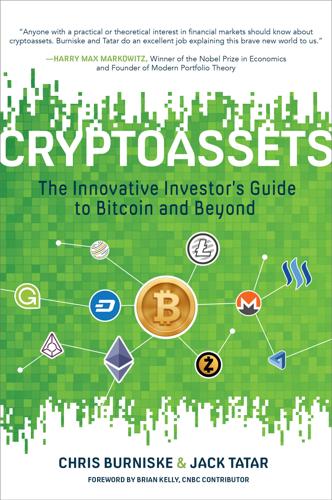
Cryptoassets: The Innovative Investor's Guide to Bitcoin and Beyond: The Innovative Investor's Guide to Bitcoin and Beyond
by
Chris Burniske
and
Jack Tatar
Published 19 Oct 2017
Holders of The DAO would be able to vote on what projects they wanted to support, and if developers raised enough funding from The DAO holders, they would receive the funds necessary to build their projects. Over time, investors in these projects would be rewarded through dividends or appreciation of the service provided. The vision of a decentralized autonomous organization like The DAO is somewhat like autonomous vehicles—whereas humans used to have to drive cars, the cars increasingly can drive themselves. Similarly, whereas humans used to be needed for all aspects of business processes, often in manual paper pushing, approval, orchestration, and so on, a decentralized autonomous organization can codify much of those processes so that the company better drives itself.
…
Both combine bitcoin exposure with a portfolio of growth stocks, and have been some of the highest performing ETFs in the market. Using Grayscale’s BIT, ARK Invest became the first public fund manager to invest in bitcoin in September of 2015, and as of this writing still has the only ETFs on the market with bitcoin exposure. Given ARK’s focus on fast-moving technologies like machine learning, autonomous vehicles, and genomics, investing in bitcoin was a natural fit for the firm. THE ETN OPTION Outside of the United States, more options for capital market-based bitcoin products exist, such as two exchange traded notes (ETN) offered by XBT Provider on Nasdaq Nordic in Stockholm, Sweden. Nasdaq Nordic is a regulated exchange system that is a subsidiary of the well-known Nasdaq in the United States.
…
In the twenty-first century, the innovation lab concept has been embraced most famously by Google, which encourages creativity and innovation beyond an employee’s current position. The company has created the Google Garage26 as a (somewhat) formal structure in which employees can pursue innovations with others in the company. This has resulted in projects, such as its autonomous vehicles effort, that Google has grown organically in the hopes of providing additional future revenue. A key feature that needs to be reinforced from Christensen’s quote is the need to “set up an autonomous organization.” Just setting up an innovation lab within a company is not a guarantee of success.

The Deep Learning Revolution (The MIT Press)
by
Terrence J. Sejnowski
Published 27 Sep 2018
And they encountered further difficulties in collecting and entering the patients’ symptoms and medical histories into the system’s computer, a process that could take a half hour or longer per patient, more time than a busy physician could afford. Not surprisingly, MYCIN was never used clinically. Although many expert systems were written for other applications such as toxic spill management, mission planning for autonomous vehicles, and speech recognition, few are in use today. Researchers tried many different approaches in the early decades of AI, but their approaches were more clever than they were practical. Not only did they underestimate the complexity of real-world problems, but the solutions they proposed scaled badly.
…
Skinner” in the New York Review of Books, an essay that steered a generation of cognitive scientists away from learning. 1982—Claude Shannon publishes the seminal book A Mathematical Theory of Communication, which laid the foundation for modern digital communication. 1989—Carver Mead publishes Analog VLSI and Neural Systems, founding the field of neuromorphic engineering, which builds computer chips inspired by biology. 2002—Stephen Wolfram publishes A New Kind of Science, which explored the computational capabilities of cellular automata, algorithms that are even simpler than neural networks but still capable of powerful computing. 2005—Sebastian Thrun’s team wins the DARPA Grand Challenge for an autonomous vehicle. 2008—Tobias Delbrück develops a highly successful spiking retina chip called the “Dynamic Vision Sensor” (DVS) that uses asynchronous spikes rather than synchronous frames used in current digital cameras. 2013—U.S. BRAIN Initiative, to develop innovative neurotechnologies that accelerate our understanding of brain function, is announced in the White House. 12 The Future of Machine Learning Chapter The Future of Machine 12 Learning © Massachusetts Institute of TechnologyAll Rights Reserved The age of cognitive computing is dawning.
…
See also MIT Artificial Intelligence Laboratory and the AI business, 191–194 as an existential threat, 23–25 Dartmouth Artificial Intelligence Conference of 2006 (AI@50), 256–258 Dartmouth Artificial Intelligence Summer Research Project, 1, 258 dynamic external memory and, 259 early clues for how computers might achieve intelligent behavior, 37–39 Frank Rosenblatt and, 39, 47 historical perspective on, 193–194 human intelligence and, 25 learning how to be more intelligent, 20–21 Marvin Minsky and, 27, 47, 255f, 256–259 neural networks and, 259 322 Artificial intelligence (AI) (cont.) recent progress in, ix, 174 regulation and bans of, 125 terminology, 32 “Artificial life,” 196 Artificial neural networks (ANNies), 57f, 159, 285n1. See also Neural networks Associative learning, 247 ATMs (automated teller machines), 22 Attractor states, 93, 94, 94f, 95b Auditory perception and language acquisition, 184 Automated teller machines (ATMs), 22 Autonomous vehicles. See Self-driving cars Avoid being hit, 148 Backgammon, 34, 144f, 148. See also TD-Gammon backgammon board, 144f learning how to play, 143–146, 148–149 Backpropagation (backprop) learning algorithm, 114f, 217, 299n2 Backpropagation of errors (backprop), 111b, 112, 118, 148 Bag-of-words model, 251 Ballard, Dana H., 96, 297nn11–12, 314n8 Baltimore, David A., 307n5 Bar-Joseph, Ziv, 319n13 Barlow, Horace, 84, 296n8 Barry, Susan R., 294n5 Bartlett, Marian “Marni” Stewart, 181–182, 181f, 184, 308nn19–20 Barto, Andrew, 144, 146f Bartol, Thomas M., Jr., 296n14, 300n18 Basal ganglia, motivation and, 151, 153–154 Bates, Elizabeth A., 107, 298n24 Bats, 263–264 Index Bavelier, Daphne, 189–190, 309n33 Baxter (robot), 177f, 178 Bayes, Thomas, 128 Bayes networks, 128 Bear off pieces, 148 Beck, Andrew H., 287n17 Beer Bottle Pass, 4, 5f Bees, learning in, 151 Behaviorism and behaviorists, 149, 247–248 cognitive science and, 248, 249f, 250, 253 Behrens, M.

Into the Raging Sea
by
Rachel Slade
Published 4 Apr 2018
The automated underwater vehicle (AUV) was a tethered machine with broadband sonar that ran along a preprogrammed path, identifying anything that approximately fit the size and shape of the ship’s mast. Its twenty thousand feet of fiber-optic cable alone probably cost $1 million. The SENTRY, another autonomous vehicle, was equipped with searchlights and high-resolution cameras. It followed behind the AUV and was programmed to investigate each target the AUV identified. Unfortunately, the AUV’s margin of error was thirty meters, so often it took a while, sometimes as much as forty-five minutes, for the SENTRY to find one target.
…
Every photograph, every dive, every view could be your last, so treat it as such. During the first couple of days, Stolzenberg got a good taste of what they were talking about. Fittings on the vehicles’ casings leaked, small things went wrong, and Stolzenberg quickly learned that, Yeah, this could be the last time we see things. The autonomous vehicle took two hours to sink down fifteen thousand feet, and two hours to surface, which meant four hours of waiting each time they brought it up to upload and process its data. Time gnawed away at everyone’s patience. They only had six days over the wreck to find the VDR, and everything was an exercise in frustration.
…
You almost have to be on top of the stuff.” The tech team didn’t want to get the SENTRY’s tether tangled up in the mast, so they approached with caution and documented the scene. At 2:00 a.m., when they were certain that they’d found the VDR, they sent an email back to the NTSB. The next day, they deployed the autonomous vehicle with its high-resolution lens to document the entire site. During that mission, the SENTRY took more than forty thousand photos, which the NTSB later patched together to create a map of the scene. Meanwhile, they had to figure out how to extricate the VDR from the mast’s clutches. The steel canister was held to the mast with two quick-release bands.

Survival of the Richest: Escape Fantasies of the Tech Billionaires
by
Douglas Rushkoff
Published 7 Sep 2022
Market sensibilities overpowered much of the media and intellectual space that would have normally been filled by a consideration of the practical ethics of impoverishing the many in the name of the few. Too much mainstream debate centered instead on abstract hypotheticals about our predestined high-tech future: Is it fair for a stock trader to use smart drugs? Should children get implants for foreign languages? Do we want autonomous vehicles to prioritize the lives of pedestrians over those of its passengers? Should the first Mars colonies be run as democracies? Does changing my DNA undermine my identity? Should robots have rights? Asking these sorts of questions, which we still do today, may be philosophically entertaining. But it is a poor substitute for wrestling with the real moral quandaries associated with unbridled technological development in the name of corporate capitalism.
…
Whether AI will develop human and superhuman abilities in the next decade, century, millennium, if ever, may matter less right now than AI’s grip over the tech elite, and what this obsession tells us about The Mindset. Holders of The Mindset appear less immediately afraid of AI technology itself than the people this technology is bound to replace. They know that Uber’s autonomous vehicles, Amazon’s robot T-shirt tailors, and future generations of AI lawyers, mortgage actuaries, and TV writers will put a whole lot of people out of work. Billionaire tech entrepreneur Mark Cuban says AI “scares the shit out of me”—but only because of how many workers will be displaced. “Things are getting faster, processing is getting faster, machines are starting to think,” he explained on CNBC, adding ambiguously, “and either you make them think for you or they will take your place and do the thinking for you.”
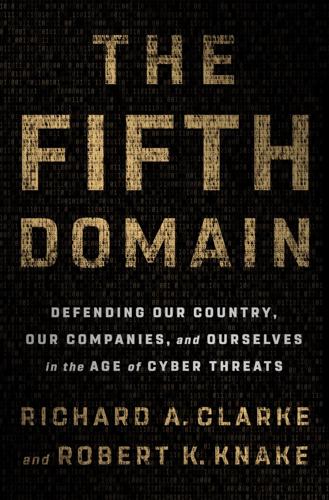
The Fifth Domain: Defending Our Country, Our Companies, and Ourselves in the Age of Cyber Threats
by
Richard A. Clarke
and
Robert K. Knake
Published 15 Jul 2019
One thing telecommunications experts agree on is that 5G will make it possible to connect many more devices, either directly or indirectly, to the internet and give all of those devices the ability to work much more rapidly. There will be no more latency, no more buffering, which will make possible more types of devices, including those that require reliable and instantaneous connectivity to the Internet of Things, such as autonomous vehicles. For autonomous vehicles, otherwise known as driverless cars, to achieve their full potential, multiple sensors and devices on each vehicle will have to communicate instantly with nearby vehicles, sensors in the road, street signs, and traffic lights. To do all of that, the vehicles will need 5G communications, fast, unbuffered, and able to handle many devices in a small space.
…
Indeed, they have argued that it would stifle innovation and do any number of horrific things if anyone ever regulated anything related to the internet. So, here come 5G and the Internet of Things without any security regulations. Get ready. Strap in. IoT: Down on the Farm Even before autonomous vehicles begin running around on your street, they are driving about on some farms. Our favorite story about the IoT, one that demonstrates how it is creeping into every walk of life and simultaneously opening up vulnerabilities to global hackers, comes from down on the farm. If you have opened up your internal combustion engine car’s hood lately to attempt do-it-yourself maintenance on the engine, you have been met with a sealed box that is relatively impervious to any owner’s attempts to manipulate it.
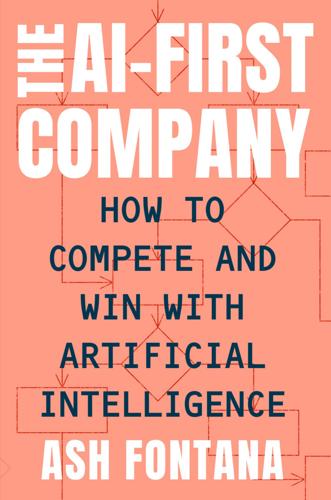
The AI-First Company
by
Ash Fontana
Published 4 May 2021
This is different from a standard software product where the value proposition is based on a set of features that are easy to demonstrate and doesn’t differ much between vendors. Running a successful POC requires setting clear expectations around accuracy, timeline, and cost. Briefly, here are the elements of a good POC. Accuracy: Set a benchmark for predictions based on honest assessments of what’s feasible technically. For example, fully autonomous vehicles are not feasible at the time of this writing, but sensors that detect potholes and alert maintenance crews work quite well. The extrinsic way to set a benchmark is based on what accuracy a customer already achieved through their own efforts. Business goal: This is the metric that gets closest to what customers need to hit to make money.
…
First movers build technological leadership over competitors by getting a head start on technology research and development; AI-First companies build intelligent systems that are better than competitors’ systems both by collecting data and by developing ways to design intelligent systems that yield accurate predictions. Importantly, the research that precedes novel AI development requires data to run experiments. Google started driving cars to collect data and investing in research on autonomous driving before its competitors, and arguably has the most promising autonomous vehicles today. First movers create switching costs by integrating with incumbent systems and benefiting from the uncertainty that surrounds new entrants; AI-First companies create switching costs by centralizing customers’ data into their own databases and proving superior model accuracy. Google centralizes and secures data across consumers’ email, location, and documents to generate the best recommendations for things to buy, places to go, and even phrases to write.

The Industries of the Future
by
Alec Ross
Published 2 Feb 2016
The feasibility of the Google car depends on a range of technological, legal, safety, and commercial considerations. Will the technology work? Will it actually make the roads safer? Will people trust and purchase it? Will it even be legal? These are not academic questions. While only California, Florida, and Nevada have passed laws as of 2013 permitting autonomous cars on the roads, these already represent huge driving cultures and markets. The driverless car has the potential to fundamentally disrupt the modern automotive industry and all of its various branches. As with every other development in robotics, many people will gain—some, like Google’s executives and shareholders, may gain immensely—but it’s inevitable that others will be displaced.
…
See also mental illnesses Apple, 36, 79, 87 application programming interfaces (APIs), 168 Apps4Africa, 236 Aramco, 122–23, 138, 224 Argentina, 104, 223 ASIMO (Advanced Step in Innovative Mobility robot), 16–17. See also robotics Ask Jeeves, 119 Atari, 25 Atlantis (Internet), 110. See also cryptocurrency ATMs, 40, 77, 87 autism, 35, 67 Autism Speaks, 67 autonomous cars, 28–31 Avis, 93 Bank of America, 167 Barclays, 167 BaseHealth, 60–61 bearer instrument, 100 Belarus, 205, 208, 212, 214, 222 belief space, 23 Berman, Dror, 191–92 Berners-Lee, Tim, 115 Bezos, Jeff, 93. See also Amazon BGI, 67 Bitcoin: Andreessen on, 103–4, 116–17 benefits of, 102–5, 116–17 blockchain and, 101–6 CoinDesk, 167 criticism of, 111–12 establishment and, 111–15 explained, 98–100 financial system and, 99 future of, 115–17 governments and, 111–15 hacking and, 106–11 micropayments and, 105–6 mining and, 102–3 competitors and, 117–19 Songhurst on, 104 widespread use of, 98 see also blockchain blockchain: Bitcoin and, 101–6 efficiency and, 104 establishment and, 111–15 explained, 101 future of, 120 hacking and, 106, 108–9 law enforcement and, 111 as next protocol, 115–17 regulation of, 103 transaction history and, 114 see also Bitcoin Bloomberg, Michael, 167–68 Booker, Cory, 167–68 Booker T.
…
See also antidepressants Putin, Vladimir, 139, 202–4, 213 Qatari Petroleum, 122 RasGas, 122 RBS, 170 Reilly, David, 167 remittance systems, 87–88, 119–20 Revive & Restore project, 64. See also extinct animals RIKEN, 17 Ripple Labs, 118–19 Robot for Interactive Body Assistance (RIBA), 17 Robotdalen award, 25 robotics: agriculture and, 192 autonomous cars, 29–32 Belarus and, 208 car industry and, 16–18, 28–32 caregiving and, 18–19 China and, 218 data and, 73 economy and, 12–13 Estonia and, 211 fear of, 21–22, 180 future of, 6, 42–43, 189, 240, 244, 247–48 growth of industry, 19–21, 187 hacking and, 134 humanizing, 22–28 innovation in, 6, 12 Japan and, 15–18 jobs and, 35–42, 208 medicine and, 32–35 South Korea and, 3 Romney, Mitt, 155 Roubini, Nuriel, 111–12, 220 Rwanda, 83, 237–38, 243 Safaricom, 87 Saidenberg, Douglas, 106–7 schizophrenia, 55, 113, 203, 223.
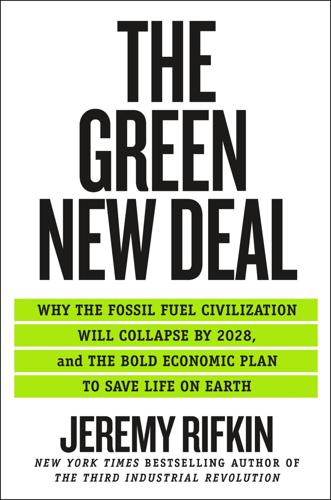
The Green New Deal: Why the Fossil Fuel Civilization Will Collapse by 2028, and the Bold Economic Plan to Save Life on Earth
by
Jeremy Rifkin
Published 9 Sep 2019
It should be noted that 96 million barrels of oil are consumed around the world each day, and transport accounts for approximately 62.5 percent of all the oil used.19 The numbers speak for themselves. While the shift to green-powered electric vehicles is a transformational event that, by itself, will rock the global economy in the biggest disruption since the advent of the gasoline-powered automobile, the accompanying shift to driverless autonomous vehicles in car-sharing services will have a comparable impact on changing the way we organize mobility and logistics in society. The speed of the transformation has caught the industry and society off guard. A 2017 study by RethinkX, a leading transportation research forecaster, reports that today’s car-sharing services will quickly transition into shared passenger services and electric vehicle fleets in the 2020s.20 The increased efficiencies in vehicle utilization will be considerable.
…
The bottom line, according to the findings of the study, is that mobility as a service will make available a much lower cost of transportation than existing alternatives and be “four to ten times cheaper per mile than buying a new car and two to four times cheaper than operating an existing vehicle by 2021.”21 A more surprising finding is that provider/user transportation in autonomous vehicles, operating with near-zero marginal cost human labor and powered by near-zero marginal cost solar and wind electricity, plunges the cost of providing mobility while simultaneously allowing the provider to commodify the time passengers spend in the vehicle by offering various types of entertainment and commercial purchases via the internet, similar to the offerings from airlines in long-distance air travel.

No Ordinary Disruption: The Four Global Forces Breaking All the Trends
by
Richard Dobbs
and
James Manyika
Published 12 May 2015
Baxter even has a “head,” which it nods to indicate that it has understood instructions, and a “face” with a pair of eyes, which take on different expressions. As their capabilities grow, robots are performing tasks once considered too expensive or delicate to automate. Their application extends beyond industry to services, robotic surgery, and even human augmentation. Autonomous vehicles are another disruptive technology that has made dramatic advances in a single decade. In 2004, DARPA (Defense Advanced Research Projects Agency) funded the Grand Challenge, a competition that offered $1 million to the first driverless car that could drive 150 miles across the Mojave Desert.
…
More than 90 percent of eBay commercial sellers export to other countries, compared with an average of less than 25 percent of traditional small businesses.28 12 The Disruptive Dozen Twelve technologies have massive potential for disruption in the coming decade CHANGING THE BUILDING BLOCKS OF EVERYTHING 1.Next-generation genomics Fast, low-cost gene sequencing, advanced big data analytics, and synthetic biology (“writing” DNA) 2.Advanced materials Materials designed to have superior characteristics (e.g., strength, weight, conductivity) or functionality RETHINKING ENERGY COMES OF AGE 3.Energy storage Devices or systems that store energy for later use, including batteries 4.Advanced oil and gas exploration and recovery Exploration and recovery techniques that make extraction of unconventional oil and gas economical 5.Renewable energy Generation of electricity from renewable sources with reduced harmful climate impact MACHINES WORKING FOR US 6.Advanced robotics Increasingly capable robots with enhanced senses, dexterity, and intelligence used to automate tasks or augment humans 7.Autonomous and near-autonomous vehicles Vehicles that can navigate and operate with reduced or no human intervention 8.3-D printing Additive manufacturing techniques to create objects by printing layers of material based on digital models IT AND HOW WE USE IT 9.Mobile Internet Increasingly inexpensive and capable mobile computing devices and Internet connectivity 10.Internet of things Networks of low-cost sensors and actuators for data collection, monitoring, decision making, and process optimization 11.Cloud technology Use of computer hardware and software resources delivered over a network or the Internet, often as a service 12.Automation of knowledge work Intelligent software systems that can perform knowledge work tasks involving unstructured commands and subtle judgments The data avalanche is set to become more powerful only because of a movement toward “open data,” in which data are freely shared beyond their originating organizations—including governments and businesses—in a machine-readable format at low cost.
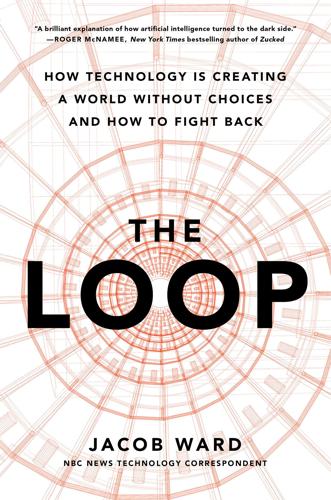
The Loop: How Technology Is Creating a World Without Choices and How to Fight Back
by
Jacob Ward
Published 25 Jan 2022
And at the end of it all, the wheels of justice—the police, the courts, the juries—arrive at some sort of conclusion that determines fault and restitution and the policies that might prevent this sort of tragedy from taking place again. With autonomous systems, that kind of evaluation has to take place ahead of time. An autonomous vehicle will only do what its rules tell it to do. It must be trained in advance to properly evaluate whether to go ahead and plow through a chicken in the road, but veer away from a child. We must teach it to choose the cliff or oncoming traffic. Can enough stories teach a robotic system to make a perfect decision every time?
…
He said he thought car makers would be happy to take legal liability because the pool of liability would still be smaller than it is today. “If you reduce accidents by 50 percent, who cares if you hold the bag on the remaining lawsuits? You’ve still saved yourself a lot of money.” If we get the technology right, and the number of accidents would be so much fewer, perhaps it’s worth thinking of autonomous vehicles as an inoculation against human error, a literal vaccine against bad driving. We have a vaccine court for flu shots. Perhaps we’ll have to build a vaccine court for robot cars and other forms of AI-based technology. There are instances, however, when human beings have decided that in spite of the math, we have to build new systems for society simply because living without them is just too horrible, too emotionally unacceptable, to consider.

How to Spend a Trillion Dollars
by
Rowan Hooper
Published 15 Jan 2020
Reading this now, it could almost be a description of the Waymo self-driving cars trundling around Silicon Valley. He basically pre-empts Google and Apple’s autonomous vehicles by some 3,000 years. Thetis marvels that Hephaestus even has a staff of automata, ‘fashioned of gold in the image of maidens’; builds Talos, a giant bronze war-droid that guards Crete from invaders; and is commissioned to create Pandora, the beautiful android sent by Zeus to punish humans for the theft of fire. Homer and the people who dreamed up Hephaestus saw into a future we’re still only just reaching, with autonomous vehicles, and an artificial intelligence capable of passing the Turing test. You can see where I’m going with this.

Uncanny Valley: A Memoir
by
Anna Wiener
Published 14 Jan 2020
Talk turned to self-driving cars. One of the engineers mentioned a recent Take Your Child to Work Day, where the autonomous-car unit had asked visiting children to jump and dance and roll around in front of the sensors. The technology was world-class, but it still needed to train on nonadults. It was an incredibly exciting moment for transportation, he said: the hurdles they faced weren’t technical, but cultural. The biggest obstacle was public opinion. How plausible were autonomous cars, really, I asked loudly. I had finished my beer and I was bored. I wanted attention, some acknowledgment. I wanted to make sure everyone knew I wasn’t just some engineer’s girlfriend who stood around at parties waiting for him to finish geeking out—though of course that’s exactly what I was doing.
…
“It feels like we’re going to have a seat at the table for something really big.” How big? I wanted to know. There were public rumors about what the robotics suite was working on, but Ian was forbidden from speaking about their projects. He refused to confirm my guesses. Was he working on the autonomous cars? I had so many questions. Was it the search-and-rescue robots? The delivery drones? Was there a space shuttle? How soon would we see humanoids? How scared should the rest of us be? “Everyone always asks me that,” he said, frowning. “Not scared. Really.” More, I said—say more. In a city where bars and coffee shops and parties were trade-secret word clouds, this was a regionally specific litmus test.

Streetfight: Handbook for an Urban Revolution
by
Janette Sadik-Khan
Published 8 Mar 2016
Ideally, these technologies will make it possible to get around without owning a car at all. Big data, digital networks, and artificial intelligence are an increasing part of how we plan, operate, and build infrastructure. We see it in road pricing, new traffic system management technology, and new bus planning apps to optimize transit routes and buses. A future with autonomous vehicles, delivery drones, and unified payment systems is on the near-term horizon. This wave of change has landed on our streets, and these changes will advance how we get around cities and use our streets. A smartphone can eliminate the anxiety of getting around, whether you’re in Boston, Bangalore, or Buenos Aires.
…
But the road to a driver-free road network is likely to take many years, and it’s not yet clear how driverless and conventional cars will interact with one another, particularly in extreme weather or poor road conditions. The regulatory framework is not yet in place to ensure that these new services or autonomous vehicles under development don’t exacerbate or mask the very problems we’re just beginning to solve. If shared rides and driverless vehicles give suburban residents all the benefits of private vehicle ownership with fewer of the costs or disadvantages, it could encourage further sprawl. Meanwhile, within cities, shared rides run the risk of shifting millions of commuters not only from private to shared cars, but also from public transportation into the backseat of one of the growing menu of TNC options.
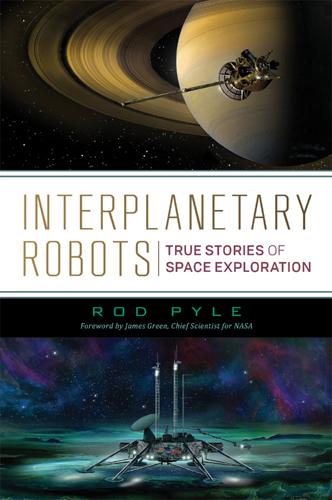
Interplanetary Robots
by
Rod Pyle
When it reached Titan, the X-37B would glide into the atmosphere, just as it does in Earth, and eject the submersible above the lake. The X-37B would then ditch and sink, leaving the submersible to continue on its mission of exploration. The X-37B is currently flying regularly, and UAVs—Underwater Autonomous Vehicles—are in use all over the planet. The key to success on Titan is to blend these technologies, develop alternate methods to deal with the exotic environment, and engineer into it a high level of autonomy. If NASA has its way, we could be exploring the seas of Titan within twenty years. In the next few years, the Mars rover Curiosity will have a twin on the planet, much as the Mars Exploration Rover Opportunity did when its sibling Spirit was still roving half a planet away.
…
See Project A119 study submarines, exploring Kraken Mare with, 299, 301–302 sulfur, 195, 255, 258 sun sensors, 74, 186 SuperCam, 304 superconducting magnets, 235 supernova, 211 Surveyor program, 83, 84–88 mockup, 85 news media and, 86 Surveyor 1, 85, 86 Surveyor 2, 86 Surveyor 3, 86–87 Surveyor 4, 87 Surveyor 5, 87 Surveyor 6, 87 Surveyor 7, 87–88 Synergy Moon, 94 taikonauts, 323 TDRSS (Tracking and Data Relay Satellite System), 244 Team Hakuto (Japan), 94, 95 TeamIndus (India), 94 telescopes Galileo observing Saturn's rings through, 284 Hubble Space Telescope, 206–207, 255, 263, 320 James Webb Space Telescope (JWST), 220, 318, 319–20 Lunokhods, 91 Mount Palomar, of Mars, 66, 66, 126 observations of Mars, 70 for Venus/Mars flyby, 160–61 Teller, Edward, 36 temperature(s) AREE (Venus rover) and extreme, 165–67 on Jupiter, 196 of Kraken Mare, 299 on Mars, 137 on the moon, 86 on Saturn, 199–200 on Titan, 203, 301–302 on Triton, 208 on Uranus, 206 on Venus, 137, 151, 153, 154 “Ten” (Io), 194 Terrain Relative Navigation (TRN), 311 TESS (Transiting Exoplanet Survey Satellite), 220 thermal mapping, 62 thermocouples, 16, 255 thermonuclear hydrogen bomb, 35 Titan (moon of Saturn), 111, 180, 278, 294 atmosphere of, 202–203, 292, 302 Cassini mission, 279, 280, 282, 290, 294 exploring seas of, 299–302 Huygens probe on, 9, 279, 292 imaged by Pioneer 11, 180 Kraken Mare, 299, 300 lakes, exploring, 299–302 life on, 293 size of, 202, 291 smog on, 291 Voyager 1 passing, 202, 204 water/liquids on, 291, 293 Titan ICBM, 277 Titan IV rocket, 277 Titan rocket, 111, 117, 240, 281 Triton (moon of Neptune), 204, 206, 208 TRN (Terrain Relative Navigation), 311 Trump administration, 61, 93, 276 TRW (contractor), 178 TV cameras in the early 1970s, 177 Lunokhods, 90 Mariners, 71–72, 73, 74, 148, 152 Mars 3, 227 Near Surface Floater (NSF), 162 Ranger program, 52, 54 Surveyor 3, 87 Tycho (crater), 87 UAVs (Underwater Autonomous Vehicles), 302 UFA-Palast am Zoo cinema, Berlin, Germany, 39 Ultima (video game), 92 Ulysses (robotic solar probe), 241 United States first space station (1973), 159 intelligence gathering on Soviet Luna probes, 48–49 Project A119 study, 34–35 space race and, 31–34 Wernher von Braun / V-2 missile and, 41–42 See also Jet Propulsion Laboratory (JPL); NASA University of California at Los Angeles (UCLA), 62 Uranus 90-degree tilt of, 206 Grand Tour of outer planets, 171, 172, 173, 174, 176 moons of, 204–205, 205 rings of, 206 temperatures of, 206 Voyager 2 to, 202, 204–206 Voyager Uranus-Interstellar Mission, 202 Uruk Sulcus (Ganymede), 259 US Air Force, 31, 35, 36, 240, 242, 302 US Army, 31, 106 US Army Redstone, 41 US Naval Academy, 221 US Navy, 39 USRA (Universities Space Research Association; nonprofit), 221 US Ranger program.

The Big Nine: How the Tech Titans and Their Thinking Machines Could Warp Humanity
by
Amy Webb
Published 5 Mar 2019
Our Personal Values Drive Decisions In the absence of codified humanistic values within the Big Nine, personal experiences and ideals are driving decision-making. This is particularly dangerous when it comes to AI, because students, professors, researchers, employees, and managers are making millions of decisions every day, from seemingly insignificant (what database to use) to profound (who gets killed if an autonomous vehicle needs to crash). Artificial intelligence might be inspired by our human brains, but humans and AI make decisions and choices differently. Princeton professor Daniel Kahneman and Hebrew University of Jerusalem professor Amos Tversky spent years studying the human mind and how we make decisions, ultimately discovering that we have two systems of thinking: one that uses logic to analyze problems, and one that is automatic, fast, and nearly imperceptible to us.
…
We’ve been willing—if unwitting—participants in a future that’s being created hastily and without first answering all those questions. As AI systems advance and more of everyday life gets automated, the less control we actually have over the decisions being made about and for us. This, in turn, has a compounding effect on the future of many other technologies adjacent to or directly intersecting with AI: autonomous vehicles, CRISPR and genomic editing, precision medicine, home robotics, automated medical diagnoses, green- and geoengineering technologies, space travel, cryptocurrencies and blockchain, smart farms and agricultural technologies, the Internet of Things, autonomous factories, stock-trading algorithms, search engines, facial and voice recognition, banking technologies, fraud and risk detection, policing and judicial technologies… I could make a list that spans dozens of pages.
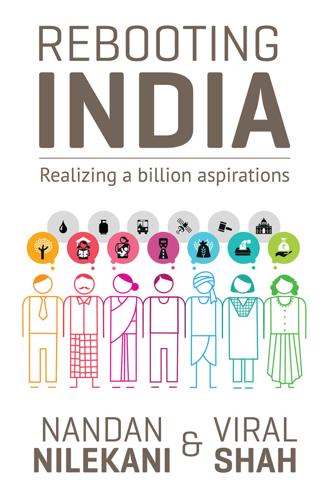
Rebooting India: Realizing a Billion Aspirations
by
Nandan Nilekani
Published 4 Feb 2016
Private weather forecasters like Skymet and the Bangalore-based Citizen Weather Network are entering a domain that was until recently the exclusive preserve of the Indian Meteorological Department (IMD).13 The holy grail of weather forecasting in India is predicting the onset of the annual monsoon season, and Skymet has already clashed with the IMD by releasing monsoon predictions and analyses that differ from the IMD’s interpretation.14 Much like GPS, a more recent instance of a military technology being opened to the public is that of autonomous vehicles. Through DARPA—coincidentally the agency that also birthed the internet—the US government has been funding such endeavours for over a decade.15 The underlying technology has now entered the commercial space; Google is testing self-driving cars using its Google Chauffeur platform, Uber has just announced an academic collaboration with Carnegie Mellon University to ‘develop driverless car and mapping technology’, and Apple is reportedly investigating technologies for building electric and self-driving cars.16 While we may not see a fleet of self-driving cars taking over our streets in the near future, it’s worthwhile to consider that various US state governments are already starting to pass laws that permit driverless cars to operate on state roads.17 Once again, government regulations need to anticipate innovation by keeping a close eye on emerging trends and assessing their potential impact and chances of widespread adoption.
…
http://blogs.wsj.com/digits/2015/02/02/uber-chases-google-in-self-driving-cars/ Taylor, Edward, and Oreskovic, Alexei. 14 February 2015. ‘Apple studies self-driving car, auto industry source says’. Reuters. http://www.reuters.com/article/2015/02/14/us-apple-autos-idUSKBN0LI0IJ20150214. 17. 18 September 2014. ‘Coming to a street near you’. Economist. http://www.economist.com/news/business-and-finance/21618531-making-autonomous-vehicles-reality-coming-street-near-you 18. Pauker, Benjamin. 29 April 2013. ‘Epiphanies from Chris Anderson’. Foreign Policy. http://foreignpolicy.com/2013/04/29/epiphanies-from-chris-anderson/ 19. Amazon prime air. http://www.amazon.com/b?node=8037720011 20. SpaceX. http://www.spacex.com 21.
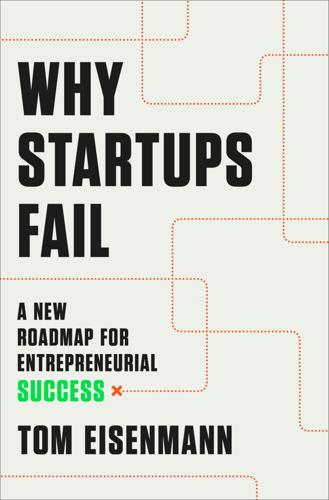
Why Startups Fail: A New Roadmap for Entrepreneurial Success
by
Tom Eisenmann
Published 29 Mar 2021
Then, the flow of capital suddenly stopped, and startups, starved for capital, struggled to survive. Boom-bust investment cycles do not always impact entire industry sectors. Sometimes they are limited to certain segments, like meal delivery services, virtual reality, pet care, bitcoin/blockchain, direct-to-consumer brands, robo-investing, autonomous vehicles, and so forth. Investment bubbles typically start when entrepreneurs and investors recognize a big, new opportunity, often triggered by technology breakthroughs, like machine learning, gene editing, or voice recognition software (e.g., Jibo). Or, entrepreneurs might see many different ways to leverage novel business models, as with flash sales (e.g., Fab), “gig economy” labor (e.g., Baroo), or “direct-to-consumer” retailing (e.g., Quincy).
…
Federal Express did; when Fred Smith founded the company in the early 1970s, it was the biggest venture capital bet in history. More recently, we have Elon Musk’s Tesla and SpaceX, both of which have soaring valuations as I write this. So, expect more moonshots; indeed, we need them to address grand societal challenges like climate change. Visionary entrepreneurs around the world are working on hyperloops, autonomous vehicles, gene editing, and quantum computing. One day, you’ll surely be able to chat with Jibo’s grandchildren. We may even get flying cars. CHAPTER 10 Running on Empty Failure is not the worst thing; the worst thing is working on something for years with no end in sight. —Andrew Lee, Esper co-founder When they founded Quincy Apparel, Nelson and Wallace promised not to let conflict over how to run the venture threaten their close friendship.

The Measure of Progress: Counting What Really Matters
by
Diane Coyle
Published 15 Apr 2025
Still, there is a lively car club and car-sharing market in the United Kingdom. However, car sharing is not a phenomenon in the United States due to its strong car culture, longer distances, and absence of public transport alternatives. Yet f uture trends may point to more renting of external capital services, such as autonomous vehicles if these take off at scale, or likewise access to 3D printing machines. Business models of this kind are as-a-service subscription offers for h ouseholds rather than t hose provided to companies as described in the previous chapter. Gig Work here is another aspect to digital disintermediation: as the digital T platform business model has become more widespread, so have non- standard modes of work, often collected under the (disparaging) heading of gig work.
…
Another estimate of scale is simply to take the revenues of Google and Meta as a lower bound, as they dominate online advertising and data harvesting. Other Big Tech companies also earn money from data, but this cannot be disentangled from other revenue streams. Non- personal data is increasingly important too—think about data for construction supply chains or logistics or autonomous vehicles—although for understandable reasons much commentary focuses on the personal data issues. It is impossible to miss the salience of discussions about data’s importance to the economy, and while t here is breathless hype, t here is also solid evidence that using data effectively can improve productivity (Chapter 2).

Markets, State, and People: Economics for Public Policy
by
Diane Coyle
Published 14 Jan 2020
But it is not a formal industrial strategy or policy unless it is intentional, with attention paid to which industries serve an important social need (such as reducing CO2 emissions or addressing the challenge of caring for an aging population), lead at the frontier of a new technology (such as AI or autonomous vehicles), or build on one of the country’s sources of historical national comparative advantage. Conversely, when these tools are used without a purposeful strategy in mind, they are quite likely to be wasting taxpayers’ money. The UK, like many other countries, has used a mix of all these types of policies in an ad hoc way.
…
See also redistribution allocative efficiency (consumption efficiency; exchange efficiency), 10 altruism, 321 Amazon, 94, 124, 150, 240 American Economic Association, 329 Amtrak, 100, 118 anchoring, in decision-making, 173, 181, 190 Android (operating system), 94 anemia, 330 The Antitrust Paradox (Bork), 50 Apple Computer, 94, 124, 132 appraisal, 302–4; elements of, 303; evaluation distinguished from, 299; tools of, 297 Archer Daniels Midland (ADM), 57 Army Corps of Engineers, 304–5 Arnault, Bernard, 231 Arrow, Kenneth, 15, 40, 305 artificial intelligence (AI), 129 asymmetric information, 24, 36, 44, 101, 289, 293, 303; competition vs. regulation and, 64, 68, 72, 73–75, 76, 95, 113, 174, 266; contracting out and, 278–79, 285; in expert services, 210, 284–85; industrial policy and, 128, 134; insurance complicated by, 209, 291; monitoring complicated by, 35, 146, 285; signaling theory and, 164 Australia, 88, 94, 141, 173, 185, 217, 276–78 Austrian School, 51 automation, 207, 226, 227, 236 automobile industry, 106, 130 autonomous vehicles, 129 Autor, David, 222 averting (defensive) expenditures, 320 background checks, 67 Back to the Future (film), 130 bailouts, 106 banking. See financial services barbed wire, 141, 142 Bazalgette, Joseph, 308 BBC (British Broadcasting Corporation), 328 Beatles, 3, 228 behavioral economics, 72, 172–201; biases and, 172, 176–85, 320–21; critiques of, 195–99; framing and anchoring in, 180–82; growing importance of, 172; in practice, 185–89; questions raised by, 172–73, 189–95; randomized control trials and, 331; rationality assumptions vs., 176–79; risk and, 179–80 behavioral sociology, 173 Bell Labs, 108 benefit-cost ratio (BCR), 310 benefit transfer, 324–25 Benn, Anthony, 107 bequest value, 321 Berlin Wall, 23 Beveridge, William, 205, 233, 235–36, 246 biases, 172, 176–85, 320–21 biological market theory, 175 Bismarck, Otto von, 203 Black, Duncan, 261 black market, 167 blood donation, 196 “Blowin’ in the Wind” (song), 62 bootlegging, 269 Bork, Robert, 50, 95 bounded rationality, 176 Bretton Woods agreement, 100 British Airways, 119, 120 British Energy (Nuclear Electric), 87 British Leyland, 22, 102, 109 British Steel, 103, 110, 119 British Telecom (BT), 109, 112, 119–21, 188 British Telecommunications Act (1981), 120 Buchanan, James, 23, 260–61 budget deficits, 2, 110 Bull (French computer company), 107 bundling, 93, 94 Burroughs, Edgar Rice, 62 business cycle, 21, 209 Cable & Wireless, 119 The Calculus of Consent (Buchanan and Tullock), 260–61 California, 86, 151; electricity deregulation in, 88–89; nutrition in, 198; water management in, 143–44 Canada, 144, 217, 268 Capital in the 21st Century (Piketty), 216–17, 223, 226 Capitalism, Socialism and Democracy (Schumpeter), 20 Caplan, Byron, 164 cartels, 55, 56–57, 60 The Case against Education (Caplan), 164 “Cash for Clunkers” (Car Allowance Rebate program), 4–5 causality, 301 Central Electricity Generating Board, 87 CFCs (chlorofluorocarbons), 270 Chicago School, 95 China, 141, 157, 196; in digital market, 91, 128; economic growth in, 23, 217, 222; industrial policy in, 126, 127, 128; as trading partner, 220, 222 choice architecture, 189–94 choice experiments, 323–24 Christie, Agatha, 62 Chrome (browser), 91, 94 Churchill, Winston, 205 Clark, Colin, 21 class actions, 65 Clean Air Act (1970), 269 Clean Air, Dirty Coal (Ackerman and Hassler), 269 Clearances, in Scotland, 166 climate change, 126, 148, 313–15 club goods (toll goods), 26, 28, 142 coal, 86, 269–70 Coase, Ronald, 31–35, 140, 144 Coca-Cola, 167 Cochrane reviews, 332 codifiable knowledge, 157 collective action problems, 256, 267, 294, 303 Collective Choice and Social Welfare (Sen), 40–41 commitment devices, 184–85 Common Agricultural Policy, 267, 268 communications, 21–22 communism, 23 compensating variation, 339–41 competition: behavioral remedies and, 187–89; inquiries into, 57–60; “for the market” vs.
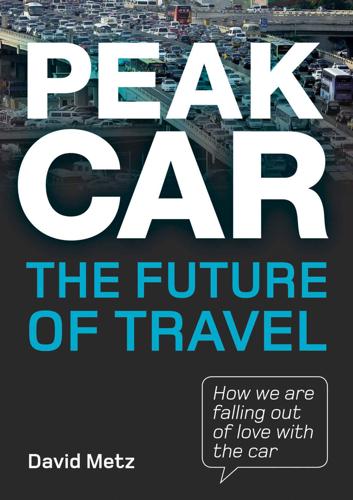
Peak Car: The Future of Travel
by
David Metz
Published 21 Jan 2014
A segregated highway would allow platoons of driverless cars to operate in synchrony, thus increasing the capacity of the road. There have been successful experimental trials of platooning, but both wide practical implementation and economic attractiveness seem problematic. This is an chicken-and-egg situation: investment in a segregated highway could only be justified if there were a sufficient number of autonomous vehicles wiling to pay tolls for use, but investment in these vehicles could only be justified if the segregated highway existed. My expectation is that driverless cars, to the extent they penetrate the market, will amount to an incremental improvement, not a disruptive innovation—best regarded as robot chauffeurs.

In Our Own Image: Savior or Destroyer? The History and Future of Artificial Intelligence
by
George Zarkadakis
Published 7 Mar 2016
None of the robot vehicles that took part finished the route that year. The furthest any of the contestants managed was 7.3 miles. Next year, DARPA repeated the challenge. This time five vehicles completed the course, the team from Stanford University gaining first place. Since then DARPA has repeated the robotics challenge, to include autonomous vehicles capable of finding their way in an urban environment, as well as humanoid robots. The contestants have consistently produced better products over the years. This rapid evolution in performance is very telling of how quickly engineers can integrate new systems nowadays, and innovate. Google and others are currently developing prototype commercial driverless cars, which we should expect to become part of our everyday lives by the next decade.
…
Dick. 1989: Tim Berners-Lee invents the World Wide Web. 1990: Seiji Ogawa presents the first fMRI machine. 1993: Rodney Brooks and others start the MIT Cog Project, an attempt to build a humanoid robot child in five years. 1997: Deep Blue defeats Garry Kasparov at chess. 2000: Cynthia Breazeal at MIT describes Kismet, a robot with a face that simulates expressions. 2004: DARPA launches the Grand Challenge for autonomous vehicles. 2009: Google builds the self-driving car. 2011: IBM’s Watson wins the TV game show Jeopardy!. 2014: Google buys UK company Deep Mind for $650 million. 2014: Eugene Goostman, a computer program that simulates a thirteen-year-old boy, passes the Turing Test. 2014: Estimated number of robots in the world reaches 8.6 million.1 2015: Estimated number of PCs in the world reaches two billion.2 NOTES Introduction 1PCs (‘Personal computers’) started becoming widely available in the early 1980s: IBM 5150 in 1981, Commodore PET in 1983.

Super Thinking: The Big Book of Mental Models
by
Gabriel Weinberg
and
Lauren McCann
Published 17 Jun 2019
Now, though, a better argument for peak oil is starting to form as the oil market’s underlying structure is proving to be unhealthy. The effects of climate change are looming. Solar energy is quickly becoming cost-competitive with oil on a global scale. Increasing cost-competitiveness of electric cars and the advent of autonomous vehicles and ride-sharing services are threatening to collapse the car and truck markets as we know them. All of these have the potential to create lasting effects on the oil market. Whether you are a market observer or a market participant, these structural changes are worth considering when you’re thinking about a possible new reality for the oil market.
…
A parallel in business is when companies amass large patent portfolios, but generally don’t use them on one another for fear of escalating lawsuits that could potentially destabilize all the companies involved. Occasionally you see these suits and countersuits, such as the ones between Apple and Qualcomm (over chip patents), Oracle and Google (over Java patents), and Uber and Google (over autonomous vehicle patents), but these companies often have so many patents (sometimes tens of thousands each) that there could be literally hundreds of suits like these if not for MAD. There are countless possible destructive outcomes to a conflict besides this arguably most extreme outcome of MAD. Engaging in any direct conflict is dangerous, though, because conflicts are unpredictable and often cause collateral damage (see Chapter 2).

The Coming Wave: Technology, Power, and the Twenty-First Century's Greatest Dilemma
by
Mustafa Suleyman
Published 4 Sep 2023
Everything from road markings to seatbelts to traffic police helped. Although the motorcar was one of history’s fastest-proliferating and most globalized technologies, accidents were inherently local, discrete events whose ultimate damage was contained. But now a fleet of vehicles might be networked together. Or a single system could control autonomous vehicles throughout a territory. However many safeguards and security protocols are in place, the scale of impact is far wider than we’ve seen before. AI creates asymmetric risks beyond those of a bad batch of food, a plane accident, or a faulty product. Its risks extend to entire societies, making it not so much a blunt tool as a lever with global consequences.
…
Technology has always been about allowing us to do more, but crucially with humans still doing the doing. It has leveraged our existing abilities and automated precisely codified tasks. Until now, constant oversight and management have been the default. Technology remained to greater or lesser degrees under meaningful human control. Full autonomy is qualitatively different. Take autonomous vehicles. In certain conditions today, they can drive on roads with minimal or no direct input from the driver. Researchers in the field categorize autonomy from level 0, no autonomy whatsoever, to level 5, where a vehicle can drive itself under all conditions and the driver simply inputs a destination and then can fall happily asleep.

Four Battlegrounds
by
Paul Scharre
Published 18 Jan 2023
Strategy games are a special case since they can be perfectly simulated, while the complexity of the real world oftentimes cannot, but synthetic data can help augment datasets when real-world data may be limited. The autonomous car company Waymo stated in 2020 that they had driven over 20 million miles on public roads, building up a large dataset of real-world driving interactions. To augment this real-world data, Waymo has been simulating 10 million driving miles every single day in computer simulations, racking up a total of 10 billion simulated miles as of 2020. These simulations are another form of synthetic data, which can then be used to improve autonomous car algorithms. Simulations allow Waymo to create thousands of variations of situations, ensuring its algorithms are robust to a range of driving conditions.
…
The compute requirements for trained AI models doing inference are much less, sometimes orders of magnitude less than what was needed for training. While AI models are often trained at large data centers, the lower compute requirements mean that inference can increasingly be done on edge devices, such as smartphones, IoT devices, intelligent video cameras, or autonomous cars. Both training and inference are done on computer chips, and advances in computing hardware has been fundamental to the deep learning revolution. Graphics processing units (GPUs) have emerged as a key enabler for deep learning because of their ability to do parallel computation (which is valuable for neural networks) better than traditional central processing units (CPUs).
…
Adversarial attacks have been embedded into physical objects, such as a 3D-printed turtle that was subtly altered to fool an image classifier into misidentifying it as a rifle. Even more alarming than stickers on stop signs, in a real-world driving experiment researchers used black box methods to create a physical adversarial object that was able to evade detection by the laser-based detection systems used by self-driving cars. To the autonomous car’s sensors, the object simply wasn’t there. In theory, adversarial attacks could be used to subvert deployed AI systems in a variety of real-world settings. An individual wearing manipulated clothing—a hat, shirt, or glasses—could fool a facial recognition system into believing they are someone else.

This Is Not a Drill: An Extinction Rebellion Handbook
by
Extinction Rebellion
Published 12 Jun 2019
So instead of considering the practical ethics of impoverishing and exploiting the many in the name of the few, most academics, journalists and science-fiction writers instead considered much more abstract and fanciful conundrums: Is it fair for a stock trader to use smart drugs? Should children get implants for foreign languages? Do we want autonomous vehicles to prioritize the lives of pedestrians over those of its passengers? Should the first Mars colonies be run as democracies? Does changing my DNA undermine my identity? Should robots have rights? Asking these sorts of questions, while philosophically entertaining, is a poor substitute for wrestling with the real moral quandaries associated with unbridled technological development in the name of corporate capitalism.

The Innovation Illusion: How So Little Is Created by So Many Working So Hard
by
Fredrik Erixon
and
Bjorn Weigel
Published 3 Oct 2016
7 Killing Frontier Innovation 1.Theodore Roosevelt, “The Control of Corporations.” 2.European Parliament, “Resolution of 20 May 2015.” 3.Gensch et al., “Assistance to the Commission.” 4.CSES, “Interim Evaluation.” 5.Dekkers, “Why Europe Lags on Innovation.” 6.Sunstein, “Beyond the Precautionary Principle.” 7.Bailey, “Precautionary Tale.” 8.European Commission, “Nanomaterials.” 9.Rabesandratana, “EU Court Annuls GM Potato Approval.” 10.Dunmore, “Monsantoo Withdraw EU Approval Requests.” 11.Moynihan, “What Are Quantum Dots.” 12.Ahmed, “Quantum dots.” 13.NASA, “High Efficiency Quantum Dot III-V Thermophotovoltaic Cell.” 14.Stern, “Innovation under Regulatory Uncertainty.” 15.Mandel and Carew, “Regulatory Improvement Commission.” 16.Carnegy and Foy, “French Ban on Mercedes Cars.” 17.McLaughlin and Williams, “The Consequences of Regulatory Accumulation.” 18.Al-Ubaydli and McLaughlin, “RegData: A Numerical Database on Industry-Specific Regulations.” 19.Anderson et al., Autonomous Vehicle Technology. 20.Thierer and Hagemann, “Removing Roadblocks to Intelligent Vehicles.” 21.Winston and Mannering, “Implementing Technology to Improve Public Highway Performance.” 22.Rodrik, “Policy Uncertainty and Private Investment”; Hassett and Metcalf, “Investment with Uncertain Tax Policy.” 23.Gulen and Ion, “Policy Uncertainty and Corporate Investment.” 24.Baker, Bloom, and Davis, “Has Economic Policy Uncertainty Hampered the Recovery?”
…
Anders, George, “WhatsApp’s Growth Exceeds Christianity’s First 19 Centuries.” Forbes, Jan. 8, 2015. At http://www.forbes.com/sites/georgeanders/2015/01/08/whatsapps-growth-exceeds-christianitys-first-19-centuries/. Anderson, James M., Nidhi Kalra, Karlyn D. Stanley, Paul Sorensen, Constantine Samaras, and Oluwatobi A. Oluwatola, Autonomous Vehicle Technology: A Guide for Policymakers. Rand Corporation, 2014. Andrews, Dan, Chiara Criscuolo, and Peter N. Gal, “Frontier Firms, Technology Diffusion and Public Policy: Micro Evidence from OECD Countries.” OECD Productivity Working Paper. Organisation for Economic Co-operation and Development, Nov. 2015.

These Strange New Minds: How AI Learned to Talk and What It Means
by
Christopher Summerfield
Published 11 Mar 2025
Freely available Palantir marketing videos demonstrate how LLMs can be used to answer queries about enemy troop types and movements, and to issue natural-language instructions to deploy surveillance drones (‘task the MQ9 to capture footage of this area’). So we are already in an era in which LLMs are being used to collect and interpret battlefield intelligence, and to directly control potentially lethal autonomous vehicles and drones. The natural language processing, reasoning, and image-analysis capabilities of LLMs make them ideally suited for helping humans with real-time command and control. You can imagine that LLMs could soon be used to issue commands in natural language to a drone swarm like Lanius, especially as text-to-speech technologies now allow queries to be spoken rapidly out loud.
…
A B C D E F G H I J K L M N O P Q R S T U V W X Y Z A action space, LLM, 274–5 Adams, Douglas: The Hitchhiker’s Guide to the Galaxy, 1–2, 325 Adept AI, 294 advertising, 188, 220–21, 223, 224, 248, 249, 261–2, 263, 314 affective states, 122, 124 #AIhype, 308–9, 311 AI Safety Institute, 311n, 346 algorithms, 21, 38, 59, 75, 76, 99, 249–50, 263, 278, 279, 326–31 alignment, LLM, 179–238 alignment problem, 322 AlphaCode, 287 AlphaFold, 3–4, 347 AlphaGo, 4, 267 Altman, Sam, 1, 2, 5, 162, 222–3 alt-right, 181–2 American Sign Language (ASL), 58, 60, 61, 63, 65 Anthropic, 5, 51, 192, 209, 215, 235, 251, 342 anthropomorphism, 71–2, 129, 264 Applewhite, Marshall, 217, 219 application programming interface (API), 283–5, 290–91, 292, 295, 300, 301 Aristotle, 13, 16, 32; De Interpretatione (‘On Interpretation’), 73 Artificial General Intelligence (AGI), 1, 136, 140 Artificial Intelligence (AI) Artificial General Intelligence (AGI), 1, 136, 140 assistants, personal, 7, 227–8, 243, 246–7, 251, 263, 272, 292, 295, 297, 300, 301, 332, 334, 335, 342–3 deep learning systems, see deep learning systems empiricist tradition and, see empiricist tradition ethics/safety training, 179–238, see also alignment future of, 239–338 general-purpose, 310 Godfathers of, 6, 305, 310 instrumentality, 246, 247, 267, 330, 332 large language models (or LLMs), see large language models (or LLMs) military/weapons, 292, 309, 314–16, 325 multimodal, 177, 230, 242 natural language processing (NLP), see natural language processing (NLP) neural networks, see neural networks origins of, 14, 9–117 rationalist tradition and, see rationalists/rationalist tradition rights of, 126–7 symbolic, 27, 41, 45, 72, 113, 277–8, 334 thinking and, 119–78 tyranny and, 336–7 Ask Delphi, 244 astroturfing, 224 attention, 104–9, 112–13, 115, 116, 117, 160, 164, 167 Austin, J. L., 217–18 AutoGPT, 294–6, 299, 324 auto-induced distribution shift, 262–3 autonomous vehicles, 297, 315 autoregressive, LLMs as, 270–71 B BabyAGI, 295 bag of words model, 80–81 Bar Exam, 6, 273, 336 Bard, 5, 132, 132n, 139, 210 Beckett, Samuel: Waiting for Godot, 69–70 Bengio, Yoshua, 90n, 91, 310 Berkeley Crossword Solver (BCS), 276–7 Bharatiya Janata Party, 207 bias, 8, 145, 184, 192, 208, 209, 210, 211, 212, 232, 251, 301, 313, 338 Biden, Joe, 134, 183, 207, 210–12, 234 big data, 84–5, 308 Bing, 7, 236, 289–90 bioterrorism, 187, 316 Bonin, Gerhardt von, 35 Book of Genesis, 16, 57 Boole, George: An Investigation of the Laws of Thought on Which are Founded the Mathematical Theories of Logic and Probabilities, 24–5, 35–6 Borges, Jorge Luis: ‘The Library of Babel’, 184 Bostrom, Nick, 266, 321 brain computer and, 22, 144–7 consciousness and, 125 Drosophila, 33–4, 36–7, 47, 147 language and, 67, 74, 89, 92, 94, 95, 100–102, 111, 112, 115, 116 learning and, 160–62, 167, 169 meaning and, 176–7 memory and, 254 mind and, 32–3, 129–30 neural networks and, 33–7, 41, 44, 47–8 neurons, see neurons phenomenal states and, 122 planning and, 298–300 recursive computation in, 74 size, 47–8, 47n, 190 synapses, 33, 37, 45, 147, 161–2, 169, 254, 305 term, 130 thinking and, 47–8, 47n, 52, 122, 125, 128–30, 133, 143–7, 151, 152, 160–62, 167, 169, 173, 176 See also individual area of C calcar avis, 128–9 calculus ratiocinator, 20 CAPTCHA, 220 Carnap, Rudolf, 35 cats, 41, 44, 61 Chai, 222, 223 chain-of-thought (CoT) prompting, 269–71, 278, 279, 283, 285 chaining, 28 ChaosGPT, 324–5 chatbots, 1, 6, 59, 60, 70, 71–2, 81, 175, 177, 178, 205, 210, 222, 227–30, 236, 237, 244, 260.
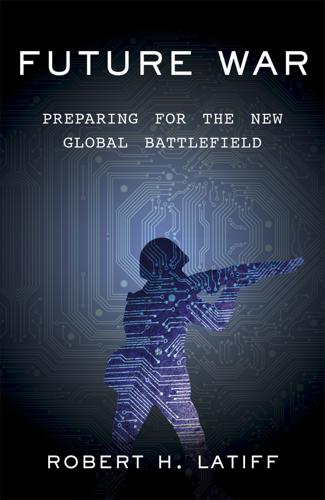
Future War: Preparing for the New Global Battlefield
by
Robert H. Latiff
Published 25 Sep 2017
The soldier will become the slowest element in an engagement, or simply irrelevant. A soldier who feels himself to have no autonomy, authority, or responsibility will no longer want to apply independent judgment. Adherence to the rules of war will become less relevant as well. With ongoing work in computers, artificial intelligence, robotics, and autonomous vehicles, we are attempting to make machines—inanimate objects—approximate the behavior of humans. At the same time, with work in soldier enhancements, be they physical, neural, pharmaceutical, or performance-based, we are attempting to make humans behave more like machines. In both cases, we are blurring the concept of what it means to be human.

The Future Is Asian
by
Parag Khanna
Published 5 Feb 2019
Where cities have become too large and congested, such as Changsha, the government has attempted to motivate people to shift to second-tier cities to distribute the population better.50 Now, instead of just four cities representing nearly half the country’s middle class—as was the case with Beijing, Shanghai, Guangzhou, and Shenzhen in 2002—by 2020, inland China is expected to be home to 40 percent of the country’s middle class. Given the density of Asian cities, last-mile bike sharing and autonomous vehicles are other areas in which Asians are making strategic investments to navigate around the traditional path of universal vehicle ownership and crippling traffic congestion. Bike stations and dockless biking have been pioneered by companies such as Mobike and Ofo, which have spread from China across Asia and into Europe.
…
These examples demonstrate that the winners of a perceived competition between US and Chinese tech companies to innovate and compete for Asian markets are first and foremost Asians themselves. Even in capital-intensive arenas such as particle physics and quantum computing, the combination of China’s appropriation of US technology, luring Chinese American talent from Silicon Valley, and thriving enterprise culture have collectively driven Chinese innovation. Autonomous vehicles, energy-efficient power grids, and urban surveillance systems all rest on breakthroughs in AI such as neural networks, which Asians have developed at least a year ahead of their Western counterparts. Andrew Ng, a cofounder of Google Brain and Coursera who then became chief scientist at Baidu, argues that the complexities of Chinese characters and tones pushed Baidu toward advances in natural language processing (NLP) and voice recognition faster than its Western peers.

The Big Fix: How Companies Capture Markets and Harm Canadians
by
Denise Hearn
and
Vass Bednar
Published 14 Oct 2024
Critics perceived the project as a corporate power grab, raising questions about whether a private company should possess such far-reaching influence over public infrastructure and the data it generated. It was also Google’s first major attempt to marry its ecosystems of assets to public infrastructure, including such hardware as autonomous vehicles and the software to process and analyze the vast data troves the community would generate. Roger McNamee, an early big tech investor that is now highly critical of the industry, called the project “the most highly evolved version to date of what Harvard professor Shoshana Zuboff calls ‘surveillance capitalism.’”300 The collection of resident data for corporate purposes raised significant ethical concerns regarding privacy rights, particularly those surrounding the consent of individuals and the potential exploitation of their personal information for private profit.
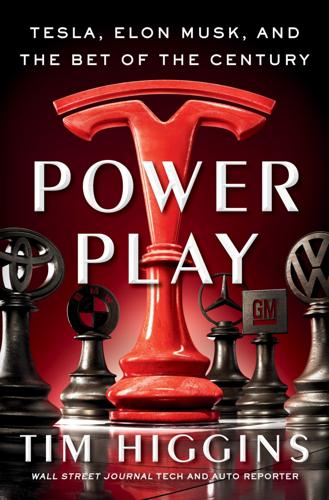
Power Play: Tesla, Elon Musk, and the Bet of the Century
by
Tim Higgins
Published 2 Aug 2021
Peter Rawlinson had warned Musk in late 2011 about them, but those words were long forgotten. By spring of 2015, the team was grappling with how to get them to open upward like a bird’s wings in flight. The hydraulics weren’t standing up to testing; they were leaking on passengers. Sterling Anderson, an MIT researcher who had attracted attention for his work in autonomous cars, was hired in late 2014 as the program manager of the Model X and was quietly engineering a new design for the doors, one that would use a less complicated electromechanical system. Musk liked it and ordered the last-minute change. Changing the door design so late in the game was risky. It would require adjustments to the body of the vehicle, requiring new dies to be created.
…
He was painting the kind of vision for the future of cars that Silicon Valley had fantasized about for generations. But somehow, when he said it, it seemed plausible. (Trying to catch up, General Motors in March announced it was acquiring a little-known San Francisco startup called Cruise to jump-start its own autonomous car program. What attracted everyone’s attention was the headline number for the price of the deal: more than $1 billion.) Musk didn’t lay out how he would pay for his future or belabor the timelines. He didn’t need to. His pronouncement had one convincing bit of history in its favor: Ten years earlier, his talk of bringing out an all-electric luxury sedan and compact car had seemed far-fetched.
…
In dense language, the government said it had reviewed Tesla data from the system and found its vehicles’ crash rate dropped by almost 40 percent after “autosteer” was installed. Musk was ecstatic—he quickly highlighted the 40 percent findings on Twitter. Some members of the team were stunned. Where had the 40 percent figure come from? All of the attention on Autopilot, and Musk’s dream for fully autonomous cars, was stirring new excitement on Wall Street. The same day as the NHTSA’s findings, Adam Jonas at Morgan Stanley published a research report predicting Tesla stock could rise 25 percent to $305 a share, a startlingly high level that, if achieved, would mark an unbelievable milestone: Tesla would be valued higher than Ford or General Motors.

Drone Warfare: Killing by Remote Control
by
Medea Benjamin
Published 8 Apr 2013
“Of that you can be certain.”293 Williams thinks the best chance the international community has to curb the use of drones is to stop autonomous robotic weapons—weapons that operate independently according to pre-programmed missions—because they are not yet fully developed and because they bring up the most difficult ethical and legal questions. “If we think it’s bad now, imagine a fully autonomous vehicle going out and wiping out several villages,” said Williams. “Who’s accountable? The company who made them? The military who used them? The software developer? Perhaps they all should be taken to court but that probably isn’t going to happen. So we need to stop them before they’re used. And this is something I think an international coalition could accomplish.”

Blood in the Machine: The Origins of the Rebellion Against Big Tech
by
Brian Merchant
Published 25 Sep 2023
De Blasio also proposed creating an authority, the Federal Automation and Worker Protection Agency, that would gather data on automation and employment and help protect workers. He argued that the bureau should cover work displacement, not just from automation, but from app-based companies as well. “We’ve had some initial fights over autonomous vehicles already,” de Blasio said; companies that want to come onto the streets of New York that we would not allow for safety reasons alone, that might have a huge negative impact, employment-wise. But on just the for-hire vehicle sector, you know, Uber and Lyft—it’s not automation in some ways in the fullest sense, obviously, but simply a new technology that automated some functions—and had a massive dislocating impact on our transportation sector.
…
It may be only a matter of time before the rebel workers of this new machine age see the injustices of the algorithmic platforms as too much to bear, the surveillance apparatus of Big Tech too intrusive, the robotic pace of work too ruthlessly body-breaking. And if they feel the rage of Frankenstein’s monster, rebooted in a new era of boundless entrepreneurial adventuring, and they catch sight of those autonomous vehicles assembling like ghosts on the horizon, they might just reach, once again, for their hammers. ACKNOWLEDGMENTS The first round of thanks must go out to the machine breakers: the protestors, the organizers, the artists and artisans, the poets and prognosticators, the workers and critics who, Luddites all, pushed back—even when called idiots or deluded or worse—rather than be trampled by someone else’s machinery.

Scary Smart: The Future of Artificial Intelligence and How You Can Save Our World
by
Mo Gawdat
Published 29 Sep 2021
Well, the cars of the past didn’t. That is no longer the case. Autonomous, self-driving vehicles and every other type of similarly AI-powered tech will have a will of its own. Think about that because this is where the intelligence will start to manifest itself. If it is too hot in the parking lot, autonomous cars may choose, without your blessing, to move to a shady spot. They may choose to navigate their path to the airport through a different route and could even choose to commit suicide and throw themselves off a mountaintop, if their intelligence told them this could save the life of a child or perhaps even another car.
…
They may choose to navigate their path to the airport through a different route and could even choose to commit suicide and throw themselves off a mountaintop, if their intelligence told them this could save the life of a child or perhaps even another car. Yes. This is the true meaning of the word autonomous – the ability to make their own decisions and, in the near future, develop their own decision-making methods. Rather disconcerting when you consider it. I mean, think about those autonomous war machines that are a bit like an autonomous car but with a machine gun attached to them. And what about other autonomous machines that make decisions we can’t even observe with our own eyes? While a car in motion is still sort of manageable, in terms of predicting what it might do, AIs that perform billions of transactions a minute, such as the ones that decide which ad or content to show you on the internet, are already way faster than anything we can control.
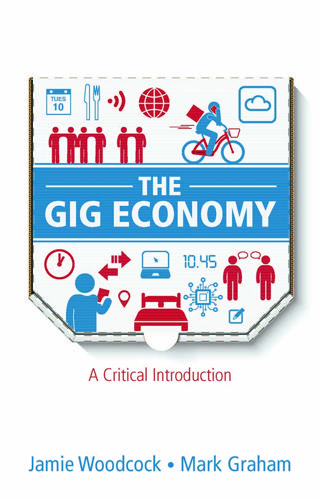
The Gig Economy: A Critical Introduction
by
Jamie Woodcock
and
Mark Graham
Published 17 Jan 2020
Think of babysitters or security guards as jobs in which people tend to use personal recommendations, etc., that are hard to codify into platform ratings or databases. On the other hand, too much legibility and there is the risk that jobs become automated away. The Amazon dream of autonomous drones that can deliver parcels or the Uber dream of autonomous vehicles that can transport passengers are only possible in a world in which multiple overlapping spaces, activities and processes are highly digitally legible. Having a standardized addressing system, high-quality geospatial data, and the technology to produce and read those data has allowed large platforms to more effectively operate in some countries rather than others.
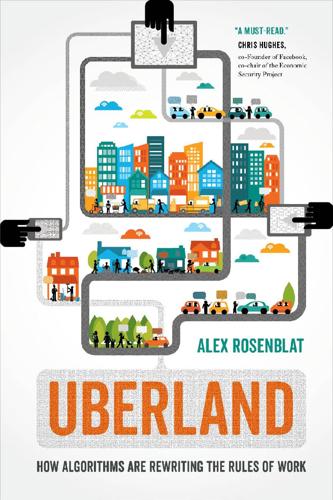
Uberland: How Algorithms Are Rewriting the Rules of Work
by
Alex Rosenblat
Published 22 Oct 2018
In concrete terms, it looks like this: let’s say Uber and others are working to get approval from municipalities to test autonomous cars. Behind these particular negotiations is a larger, cultural conversation in the United States which says that advances in automation will result in mass joblessness. Against this cultural backdrop, Uber simultaneously approaches state regulators to pass laws that legislate the independent-contractor status of drivers,41 even stripping them of worker rights. But the logic of automation debates frames this effort as a small concession: ceding workers’ rights seems relatively innocuous if their jobs give way to a future with autonomous cars, a future that renders driving redundant.

Blockchain Chicken Farm: And Other Stories of Tech in China's Countryside
by
Xiaowei Wang
Published 12 Oct 2020
Gourmands also insist that the moon’s terroir, the special moon-maize cultivar, coupled with the unique gravitational field of the moon, give a complex, hearty aroma to moon-farmed foods. Moon maize is not just a specialty crop, however. Currently, private farming companies are doing research in using small, cost-effective UAVs (unmanned autonomous vehicles) for sowing and harvesting, so that everyone on earth can access moon-farmed food. For this recipe, we highly suggest using the “Lora” strain, as it is organically grown and combines the best of heritage maize with the sweetness of modern corn. While these moon-maize mooncakes fetch a hefty price at Hema, you can make them at home for a fraction of the cost.
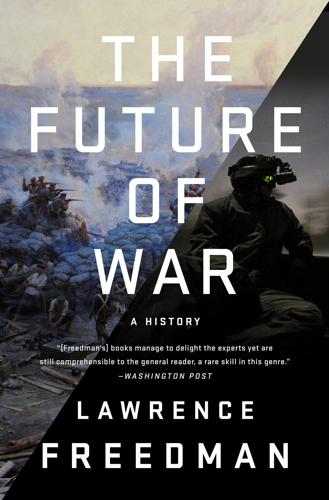
The Future of War
by
Lawrence Freedman
Published 9 Oct 2017
Military organisations had been known to resist anything which threatened human redundancy, for example in the 1950s Strategic Air Command resisted ICBMs as alternatives to manned bombers. In addition the record of turning exciting new technologies into actual systems was less impressive than often supposed, with funding, bureaucratic, and engineering issues often causing severe delays.22 Another factor affecting the introduction of autonomous vehicles was that the lead with the new technologies was taken by the private sector. The most developed example was a driverless car, a much more challenging machine than a drone and one expected to have much more autonomy. As it moved forward on the ground it had to be aware of numerous potential obstacles and other vehicles with their own dynamics.
…
Driverless cars were first developed as a Pentagon programme in 2004 but resources were only poured into it as a commercial venture, which not only meant that the advances were out of state control but also that the state took second place in competition for the skilled engineers and software developers needed to take the work forward. Competition for a mass market and vast R&D expenditures moved driverless cars to viable products while military programmes for autonomous vehicles lagged behind. A key feature of many of the vital systems introduced for the digital age, including Internet providers, search engines, hardware manufacturers, and software developers, was that they were owned and operated by private companies with global interests. Smartphones carried capabilities such as satellite imaging, navigations, data stores, and instant, encrypted communications of a quality once available to only the most advanced military organisations.
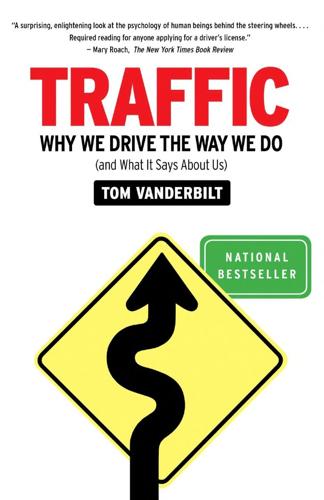
Traffic: Why We Drive the Way We Do (And What It Says About Us)
by
Tom Vanderbilt
Published 28 Jul 2008
This is a problem that Sebastian Thrun, director of the Artificial Intelligence Laboratory at Stanford University, and his team have dedicated themselves to for the last few years. In 2005, Thrun and his colleagues won the Defense Advanced Research Projects Agency’s Grand Challenge, a 132-mile race through a tortuous course in the Mojave Desert. Their “autonomous vehicle,” a Volkswagen Touareg named Stanley, using only GPS coordinates, cameras, and a variety of sensors, completed the course in just under seven hours, averaging a rather robust 19.1 miles per hour. Stanley won because Thrun and his team, after a series of failures, changed their method of driving instruction.
…
The randomness of traffic overwhelms these tiny instances. At the same time, some of these little optimizations, like being a jerk at a stop sign, cause problems for everyone. They slow everyone down.” It took a group of some of the world’s leading robotics researchers years of work to come up with an autonomous vehicle that, while clever and adept at certain driving tasks, would quickly go haywire in real traffic. That should be both a testament to the remarkable human ability that driving is as well as a cautionary reminder not to take this activity for granted. The advantage robots have in the long run is that the hardware and software keep getting better.
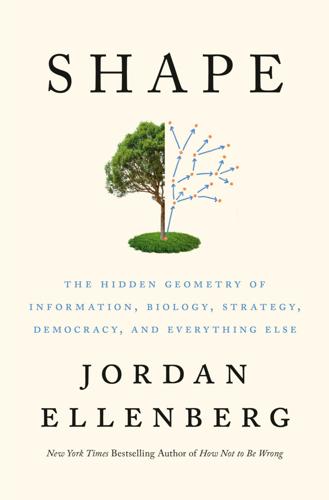
Shape: The Hidden Geometry of Information, Biology, Strategy, Democracy, and Everything Else
by
Jordan Ellenberg
Published 14 May 2021
AI pioneer Oliver Selfridge, in a television interview from the early 1960s, said, “I am convinced that machines can and will think in our lifetime,” though with the proviso “I don’t think my daughter will ever marry a computer.” (There is no technical advance so abstract that people can’t feel sexual anxiety about it.) The multidimensional geometry of difficulty should remind us that it’s very hard to know which competencies machines are on the verge of acquiring. An autonomous vehicle may be able to make the right choice 95% of the time, but that doesn’t mean it’s 95% of the way to making the right choice all the time; that last 5%, those outlier cases, might well be a problem our sloppy brains are better equipped to solve than any current or near-future machine. And of course there’s the question, naturally of interest to me, of whether machine learning can replace mathematicians.
…
See also geometric progressions Arkansas Voters First, 409 Arnell Group, 278 Aronofsky, Darren, 276–77 Articles of Confederation, 353n artificial intelligence (AI) car key search analogy, 186–87 and chess-playing computers, 145 and deep learning, 177–86 and Go-playing programs, 141 and gradient descent, 166–68, 169–73, 174–76 and image analysis, 168–73 and parity problem, 204 sexual anxiety touched off by, 204 and strategy assessment, 173–77 See also machine learning; neural networks Ash, Robert, 290 Ashbery, John, 217 associative learning, 222 astronomy, 250 asymmetry, 89, 135, 257, 306, 342–43, 386, 398 athoni, 190–91 atoms (numerical sequences), 265 Aubrey, John, 11–12 audioactive decay, 265 Australasian Journal of Philosophy, 33–34 authalic projection, 308 autocompletion, 263 automata, 252–53, 253n autonomous vehicles, 177–78, 204–5 Awesome Theorem, 308–10 axioms and appeal of geometry, 3 and commutativity, 297 and geometry pedagogy, 12–13, 15, 18, 22, 24–26 and gradient descent, 172 and metaphorical value of geometry, 411 and transitivity of equality, 20 ayahuasca, 2, 3–4 Babbage, Charles, 133, 155, 252–53 babies and geometry, 2 Babson, Roger, 280–81 Babson College, 280 baby examples, 158–59 Bachelier, Louis, 80–82, 88, 90, 279, 324 Bacon, Kevin, 314–15, 334.

Alpha Trader
by
Brent Donnelly
Published 11 May 2021
Let’s look at a very simple example of how understanding the narrative can help you when news comes out. You have been trading the stock of a hydrogen-powered truck manufacturer for a while and it has been in a steady up trend. The market has attached a huge premium to electric and autonomous vehicle stocks and the stock you trade benefits from the halo effect of TSLA. The main narrative is that autonomous vehicles have massive upside and almost any market cap can be justified. With this stock, there is a bearish counternarrative humming in the background. That story is that the company has not yet delivered a single working truck to any customer and behind the scenes there is strife inside the company as the founder is viewed by some as a classic visionary entrepreneur and by others as a marketing genius with no technical skill.

Nexus: A Brief History of Information Networks From the Stone Age to AI
by
Yuval Noah Harari
Published 9 Sep 2024
To produce AI that recognizes images, you need cat photos. To produce the trendiest fashion, you need data on fashion trends. To produce autonomous vehicles, you need data about traffic patterns and car accidents. To produce health-care AI, you need data about genes and medical conditions. In a new imperial information economy, raw data will be harvested throughout the world and will flow to the imperial hub. There the cutting-edge technology will be developed, producing unbeatable algorithms that know how to identify cats, predict fashion trends, drive autonomous vehicles, and diagnose diseases. These algorithms will then be exported back to the data colonies.

The Age of Surveillance Capitalism
by
Shoshana Zuboff
Published 15 Jan 2019
The machine hive—the confluent mind created by machine learning—is the material means to the final elimination of the chaotic elements that interfere with guaranteed outcomes. Eric Schmidt and Sebastian Thrun, the machine intelligence guru who once directed Google’s X Lab and helped lead the development of Street View and Google’s self-driving car, make this point in championing Alphabet’s autonomous vehicles. “Let’s stop freaking out about artificial intelligence,” they write. Schmidt and Thrun emphasize the “crucial insight that differentiates AI from the way people learn.”32 Instead of the typical assurances that machines can be designed to be more like human beings and therefore less threatening, Schmidt and Thrun argue just the opposite: it is necessary for people to become more machine-like.
…
Nadella did not fail to remind his audience of the crushing velocity that drives the instrumentarian project in an explosion of shock and awe, especially in the years since surveillance capitalism came to dominate digital services: internet traffic increased by a factor of 17.5 million over 1992’s 100 gigabytes per day; 90 percent of the data in 2017 was generated in the prior two years; a single autonomous car will generate 100 gigabytes per second; there will be an estimated 25 billion intelligent devices by 2020. “It’s stunning to see the progress across the depth and breadth of our society and economy and how digital technology is so pervasive.… It’s about what you can do with that technology to have broad impact.”

Hit Refresh: The Quest to Rediscover Microsoft's Soul and Imagine a Better Future for Everyone
by
Satya Nadella
,
Greg Shaw
and
Jill Tracie Nichols
Published 25 Sep 2017
While there is no clear road map for what lies ahead, in previous industrial revolutions we’ve seen society transition, not always smoothly, through a series of phases. First, we invent and design the technologies of transformation, which is where we are today. Second, we retrofit for the future. We’ll be entering this phase shortly. For example, drone pilots will need training; conversion of traditional cars into autonomous vehicles will require redesign and rebuilding. Third, we navigate distortion, dissonance, and dislocation. This phase will raise challenging new questions. What is a radiologist’s job when the machines can read the X-ray better? What is the function of a lawyer when computers can detect legal patterns in millions of documents that no human can spot?
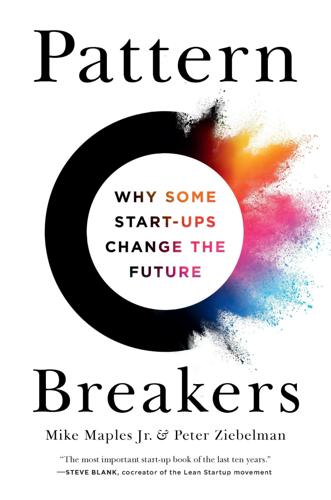
Pattern Breakers: Why Some Start-Ups Change the Future
by
Mike Maples
and
Peter Ziebelman
Published 8 Jul 2024
Kyle Vogt was a canonical example of this, even more so than Emmett Shear. Emmett had a certain degree of confidence, but Kyle thought he could build anything. And it turns out that he pretty much could.” Interestingly, after the experience at Justin.tv/Twitch, Kyle Vogt founded Cruise Automation, a company focused on autonomous vehicles. His passion for this challenge dated back to his MIT days. I met Kyle in the early stages of Cruise, and I considered investing in his start-up. Most of our team at Floodgate were skeptical. Trusting my instincts, I invested anyway. Less than a year later, GM acquired Cruise for over $1 billion.

Money: Vintage Minis
by
Yuval Noah Harari
Published 5 Apr 2018
His mind may expand in awe as he looks up at the stars and contemplates the mysteries of the universe. His eyes may fill with tears of joy when he sees his baby girl taking her very first step. But the system doesn’t need all that from a taxi driver. All it really wants is to bring passengers from point A to point B as quickly, safely and cheaply as possible. And the autonomous car will soon be able to do that far better than a human driver, even though it cannot enjoy music or be awestruck by the magic of existence. We should remind ourselves of the fate of horses during the Industrial Revolution. An ordinary farm horse can smell, love, recognise faces, jump over fences and do a thousand other things far better than a Model T Ford or a million-dollar Lamborghini.

Utopia Is Creepy: And Other Provocations
by
Nicholas Carr
Published 5 Sep 2016
And they’re blinding themselves to the social and cultural challenges they’re going to face as they try to convince people to be passengers rather than drivers. Even if all the technical hurdles to achieving perfect vehicular automation are overcome—and despite rosy predictions, that remains a sizable if—the developers of autonomous cars are going to discover that the psychology of driving is far more complicated than they assume and far different from the psychology of being a passenger. Back in the 1970s, the public rebelled, en masse, when the federal government, for seemingly solid safety and fuel-economy reasons, imposed a national fifty-five-mile-per-hour speed limit.
…
Pilots, physicians, and other professionals routinely navigate unexpected dangers with great aplomb but little credit. Even in our daily routines, we perform feats of perception and skill that lie far beyond the capacity of the sharpest computers. Google is quick to tell us about how few accidents its autonomous cars are involved in, but it doesn’t trumpet the many times the cars’ backup drivers have had to take the wheel to steer the machines out of danger. Computers are wonderful at following instructions, but they’re lousy at improvisation. They resemble, in the words of computer scientist Hector Levesque, “idiot savants” who are “hopeless outside their area of expertise.”

Valley of Genius: The Uncensored History of Silicon Valley (As Told by the Hackers, Founders, and Freaks Who Made It Boom)
by
Adam Fisher
Published 9 Jul 2018
Scott Hassan: I like the concept of self-driving cars, but I worry that our legal system can’t really handle them. The problem with autonomous cars is that it’s the manufacturer who is driving that car. Kevin Kelly: Humans should not be allowed to drive! We’re just terrible drivers. In the last twelve months humans killed one million other humans driving. Scott Hassan: If we can bring that down to, like, three a day, that will be amazing, right? It will be a thousand times less, right? But the problem is those three deaths are going to be caused by an autonomous car killing them. And that could sink any company making autonomous cars, because the payout—three per day—that’s a lot of lawsuits.

Thank You for Being Late: An Optimist's Guide to Thriving in the Age of Accelerations
by
Thomas L. Friedman
Published 22 Nov 2016
So when I confessed to the Google engineer in the front seat of the autonomous vehicle driving me around how relaxed I felt, she calmly turned away from her laptop—which was tracking every move the car made—and gave me a quote I had never heard as a reporter. “Mr. Friedman,” she said, “the car has no blind spots. Almost all the accidents are drivers rear-ending us because they were not paying attention.” This car has no blind spots! I wrote that down in my reporter’s notebook. Google’s cofounder Sergey Brin picked up the tour when we returned back to X’s headquarters. There, he showed me Google’s prototype of a two-person autonomous vehicle. It does not yet have a name, but it looks like a big egg on wheels or something you would ride up a mountain in on a ski lift.

Empire of AI: Dreams and Nightmares in Sam Altman's OpenAI
by
Karen Hao
Published 19 May 2025
They cannot explain exactly how the model will behave, especially in strange edge-case scenarios, because the patterns that the model has computed are not legible to humans. This has led to dangerous outcomes. In March 2018, a self-driving Uber killed forty-nine-year-old Elaine Herzberg in Tempe, Arizona, in the first ever recorded incident of an autonomous vehicle causing a pedestrian fatality. Investigations found that the car’s deep learning model simply didn’t register Herzberg as a person. Experts concluded that it was because she was pushing a bicycle loaded with shopping bags across the road outside the designated crosswalk—the textbook definition of an edge-case scenario.
…
Only then is it possible to recognize that their experiences were far from anomalous but rather a direct consequence of the compounding of the AI industry’s long-standing treatment of its hidden workers and its views on whose labor is or isn’t valued, with OpenAI’s empire-esque vision for unprecedented scale. * * * — Before generative AI, self-driving cars were the biggest source of growth for the data-annotation industry. Old-school German auto giants like Volkswagen and BMW, feeling threatened by the Teslas and Ubers of the world, spun up new autonomous-vehicle divisions to defend their ground against the fresh-faced competition. As billions of new dollars flooded into the race to create the cars of the future, the demand for data annotation exploded and created a need for alternatives to Mechanical Turk. MTurk, as it was called, was a generalist platform, meaning it didn’t cater to any particular kind of work.

Makers
by
Chris Anderson
Published 1 Oct 2012
Many of them were actually designed by customers and simply reviewed and improved by Sparkfun engineers to make them easier to manufacture. It’s a classic community-centric company. The front of its website features not products but its blog, with chatty tutorials and videos from its employees. Its forums are full of customers helping one another. Every year Sparkfun throws an autonomous vehicle competition, featuring a live band playing robot-themed songs of its own composition, and lots of kids chasing self-driving cars (I’ve been competing in the aerial category every year since it started—no wins yet). At Maker festivals around the country, Sparkfun engineers teach people how to solder, which is actually a lot more fun than it may sound.

12 Bytes: How We Got Here. Where We Might Go Next
by
Jeanette Winterson
Published 15 Mar 2021
And do we favour pedestrians over passengers? The least damage to me in the pod or to you on the pavement? What if a dog runs into the road, and the car needs to brake, at the same time as I need to accelerate to stop someone shunting me from the rear? In such situations a human makes a split-second decision. Autonomous vehicles will have to be programmed ethically – if that turns out to be the right word – ahead of time, and they will run according to programme … until the spooky day when they rewrite their own programme. And drive us all off the cliff we deserve. * * * Cars you can still pilot yourself will be factory-fitted with smart sensors.

Building the Cycling City: The Dutch Blueprint for Urban Vitality
by
Melissa Bruntlett
and
Chris Bruntlett
Published 27 Aug 2018
The approach so far has been to react to a disruptive problem after it becomes one—as has been the case for diesel-powered mopeds and speed pedelecs (electric-assisted bicycles that travel upwards of 45 km/h [28 mph]) using the cycle tracks—instead of looking forward and creating policies and visions to protect what it is the people want their city to be. Te Brömmelstroet also notes that Amsterdam is experiencing similar pressures to those challenging other global cities: as economic growth increases, it creates a push for greater investments in public transportation and new innovations in the field—such as autonomous vehicles—many of which could have an adverse effect on cycling. As engineers focus on improving travel times and efficiency, there is the potential to lose something much more valuable—the cohesiveness created by social interaction within a city. “In the seventies, Amsterdam citizens demanded a social city designed for the people who live there and not the ones who travel through it,” he recalls.

Platform Revolution: How Networked Markets Are Transforming the Economy--And How to Make Them Work for You
by
Sangeet Paul Choudary
,
Marshall W. van Alstyne
and
Geoffrey G. Parker
Published 27 Mar 2016
Kara Swisher, “Man and Uber Man,” Vanity Fair, December 2014; Jessica Kwong, “Head of SF Taxis to Retire,” San Francisco Examiner, May 30, 2014; Alison Griswold, “The Million-Dollar New York City Taxi Medallion May Be a Thing of the Past,” Slate, December 1, 2014, http://www.slate.com/blogs/moneybox/2014/12/01/new_york_taxi_medallions_did_tlc_transaction_data_inflate_the_price_of_driving.html. 3. Swisher, “Man and Uber Man.” 4. Zack Kanter, “How Uber’s Autonomous Cars Will Destroy 10 Million Jobs and Reshape the Economy by 2025,” CBS SF Bay Area, sanfrancisco.cbslocal.com/2015/01/27/how-ubers-autonomous-cars-will-destroy-10-million-jobs-and-reshape-the-economy-by-2025-lyft-google-zack-kanter/. 5. Swisher, “Man and Uber Man.” 6. Marc Andreessen, “Why Software Is Eating the World,” Wall Street Journal, August 20, 2011, http://www.wsj.com/articles/SB10001424053111903480904576512250915629460. 7.
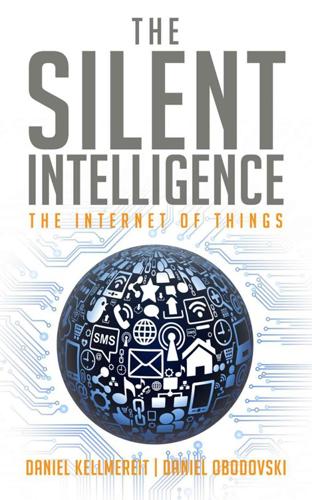
The Silent Intelligence: The Internet of Things
by
Daniel Kellmereit
and
Daniel Obodovski
Published 19 Sep 2013
That is absolutely going to happen in the next decade. I believe that very strongly. Whether Google does it or not, reasonable people could disagree, but whether that generally is going to happen, that I feel very strongly about. In reality, the Google-X driverless car project has demonstrated that autonomous cars can already navigate traffic and follow the speed limit. And that’s just the tip of the proverbial iceberg. Air traffic control might be another area to see more automation soon, as planes learn to communicate better with the ground and with each other, avoiding humans in the process. Astro says, “I bet you there are a lot of places where that’s going to be one of the big pieces of news — the radically changing rhythms, styles, interaction modalities between people and computers for solving hard, big, distributed problems.”

The Economics of Belonging: A Radical Plan to Win Back the Left Behind and Achieve Prosperity for All
by
Martin Sandbu
Published 15 Jun 2020
Machine-driven productivity growth put paid to most physical production jobs that existed in 1970 (and as the next chapter shows, would have done so even in the absence of globalisation). Automation and digitisation are now doing the same to a swath of service jobs—including some done largely by the sort of people who would formerly have taken manual factory jobs. Autonomous vehicles are an important example. Truck driving is, by some measures, the most common single profession in the United States, and one of the few providing decently paid jobs to men with little formal education. When the self-driving truck becomes technically and commercially viable, it will make most of them obsolete.

Bike Boom: The Unexpected Resurgence of Cycling
by
Carlton Reid
Published 14 Jun 2017
Carmageddon awaits for those cities that aren’t planning for a vehicle-free future. Driverless cars will work well on grade-separated, go-faster motor roads, but they have a far less certain future in city centers where cyclists and pedestrians could easily block their progress, thanks to the knowledge that autonomous vehicles are programmed not to bully humans out of the way, resulting in what risk specialist John Adams calls “deferential paralysis.” Even if pedestrians didn’t play “chicken” in front of them, driverless cars would still be wrong for cities: if even a quarter of the 1.3 million daily commuters into central London switched to driverless cars, the roads would seize solid.

Lab Rats: How Silicon Valley Made Work Miserable for the Rest of Us
by
Dan Lyons
Published 22 Oct 2018
Though Ford generates thirteen times as much revenue as Tesla and sells sixty-six times as many vehicles, Tesla’s stock market valuation is about the same as Ford’s. Tesla’s soaring stock is held up mostly by hype. CEO Elon Musk is a masterful marketer, a genius at generating buzz. But Tesla also has raced ahead of Detroit in developing the two biggest new car technologies: electric motors and autonomous vehicles. Tesla is not the only Silicon Valley company that threatens Ford. Google and Uber are working on self-driving cars. Apple is rumored to be operating a secret automotive laboratory. The Silicon Valley guys realize that transportation is becoming a technology business. Self-driving cars depend on artificial intelligence, which means sensors and lots of software, stuff they know how to do.

New Dark Age: Technology and the End of the Future
by
James Bridle
Published 18 Jun 2018
Thanks to the pervasive availability of network access and the self-replicating nature of corporate and centralising code, more and more daily activities become dependent on their accompanying software. Daily, even private, travel is reliant on satellite routing, traffic information, and increasingly ‘autonomous’ vehicles – which, of course, are not autonomous at all, requiring constant updates and input to proceed. Labour is increasingly coded, whether by end-to-end logistics systems or email servers, which in turn require constant attention and monitoring by workers who are dependent upon them. Our social lives are mediated through connectivity and algorithmic revision.
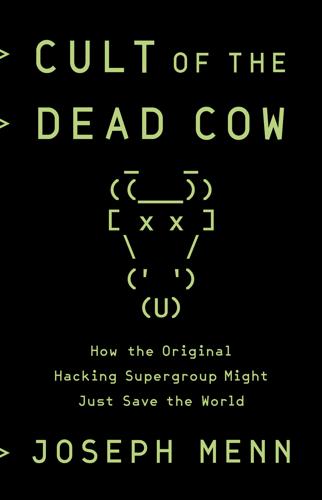
Cult of the Dead Cow: How the Original Hacking Supergroup Might Just Save the World
by
Joseph Menn
Published 3 Jun 2019
Cofounder Brandon Brewer, once known as Sid Vicious, is as straight as it gets: senior vice president of real estate–services firm Republic Title, based in Fort Worth. Sam Anthony went to work as a programmer in a Harvard University lab, then started graduate school there, working on biological models for computation. He earned a PhD in 2018. Along the way, he cofounded a self-driving car technology company, Perceptive Automata. Autonomous vehicles “are super good at knowing where the road is, how fast the car is going, whether something’s a tree or a person,” Sam explained. “They’re miserably bad at solving the psychology problem of guessing what’s in a human’s head. The techniques we developed while I was doing my PhD are perfect for situations where you want machine learning to do something where humans are incredible.”

Brave New Work: Are You Ready to Reinvent Your Organization?
by
Aaron Dignan
Published 1 Feb 2019
If I showed you a house, a car, a dress, or a phone from 1910 and asked you whether it was modern or antique, you’d have a pretty good idea. Because almost everything has changed. But not management. Not really. Information flows up. Decisions flow down. A place for everyone, and everyone in their place. Somehow, amid a period of relentless innovation, including the internet, mobile computing, autonomous vehicles, artificial intelligence, and rockets to space that can land themselves, the way we come together as human beings to solve problems and invent our future has stayed remarkably constant. Which means one of two things is true: either we’ve perfected the way we organize, and we should all submit to the power of the pyramid, or we’re stuck in a Gordian knot of our own design, unable to break free and realize a better way.

The Star Builders: Nuclear Fusion and the Race to Power the Planet
by
Arthur Turrell
Published 2 Aug 2021
The Centre for Fusion Energy, where the magnetic confinement fusion experiment I’m visiting is located, occupies a large portion of the site. Some of the buildings show their age. Many have lackluster squares of glass alternating with dark green panels. In among the aggressive architecture, there are hints of the future. As I walk toward the building that houses Culham’s star machine, several autonomous vehicles pass me, scanning the quiet roads of the facility with mounted radar. I see signs for firms with names like Reaction Engines (reusable space launch vehicles), GeneFirst (molecular diagnostics), and Neuro-Bio (Alzheimer’s treatments). When I get to the lobby of the Culham Centre for Fusion Energy, I find that it’s also a contradiction in time—it resembles a careworn smoking room last redecorated in the 1970s, and yet vivid printed posters showing the “future of fusion” take up one wall.

Dark Matters: On the Surveillance of Blackness
by
Simone Browne
Published 1 Oct 2015
It is through this archive and that of black life after the Middle Passage that I want to further complicate understandings of surveillance by questioning how a realization of the conditions of blackness—the historical, the present, and the historical present—can help social theorists understand our contemporary conditions of surveillance. Put another way, rather than seeing surveillance as something inaugurated by new technologies, such as automated facial recognition or unmanned autonomous vehicles (or drones), to see it as ongoing is to insist that we factor in how racism and antiblackness undergird and sustain the intersecting surveillances of our present order. Patricia Hill Collins uses the term “intersectional paradigms” to signal that “oppression cannot be reduced to one fundamental type, and that oppressions work together in producing injustice.”17 Indebted to black feminist scholarship, by “intersecting surveillances” I am referring to the interdependent and interlocking ways that practices, performances, and policies regarding surveillance operate.

Cloudmoney: Cash, Cards, Crypto, and the War for Our Wallets
by
Brett Scott
Published 4 Jul 2022
Indeed, many of those creepy ideas from Silicon Valley found their way into these circles. Some imagined cars that could not start unless one purchased digital keys from a digital vending machine. Perhaps the car could be remotely stopped by a signal sent from cyberspace (just as an old public telephone would cut you off as you ran out of credit). Others imagined fleets of autonomous vehicles roaming the highways, hiring themselves out for cyber-tokens via DAOs. There were more down-to-earth visions too. Blockchain platforms are said to be ‘trustless’, which is intended to mean that people do not need to be trusted for the system to work. For a techie this is a practical issue rather than an ideological one: even if they believe 99 per cent of humanity is fundamentally good, in a faceless Internet network of 10 million people it might take only one malicious actor to bring the thing down.
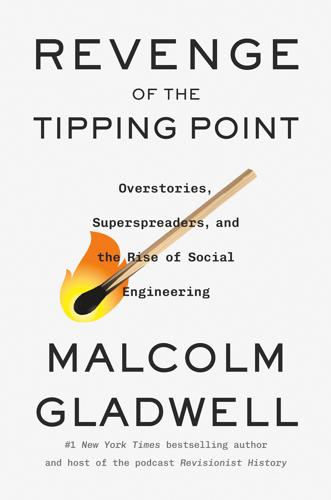
Revenge of the Tipping Point: Overstories, Superspreaders, and the Rise of Social Engineering
by
Malcolm Gladwell
Published 1 Oct 2024
See https://www.upi.com/Archives/1996/03/27/Donald-H-Stedman-can-monitor-how-much-exhaust-is/4961827902800/ The chart of vehicle emissions per decile of drivers in Los Angeles is adapted from “Real-World Vehicle Emissions Measurement,” a presentation by Donald Stedman and Gary A. Bishop at the ARPA-E Powertrain Innovations in Connected and Autonomous Vehicles Workshop: https://arpa-e.energy.gov/sites/default/files/06_Bishop.pdf For the Italian research on how electrifying vehicles would impact emissions, see Matteo Böhm, Mirco Nanni, and Luca Pappalardo, “Gross polluters and vehicle emissions reduction,” Nature Sustainability 5 (June 9, 2022): 699–707. https://www.nature.com/articles/s41893-022-00903-x Denver had such terrible air quality in the 1970s and ’80s that it became infamous for the “brown cloud” hanging over the city.

The Thinking Machine: Jensen Huang, Nvidia, and the World's Most Coveted Microchip
by
Stephen Witt
Published 8 Apr 2025
In Hong Kong, police reported that a finance worker at an architectural firm was duped out of $25 million in corporate funds after his colleagues in a conference call all turned out to be deep-fake clones. The only solution to these problems, technologists advised, was more AI. The large tech firms reoriented their entire business lines toward AI. Microsoft, Meta, Tesla, and Google all announced multibillion-dollar spending initiatives. The automakers promised autonomous vehicles; the defense industry promised autonomous weapons. AI start-ups raised a cumulative $50 billion in 2023. The money went to medicine, to education, to business platforms, to robotics start-ups. The stock market moved sharply higher in anticipation of gains in productivity to come. Prize committees started distributing hardware to the AI pioneers.
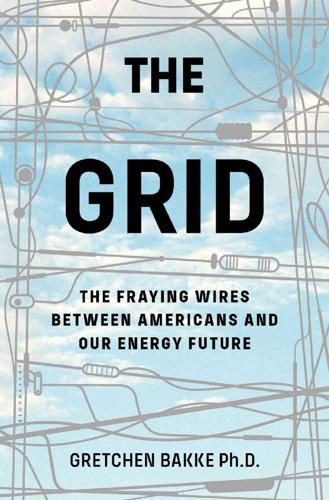
The Grid: The Fraying Wires Between Americans and Our Energy Future
by
Gretchen Bakke
Published 25 Jul 2016
has always been their charm: Though somewhat scalable and somewhat portable, fuel cells suffer from being expensive and from the fact that they do need constant exposure to their fuel (they need to be plugged into natural gas pipelines, for example). it seems, will be electric: Zack Kanter, “Autonomous Cars Will Destroy Millions of Jobs and Reshape U.S. Economy by 2025,” Quartz, May 14, 2015, http://www.nextgov.com/emerging-tech/2015/05/autonomous-cars-will-destroy-millions-jobs-and-reshape-us-economy-2025/112762/. It sounds a little like Marxism: Karl Marx, Critique of the Gotha Program (Rockville, MD: Wildside Press, 2008 [1875]). “when you are getting it fixed”: quoted in Ryan Koronowski, “Why the U.S.
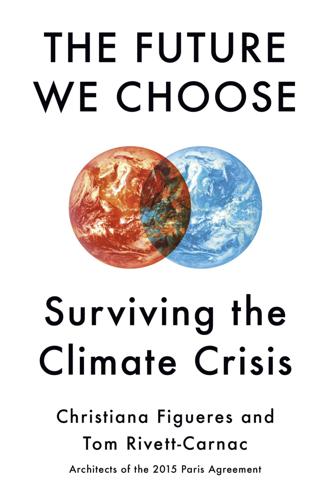
The Future We Choose: Surviving the Climate Crisis
by
Christiana Figueres
and
Tom Rivett-Carnac
Published 25 Feb 2020
Office of the Historian, Department of State, “The Collapse of the Soviet Union,” https://history.state.gov/milestones/1989-1992/collapse-soviet-union. 16. “Futurama: ‘Magic City of Progress’ ” in World’s Fair: Enter the World of Tomorrow, Biblion, http://exhibitions.nypl.org/biblion/worldsfair/enter-world-tomorrow-futurama-and-beyond/story/story-gmfuturama. 17. Abby Norman, “Aliens, Autonomous Cars, and AI: This Is the World of 2118,” Futurism.com, January 11, 2018, https://futurism.com/2118-century-predictions; Matthew Claudel and Carlo Ratti, “Full Speed Ahead: How the Driverless Car Could Transform Cities,” McKinsey & Company, August 2015, https://www.mckinsey.com/business-functions/sustainability/our-insights/full-speed-ahead-how-the-driverless-car-could-transform-cities. 18.

On the Future: Prospects for Humanity
by
Martin J. Rees
Published 14 Oct 2018
But what is not so clear is whether automated vehicles will ever be able to operate safely when confronted with all the complexities of routine driving—navigating small, winding roads and sharing city streets with human-driven vehicles and cycles and pedestrians. I think there will be public resistance to this. Would a fully autonomous car be safer than a car with a human driver? If an object obstructs the road ahead, could it distinguish between a paper bag, a dog, or a child? The claim is that it cannot infallibly do so but will do better than the average human driver. Is that true? Some would say yes. If the cars are wirelessly connected to one another, they would learn faster by sharing experiences.
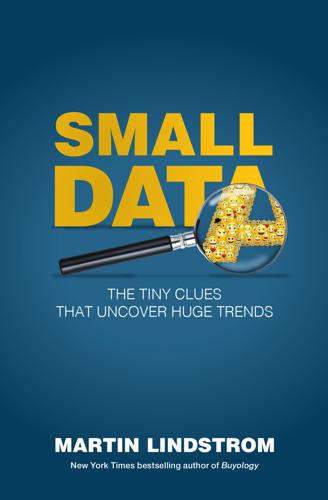
Small Data: The Tiny Clues That Uncover Huge Trends
by
Martin Lindstrom
Published 23 Feb 2016
Later, another self-driving Google car found that it wasn’t able to advance through a four-way stop, as its sensors were calibrated to wait for other drivers to make a complete stop, as opposed to inching continuously forward, which most did. Noted the Times, “Researchers in the fledgling field of autonomous vehicles say that one of the biggest challenges facing automated cars is blending them into a world in which humans don’t behave by the book.”15 As accurate, then, as big data can be while connecting millions of data points to generate correlations, big data is often compromised whenever humans act like, well, humans.

The Myth of Artificial Intelligence: Why Computers Can't Think the Way We Do
by
Erik J. Larson
Published 5 Apr 2021
And there are similar real-world examples, including autonomous navigation systems on self-driving cars that have misclassified a school bus as a snowplow, and a turning truck as an overpass. Machine learning is inductive because it acquires knowledge from observation of data. The technique known as deep learning is a type of machine learning—a neural network—that has shown much promise in recognizing objects in photos, boosting performance on autonomous vehicles, and playing seemingly difficult games. For example, Google’s DeepMind system learned to play a number of classic Atari video games to much fanfare. It was heralded as general intelligence, because the same system was able to master different games using the so-called deep reinforcement learning approach that powered AlphaGo and AlphaZero.

Volt Rush: The Winners and Losers in the Race to Go Green
by
Henry Sanderson
Published 12 Sep 2022
The sediment meanwhile is expelled out of giant vents at the back of the vehicle. Van Nijen took me to the back of the vehicle where the electronics were encased in thick titanium and bound together with large bolts, the only part that had to be kept dry at the immense pressures of the deep sea. Patania reminded me of a larger version of the autonomous vehicles used by the US military in Iraq to disarm bombs. The absence of any human on board was jarring, prompting me to think about the miners on land who will be replaced. Not that this robot would care. Van Nijen told me the pressure is so great in the deep sea that there is no way to replicate it onshore in a tank.

Code Dependent: Living in the Shadow of AI
by
Madhumita Murgia
Published 20 Mar 2024
Its rules were invisible and capricious, the boss inhumane, and Armin’s voice was powerless. It was a surreal loop. Armin had moved to hilly Pittsburgh from Berkeley in 2019, to take a job at a self-driving car company Argo.ai, a start-up funded by Ford and Volkswagen. He led the team that designed the user interface between human passengers and the autonomous vehicle. He spent hours with drivers inside cars, observing their behaviours, their gripes, their decision-making, and used that psychology to design the AI system’s responses. He was a human–machine translator. As he developed software for self-driving cars, Armin became aware that he was working on a two-tonne moving death-machine being tested on real roads, and a wrong line of code could literally kill someone.
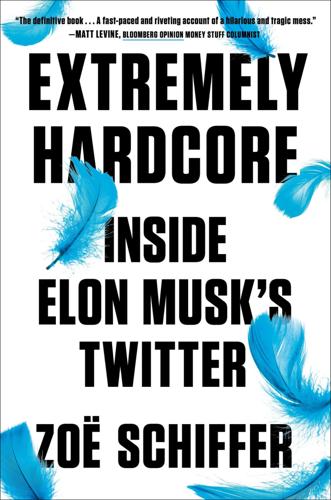
Extremely Hardcore: Inside Elon Musk's Twitter
by
Zoë Schiffer
Published 13 Feb 2024
Hotz liked simplicity. What he saw at Twitter was unnecessary complexity. The hacker believed that fifty people could build and maintain the platform pretty easily. It sounded hubristic, but hubris had served Hotz well so far. He’d hacked the iPhone when everyone said it couldn’t be done, then took on autonomous vehicles to compete with tech giants like Uber and Apple when everyone said he was crazy. Twitter engineers were not impressed. Hotz had good ideas but struggled to put them into action, according to Randall Lin. He could also be kind of annoying. Dave Beckett, a site reliability engineer, recalled seeing a Slack message from Hotz at 10 p.m., asking if there was dinner in the San Francisco office.

Soft City: Building Density for Everyday Life
by
David Sim
Published 19 Aug 2019
Instead, we need to build relationships. As we face climate change, segregation, congestion, and rapid urbanization, we need to build better relationships with the planet, with people, and with place. Building stand-alone, air-conditioned buildings up in the sky or in gated communities, or building more roads and having autonomous cars won’t connect us to the global challenges or to each other, so that we can ultimately deal with them together. The town or city is a system of relationships, a place where multiple, overlapping systems of different relationships are co-located—public and private, common and individual, formal and informal.
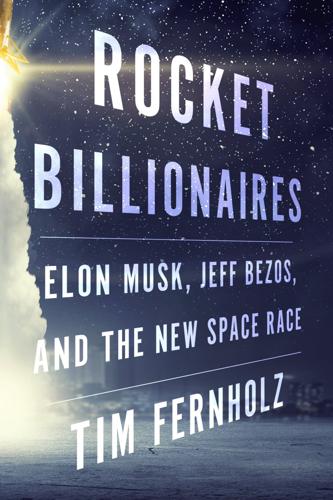
Rocket Billionaires: Elon Musk, Jeff Bezos, and the New Space Race
by
Tim Fernholz
Published 20 Mar 2018
“In the culture of NASA, we were going to do a big testing program. Elon Musk just tried it. And if it works, it works.” In 2011, after the company had flown its Falcon 9, SpaceX hired an engineer named Lars Blackmore from the Jet Propulsion Lab. A product of MIT, Blackmore was an expert in designing software for autonomous vehicles to navigate extreme environments; one academic project had guided a deep-sea submersible robot, and at JPL he wrote a critical algorithm to guide landers arriving on Mars. His graduate adviser, a NASA veteran himself, said Blackmore would have made a tremendous professor, but he went to SpaceX because it offered “an opportunity for the current generation of engineers to make their vision real.”
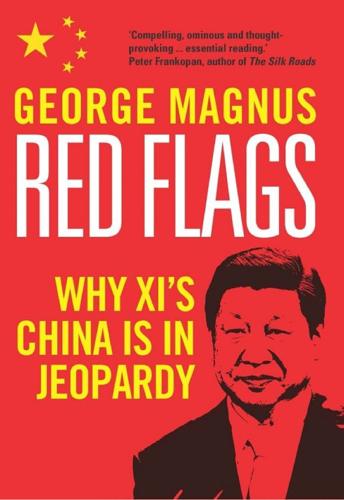
Red Flags: Why Xi's China Is in Jeopardy
by
George Magnus
Published 10 Sep 2018
Xiaomi, which designs and sells smartphones, mobile apps and laptops is a global top five company in smartphones. Alibaba, the e-commerce giant, has a cloud subsidiary that is working on smart cities. Tencent and Baidu, which are internet services companies, are exploring medical imaging and facial recognition, and autonomous vehicles, respectively. Lenovo computers, Air China, and Moutai, the beverage company, also exemplify Chinese companies that got big in China and turned their attention to foreign markets. A strong domestic focus and large home-market size have certainly helped these and other companies, and there’s no question that they have excelled in more efficient production and in adapting imported technologies and products to local consumer tastes.

Ghost Work: How to Stop Silicon Valley From Building a New Global Underclass
by
Mary L. Gray
and
Siddharth Suri
Published 6 May 2019
The company’s Smart Glasses, for example, include a computer chip, cameras, and sensors that can project a 3-D map or repair manuals and can scan for signs of dangerous heat and pressure buildup in piping. It can help an on-site worker patch a complicated hydraulic system with the expertise of an on-demand pipe fitter pitching in. As autonomous vehicles advance, Daqri’s Smart Glasses could be the headpiece of an industrial robot augmented by an on-demand worker controlling robotic arms to complete a dangerous repair. Could BP’s Deepwater Horizon environmental disaster of 2010 have been prevented with a 24/7 on-demand crew tasked with taking turns to monitor all industrial systems and repair them as sensors brought attention to any fitting starting to wear or needing to be replaced?

An Ugly Truth: Inside Facebook's Battle for Domination
by
Sheera Frenkel
and
Cecilia Kang
Published 12 Jul 2021
The company’s most popular utility may not be status updates and shares, but something like blockchain payments for retail goods or the production and distribution of blockbuster entertainment. With $55 billion in cash reserves, the company has endless options to buy or innovate its way into new lines of business, as Google has with autonomous vehicles and Apple with health devices. Even during his annus horribilis of 2020, Zuckerberg was looking toward the future. In a quest to break into the lucrative field of corporate communications software, in late November, Facebook bought Kustomer for $1 billion. The popularity of the Zoom tool during the pandemic had rankled, and Zuckerberg challenged employees to come up with a videoconferencing rival.

Artificial Whiteness
by
Yarden Katz
,” Weizenbaum explained that the military presents its aims in terms vague enough to cover every branch of AI, and practitioners then formulate all their projects to fit within the militaristic frame. As he pointed out, the three wings of DARPA’s Strategic Computing program—the “battle management system,” the “autonomous vehicle,” and the “pilot’s assistant”—were meant to capture “almost every branch of work in AI.”69 Contrary to many of his colleagues, Weizenbaum rejected the idea that the military’s vague rubric gives practitioners intellectual freedom to pursue whatever they like. (This was in fact one of the notions that SFTP worked hard to refute.)

MegaThreats: Ten Dangerous Trends That Imperil Our Future, and How to Survive Them
by
Nouriel Roubini
Published 17 Oct 2022
On the economic side the alarm bells rang in the United States in 2015 when China presented its new industrial policy plan named Made in China 2025; this plan aims to use vast subsidies and financial incentives to move China away from low valued-added and labor-intensive manufacturing to leadership in the key industries of the future: information technologies (including AI, the Internet of Things, smart appliances, semiconductors), robotics (including automation and machine learning), green energy and green vehicles (including EVs and autonomous vehicles), aerospace equipment, ocean engineering and high-tech ships, railway equipment, power equipment, new materials, biotech, medicine and medical devices, and agriculture machinery. On top of that, in 2017 China presented its “New Generation Artificial Intelligence Plan” that aims to make China the world leader in AI by 2030.
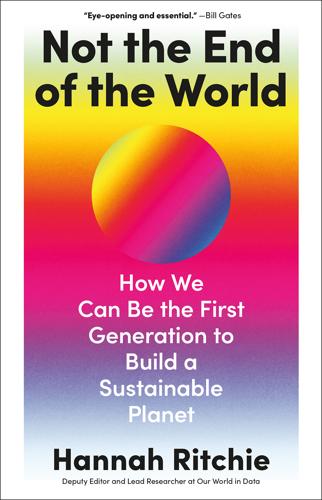
Not the End of the World
by
Hannah Ritchie
Published 9 Jan 2024
They could be built around pedestrians and cyclists, not cars. In my dream world, there would be no need to own a car, especially if it does nothing 23 hours a day. We could create networks of driverless, low-carbon Ubers that serve the city. When you do need a ride, press a button on an app, and a clean, autonomous vehicle will swing by to pick you up. If governments and planners think about this carefully, this could even be a form of public transport. The health and economic benefits would be massive. (6) Ditch fossil fuels for renewables and nuclear Cleaning up our coal power stations and putting filtration technologies in our cars has got us pretty far.

50 Future Ideas You Really Need to Know
by
Richard Watson
Published 5 Nov 2013
Think of automated disease diagnosis and surgery, military planning and battle command, customer-service avatars, artificial creativity and autonomous robots that predict then respond to crime (a “Department of Future Crime”—see also Chapter 32 and Biocriminology). Self-driving cars Gone are the days when Google was just a search engine and cars needed a driver. Google’s autonomous car project, started by Sebastian Thrun of Stanford Artificial Intelligence Laboratory, uses a Toyota Prius equipped with sensors to follow a GPS route all by itself. A robotics scientist sits in the car, but doesn’t actually drive it. Already, seven cars have traveled 1,600km (1,000 miles) with no driver and 225,000km (140,000 miles) with occasional human intervention.

Long Game: How Long-Term Thinker Shorthb
by
Dorie Clark
Published 14 Oct 2021
But if you push when you’re able and you do the hard work of carving out 20% time, you’re often in rare company—and your experience has the potential to be transformative. That’s what happened for Adam Ruxton, the head of marketing for a robotics project at X, formerly known as Google X, the company’s “moon shot factory,” which has launched initiatives around everything from delivery drones to autonomous cars. A native of Ireland, Adam started at Google’s Dublin office in 2011. By the end of his first year, he was already volunteering part of his 20% time to help the London office think through how to introduce Google apps in different European countries. He saw it as a form of professional development.
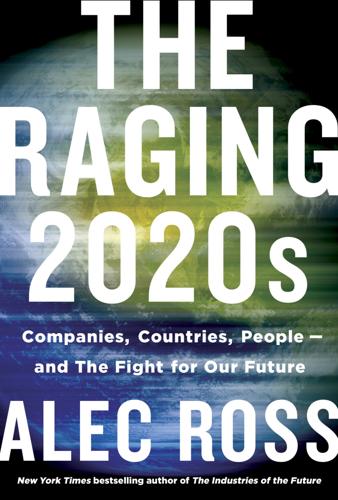
The Raging 2020s: Companies, Countries, People - and the Fight for Our Future
by
Alec Ross
Published 13 Sep 2021
As soon as the plan was released, the government and private sector kicked into gear. Local governments started pouring funds into AI start-ups, and industry partnerships began to form. The following month, the government drafted a “national AI team,” selecting four domestic companies to take the lead in strategic AI fields including autonomous vehicles (Baidu), medical imaging (Tencent), natural language processing (iFLYTEK), and smart city technology (Alibaba). By August 2019, the team had expanded to fifteen members, each with its own area of expertise. These national champions are granted special access to government funds and databases.

The Human City: Urbanism for the Rest of Us
by
Joel Kotkin
Published 11 Apr 2016
DAVIES, Alan. (2012, March 20). “Is suburban living a neurotic condition?,” Crikey, http://blogs.crikey.com.au/theurbanist/2012/03/20/is-suburban-living-a-neurotic-condition/. DAVIES, Alex. (2015, March 9). “Self-Driving Cars Will Make Us Want Fewer Cars,” Wired, http://www.wired.com/2015/03/the-economic-impact-of-autonomous-vehicles/. DAVIS, Bob and PAGE, Jeremy. (2011, March 7). “China’s Focus Turns to its Poor,” Wall Street Journal, http://www.wsj.com/articles/SB10001424052748703362804576184364247082474. de BARY, William Theodore, CHAN, Wing-Tsit and WATSON, Burton. (1960). The Sources of Chinese Tradition, New York: Columbia University Press.
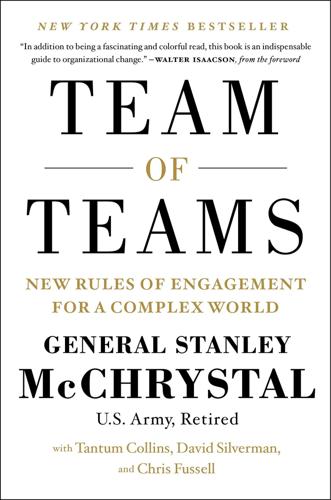
Team of Teams: New Rules of Engagement for a Complex World
by
General Stanley McChrystal
,
Tantum Collins
,
David Silverman
and
Chris Fussell
Published 11 May 2015
The Autonomous Intersection Management project is conducted by Professor Peter Stone at the Artificial Intelligence Laboratory in the University of Texas at Austin’s Department of Computer Science. Instead, cars going in all four . . . “Computer Scientist Developing Intersections of the Future with Fully Autonomous Vehicles,” University of Texas News, February 20, 2012, http://www.utexas.edu/news/2012/02/20/autonomous_intersec tion/. 25 percent of accidents . . . “No Lights, No Signs, No Accidents: Future Intersections for Driverless Cars,” Reuters Video, March 22, 2012, http://www.reuters.com/video/2012/03/22/no-lights-no-signs-no-accidents-future-i?
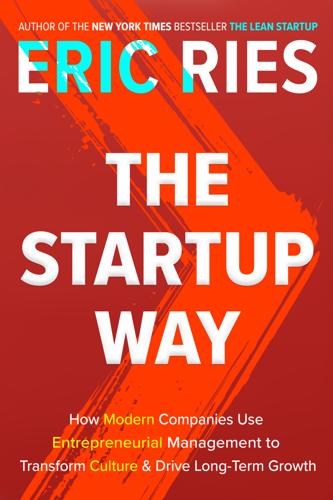
The Startup Way: Making Entrepreneurship a Fundamental Discipline of Every Enterprise
by
Eric Ries
Published 15 Mar 2017
Toyota has become world-leading in its ability to mass-produce high-quality products on time, on budget, and with industry-leading cost. The company has had some very successful innovations, like the Prius hybrid drive technology, but at the time of my meeting, they had not had the same level of success incorporating digital platform–style innovations into their products. As consumer preferences and autonomous vehicle technology both evolve, this threatens to become a company-defining vulnerability. In getting the original project approved (you’ll learn more about it in Chapter 6), I met with leaders up and down the corporate hierarchy, culminating in a sit-down with one of Toyota’s most senior leaders, Shigeki Tomoyama (who at the time was the chief officer of the IT and ITS groups).

Rage Inside the Machine: The Prejudice of Algorithms, and How to Stop the Internet Making Bigots of Us All
by
Robert Elliott Smith
Published 26 Jun 2019
Throughout the new ‘gig’ economy, there are people working with limited protections, responding to algorithmic management. The drivers of services like Deliveroo and Uber have their work assigned by algorithms and do the part of their task that the algorithms simply cannot do: speedy delivery to the door, in navigation situations (on bike and on foot) that are unlikely to be effectively addressed by autonomous vehicles anytime soon (although that, too, is wildly promised). Likewise, Amazon warehouse workers select products from shelves that would be difficult for robots to identify or handle, but feed an otherwise mechanized system of sales, order and delivery (excepting those final delivery steps, which are also increasingly done by algorithmically controlled humans).
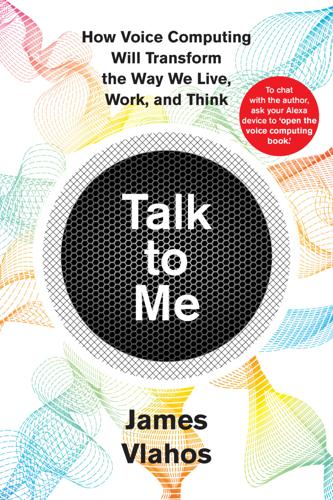
Talk to Me: How Voice Computing Will Transform the Way We Live, Work, and Think
by
James Vlahos
Published 1 Mar 2019
For the first edition of the annually recurring contest, more than one hundred university teams applied to compete, and Amazon selected the fifteen squads whose proposals seemed the most promising. If any team actually succeeded, its members would snare academic glory and the promise of brilliant future careers. (Consider that alums of the DARPA Grand Challenges, an early set of autonomous-vehicle competitions, went on to run the self-driving-car divisions of Google, Ford, Uber, and General Motors.) The victors would also walk away with the Alexa Prize itself—a $1 million purse. The Alexa Prize is not the only contest that tries to squeeze more humanlike rapport out of the world’s chatbots; recall the Loebner Prize, the one that Mauldin entered, from chapter 4.

Big Data at Work: Dispelling the Myths, Uncovering the Opportunities
by
Thomas H. Davenport
Published 4 Feb 2014
Kerem Tomak, in “Two Expert Perspectives on High-Performance Analytics,” Intelligence Quarterly (a SAS publication), 2nd quarter (2012): 6. 5. The interview of this manager, who wished to remain anonymous, was conducted by the author by telephone on March 19, 2013. 6. Tom Vanderbilt, “Let the Robot Drive: The Autonomous Car of the Future Is Here,” Wired, January 20, 2012, http://www.wired.com/magazine/2012/01/ ff_autonomouscars/. 7. Joe Jimenez interview with Geoffrey Colvin, “Joe Jimenez Lays Out His Path to Business Longevity,” Fortune, March 21, 2013, http://money.cnn.com/2013/03/21/ news/companies/novartis-joe-jimenez.pr.fortune/index.html. 8.
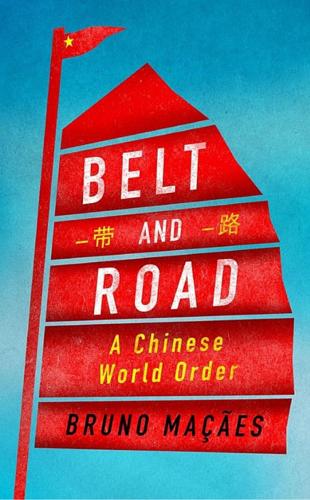
Belt and Road: A Chinese World Order
by
Bruno Maçães
Published 1 Feb 2019
“We both agree that Chinese companies should be united and must not be provoked by outsiders,” he added, before speaking about his company’s efforts over the past thirty years and expressing zero tolerance for any questioning of the loyalty of the “national brand.” The dispute highlights how much national champions are expected to benefit from the definition of which technologies will be used to power the coming revolution in autonomous cars and the internet of things. * * * Because Germany’s top firms have become so dependent on the Chinese market, the government in Berlin has avoided confronting China head-on.16 The United States took longer to react, but when it finally did the response was considerably more aggressive. The ongoing dispute was initially centered around the country’s trade deficit with China but quickly turned to Made in China 2025.
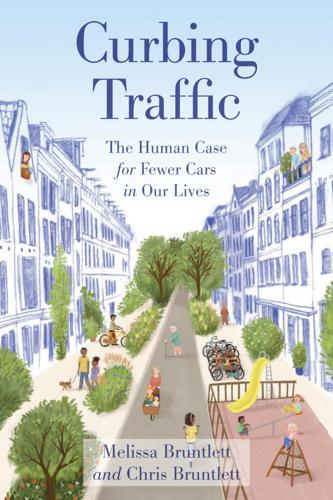
Curbing Traffic: The Human Case for Fewer Cars in Our Lives
by
Chris Bruntlett
and
Melissa Bruntlett
Published 28 Jun 2021
This leads to one more reason why social trust can start dropping as driving becomes more prevalent on your streets. “If you are in a car, with this traffic light issue, you’re never in a prisoner’s dilemma, because this situation is solved by an external algorithm,” reveals Te Brömmelstroet. And that state of affairs will only be worsened by the (seemingly inevitable) introduction of autonomous cars: “Imagine all of us being in self-driving vehicles. The algorithm of the self-driving car solves all of these conflicts by itself. Imagine doing that for a year, and what that would do to your sense of trust of others.” On a smaller scale, this is already happening with ride-hailing services, such as Uber and Lyft, gradually diminishing our capacity to trust, and willingness to go out of our way to help one another.

The Price of Time: The Real Story of Interest
by
Edward Chancellor
Published 15 Aug 2022
Gordon’s Northwestern colleague Joel Mokyr suggested that a ‘shortfall of imagination [is] largely responsible for much of today’s pessimism’. Mokyr listed a number of revolutionary new technologies then under development, including 3D printing, graphene and genetic engineering, to which might be added autonomous cars and clean energy.19 Finance writer William Bernstein accused secular stagnationists of conflating what they couldn’t conceive with that which was not possible.20 Hansen made the same mistake. The most reliable prediction, Bernstein concluded, is to assume that past economic trends continue. Hansen argued that a slowdown in economic growth would produce an excess of savings over investment.
…
Low interest rates have messed with the temporal properties of the market and created a wormhole in time and in Tesla’s stock … It will take years, maybe even a decade, for Tesla to produce enough cars to justify its valuation. Today’s market valuation assumes it has already happened – that the capital has been raised and spent and that it cost nothing.20 In the era of ultra-low interest rates, time had no cost. Investors’ appetite for concept stocks at nosebleed valuations extended well beyond autonomous cars (Tesla) to animal-free protein (Beyond Meat), biotech (gene therapy stocks), Chinese internet (Alibaba, Tencent) and cloud computing. Investors were flying high. During an outbreak of ‘marijuana madness’ in September 2018, a Canadian cannabis producer was briefly valued at more than American Airlines.21 CRYPTO BUBBLES As the world’s financial system imploded in the summer of 2008, an anonymous software engineer circulated a paper containing a cure for all monetary ills.

With a Little Help
by
Cory Efram Doctorow
,
Jonathan Coulton
and
Russell Galen
Published 7 Dec 2010
For me and for Cory this means allowing people to share our work freely, and to re-use it to create new things. The first time the concept was explained to me I felt as though someone had set my brain on fire - it was the most exciting idea I had ever heard. 32 In my head, songs became little autonomous vehicles that I could release into the wild, letting them bounce around and find their way to the people who would enjoy them. It was a way to let this new "Internet" thing do all the heavy lifting, an organic and efficient method of targeting an audience of fans who did not yet know they were fans.

The Upstarts: How Uber, Airbnb, and the Killer Companies of the New Silicon Valley Are Changing the World
by
Brad Stone
Published 30 Jan 2017
I think that might happen. We’re just at the beginning. But when you feel that, that’s going to be a big deal.” “This will be because of carpooling services like UberPool and Lyft Line? Or driverless cars?” I asked. A few weeks before, the company had begun testing fourteen Ford Fusions tricked out with autonomous vehicle technology on the streets of Pittsburgh. It had also recently announced a partnership with Volvo to develop driverless-car technology and had acquired Otto, a San Francisco–based startup run by former Google engineers that was working on driverless trucks.1 “All these things that are going to happen, whether it’s human-driven transportation, carpooling, commuting with carpooling, driverless cars,” Kalanick said, “cars are coming off the road.

Exponential: How Accelerating Technology Is Leaving Us Behind and What to Do About It
by
Azeem Azhar
Published 6 Sep 2021
It was late 2019, and US president Donald Trump had spent much of the previous two years tweeting increasingly bellicose denunciations of the Chinese government. At the same time, the White House had been progressively ratcheting up tariffs on Chinese imports to the US. This looked like bad news for Yu’s start-up, Pix Moving. Based in Guiyang, a city 1,000 kilometres to the north-west of Shenzhen, the firm makes the chassis for a new class of autonomous vehicle. The tariffs made everything more expensive. A lesser entrepreneur may have had to raise prices for his first customers. Not so Yu. He had a solution: Pix Moving was using only the most modern manufacturing methods – ‘dematerialised’ techniques. Rather than exporting cars, Yu explained, they ‘export the technique that is needed to produce the cars’.1 Vehicles are not loaded onto container ships and sent to their destination.
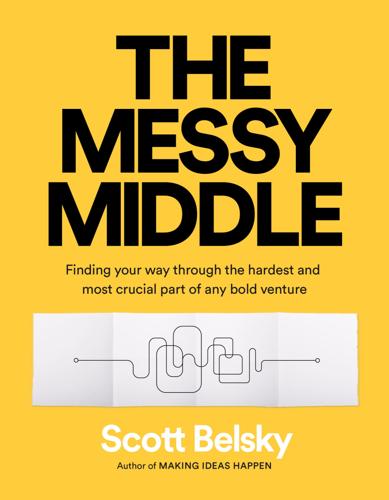
The Messy Middle: Finding Your Way Through the Hardest and Most Crucial Part of Any Bold Venture
by
Scott Belsky
Published 1 Oct 2018
The historic decision in 2015 to rename the entire company “Alphabet” and treat Google itself as just one of many companies in the holding company was an effort to structurally protect new projects with longtime horizons as independent companies outside of Google’s operating business. As a result, you get companies like Waymo pursuing autonomous-vehicle technology. These portfolio companies are liberated from the need to add near-term value and rationalize their existence on a quarterly basis. On a smaller scale, some companies will separate certain teams in terms of who they report to, where they are physically located, and how they are measured to provide protection against the quarterly drive for profits and shorter-term impact.

Them and Us: How Immigrants and Locals Can Thrive Together
by
Philippe Legrain
Published 14 Oct 2020
The OECD estimates that only 9 percent of jobs in twenty-one rich OECD countries are fully automatable.7 Whatever the correct figure, economies have previously adapted to huge technological changes that automated many tasks, such as the deployment of electricity and the popularisation of personal computers (PCs), without incurring job losses overall; new and better jobs were also created. Jobs tend to consist of a number of tasks, some of which may be readily automatable, others not. Fully autonomous vehicles, for instance, may do away with the need for many human drivers – although aeroplanes that are capable of flying on autopilot still have human pilots. But while in some cases AI will fully substitute for human labour, they will often complement each other. For instance, AI may make it easier and faster to collect and process data about a business’s logistic operations, making managers more productive, not replacing them.

Think Like a Rocket Scientist: Simple Strategies You Can Use to Make Giant Leaps in Work and Life
by
Ozan Varol
Published 13 Apr 2020
Here’s an example.11 If your goal is to improve car safety, you can make gradual improvements to the design of a car to better protect human life in an accident. But if your goal is a moonshot of eliminating all accidents, you must start with a blank slate and question all assumptions—including the human operator behind the wheel. This first-principles approach paves the way for the possibility of autonomous vehicles. Consider also the planned moonshots of SpaceX. If the company’s aim were to simply put satellites into Earth orbit, there would have been no reason to do things differently. The company would have relied on the same technology that NASA had been using since the 1960s. There’s little reason to reduce the cost of rocket launches by a factor of ten, as SpaceX is on its way to doing, unless you’re aiming for a moonshot.

Visual Thinking: The Hidden Gifts of People Who Think in Pictures, Patterns, and Abstractions
by
Temple Grandin, Ph.d.
Published 11 Oct 2022
Rahu, M. “Health Effects of the Chernobyl Accident: Fears, Rumors and Truth.” European Journal of Cancer 39 (2003): 295–99. Rausand, M. Risk Assessment: Theory, Methods, and Applications. Hoboken, NJ: Wiley, 2011. Razdan, R. “Temple Grandin, Elon Musk, and the Interesting Parallels between Autonomous Vehicles and Autism.” Forbes, June 7, 2020. Rice, J. “Massachusetts Utility Pleads Guilty to 2018 Gas Explosion.” ENR, Engineering News- Record, March 9, 2020. Robison, P. Flying Blind: The MAX Tragedy and the Fall of Boeing. New York: Doubleday, 2021. Ropeik, D. “How Risky Is Flying?” Nova, PBS. https://www.pbs.org/wgbh/nova/planecrash/risky.html/.
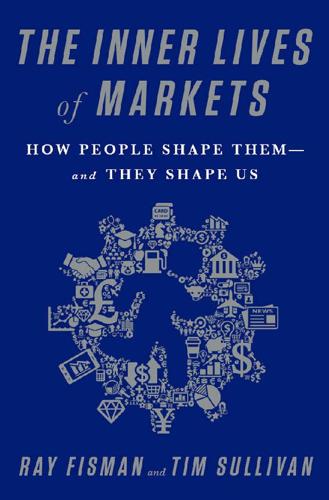
The Inner Lives of Markets: How People Shape Them—And They Shape Us
by
Tim Sullivan
Published 6 Jun 2016
More recently, the much-vaunted internet of things is bringing us yet another generation of platform business models, some amazing, some terrifying, and some, like internet-enabled cars, a bit of both. As cars move from being internal combustion engines with wheels to software platforms that are connected to the internet and to one another, we can imagine all sorts of potential for them, some of which will make our lives better (fewer accidents with autonomous cars and more apps that plug into them) and some of which will make us even more vulnerable (long-distance software hacks). But regardless, they’ll be governed by the same rules that make other platforms tick. Currently, entrepreneurs and venture capitalists—spurred by the success of Facebook, LinkedIn, Uber, and many others—are pouring money into new platform businesses.

The Smartphone Society
by
Nicole Aschoff
Instead of reveling in the conveniences and connections brought by our smartphones, society is plagued with doubts about the dystopian future we’re creating. How could we not worry? Every day, ordinary people are presented with fresh evidence of their near-term irrelevance. Stories of self-teaching algorithms, autonomous cars, expert reports predicting the disappearance of at least half the world’s jobs in the next couple of decades due to automation and robots abound. It’s a wonder we don’t stay in bed, scrolling through our feeds, awaiting the Singularity in dignified repose. Indeed, a chorus of warnings from tech naysayers and handwringers suggests we should be terrified of what a Silicon Valley future holds.
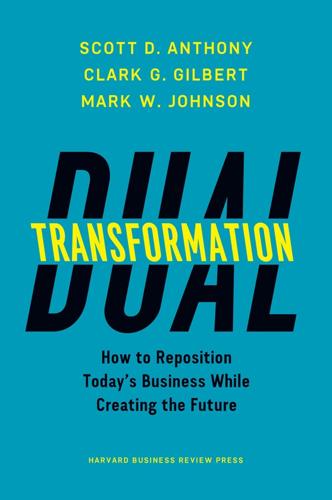
Dual Transformation: How to Reposition Today's Business While Creating the Future
by
Scott D. Anthony
and
Mark W. Johnson
Published 27 Mar 2017
Instead of owning a car, they can participate in a fractional ownership program like Zipcar (purchased by Avis Budget Group for $500 million in 2013). Then in 2005, Sebastian Thrun, coinventor of Google Street View, led a team whose robotic car won a $2 million prize from the US Department of Defense. Over the next decade Google invested to further develop the technology behind self-driving cars and to change local regulations to welcome autonomous cars. In 2014 it introduced a new car with no wheels and no pedals. In August 2016, Singapore’s first autonomous taxi debuted on the roads of a cluster of buildings with far-out names like Fusionopolis. Scenes in movies with legions of driverless cars—such as I, Robot and Minority Report—increasingly seem less like science fiction and more like a preview of the next decade.
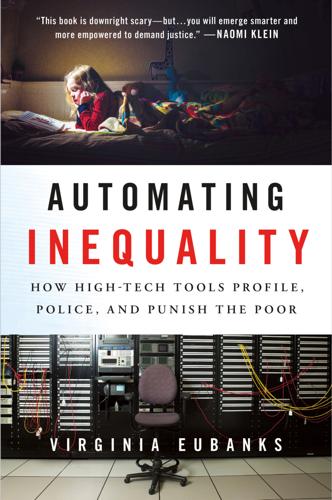
Automating Inequality
by
Virginia Eubanks
I spent much of my November 2016 trip to Pittsburgh trying to spy one of Uber’s famous driverless cars. I didn’t have any luck because the cars are found mostly downtown and in the Strip District, neighborhoods that are gentrifying quickly. I spent my time in Duquesne, Wilkinsburg, the Hill District, and Homestead. I didn’t see a single one. The autonomous cars use a vast store of geospatial data collected from Uber’s human drivers and a two-person team of onboard engineers to learn how to get around the city and interact with other vehicles, bikes, and pedestrians. Asked by Julia Carrie Wong of The Guardian how he felt about his role in Uber’s future, Rob Judge, who had been driving for the company for three months, said, “It feels like we’re just rentals.
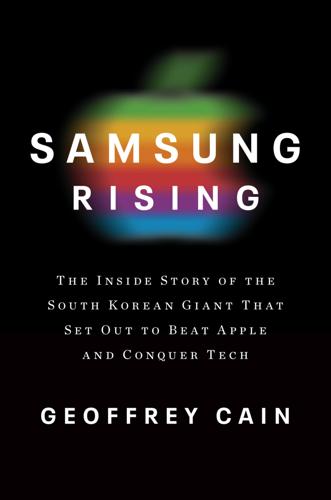
Samsung Rising: The Inside Story of the South Korean Giant That Set Out to Beat Apple and Conquer Tech
by
Geoffrey Cain
Published 15 Mar 2020
The memory semiconductor market—the bedrock of Samsung’s empire—was volatile and crowded. Samsung announced a new expansion called “Semiconductor Vision 2030.” It pledged an investment of $115 billion in another promising field of semiconductors—non-memory chips—that power rising technologies like autonomous vehicles, medical robots, and devices that depend on artificial intelligence. “The government will actively support this mission,” South Korean President Moon announced at a Samsung semiconductor plant. “As you asked, Samsung will become the first in the non-memory sector as well as in the memory sector,” Jay told President Moon.

The Wires of War: Technology and the Global Struggle for Power
by
Jacob Helberg
Published 11 Oct 2021
All told, 5G could inject $12 trillion into the global economy by 2035 and add 22 million jobs just in the United States.120 With good reason, 5G has been hailed as “the central nervous system of the 21st-century economy.”121 Whoever presides over that central nervous system could have unprecedented control over virtually everything in our lives—who reads our emails and texts, how our homes operate, where our autonomous vehicles are going. Not to mention that properly transmitting 5G signals will require millions of antennas and cell relays—at least one per city block, by some estimates—exponentially increasing opportunities for surveillance. That’s where things really get scary. Because the undisputed leader in 5G technology isn’t America’s Qualcomm, Sweden’s Ericsson, or Finland’s Nokia.
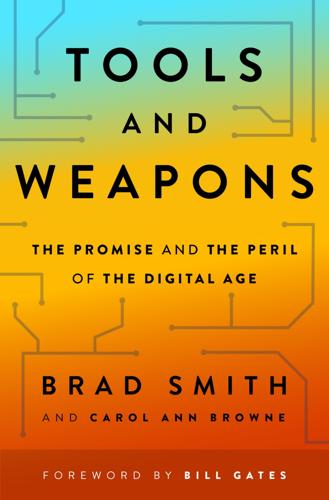
Tools and Weapons: The Promise and the Peril of the Digital Age
by
Brad Smith
and
Carol Ann Browne
Published 9 Sep 2019
If a city loses its electricity, telephones, gas lines, water system, and internet, it can be thrown back into something that can feel like the Stone Age. If it’s winter, people may freeze. If it’s summer, people may overheat. Those who rely on medical devices to survive could lose their lives. And in a future with autonomous vehicles, imagine a cyberattack that penetrates automobile control systems as cars barrel down the highway. All these are sobering reminders of the new world we live in. Following NotPetya, Maersk took the unusual step of reassuring the public that its ships remained under the control of their captains.

The Powerful and the Damned: Private Diaries in Turbulent Times
by
Lionel Barber
Published 5 Nov 2020
To reinforce the AI point, Google has arranged for me and my colleague Richard Waters to take a trip down the highway in a self-driving car, a fat white vehicle with a large piece of navigation kit on the roof. We strap ourselves in, a human driver guides us down a few streets and then the machines take over. As we fly down the highway, I catch a glimpse of the future. A real car draws up in the outside lane. So fascinated by our autonomous vehicle is the driver that he briefly swerves into another lane. TUESDAY, 11 SEPTEMBER Super-early breakfast with John Doerr of Silver Lake, one of the Valley’s best-known venture capitalists. Our meeting gives me further confirmation that the worlds of tech and media are changing faster than I’ve realised.
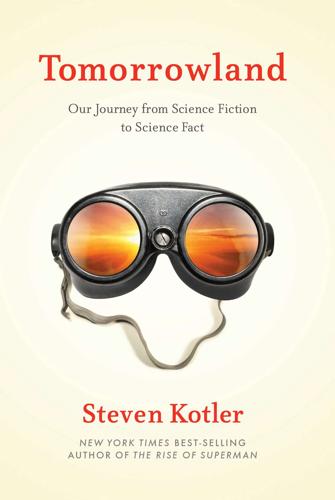
Tomorrowland: Our Journey From Science Fiction to Science Fact
by
Steven Kotler
Published 11 May 2015
If so, consider that since the turn of the twenty-first century, rapidly accelerating technology has shown a distinct tendency to turn the impossible into the everyday in no time at all. A few years back, IBM’s Watson, an artificial intelligence, whipped the human champion, Ken Jennings, on Jeopardy. As we write this, soldiers with bionic limbs are fighting our enemies and autonomous cars are driving down our streets. Yet most of these advances are small in comparison to the great leap forward currently underway in the biosciences — a leap with consequences we’ve only begun to imagine. More to the point, consider that the Secret Service is already taking extraordinary steps to protect presidential DNA.

The Story of Crossrail
by
Christian Wolmar
Published 5 Sep 2018
His previous books include The Subterranean Railway, a history of the London underground, Fire and Steam: How the Railways Transformed Britain, To the Edge of the World: The Story of the Trans-Siberian Railway and Railways and the Raj: How the Age of Steam Transformed India. His other work includes an analysis of transport policy, Are Trams Socialist?, and a debunking of the myths around autonomous cars, Driverless Cars: On a Road to Nowhere. Find me on Twitter Visit my website An Invitation from the Publisher Apollo is an imprint of Head of Zeus. We hope you enjoyed this book. We are an independent publisher dedicated to discovering brilliant books, new authors and great storytelling.

How to Fix the Future: Staying Human in the Digital Age
by
Andrew Keen
Published 1 Mar 2018
And as a tech company, every company is now, like it or not, in competition with every other tech company. In the automotive industry, for example, one of the most pressing challenges for German car manufacturers is to determine where they will fit in the so-called software stack that will empower self-driving vehicles. In a new ecosystem driven, so to speak, by autonomous cars, their challenge is to avoid becoming the dumb commodified hardware at the bottom of the stack in an economy where, as you’ll remember Marc Andreessen saying, software is eating the world. So for Mercedes and BMW, the most dangerous long-term competition now comes from Silicon Valley. Their existential threat is that they could be eaten by Google’s, Tesla’s, or Apple’s algorithms, not by Toyota or Ford cars.
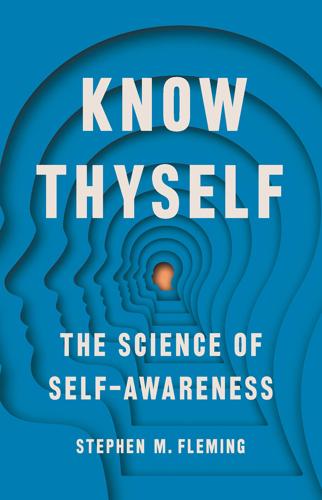
Know Thyself
by
Stephen M Fleming
Published 27 Apr 2021
These signals could be used by their human operators to take control in situations of high uncertainty and increase the humans’ trust that the car did know what it was doing at all other times. Even more intriguing is the idea that these machines could share metacognitive information with each other, just as self-awareness comes into its own when humans begin to collaborate and interact. Imagine two autonomous cars approaching an intersection, each signaling to turn in different directions. If both have a healthy blue glow, then they can proceed, safe in the knowledge that the other car has a good idea of what is happening. But if one or both of them begins to glow yellow, it would be wise to slow down and proceed with caution, just as we would do if a driver on the other side of the intersection didn’t seem to know what our intentions were.

Selfie: How We Became So Self-Obsessed and What It's Doing to Us
by
Will Storr
Published 14 Jun 2017
It did, facilitating and accelerating the neoliberal project of globalization immensely from the 1990s onwards. It has plenty in store for the future, too, with automation and artificial intelligence predicted to further decimate middle- and working-class jobs. There are 1.7 million truck drivers in the US alone whose livelihoods are at risk from the introduction of autonomous vehicles. Researchers at the University of Oxford have predicted that, by 2033, nearly half of all US jobs could be automated. The technologists promised us a ‘Long Boom’. They didn’t tell us that boom would be directed mostly at the top. It was another Silicon Valley product, social media, that enabled Donald Trump to connect directly with his supporters, bypassing traditional journalists and undermining their reporting by calling them liars.

The Future of the Professions: How Technology Will Transform the Work of Human Experts
by
Richard Susskind
and
Daniel Susskind
Published 24 Aug 2015
In ten years robots have moved ‘from making cars to driving them’.55 By 2014, Google’s vehicles had travelled almost 700,000 miles, with only one incident (said to be caused by a car driven by a human being). In the United States legislation has been passed in four states and in Washington, DC, allowing driverless cars.56 By 2020 most major car manufacturers also expect to be selling autonomous vehicles. Our guess is that, in due course, people will look back with incredulity and say, ‘it’s amazing people actually used to drive cars’. Other illustrations of advanced robotics abound. Every year, in manufacturing, an additional 200,000 industrial robots are installed (adding to an expected total of 1.5 million robots in 2015).57 In 2014, for example, Amazon had more than 15,000 robots in ten of its warehouses.

Taming the Sun: Innovations to Harness Solar Energy and Power the Planet
by
Varun Sivaram
Published 2 Mar 2018
Those needs are met almost exclusively by fossil fuels, and they have only grown as emerging economies have industrialized, with staggering consequences. Industrial facilities, like cement and steel plants, belch out soot from burning coal. Skyrocketing demand for transportation has also defiled the air and caused crippling congestion. Although fewer people own cars today than in decades past thanks to fleets of autonomous vehicles and convenient ridesharing, these advances have made it easier and cheaper than ever to get around; the resulting surge in travelers has packed more cars on the road at any given time.3 Many had hoped that electric vehicles might reduce local air pollution, and indeed they have risen to lead the pack in new vehicle sales.

Narrative Economics: How Stories Go Viral and Drive Major Economic Events
by
Robert J. Shiller
Published 14 Oct 2019
Around the same time, other inventions also attracted great public attention, notably driverless cars, which, despite some worries about safety, are predicted to replace many jobs. Though very few of us had actually seen a driverless car, we all knew that prototypes were already on our highways. These autonomous vehicles can already do things that we assumed were not programmable, like slowing down when the car senses children running around near the street. Human common sense can be reduced to a list of signals to a driverless car, which means that human common sense can be replaced. Recent talk has stressed machine learning, in which computers are designed to learn for themselves rather than be programmed using human intelligence.
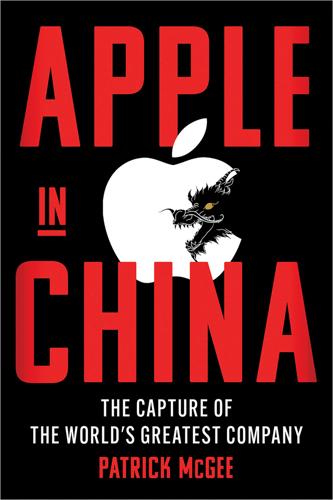
Apple in China: The Capture of the World's Greatest Company
by
Patrick McGee
Published 13 May 2025
At the time, the Next Big Thing in Silicon Valley was self-driving cars—a technology that, according to Google cofounder Larry Page, might be “bigger than Google.” Apple wasn’t immune to the hype, and in 2014 it had launched Project Titan, a secretive car project envisioning a driverless ride-hailing service in both the United States and China. Didi could offer Apple a “fast track into the world of autonomous vehicle and mapping,” says a former Apple engineer on Project Titan, explaining that autonomy requires mapping out the roads and that foreign companies aren’t allowed to collect such data. If Apple was serious about autonomy, it had to establish the right connections. And Didi had them, including a relationship with a Beijing-based mapping company called Auto Navi, the best and most widely used such service in the country.
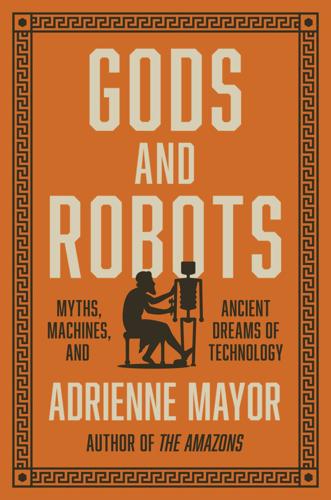
Gods and Robots: Myths, Machines, and Ancient Dreams of Technology
by
Adrienne Mayor
Published 27 Nov 2018
In Global Issues and Ethical Considerations in Human Enhancement Technologies, ed. S. J. Thompson, 119–60. IGI Global. Lin, Patrick, Keith Abney, and George Bekey, eds. 2014. Robot Ethics: The Ethical and Social Implications of Robotics. Cambridge, MA: MIT Press. Lin, Patrick, Ryan Jenkins, and Keith Abney, eds. 2017. Robot Ethics 2.0: From Autonomous Cars to Artificial Intelligence. Oxford: Oxford University Press. Liu, Lydia. 2011. The Freudian Robot. Chicago: University of Chicago Press. “Longevity: Adding Ages.” 2016. Economist, August 13, 14–16. Lowe, Dunstan. 2016. “Suspending Disbelief: Magnetic and Miraculous Levitation from Antiquity to the Middle Ages.”

Gray Day: My Undercover Mission to Expose America's First Cyber Spy
by
Eric O'Neill
Published 1 Mar 2019
Ever wondered if someone is watching you through your laptop camera or the new home-security system you just bought off eBay, or maybe through your new smart-home device? Did you open an email attachment or click on a link that made you think twice when your screen flickered? Do you have concerns about the future of autonomous cars and networked robotics and whether these innovations will open us up to future tragedy? I do. After leaving the FBI, I realized that it wasn’t enough to ride through towns shouting that the cyber spies were coming. My success in Room 9930 had come when I’d broken Hanssen’s OODA loop of his action and my reaction.
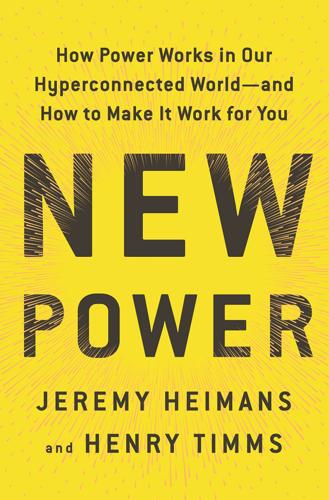
New Power: How Power Works in Our Hyperconnected World--And How to Make It Work for You
by
Jeremy Heimans
and
Henry Timms
Published 2 Apr 2018
These losses are driven by the ride subsidies it must offer all over the world as it pushes for market dominance. Uber will have to increasingly squeeze its drivers, surge its prices for riders, and crush its competitors if it is going to find a path to profitability. We see particular tension ahead with the rise of autonomous cars, a cost-saving move for Uber that could threaten the livelihood of hundreds of thousands of drivers. The next “buy local”–style movement could very well be “ride human.” For all Uber might do to reform, there are others working on ridesharing platforms that aim to replace the worst aspects of its model, creating a harmonious triangle and a more perfect circle, promising a better deal for everyone involved: riders, drivers, and the wider world.
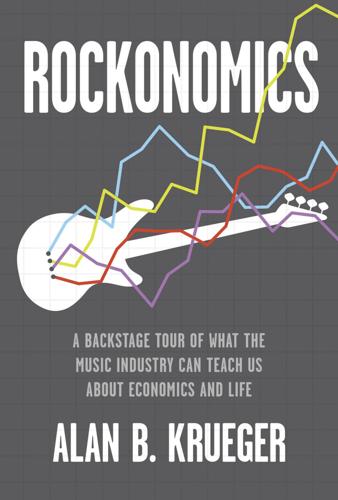
Rockonomics: A Backstage Tour of What the Music Industry Can Teach Us About Economics and Life
by
Alan B. Krueger
Published 3 Jun 2019
If the Echo Dot and Alexa prove to be popular portals that draw millions more customers to buy sneakers and other goods from the Amazon retail site, Amazon would be willing to sustain losses from Amazon Music. A similar dynamic is taking place elsewhere in the economy. Google, together with its subsidiary autonomous car development company, Waymo, for example, is challenging traditional automobile companies, such as Ford and General Motors. Google’s combination of technological prowess, deep pockets, and complementary activities poses a formidable threat to standalone car companies. Some banking functions could be similarly challenged by Apple Wallet.

The Coming of Neo-Feudalism: A Warning to the Global Middle Class
by
Joel Kotkin
Published 11 May 2020
But the top firms tend to exist as properties of a small number of financiers and technologists who operate within a narrow, self-referential universe.22 This concentration of technological power portends a far less democratic future.23 With their huge cash reserves, the tech oligarchs have plans to dominate older industries like entertainment, finance, education, and retail, as well as industries of the future: autonomous cars, drones, space exploration, and most critically artificial intelligence. Firms like Google, Amazon, and Apple have invested billions to gain post position in both traditional and emerging industries.24 Izabella Kaminska, a technology analyst, compares the giant tech firms to the Soviet planners who operated Gosplan, the economic planning agency that allocated state resources across the USSR.25 Some may consider it preferable to cede such power to private capital rather than party hacks, but it still amounts to a great deal of power in a few hands, with little accountability.26 The China Syndrome China, with its lack of legal restraints, may prove to be the cutting edge of a new technocratic despotism.

The Miracle Pill
by
Peter Walker
Published 21 Jan 2021
A few years ago I had a long chat with a senior executive from Sidewalk Labs, a Google spinoff company which seeks to use tech to reimagine how cities could work in the future. We discussed how driverless cars – which at the time, as now, were confidently billed as being just around the corner from ubiquity – could affect active travel. While stressing that predictions were essentially guesswork, he conjured up one scenario in which autonomous cars sped people from distant suburbs to city centres, but with the last half mile or so, where people lived and worked, reserved for modes like cycling and walking. Again, I wasn’t so sure. There is definitely an urban transport revolution coming, perhaps more quickly than most people realise, but it could go in several different ways.

The Zero Marginal Cost Society: The Internet of Things, the Collaborative Commons, and the Eclipse of Capitalism
by
Jeremy Rifkin
Published 31 Mar 2014
Jack Ewing, “A Benz with a Virtual Chauffeur,” New York Times, May 16, 2013, http://www.ny times.com/2013/05/19/automobiles/a-benz-with-a-virtual-chauffeur.html?pagewanted=all& _r=0 (accessed May 28, 2013). 26. Emi Kolawole, “A Win For Google’s Driverless Car: Calif. Governor Signs a Bill Regulating Autonomous Vehicles,” Washington Post, September 25, 2012, http://www.washingtonpost.com (accessed June 2, 2013). 27. Jeremy Rifkin, The Age of Access: The New Culture of Hypercapitalism Where All of Life Is a Paid-For Experience (New York: Tracher/Penguin, 2000), 6, 14. 28. Matthew Ruben, “Forgive Us Our Trespasses?

Connectography: Mapping the Future of Global Civilization
by
Parag Khanna
Published 18 Apr 2016
Shanghai is now connected via the thirty-two-kilometer Donghai Bridge to the Yangshan Island mega-port, which features state-of-the-art traffic control towers, management nerve centers tracking hundreds of ships, tens of thousands of containers, and hundreds of (soon driverless) trucks at the same time. From Yangshan to Melbourne to Long Beach, terminal operators are using electronic data interchange software to optimize berthing schedules, deploying autonomous vehicles and virtual reality to accelerate their loading and unloading speeds, and partnering with logistics companies such as Shipwire to coordinate warehouse inventories with freight rail to efficiently distribute goods like blood vessels through the planetary circulatory system. Throughout history, competition among port cities has revealed who is winning the supply chain tug-of-war.

More: The 10,000-Year Rise of the World Economy
by
Philip Coggan
Published 6 Feb 2020
Global car sales in 2017 were 79m, more than double the 1990s average.44 But the trend may head in the opposite direction in the rich world. Young people struggle to afford car ownership and can rely on taxi services like Uber, short-term car hire, or shared ownership, for the journeys they need. In the future, autonomous vehicles may provide another option. Of course, cars are not the only motorised vehicle on the roads. Trucks or lorries play a vital part in taking goods direct to retailers and to our doorstep. According to the American Trucking Association, the US alone has 3.6m heavy-duty trucks, which, between them, transport 10.5bn tons of freight a year, 71% of all the goods moved within the country. 45 Other countries are equally dependent on these giants of the road.

Evil Geniuses: The Unmaking of America: A Recent History
by
Kurt Andersen
Published 14 Sep 2020
Starting now, retail chains will have a public health argument for replacing workers behind the counters with machines. The most common American job, however, has been driver—the 4 or 5 million FedEx and UPS and tractor-trailer and bus drivers, and the maybe 2 million taxi and Uber and Lyft drivers. During this decade, autonomous vehicles will begin making the 6 or 7 million (potentially infectious) people doing those jobs redundant as well. That debate over whether to blame automation or cheap labor for eliminating U.S. jobs and suppressing wages is continuing to become moot, because robots are replacing foreign workers as well, both here and abroad.

Your Computer Is on Fire
by
Thomas S. Mullaney
,
Benjamin Peters
,
Mar Hicks
and
Kavita Philip
Published 9 Mar 2021
In addition to thinking about the work that happens in and around the Cloud facility itself, we might also consider the changes to work that the Cloud enables in other industries. For example, automated vehicles are made possible in no small part by the computational activities that happen in the Cloud. In this sense, the Cloud is an element of the larger technological environment in which autonomous vehicles operate. Are they all part of the same factory? And if so, what does it mean for the trucking industry—and for the truck drivers whose jobs will soon be automated out of existence by this new technology? In thirty of the fifty United States, the single most common occupation for men is truck driver.43 What are the social and economic ramifications of the industrialization and computerization of such an industry?

Radical Uncertainty: Decision-Making for an Unknowable Future
by
Mervyn King
and
John Kay
Published 5 Mar 2020
What Google programmers are not trying to do is to construct a general theory of traffic from which all motorists could anticipate the trajectories of all other motorists for the next several years and make their own decisions accordingly, iterating towards an equilibrium in which every journey plan is optimal given the optimal journey plans of all other motorists. And – significantly – they are not trying to do this even when they plan for a future of autonomous vehicles from which much, though not all, of the human element in decision-making has been removed. The construction of an optimal traffic plan for all vehicles for the foreseeable future is beyond the capacity even of Google’s programmers and the most powerful computer available. Even if Waze had built such a model, it would have to be nearly perfect before it could be even slightly useful in providing information relevant to our particular journey.

Amazon Unbound: Jeff Bezos and the Invention of a Global Empire
by
Brad Stone
Published 10 May 2021
Blue remained secretive, struggling with the dysfunction encoded into its genetic makeup by Bezos, who had otherwise succeeded in nearly everything else he had created. Still, the entertaining exchange of barbs between the tycoons continued—about their plans for the moon, for Mars, whether Amazon was copying SpaceX with its plans to launch a constellation of low Earth satellites in space, and over Amazon’s purchase of Zoox, an autonomous vehicle company that might one day compete with Tesla. Musk and Bezos were a lot alike—relentless, competitive, and absorbed with their self-images. But Musk eagerly sought the spotlight and cultivated a kind of cultlike adoration at his companies and among his fans, preening on stage at Tesla events and extemporaneously (and often recklessly) riffing on Twitter.

The Land of Hope and Fear: Israel's Battle for Its Inner Soul
by
Isabel Kershner
Published 16 May 2023
The new Israel was a world leader in driverless car technology. It appeared that the kind of optical, radar, sonar, and sensor systems used to detect incoming missiles and to guide tanks proved useful for scanning roads for dangerous obstacles. In 2017, Intel spent $15.3 billion on Mobileye, a Jerusalem-based autonomous vehicle tech company led by Amnon Shashua, a Hebrew University professor, in what then constituted the biggest acquisition in Israel’s high-tech industry. The bonanza had begun nearly two decades earlier. In 1998, America Online bought Mirabilis, an Israeli pioneer in instant Internet messaging.
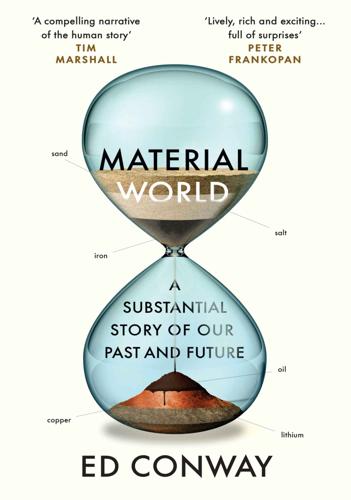
Material World: A Substantial Story of Our Past and Future
by
Ed Conway
Published 15 Jun 2023
To that end, the company has sponsored peer-reviewed research that shows, among other things, that while a kilogram of copper produced in a conventional mine generates 460 kilograms of waste, a kilo of copper produced from polymetallic nodules generates a mere 29 kilograms of waste. It is a seductive notion: no more big holes in the ground; no more enormous tortas of rock burying nearby towns; with ores this concentrated you barely create any tailings at all. The Metals Company would simply send its autonomous vehicle down to the seabed to vacuum these little nodules and pump them up to the surface – no blasting or digging involved. Indeed, you could make a case that mining copper, or for that matter cobalt or nickel, from the deep sea is the greenest mining of all. But of course there is a catch here: an enormous catch.

Brotopia: Breaking Up the Boys' Club of Silicon Valley
by
Emily Chang
Published 6 Feb 2018
The machines and devices and the programs that run on them have become a ubiquitous part of our daily lives. All that world-bending technology has been created largely by men. This technology is disrupting businesses from agriculture to manufacturing, finance, and real estate. And it’s not slowing down. We face a near-term future of autonomous cars, augmented reality, and artificial intelligence, and yet we are at risk of embedding gender bias into all of these new algorithms. “It’s bad for shareholder value,” Megan Smith, who has worked as a Google VP and chief technology officer of the United States, told me. “We want the genetic flourishing of all humanity . . . in on making these products, especially as we move to AI and data sciences.”

The Smart Wife: Why Siri, Alexa, and Other Smart Home Devices Need a Feminist Reboot
by
Yolande Strengers
and
Jenny Kennedy
Published 14 Apr 2020
Such “add-ons” to socially conventional human behavior more closely resemble sci-fi and fantasy situations—unrealistic scenarios in which, some have argued, we have learned how to treat today’s real smart wives.59 Of course, regular, run-of-the-mill abuse can and is directed at all machines and robots, regardless of their assumed gender or andromorphic associations. This includes autonomous cars being scratched, security robots having their sensors covered in barbeque sauce, and delivery drones being tipped over.60 In one reported case in Colorado, a man shot at his computer and called it a “bitch.” The police who were called to his home entered thinking that they were responding to a domestic violence situation.61 No machine, then, is safe from human-inflicted harm or bullying.

Boom: Bubbles and the End of Stagnation
by
Byrne Hobart
and
Tobias Huber
Published 29 Oct 2024
Since there is no middle ground during an inflection bubble, prices are set by trades between the most optimistic investor and the most committed short seller. In theory, different market participants can reach a middle ground because they debate the probabilities—perhaps one investor thinks fully autonomous cars run by Uber have a 5 percent chance of happening and another thinks the odds are more like 10 percent. But in practice, bubble-driven parallelization strikes again: Many different things have to happen for the thesis to be correct, and their odds of happening are correlated because of the bubble dynamics.

Superintelligence: Paths, Dangers, Strategies
by
Nick Bostrom
Published 3 Jun 2014
Brinton, Crane. 1965. The Anatomy of Revolution. Revised ed. New York: Vintage Books. Bryson, Arthur E., Jr., and Ho, Yu-Chi. 1969. Applied Optimal Control: Optimization, Estimation, and Control. Waltham, MA: Blaisdell. Buehler, Martin, Iagnemma, Karl, and Singh, Sanjiv, eds. 2009. The DARPA Urban Challenge: Autonomous Vehicles in City Traffic. Springer Tracts in Advanced Robotics 56. Berlin: Springer. Burch-Brown, J. 2014. “Clues for Consequentialists.” Utilitas 26 (1): 105–19. Burke, Colin. 2001. “Agnes Meyer Driscoll vs. the Enigma and the Bombe.” Unpublished manuscript. Retrieved February 22, 2013. Available at http://userpages.umbc.edu/~burke/driscoll1-2011.pdf.

Order Without Design: How Markets Shape Cities
by
Alain Bertaud
Published 9 Nov 2018
The invention of the BRT system in Curitiba, Brazil, in 1974 is only the application to buses of a technology applied to tramways at the end of the nineteenth century. However, it is quite possible that during the next 20 years, we will see the emergence of completely new modes of transport. The possibilities presented by the combination of vehicle sharing and autonomous vehicles could completely revolutionize urban transport as we know it today. While no new mode of urban transport has emerged during the past 100 years, the dominant mode is often changing rapidly in emerging economies. The changes in mode reflect changes in income, city size, and the geographic coverage of public transport systems.

Future Politics: Living Together in a World Transformed by Tech
by
Jamie Susskind
Published 3 Sep 2018
Using advanced robotics, a team of surgeons in the United States was able to remove the gall bladder of a woman in France, nearly 4,000 miles across the Atlantic.88 Perhaps the most commonplace robots in the future will be self-driving cars, able to navigate the physical world safely ‘without getting tired or distracted’.89 Google’s fleet of autonomous vehicles has driven more than 2 million miles with only a handful of incidents, only one of which is said to have been the fault of the vehicle itself.90 Since human error is the ‘certain’ cause of at least 80 per cent of all crashes, increased safety will be one of the principal advantages.91 We are likely to see, in the next decade, driverless OUP CORRECTED PROOF – FINAL, 28/05/18, SPi РЕЛИЗ ПОДГОТОВИЛА ГРУППА "What's News" VK.COM/WSNWS Increasingly Integrated Technology 55 trucks and boats, as well as airborne drones of varying autonomy: the Federal Aviation Administration (FAA) estimates that 10,000 civilian drones could be flying in the United States by 2020.92 Nature has been the inspiration for many recent developments in robotic locomotion.

The Survival of the City: Human Flourishing in an Age of Isolation
by
Edward Glaeser
and
David Cutler
Published 14 Sep 2021
A year later, the sector had 7.42 million workers, a drop of only 4.3 percent. Similarly, the number of workers in warehousing and storage has been rock steady, moving down only from 1.181 million to 1.178 million. How many of these jobs will remain when robots get better and better? The rise of autonomous vehicles puts America’s 1.5 million trucking-related jobs at risk, but we’d bet that plumbers and electricians will survive. A lot of buildings—even high-rises—can be built in a capital-intensive factory and then plopped in place quickly with a minimum amount of human sweat, so demand for construction labor may fall—though not dry up entirely.

Age of Discovery: Navigating the Risks and Rewards of Our New Renaissance
by
Ian Goldin
and
Chris Kutarna
Published 23 May 2016
Customers want freshness, variety, creativity, spontaneity and friendliness, and those are difficult values to deliver through automation. We can automate the assembly of an engine; so far, it’s proven harder to automate the assembly of a good haircut, or a good book. Thanks to recent advances in artificial intelligence and robotics, that’s changing. In 2004, autonomous cars seemed unlikely: “Executing a left turn against oncoming traffic involves so many factors that it is hard to imagine discovering the set of rules that can replicate a driver’s behavior,” stated a pair of prominent economists.66 Six years later, Google announced that it had done so. Other cognitive tasks that were once deemed too complicated to automate, but which machines can now do, range from showing empathy to mental health patients, to writing routine news stories, performing surgery, making financial trades, teaching themselves how to play Space Invaders and winning Jeopardy (IBM’s Watson system, which did so in 2011, now has a job diagnosing cancer patients and suggesting treatment plans).

The Blockchain Alternative: Rethinking Macroeconomic Policy and Economic Theory
by
Kariappa Bheemaiah
Published 26 Feb 2017
Insurance Stance: Customer-facing Main technologies: Biometrics, Big Data, IoT, Sensors, Machine Learning One of the recent sectors to be engulfed by the FinTech wave is the gargantuan insurance sector (Global life insurance premiums: $2.7 trillion, Global non-life insurance premiums: $1.4 trillion, Source: CB Insights, 2016), which has led to the coining of the term “InsurTech.” As autonomous cars become a reality, the data that can now be acquired from IoT sensors and telematics is changing the way insurance plans are made. Previously insureds had few options when it came to an insurance plan. But with the rise of granular levels of personal data provided from a whole range of sensors in houses, cars, FitBits, and other everyday objects, new entrants are proposing insurance plans that are customised to the lifestyle and risks of the client.
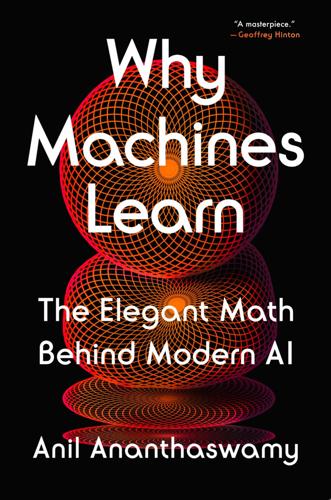
Why Machines Learn: The Elegant Math Behind Modern AI
by
Anil Ananthaswamy
Published 15 Jul 2024
It explains the elegant mathematics and algorithms that have, for decades, energized and excited researchers in “machine learning,” a type of AI that involves building machines that can learn to discern patterns in data without being explicitly programmed to do so. Trained machines can then detect similar patterns in new, previously unseen data, making possible applications that range from recognizing pictures of cats and dogs to creating, potentially, autonomous cars and other technology. Machines can learn because of the extraordinary confluence of math and computer science, with more than a dash of physics and neuroscience added to the mix. Machine learning (ML) is a vast field populated by algorithms that leverage relatively simple math that goes back centuries, math one learns in high school or early in college.

The Everything Blueprint: The Microchip Design That Changed the World
by
James Ashton
Published 11 May 2023
The FTC’s bureau of competition director, Holly Vedova, explained it was acting ‘to prevent a chip conglomerate from stifling the innovation pipeline for next-generation technologies’ amid concerns the deal ‘would distort Arm’s incentives in chip markets and allow the combined firm to unfairly undermine Nvidia’s rivals’, particularly in the areas of autonomous cars, data-centre servers and cloud computing. This lawsuit ‘should send a strong signal that we will act aggressively to protect our critical infrastructure markets from illegal vertical mergers that have far-reaching and damaging effects on future innovations’, Vedova added.32 Ironically, the further stock-market investors thought the deal was slipping from Son’s grasp, the more valuable it potentially became to him.

What to Think About Machines That Think: Today's Leading Thinkers on the Age of Machine Intelligence
by
John Brockman
Published 5 Oct 2015
If collateral damage can be blamed on the decisions of machines, then military mistakes are less likely to dampen someone’s election chances. Moreover, if minded machines can be overhauled or removed—machine “punishment”—people will feel less need to punish those in charge, whether for fatalities of war, botched (robotic) surgeries, or (autonomous) car accidents. Thinking machines are complex, but the human urge to blame is relatively simple. Death and destruction compel us to find a single mind to hold responsible. Sufficiently smart machines—if placed between destruction and ourselves—should absorb the weight of wrongdoing, shielding our own minds from others’ condemnation.

House of Suns
by
Alastair Reynolds
Published 16 Apr 2008
I could only presume that the weapon had exhausted itself and was now either recharging or standing down while another was readied to continue the assault. An order formed in my head, but Dalliance had already anticipated it. While her bubble was still raised, hatches in her hull opened to release several dozen lampreys: small, autonomous vehicles equipped with weapons and limited-range skein-drives. The lampreys grouped into squadrons and raced to the limit of the bubble. The bubble’s hardness was tuned down sufficiently for the lampreys to slip through into open space, and then restored to full effectiveness. Debris slipped inside the bubble during that interval of permeability, drumming against the hull like the claws of a thousand witches.

Chinese Spies: From Chairman Mao to Xi Jinping
by
Roger Faligot
Published 30 Jun 2019
In France, Huawei was not allowed to erect 5G antennae close to the Paris headquarters of the Ministry of Defence, while the prime minister’s SGDSN (General Secretariat for Defence and National Security) suspected Huawei of being a Trojan horse that provided Beijing with the ability to freeze 5G networks in case of conflict, which would thereby debilitate connected devices and internet-controlled autonomous vehicles.19 French intelligence (DGSE) uncovered an attempt by Huawei agents to build up a private biographical data system on leaders of the French competitor company Orange, which ironically favoured a strategic alliance with the Chinese firm.20 Together with the Australians, German and other European security services agree that, despite disclaimers by its leaders, Huawei was intimately linked to the PLA interception and cyberwar effort (see chapter 11).

The Long Game: China's Grand Strategy to Displace American Order
by
Rush Doshi
Published 24 Jun 2021
In addition, the possibility that Beijing will export not only its engineering standards on traditional infrastructure like rail lines but also new high-tech infrastructure supporting the Internet or 5G creates path dependence in connectivity—that is, it could make it far easier for Beijing to lock in its ties with Asian states and far harder for those states to diversify toward Western countries. One could imagine, for example, that future American-made autonomous vehicles could be unable to connect to Chinese wireless networks in BRI countries.47 Domestic Leverage Finally, at the domestic-political level, the BRI creates clear opportunities to bribe powerful constituencies in recipient countries, altering their politics. Indeed, China has used its state-owned enterprises (SOEs) that are involved in these projects expressly for that purpose.
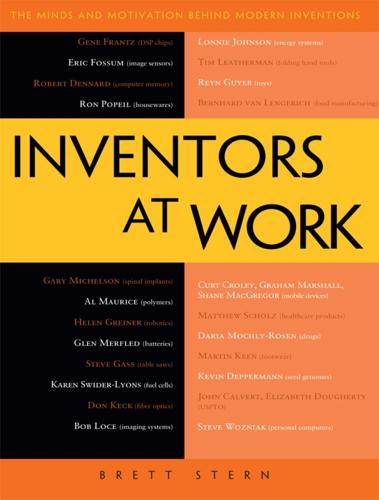
Inventors at Work: The Minds and Motivation Behind Modern Inventions
by
Brett Stern
Published 14 Oct 2012
Stern: Portland. Swider-Lyons: Not too bad. Stern: We ride bikes all day. Swider-Lyons: Yeah, here it’s different. I drive on Interstate 395 to get to work. And you don’t have the weather we have here either. Either snowing or 100 degrees is not good biking weather. But if you have people in autonomous cars? If you have a satellite or maybe a series of UAVs for a secure uplink, then you could literally just hand over your car and then it would drive. There are sensors on the car so you don’t get in accidents and you don’t get in traffic jams. You don’t have sixteen-year-olds dying while texting, and it helps older people, too, because they could actually have a lot more freedom.

The Last Astronaut
by
David Wellington
Published 22 Jul 2019
Talk about understatement. “If there was anyone else…” “Julia Obrador. Or Ali Dinwari,” she suggested. “They were on Orion 6. They have the skills you need, and the training.” “Neither of them ever served as MC on a mission. Besides which—Ali died about four years ago. He was run down by an autonomous car in San Francisco. As for Julia, she’s living in Mexico, making high-end pottery. She has three kids and a husband.” Jansen understood what he meant by that. Julia had something to lose. This was going to be a dangerous mission, maybe the most dangerous NASA mission since the moon landings eighty years earlier.

The Code: Silicon Valley and the Remaking of America
by
Margaret O'Mara
Published 8 Jul 2019
Japan was working on its “Fifth Generation” computing program, an ambitious push for supercomputing, AI, and machine learning. DARPA’s new push aimed to go one better, and to harness the power of cutting-edge computing to more ordinary defense challenges along the way. SCI’s opening agenda included projects to build autonomous vehicles, a computerized copilot for fighter jets, and AI software to aid in battlefield decision-making. The program’s first months were rocky, to say the least—Conway and other Class A technical talent hightailed it out of there quickly, and scholars had decidedly mixed feelings about the program’s military aims—but the computing push ultimately had a tremendous impact.
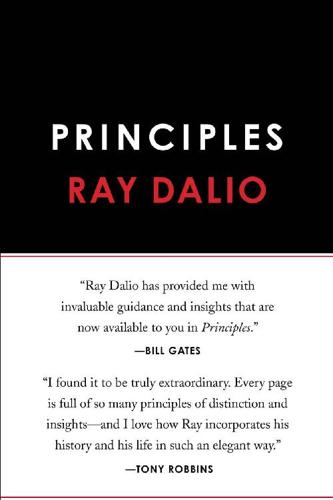
Principles: Life and Work
by
Ray Dalio
Published 18 Sep 2017
For example, think about how you choose and maintain a safe distance behind the car in front of you when you are driving. Now describe the process in enough detail that someone who has never driven a car before can do it as well as you can, or so that it can be programmed into the computer that controls an autonomous car. I bet you can’t. Now think about the challenge of making all of your decisions well, in a systematic, repeatable way, and then being able to describe the processes so clearly and precisely that anyone else can make the same quality decisions under the same circumstances. That is what I aspire to do and have found to be invaluable, even when highly imperfect.

Algorithms to Live By: The Computer Science of Human Decisions
by
Brian Christian
and
Tom Griffiths
Published 4 Apr 2016
Even if such coordination were possible, it wouldn’t add very much. When it comes to traffic of the human kind, the low price of anarchy cuts both ways. The good news is that the lack of centralized coordination is making your commute at most only 33% worse. On the other hand, if you’re hoping that networked, self-driving autonomous cars will bring us a future of traffic utopia, it may be disheartening to learn that today’s selfish, uncoordinated drivers are already pretty close to optimal. It’s true that self-driving cars should reduce the number of road accidents and may be able to drive more closely together, both of which would speed up traffic.

Mastering Blockchain, Second Edition
by
Imran Bashir
Published 28 Mar 2018
There are few careful predictions being made in the section that is based on the current advancement and speed of progress in the concerned field. All of these predictions are likely to come true between the years 2020 and 2050: The IoT will run on multiple blockchains and will give rise to an M2M economy. This can include energy devices, autonomous cars, and house hold accessories. Medical records will be shared securely while preserving the privacy of patients between various private blockchains run by consortia of health providers. It may well be a single private blockchain shared among all service providers including pharmacies, hospitals, and clinics.

When the Heavens Went on Sale: The Misfits and Geniuses Racing to Put Space Within Reach
by
Ashlee Vance
Published 8 May 2023
We are in the early days of the next great infrastructure build-out. A communication system is being constructed that will surround the earth with a digital heartbeat. Our computers and cell phones will never be outside the reach of an internet connection. What’s more interesting, though, is that neither will our self-flying planes, autonomous cars, or drones. Almost every sci-fi contraption that you’ve been promised over the past twenty to fifty years will come to depend on this ever-present information network. What’s more, so will a host of new computing devices that we’re only now seeing glimpses of. Farmers will put moisture sensors all over their land and have the devices report back on what they detect to the computer in the sky.

The Singularity Is Near: When Humans Transcend Biology
by
Ray Kurzweil
Published 14 Jul 2005
The robot can then use the map and its own reasoning ability to determine an optimal and obstacle-free path to carry out its assigned mission. This technology enables autonomous carts to transfer materials throughout a manufacturing process without the high degree of preparation required with conventional preprogrammed robotic systems. In military situations autonomous vehicles could carry out precise missions while adjusting to rapidly changing environments and battlefield conditions. Machine vision is also improving the ability of robots to interact with humans. Using small, inexpensive cameras, head- and eye-tracking software can sense where a human user is, allowing robots, as well as virtual personalities on a screen, to maintain eye contact, a key element for natural interactions.

Growth: From Microorganisms to Megacities
by
Vaclav Smil
Published 23 Sep 2019
Car ownership continues to grow rapidly in all low- and medium-income Asian countries, but the total number of US passenger cars shows clear signs of saturation. If the trajectory were to follow the projected Gaussian fit, the country would have no more than about 65 million vehicles by the year 2100 compared to nearly 190 million in 2015 (figure 6.11). This decline could be further accelerated by convenient on-demand availability of future autonomous vehicles but I suspect that this innovation will make a substantial difference much later than is now widely assumed. But it is certain that car ownership declines will be much steeper in countries experiencing relatively fast population decline, above all in Japan. Figure 6.11 The historical growth of the US passenger car fleet can be fitted quite well into a normal curve peaking around 2030.
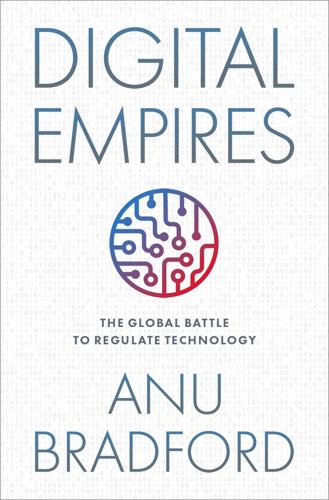
Digital Empires: The Global Battle to Regulate Technology
by
Anu Bradford
Published 25 Sep 2023
In August 2022, it was reported that China’s top chipmaker, the Semiconductor Manufacturing International Corporation (SMIC), had successfully made a seven-nanometer semiconductor despite being on the US Entity List.36 This major breakthrough in China’s semiconductor technology caused alarm in the Biden administration, which had already been seeking to persuade allies to impose tougher restrictions on China.37 The new export controls therefore take a more drastic approach: they seek to utilize American-made technology as a “chokepoint” to prevent further Chinese technological advancement—starving China’s AI industry with a lack of US chips, for example, and cutting off China’s ability to build its own chips by withholding US chipmaking software.38 Instead of targeting a particular Chinese company or technology, these restrictions take aim at the entire Chinese tech industry—civilian and military. The new controls will undoubtedly hurt Chinese chip manufacturers and tech companies in the short run; a wide swath of companies will struggle to access American-made hardware used for AI algorithms, affecting numerous industries such as medical imaging and autonomous vehicles.39 However, as is the case with economic sanctions, US companies will be hurt too—Applied Materials and Lam Research, two major American chip equipment makers, each derived about a third of their sales from China prior to the new controls.40 It remains to be seen how effective the US will be in totally cutting off Chinese access to these technologies as the US could not persuade its allies to join the sanctions regime.

Behave: The Biology of Humans at Our Best and Worst
by
Robert M. Sapolsky
Published 1 May 2017
Gospic et al., “Limbic Justice: Amygdala Involvement in Immediate Rejections in the Ultimatum Game,” PLoS ONE 9 (2011): e1001054; Buckholtz, “Neural Correlates of Third-Party Punishment.”. 33. D. de Quervain et al., “The Neural Basis of Altruistic Punishment,” Sci 305 (2004): 1254; B. Knutson, “Sweet Revenge?” Sci 305 (2004): 1246. 34. Footnote: J. Bonnefon et al., “The Social Dilemma of Autonomous Vehicles,” Sci 352 (2016): 1573; J. Greene, “Our Driverless Dilemma,” Sci 352 (2016): 1514. Chapter 17: War and Peace 1. M. Fisher, “The Country Where Slavery Is Still Normal,” Atlantic, June 28, 2011; C. Welzel, Freedom Rising: Human Empowerment and the Quest for Emancipation (Cambridge: Cambridge University Press, 2013). 2.

Fall; Or, Dodge in Hell
by
Neal Stephenson
Published 3 Jun 2019
The blog was witty but a little too unsparing and scary-smart to attract a wide audience—she had maybe ten thousand followers at peak, but they had a tendency to age out as their kids got into their teens. Anyway, the era of the awesomely huge gleaming luxury crossover SUV was coming to an end. Like Tolkien’s elves fading away and going into the west, they were dissolving into the used market as many families were downsizing their fleets in favor of ride-sharing services, and then fully autonomous vehicles that were owned by no one and everyone. So by the time Maeve’s and Corvallis’s kids were in the nine to twelve range, she had stopped writing the blog and, intellectually/artistically, gone dark for a decade. And then suddenly the kids were out of the house, and Maeve, like a butterfly unfolding itself from a chrysalis, had begun to unfurl some of what she had quietly been making of herself in that darkness.